





For over a decade, our portfolio of in-house magazines has been lovingly produced, printed, and distributed to our esteemed subscribers across the globe from our headquarters in the UK.


But now we are moving with the times, adopting a digital-first approach by producing online-only publications. A major factor in this decision is to minimise our environmental footprint, reducing the carbon emissions involved in the logistics of print magazine distribution and the resources required therein.



Going forward, we will provide print orders of any magazine in-line with the requests of our featured companies, subscribers, and conference & expo partners.



Please get in touch for a print-on-demand quote or visit our website to find out more.
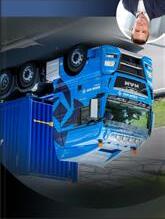

“We always planned that when our digital subscribers consistently accounted for 85% of our total magazine subscribers, we would cease printing our publications in-line with our environmental and sustainability goals.”
– Ben Weaver, CEO, Outlook Publishing Ltd
EDITORIAL
Editorial Director: Alex Tuck alex.tuck@outlookpublishing.com
Senior Editor: Jack Salter jack.salter@outlookpublishing.com
Editor: Lucy Pilgrim lucy.pilgrim@outlookpublishing.com
Editor: Ed Budds ed.budds@outlookpublishing.com
Junior Editor: Rachel Carr rachel.carr@outlookpublishing.com
Junior Editor: Lauren Kania lauren.kania@outlookpublishing.com
PRODUCTION
Production Director: Stephen Giles steve.giles@outlookpublishing.com
Senior Designer: Devon Collins devon.collins@outlookpublishing.com
Junior Designer: Louisa Martin louisa.martin@outlookpublishing.com
Production Assistant: Megan Cooke megan.cooke@outlookpublishing.com
Digital Marketing Manager: Fox Tucker fox.tucker@outlookpublishing.com
Web Editor: Oliver Shrouder oliver.shrouder@outlookpublishing.com
BUSINESS CEO: Ben Weaver ben.weaver@outlookpublishing.com
Managing Director: James Mitchell james.mitchell@outlookpublishing.com

Sales Director: Nick Norris nick.norris@outlookpublishing.com
Regional Director: Joshua Mann joshua.mann@outlookpublishing.com
TRAINING & DEVELOPMENT MANAGER
Marvin Iseghehi marvin.Iseghehi@outlookpublishing.com
BUSINESS DEVELOPMENT DIRECTOR Thomas Arnold thomas.arnold@outlookpublishing.com
HEADS OF PROJECTS Callam Waller callam.waller@outlookpublishing.com
Deane Anderton deane.anderton@outlookpublishing.com
PROJECT MANAGERS Felix Revell felix.revell@outlookpublishing.com
ADMINISTRATION
Finance Director: Suzanne Welsh suzanne.welsh@outlookpublishing.com
Finance Assistant: Suzie Kittle suzie.kittle@outlookpublishing.com
Finance Assistant: Victoria McAllister victoria.mcallister@outlookpublishing.com
CONTACT
Healthcare Outlook
First Floor, Norvic House, 29-33 Chapelfield Road Norwich, NR2 1RP, United Kingdom.
Sales: +44 (0) 1603 363 631
Editorial: +44 (0) 1603 363 655
SUBSCRIPTIONS
Tel: +44 (0) 1603 363 655
alex.tuck@outlookpublishing.com www.healthcare-outlook.com
Like us on Facebook: facebook.com/healthcareoutlookmag
Follow us on Twitter: @hc_outlook
Welcome to our second issue of Healthcare Outlook magazine. We have scoured the world to bring a truly global flavour to our healthcare stories, as we strive to share learnings and innovative insights from leading figures, institutions, hospitals, service providers, and suppliers – capturing positive developments across the industry.
This month’s cover star is from sunny South Africa, no less! Groote Schuur Hospital, visible against the backdrop of Devil’s Peak in the world-class city of Cape Town, is not only the site of the first heart transplant, but also one of the main teaching hospitals in South Africa. CEO, Bhavna Patel, talks to us about the strategies and changes needed to strengthen the healthcare system.
Elsewhere, we speak to OneCare Medical of Singapore, whose clinics are supporting a national health drive supported by the government to provide preventative, accessible and professional medical treatments.
Parabellum International has grown impressively to become a leading emergency response and medical services provider across Australia and now the world. We speak to CEO, Navin Vij, about the company’s peoplecentric safety mission, its services, and the impressive scale of its fleet.
Meanwhile, From the tech and research hub of Ontario, Ron Gagnon, President and CEO of Grand River Hospital, highlights the need for improved healthcare innovation and infrastructure.
We also showcase the mobile healthcare solutions offered by RMI Global Solutions and Acacium Group, which aim to deal with crippling patient waiting lists, and a remarkable invention for cancer patients coming from the mind of one of Cambridge’s leading innovators.
There’s plenty more insights and corporate stories from major players across the healthcare sector, so we hope that you enjoy your read.
Alex Tuck Editorial Director, Outlook Publishing




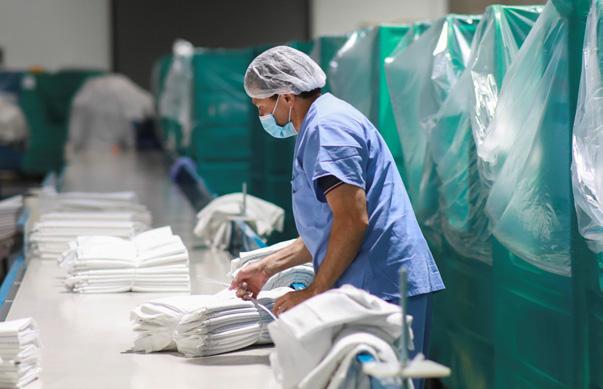



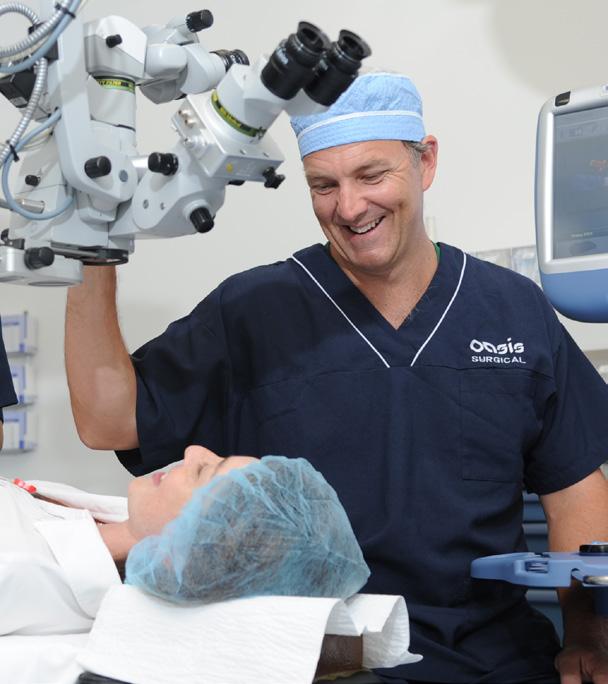
ACCORDING TO THE Journal for ImmunoTherapy of Cancer, researchers have found a certain type of immune cell that could give lung cancer patients a more accurate prognosis and help identify who would most benefit from immunotherapy.
The location of immune cells in and around cytotoxic T cells, which play a key role in fighting cancer, have been found to help indicate whether immunotherapy would work and contribute to patient survival.


Such findings could lead to improvements in immunotherapies by allowing them to work more effectively. Currently, immunotherapy is powerful but very expensive and only works in 80 percent of cases.

THE UK GOVERNMENT has announced £210 million in aid of the global fight against antimicrobial resistance (AMR).
Until 2026, the government’s funding will support the activities of the Fleming Fund – a UK support
FOUR DOCTORS HAVE been charged by the Washington state’s medical regulator over spreading misinformation during the COVID-19 pandemic, whilst also being blamed for discouraging vaccination.
Three of the doctors have been accused of prescribing ivermectin to patients with COVID-19 without properly documenting it, as well as making false statements about vaccines that prevented many from

In response to the disciplinary action, the four doctors have requested that the superior court strike down their cases, as they allege that the Washington Medical Commission did not follow its own standard procedures in drafting its COVID-19 policy.
programme tackling AMR across Asia and Africa, with the hopes of limiting the spread of the disease to the rest of the world.
AMR poses a serious international threat, causing 1.27 million deaths globally every year.
The UK investment will be the largest of its kind for global AMR support and build on the country’s plans to incentivise drug companies to develop new antibiotics.
THE FUNCTIONAL ELECTRICAL stimulation market is forecast to grow exponentially in the next 10 years, specifically in China and India, due to a growing acceptance of it being an alternative treatment for chronic pain and neurological disorders.


According to Future Market Insights (FMI), China’s domestic functional electrical stimulation market is expected to rise at a compound annual growth rate
(CAGR) of 4.9 percent from 2023 to 2033, with India’s CAGR expected to grow by four percent in the same period.
Functional electrical stimulation uses electrical impulses to stimulate nerves and muscles in patients with neurological and musculoskeletal disorders, to help regain mobility and move independently.
THE NATIONAL HEALTH SERVICE (NHS) has announced plans to make blood pressure checkers available across local communities, to be found in barbershops, mosques, and more.
The NHS COVID-19 Vaccination Programme revealed the benefits of having local teams reaching out to communities. As a result, many NHS nurses and volunteers are hitting
THE NATIONAL UNIVERSITY Health System (NUHS) has utilised a prescience supercomputer to train artificial intelligence (AI) models to enhance regularly used treatments. The AI models can predict a patient’s hospitalisation days, similar to that of a hotel’s occupancy verification system.
Additionally, as part of the AI model, doctors can use trained local language models (LLM) to summarise medical notes, thus allowing more time for patient care. The supercomputer and subsequent AI models were rolled out in July 2022, but have recently gone through a renewal that expands its usage across healthcare and medical research.
the streets to find potential health problems before they become more serious.
This life-saving programme comes after it was reported that pharmacies across the UK conducted a total of 149,865 blood pressure checks to those aged 40 and over in May 2023, more than double the amount delivered last year.

ROCHE, A LEADING
international BioTech firm, has had its spinal muscular atrophy (SMA) therapy approved by the European Commission (EC). The treatment comes in the form of Evrysdi (risdiplam) treatment, which is already approved for infants over the age of two months.
SMA occurs in approximately one in 10,000 babies, existing as a severe neuromuscular disease.
As a result of the approval, patients under the age of two months can now be treated for the clinical diagnosis of SMA types one, two, or three.
Healthcare leaders have a lot to ponder these days on top of their organisation’s operations. The challenges range from accelerating scientific and technological advances, rising incidences of age-related diseases, and increases in noncommunicable diseases such as cardiovascular, diabetes, and other such lifestylerelated conditions.
As the sector absorbs more and more of an increasing percentage of international GDP, this has led to discussions about ways to rein in spending through innovation and technology. From policymakers to citizen groups, the calls for reform in our health system are growing.
This new thinking about the emerging health economy is not necessarily intuitive for those who have been educated in our universities and degree programmes, that remain very siloed and fixated on a hospital system of care.
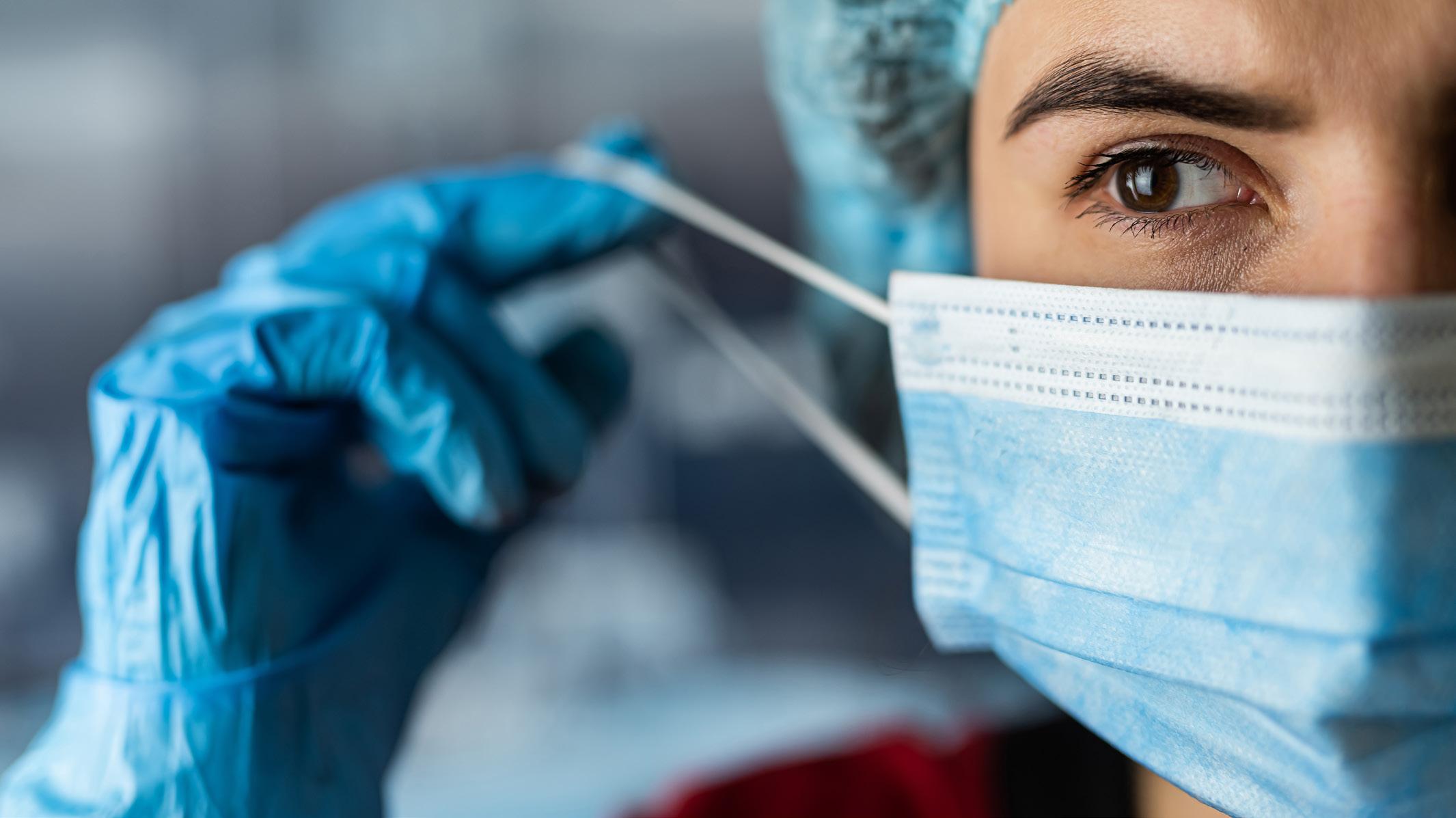
Health systems are struggling with the transition from hospital-focused to population-centred care, which keeps people away from the very institutions our current leaders and managers have been trained to run – hospitals.
One of the reasons health systems are slow on solutions is that our healthcare leaders have often been matriculated and educated in an approach that focuses on therapeutics rather

than early diagnostics and preventive care.
Novel solutions require different education and training that exchanges the historic silos of health and healthcare disciplines with interdisciplinary thinking and collaboration.
The UCL Global Business School for Health (UCL GBSH) is the first business school solely dedicated to health and healthcare management and leadership. The basic premise of the school is that the health sector, given the new health economy, requires fresh approaches to the education and research of healthcare management and leadership.
The school teaches across the whole health ecosystem with interdisciplinary degree programmes that take a business and management perspective for addressing challenges in a collaborative environment of health economists, health informatics experts, digital and artificial intelligence (AI) scholars, and management and leadership professors looking to reimagine healthcare.
Professor Nora Colton, Director of the UCL Global Business School for Health, explains how the institution is transforming healthcare leadership and management reform“NOVEL SOLUTIONS REQUIRE DIFFERENT EDUCATION AND TRAINING THAT EXCHANGES THE HISTORIC SILOS OF HEALTH AND HEALTHCARE DISCIPLINES WITH INTERDISCIPLINARY THINKING AND COLLABORATION”
– PROFESSOR NORA COLTON, DIRECTOR, UCL GLOBAL BUSINESS SCHOOL FOR HEALTH
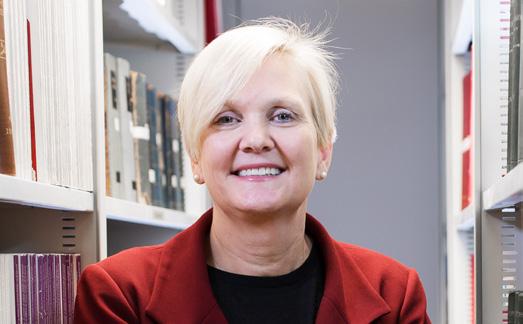
Healthcare CEOs consistently rank staff shortages as their most pressing concern, according to an annual survey by the American College of Healthcare Executives. Worldwide, there is a soaring demand for clinical staff, while supply is not able to keep up. Clinical staff across many countries have been exiting the profession at a rate faster than medical schools can match, especially in the aftermath of the COVID-19 pandemic.
Moreover, healthcare workers report a very high rate of burnout and mental health issues compared to other sectors of the economy, leading to early exits, especially of key workers such as nurses. Consequently, you have one of the fastest-growing sectors reporting the biggest drop in the workforce relative to job opportunities.
The need for new management and leadership gets masked in all the focus on frontline clinical staff data. Yet, an equally serious problem for healthcare is the lack of succession planning for the next generation of leadership.
In fact, the baby boomer generation, who makes up most of our healthcare leaders and CEOs today, are retiring at a very steady rate, but what is surprising is that the Gen Xers who come after them are following suit.
Gen Xers – particularly since the COVID-19 pandemic – have been retiring at an accelerated rate. In places like the US, they are part of what is referred to as the “great resignation”. Consequently, finding
top leaders and managers for healthcare is becoming more difficult, as witnessed in the rising demand for MBA graduates in healthcare and US labour data, which shows the need for a 28 percent increase in healthcare managers by 2031.
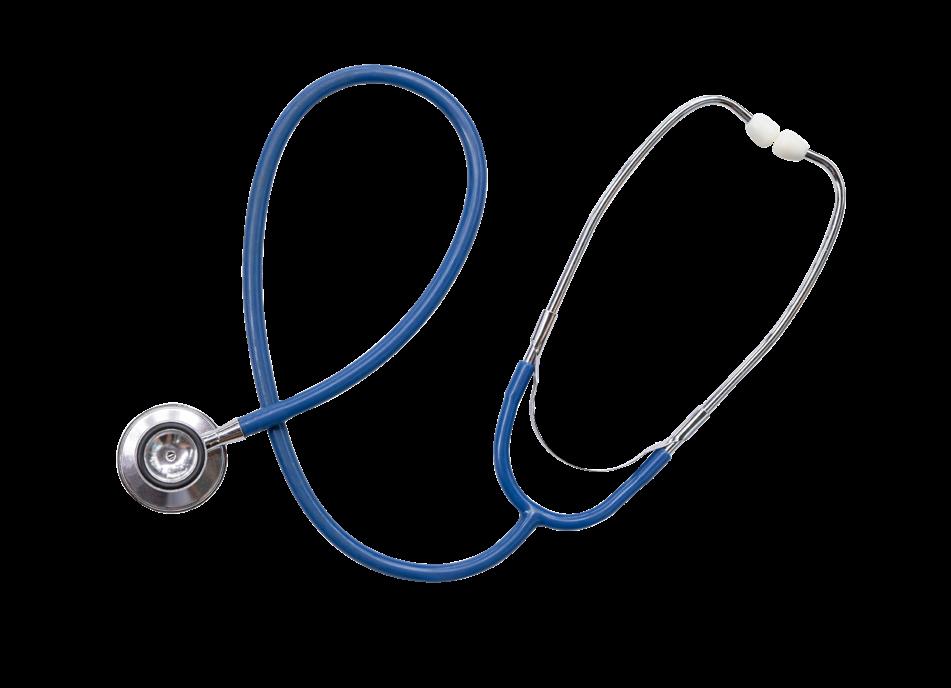
Although this sudden loss of a generation is alarming, it could also be an opportunity for healthcare to embrace a new generation that might think differently. The future of healthcare leadership and management lies in millennials (27 – 42 years old). We have already seen that this generation has a very different take on what they need and want from their employers. They are curious, engaged, and want to make a difference in society.
These individuals are the first generation of digital natives and are ripe for embracing innovation, remote monitoring, telehealth, and other ways to bring healthcare to patients in their homes. However, competition for top performers will require flexible employers who can build remote teams and see that the future does not lie in the past. These next-generation healthcare leaders do not want to be restricted by policies and processes, but empowered by less hierarchy, more creative space, and further opportunities within healthcare organisations.
If healthcare organisations can step back from the precipice to see that it’s not all about hiring more of the same, but grasping those who will follow them, healthcare leadership could be the most significant leverage point for improvement.
The challenges of today’s healthcare workplaces are complex, and they require leaders who can visualise a different future by embracing new skills and upscaling others, as they adapt to the rapidly changing healthcare landscape. Healthcare as a subject can no longer be shunned by business schools, as this area is now where those schools will have the most impact over the next 10 years. Emerging themes such as AI, data analytics, supply chain management, and climate finance point to a strong future in the sector.
While there is no doubt that healthcare has several workforce challenges, the crux of the matter may not be simply increasing the number of doctors and nurses, but also ushering in the next generation of healthcare leaders, via tactical business education, who will think and work differently.
Professor Nora Colton is the Director of UCL GBSH, the world’s first business school dedicated to health and healthcare topics. A health and development economist with extensive experience in change management and strategy, she also has a particular interest in change management as it relates to the healthcare sector and has designed and taught on healthcare management postgraduate degree courses, as well as health related executive education and training programmes.
https://www.ucl.ac.uk/ global-business-school-health
“THESE NEXT-GENERATION HEALTHCARE LEADERS DO NOT WANT TO BE RESTRICTED BY POLICIES AND PROCESSES”

 Writer: Lauren Kania
Writer: Lauren Kania
Having watched his mother suffer from breast cancer in the 1990s, Richard Paxman, CEO of Paxman Scalp Cooling (PSC), has made it his mission to help others going through chemotherapy regain their confidence and sense of identity, through reducing the amount of hair loss suffered by many cancer patients.
“Chemotherapy-induced alopecia (CIA) is widely recognised as one of the most traumatic side effects associated with chemotherapy treatment; it can have a detrimental impact on a patient’s sense of identity, quality of life, and can lead to social isolation,” opens the CEO of PSC, Richard Paxman.
PSC is looking to address this unmet need in side effect management and has been pioneering scalp cooling technology for over 20 years with the clinically proven Paxman Scalp Cooling System (PSCS) that helps tens of thousands of cancer patients to minimise CIA every year in more than 60 countries worldwide.
Not only is Paxman now the global expert in preventing CIA, but it is also manufacturing and supplying
the world-leading PSCS with an 80 percent share of the global scalpcooling market and continues to conduct research and clinical trials to improve the technology.
“US Food and Drug Administration (FDA) cleared, scalp cooling is proven to be efficacious, tolerable, and safe by multiple robust studies conducted all over the world. Achieving a standard of care at some of the world’s most trusted medical institutions, the treatment is listed in multiple cancer care guidelines and is clinically proven to encourage faster hair regrowth.”
This technology allows patients the opportunity to go through a traumatic event such as cancer with their sense of self still intact and not let any diagnosis, no matter how formidable, define them.
Having expanded into the US market, PSC has begun to offer expansive patient services, including determining insurance coverage for patients and filing for pre-approval as part of its new buy-and-bill business model.
As access to PSCS in the US has been limited to an out-of-pocket expense, this new model will allow the technology to be taken advantage of by many more patients going through chemotherapy, as providers at facilities contracted with PSC under the new model are now able to bill the insurance on behalf of their patients.
Leading institutions around the US are already using this model, enabling patients such as Brooke to access previously unaffordable healthcare.
Regarding her experience, Brooke states, “I was trying to mentally prepare myself for the worst of losing my hair. It really came down to whether the PSCS was covered by my insurance; if I could get it covered, I would do it.”
Without these opportunities for patients like Brooke, who otherwise may not have been able to access the scalp cooling treatment, many would have found themselves without options and having to endure one
The new buy-and-bill model has visibly improved patient access to scalp cooling regardless of their insurance coverage or financial situation.

From June 2022 to June 2023, 273 benefit investigations were completed by providers using Paxman Hub Services. With this, 219 patients received positive coverage, and 54 received no coverage; however, 48 were approved for the Patient Assistance Program
(PAP). In summary, 80 percent of patients received positive insurance coverage, and 89 percent of patients with coverage were supported by PAP.
THE FUTURE OF PAXMAN SCALP COOLING
Being able to make a significant difference in the lives of patients already enduring a traumatic diagnosis is a courageous and worthy endeavour.
“IT REALLY IS OUR VISION TO ENSURE WHEREVER YOU ARE IN THE WORLD, NO MATTER YOUR SOCIO-ECONOMIC STATUS, ETHNICITY, SEX, OR CANCER TYPE, THAT YOU HAVE ACCESS TO THIS TECHNOLOGY TO PREVENT OR REDUCE CIA”
– RICHARD PAXMAN, CEO, PAXMAN SCALP COOLING
PSC is continuing to set the standard in terms of healthcare and technology for cancer patients, in order to ease their journey and help them continue to maintain their sense of identity throughout a traumatic ordeal.
To expand the access of PSCS to individuals from every demographic, regardless of their insurance coverage or financial situation, enhanced services are being offered to US facilities contracted with PSC under the buy-and-bill model. The offering through Paxman Hub Services, which is facilitated through CoverMyMeds – a McKesson company - includes:
• Benefits investigation to determine patient insurance coverage and its level
• Prior authorisation assistance to support use of PSCS
• Appeal support to aid in PSCS use when coverage is denied by the insurance company
• PAP for free goods to qualifying patients
This allows many more patients the opportunity to access such a valuable and positive product that otherwise may not have been an option due to affordability.
With various goals for the near future, at the forefront is the continuation of branching out into the US market.
“Today, many patients either pay out of pocket or decline treatment due to high out of pocket costs. Further private and public insurance coverage shall change this, unlocking the true growth potential in the US,” Paxman tells us.
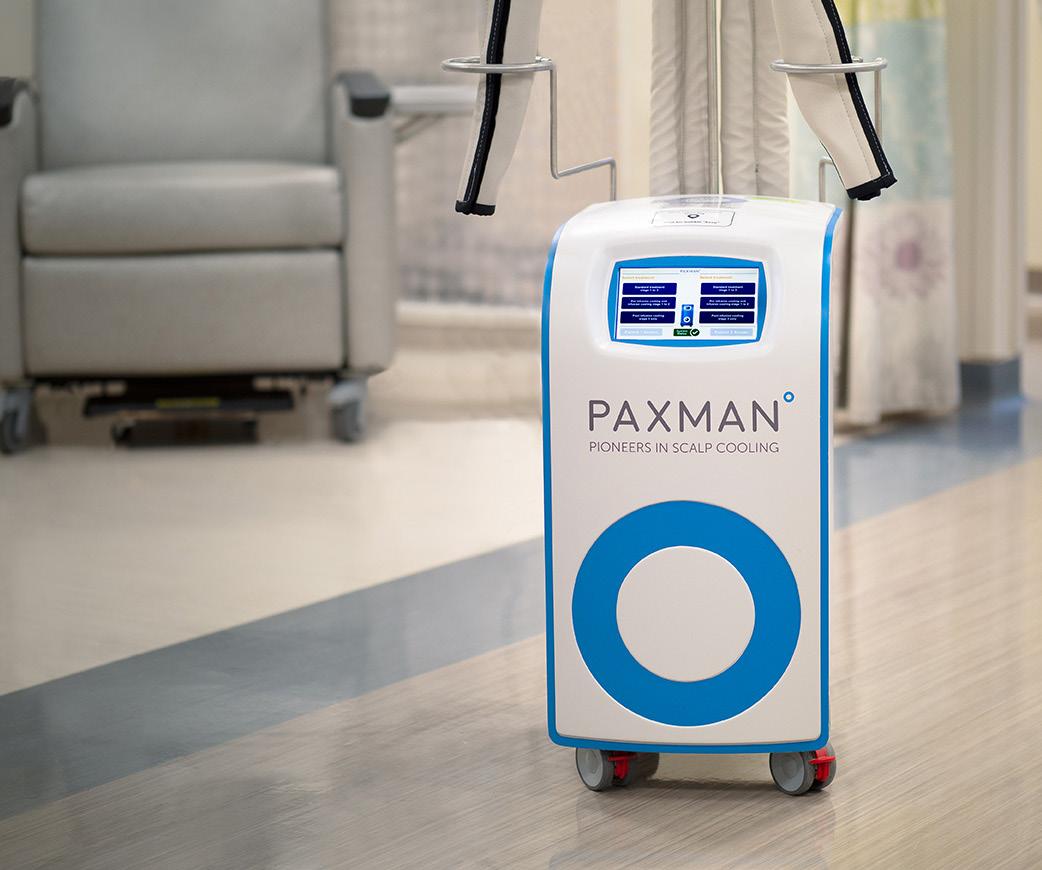
Additionally, China is high on the healthcare agenda for the remainder of the year. With a medical market that is set to overtake the US in the coming years, it is somewhere that
cannot be ignored.
“We have reviewed the market for a number of years and have held off based on timing and opportunity cost, but we now believe it is the right time. A relationship has been built with a partner where we have a strong level of trust, and we are now working on the appropriate commercialisation and regulatory route.”
Additionally, PSC has been developing a portable compression and cooling product since 2019 that is aimed at preventing chemotherapy induced peripheral neurotherapy (CIPN), a related indication causing
At its core, Paxman is about helping people gain back their confidence after a traumatic diagnosis.
As many who have been through similar experiences can attest, there is no better way to do so than through finding a supportive and empathetic community. Moreover, in this digitally focused future, social media is an invaluable tool.
FACEBOOK – The private Facebook Group for patients using scalp cooling has become a warm and supportive international community of over 8,000 patients.
COLDCAP.COM – As the world’s first scalp cooling website, coldcap.com aims to provide support to patients who choose to scalp from the point of diagnosis to the end of chemotherapy treatment and beyond.
“Within this, we created detailed tutorial videos that guide patients through fitting the scalp cooling cap which has a seen a notable impact on the efficacy of the treatment. Coldcap.com has facilitated patient education and a moderation of expectation, which has had a positive impact on patients and the clinical staff who support them,” – Richard Paxman, CEO, Paxman Scalp Cooling
SCALP COOLING SUMMIT – In May 2022, the first ever Scalp Cooling Summit was digitally hosted and included over 50 international speakers to share their experience and knowledge.
preventing/reducing CIPN severity. However, the currently utilised frozen gloves or ice packs are not userfriendly, deliver unstable cooling, and can cause severe frostbite. There is a need for a medical device developed for patient use in a chemotherapy suite that can deliver stable cooling that is tolerable over the entire duration of the treatment.
The company has an ongoing research collaboration agreement with National University Cancer Institute, Singapore (NCIS), and received a research grant of SGD$1.57 million from the country’s National Research Foundation (NRF).
“The first phase of this trial in Singapore was completed in 2022. Results from the first phase have been positive – patients have reported efficacy of the Paxman Limb Cryocompression System (PLCS) in helping to prevent CIPN,” specifies Paxman.
This collaboration and expansion has allowed PSC to reach a wider range of international patients and further push the ways in which it can aid patients going through chemotherapy and the various side effects that they may experience.
chronic, permanent nerve damage in hands and feet.
CIPN is a severe side-effect of chemotherapy drugs called taxanes, which are used to treat common cancers such as breast, lung, ovarian, and stomach cancer. CIPN affects approximately 1.4 million cancer patients globally every year.
CIPN causes progressive and often irreversible pain or sensitivity in the hands and feet of patients undergoing chemotherapy, leading to delays and discontinuation of treatment. It
contributes to long-term poor patient well-being and significantly increases the economic burden in terms of healthcare costs. The condition also leads to a loss in work productivity, as affected patients are unable to return to work quickly.
Few to no prevention and treatment strategies exist for CIPN. Recently, cryotherapy (or cooling) of the limbs during chemotherapy has demonstrated a protective effect by
PSC is taking on the ambitious journey of changing the face of cancer and improving the efficacy of scalp cooling for patients internationally. Through dedication and perseverance that stems from personal experience, PSC is at the forefront of scalp cooling technology and providing international access to all those who need it.
“THE OPPORTUNITY FOR THE COMPANY IS VAST. WE ARE ONLY SCRATCHING AT THE SURFACE, AND WE HAVE SO MUCH MORE TO DO. A CORE FOCUS WILL CONTINUE TO BE THE US, WITH THE GOAL OF EXPANDED PATIENT ACCESS THROUGH REIMBURSEMENT”
– RICHARD PAXMAN, CEO, PAXMAN SCALP COOLING
Africa Outlook, APAC Outlook, EME Outlook, North America Outlook, Mining Outlook and Healthcare Outlook are digital publications aimed at boardroom and hands-on decision-makers, reaching an audience of more than 800,000 people around the world; spanning the full range of industrial sectors.







With original and exclusive content compiled by our experienced editorial team, we look to promote the latest in engaging news, industry trends and success stories from across the globe.
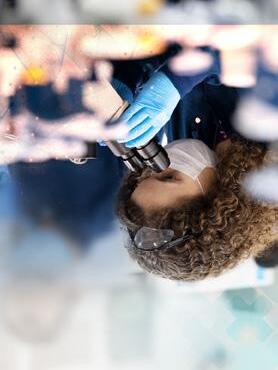


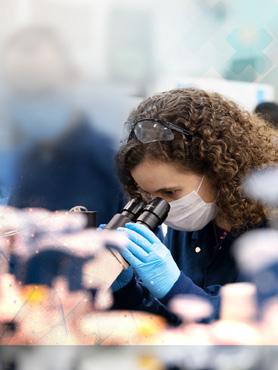


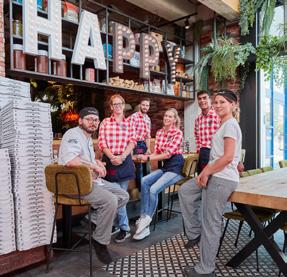
Your company can join the leading industry heavyweights enjoying the free exposure we provide across our platforms with a free marketing brochure, extensive social media saturation, enhanced B2B networking opportunities, and a readymade forum to attract new investment and to help you grow your business. Visit www.outlookpublishing.com/get-involved for details on how your company can feature for free in one of our upcoming editions.
www.outlookpublishing.com/get-involved

















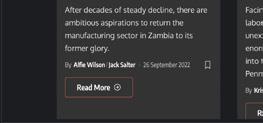



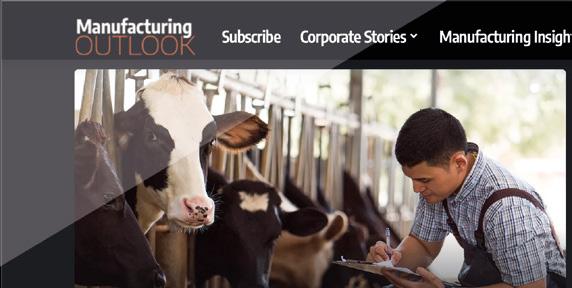













Building on the global success of its regional titles – Africa Outlook, EME Outlook, APAC Outlook, and North America Outlook – Outlook Publishing is proud to introduce a platform dedicated to the manufacturing sector.









As manufacturing organisations worldwide confront unprecedented change, embracing technological innovations and incorporating critical environmental sustainability agendas, now more than ever is the time to showcase the strides being taken in this dynamic sector.


A multi-channel brand, Manufacturing Outlook brings you the positive developments driven by organisations across the global manufacturing industry through our various platforms. Discover exclusive content distributed through our website, online magazine, social media channels, and dispatches delivered straight to your inbox with a bi-weekly newsletter.
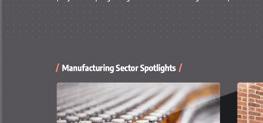
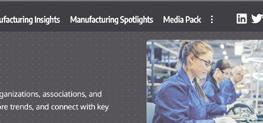
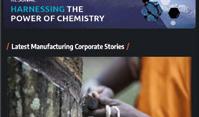



Through this compelling new venture, we foreground the movers and shakers of the industry. To participate as a featured company and join us in this exciting endeavour, contact one of our Project Managers today.
www.mfg-outlook.com/work-with-us






The trust patients have in their healthcare providers is now so reliant on technology and data. As such, the emerging technology of the sovereign cloud is the latest tool in ensuring patient’s data protection.
Writer: Darren Adcock, Senior Product Manager, RedcentricOver the last few years, the way healthcare is delivered has changed dramatically and so has the importance of data safety. A recent survey by VMware found that over half of the UK public trusts the NHS to store and analyse their patient data safely, but where it’s stored remains a pressing concern.
Recent developments around generative artificial intelligence (AI) have led to new debates around privacy and trust in data, but where it is stored should be a top priority. Therefore, it’s important to consider the role of the sovereign cloud in
healthcare today and how it links with patient trust.
Technology is now integral to the patient experience, with the data from every patient’s interaction with a healthcare professional now being digitally recorded in some form, including highly sensitive information. Consequently, major cyber-attacks have had an impact on patients’ trust in the healthcare system, with NHS trusts suffering from both data breaches and cyber-attacks in recent
times, such as the attack on the University of Manchester earlier this year.
Healthcare organisations are also seen as top targets by cyber attackers, so the risks facing them will only increase in the years to come. Patient data also falls within the category of ‘sensitive’ under legislation and faces heightened scrutiny from the public and regulatory bodies.
Looking at the VMware research, the majority of UK consumers believe it is important that their NHS patient data is stored in the UK. Countries that have enacted certain legislation have the right to access data hosted by providers registered in their countries, even if the data is located in another country and jurisdiction.
Thus, the complex nature of current data storage means that data can be stored in many countries with a large number of different companies. According to the Office for National Statistics (ONS), the NHS is the most trusted public service, but data forms

a critical part of the trust puzzle and will continue to do so. Therefore, the use of the sovereign cloud is paramount to maintaining confidence in the years to come.
In order to improve patient outcomes, healthcare organisations are already looking at the potential use for emerging technologies, with AI already being used by some healthcare organisations to detect diseases such as cancer.
With an ageing population and pressure on resources due to stretched public finances, technology could be the answer to some of the issues facing the sector today.
The NHS is also struggling with patient waiting list backlogs as it recovers from the COVID-19 pandemic and the need to treat chronic diseases.
However, these new opportunities also bring challenges when it comes to data with mounting concerns being expressed around the use of AI. A recent survey found that 25 percent of those surveyed opposed the NHS using AI to process their patient data, revealing the added hurdles in the area of emerging technology.
The rewards have to be balanced with the risks and every data point relates to a patient, who trusts that their privacy is maintained. For healthcare organisations, the challenge is then where and how to store that data, in a way that ultimately fosters trust with patients in a rapidly changing world.
With cyberattacks on systems frequently making the news, patients simply won’t provide necessary data if they feel that their privacy could be compromised.
The sovereign cloud can help to protect the most sensitive data by
– DARREN ADCOCK, SENIOR PRODUCT MANAGER, REDCENTRIC
keeping it under sovereign control. Modern data protection legislation makes it even more important for healthcare providers to consider the use of the sovereign cloud, with 137 countries having already enacted data protection and sovereignty laws in some form, according to Accenture

Using a sovereign cloud provider can help organisations gain more control over their information by having extra visibility and auditing functions over data. This protects it from foreign interference, especially in the face of global geopolitical tensions and new data sovereignty laws.
With global cyber security problems on the rise, the sovereign cloud provides an enhanced level of security with access controls and
multiple layers of protection. For the highest levels of security, data can also be stored in air-gapped storage and protected with strong encryption.
In a world where data sovereignty laws and cyber threats are evolving, the sovereign cloud can help healthcare organisations to build trust with patients. As a result, organisations can have greater confidence in an era of technological change and patients will have more confidence in data storage and consequently in the overall healthcare experience.

Tel: 0800 983 2522
www.redcentricplc.com
“WITH GLOBAL CYBER SECURITY PROBLEMS ON THE RISE, THE SOVEREIGN CLOUD PROVIDES AN ENHANCED LEVEL OF SECURITY WITH ACCESS CONTROLS AND MULTIPLE LAYERS OF PROTECTION”
New mobile healthcare solutions from RMI and Acacium Group will combine logistics, staffing, data, and clinical expertise to provide healthcare services at the point of need, no matter where
 Writer: Alex Tuck
Writer: Alex Tuck
The NHS is facing an unprecedented challenge: how to cope with the growing demand for healthcare services, especially in the wake of the COVID-19 pandemic.
According to the latest figures from NHS England, there were 5.6 million people waiting to start treatment at the end of July 2021, the highest number since records began in 2007. Of these, more than 300,000 had been waiting for more than a year, compared to just 1,600 in February 2020.
The impact of this backlog is not only felt by patients, who may suffer from worsening health conditions, reduced quality of life and increased anxiety, but also by healthcare staff, who face increased workload, stress, and burnout. The situation is also likely to worsen as the winter season approaches, bringing with it more pressure on the NHS from flu, colds, and other respiratory infections.
To address this challenge, the NHS needs to find innovative and flexible
ways to deliver healthcare services that can meet the needs of patients and staff, while also ensuring quality, safety, and efficiency. One such solution is the use of mobile healthcare units, which can provide a range of services in different settings and locations, from diagnostics and testing to treatment and vaccination.
Mobile healthcare units are not a new concept, as they have been used for decades to provide services such as breast screening, blood donation, and dental care. However, advances in technology, logistics, and

clinical expertise have enabled the development of more sophisticated and versatile mobile solutions that can offer a wider range of services and specialties.
For example, mobile units can now be equipped with state of the art equipment such as CT scanners, MRI machines, X-ray machines, and ultrasound machines, as well as digital platforms that enable remote consultation, monitoring, and data analysis. Mobile units can also be staffed by qualified and experienced healthcare professionals who can deliver high-quality care in a safe and comfortable environment.
The benefits of mobile healthcare units are manifold. They can increase access to healthcare services for patients who live in remote or deprived areas, or who face barriers such as transport, mobility or language; they can reduce waiting times and pressure on local health

services by providing additional capacity and flexibility; they can improve patient satisfaction and engagement by offering more choice and convenience; they can support public health initiatives such as mass testing and vaccination programmes; and they can enhance clinical
outcomes by enabling early diagnosis and intervention.
A recent example of the successful use of mobile healthcare units is the partnership between Acacium Group and RMI Global Solutions (RMI), two expert providers in the global healthcare sector. Acacium Group is the UK’s largest healthcare delivery partner, deploying over 30,000 healthcare professionals a week globally. RMI delivers technical, medical, and security solutions to companies and governments around the world.
“The mobile clinical model has been proven to reduce pressure on local health services, cut down NHS waiting lists, and improve engagement with healthcare services from remote and disengaged communities. Our partnership with Acacium Group is centred on one
“THE MOBILE CLINICAL MODEL HAS BEEN PROVEN TO REDUCE PRESSURE ON LOCAL HEALTH SERVICES”
– ASH THORNLEY-DAVIS, ACCOUNT EXECUTIVE, HEALTHCARE AND THE NHS, ZOOM
aim: how we can offer the public and independent sectors healthcare solutions at the point of need, no matter where that is,” says RMI’s UK Managing Director, Julian Rawles.
“RMI’s experience in delivering healthcare in complex and remote
RMI delivers technical, medical, and security solutions to companies and governments around the world. The company has offices in the Americas, the UK, and Africa, and has been recognised six times by Inc. 5000 as one of the fastest-growing companies in the US. RMI works with Fortune 100 corporations and governments. https://rmiglobalsolutions.com/ about-us/
environments, partnered with Acacium Group’s capabilities in healthcare workforce deployment and delivery, is unmatched.”
Together, they have launched a new offering that combines logistics, staffing, data, and clinical expertise. The mobile healthcare solutions offering can support with hospital backlogs, accident and emergency (A&E) waiting times, general practice (GP) capacity, school immunisation drives, and even mobile physiotherapy units for occupational health needs.
The partnership has a proven track record of delivering tremendous results, following an award-winning project delivered by RMI and Espirita, part of Acacium Group, on behalf of the Department of Health and Social Care (DHSC). In 2021, in the midst

of the COVID-19 pandemic, RMI and Acacium Group established a project team that delivered state of the art mobile testing laboratories manned by 80 logistical and support staff and over 155 scientific and non-scientific staff, within a period of just eight weeks. Clinical staff worked 135,440 hours throughout the course of the project and processed 110,409 samples at key events and during operational exercises. From these, 32,956 positive cases were identified, safeguarding the continued operation of key infrastructure organisations and government functions during the pandemic.
“We deploy over 30,000 healthcare professionals globally every week – our expertise in flexible staffing solutions has shown us how crucial it is to have a highly trained workforce who can be deployed to meet surges in demand. With pressure on healthcare providers seen across
the system, having access to a service that is agile and capable of delivering expert healthcare solutions at scale is unique, and has the potential to change the way healthcare challenges are met,” adds Mike Barnard, CEO of Acacium Group.
Acacium Group is a leading global healthcare delivery partner. With over 35 years of experience and 24 specialist businesses, the group improves people’s lives through expert healthcare, social care, and life sciences. By combining access to workforce, technology, and sector expertise, Acacium Group increases the sustainability of the global healthcare system, from early-stage clinical research right through to palliative care.
https://acaciumgroup.com/
Another example of the potential of mobile healthcare units is the virtual ward model, which enables patients to be monitored remotely at home or in the community, using digital devices that transmit vital signs and other clinical data to a central hub, where clinicians can review them and intervene if necessary. This model can reduce hospital admissions and the length of stay, as well as improve the patient experience and quality of care. The King’s Fund, a leading think tank on health and social care policy, has highlighted some successful examples of virtual wards in action, such as those implemented by the Hampshire Hospitals NHS Foundation Trust, North West London Clinical Commissioning Group, and Surrey Heartlands Health and Care Partnership.
The use of mobile healthcare units is not without challenges, however. Some of the barriers that may limit their adoption and effectiveness include the availability and cost
of suitable vehicles, equipment and staff; the regulatory and governance frameworks that apply to different services and settings; the integration and interoperability of data and IT systems; the engagement and collaboration of stakeholders, such as commissioners, providers, patients, and communities; and the evaluation and evidence of impact and value.

These challenges can be overcome by adopting a strategic and collaborative approach that involves co-designing, co-delivering, and co-evaluating mobile healthcare solutions with all relevant parties, as well as sharing best practices and learning from other examples. The NHS Long Term Plan, published in 2019, recognised the need for more integrated and community-based care, as well as the role of technology and innovation in transforming health and care services.
Mobile healthcare units can be seen as a key enabler of this vision, as they offer a new way to tackle the NHS waiting list crisis and improve the health and well-being of the population.

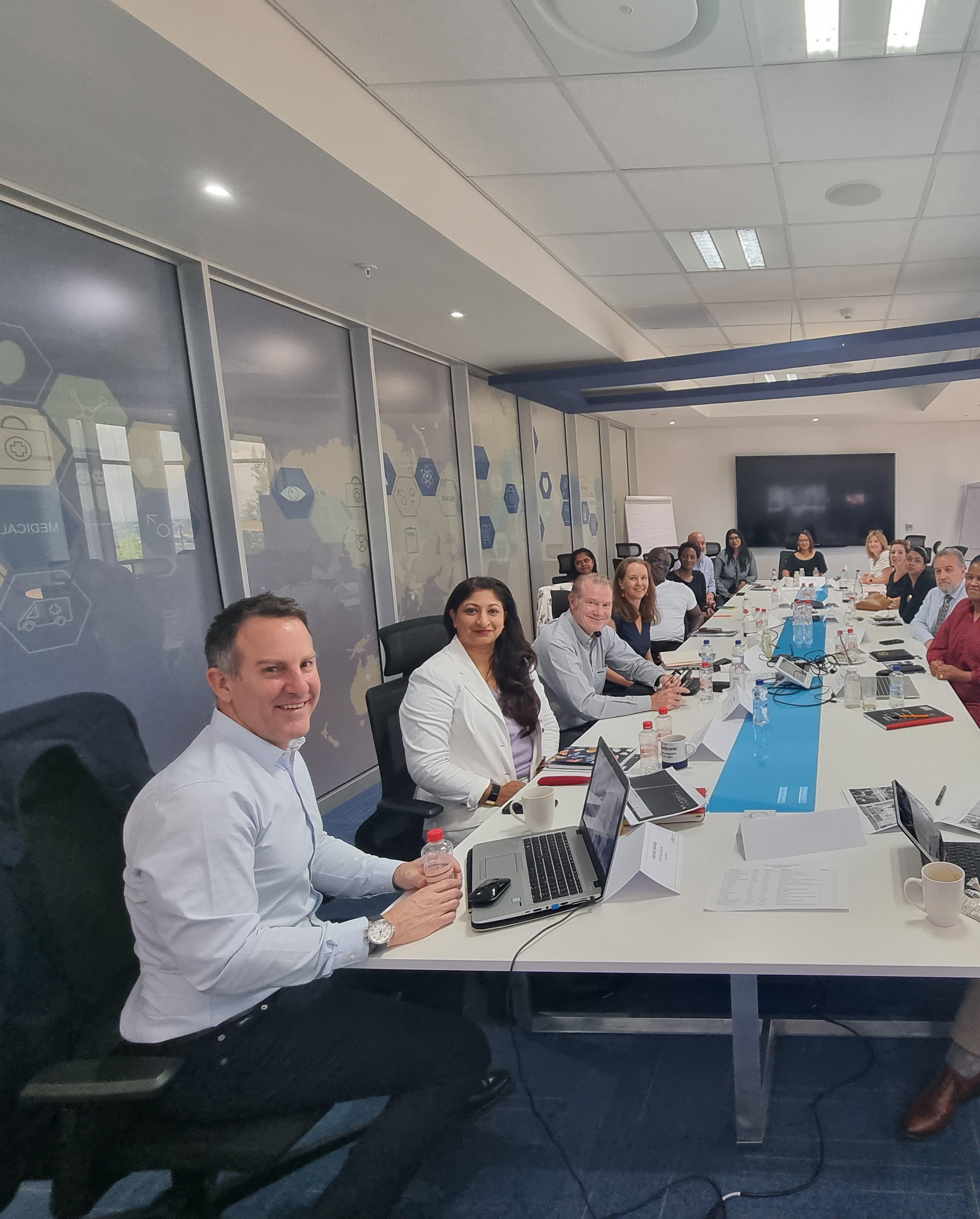










 Writer: Alex Tuck | Project Manager: Dave West
Writer: Alex Tuck | Project Manager: Dave West
According to the International Trade Administration, South Africa’s medical technology (MedTech) industry represents one of the country’s best prospect industry sectors, alongside pharmaceuticals. Its current realities reflect a sector that is ready for increased investment in localisation, development of critical manufacturing, regulatory skills, and strengthened trade with the rest of the African continent. Indeed, as a country that is dependent on imports for the majority of MedTech products, the vulnerability of this position rose to the fore during the recent global healthcare crisis of the COVID-19 pandemic, which starkly illuminated the issues that need to be addressed if the industry is to progress for the overall benefit of the national healthcare system.
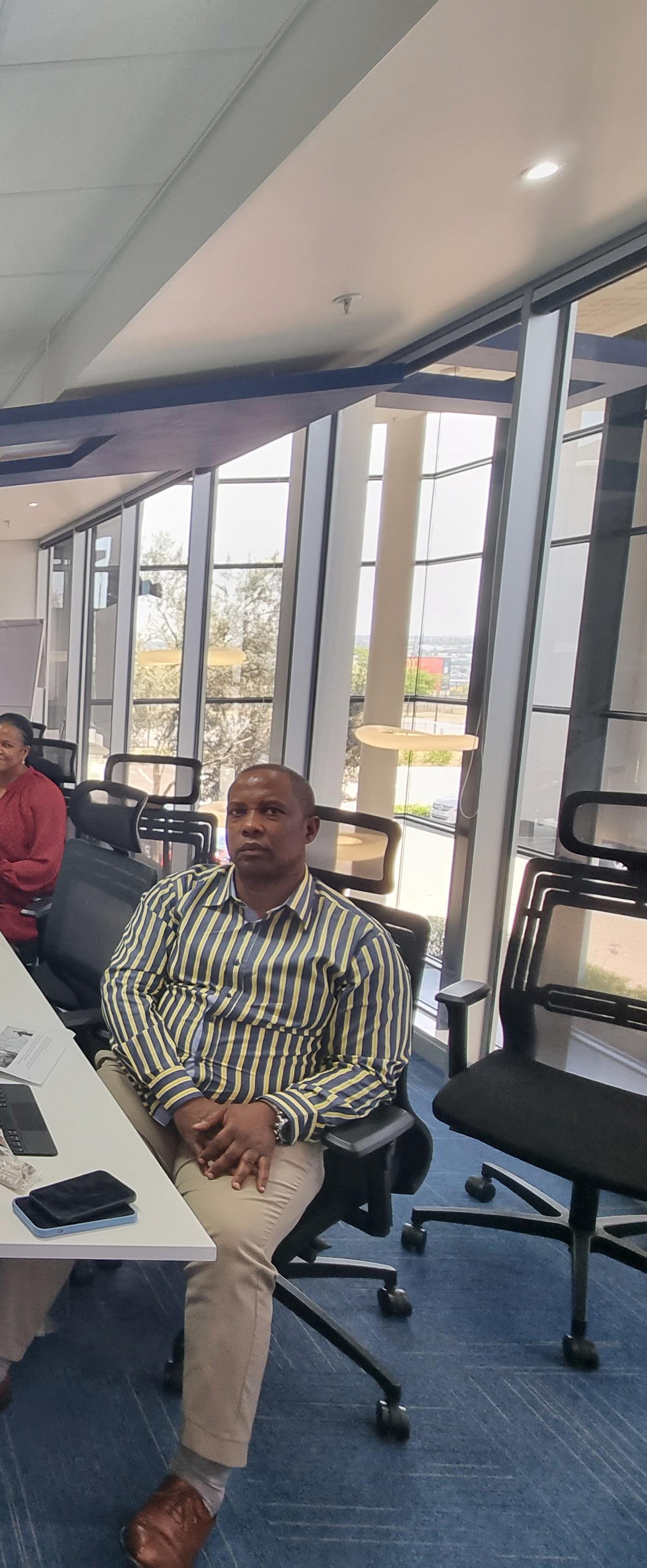
As with many industries, the MedTech sector is currently weathering major macroeconomic pressures, including increasing regulatory and labour costs, inflated expenditure on logistics, and the rising cost of energy and raw materials – the latter of which significantly impacts the semiconductor chips and medical grade packaging that are vital to the industry. Currently, all MedTech companies operating within the manufacture, distribution, import and export of MedTech products must obtain an establishment licence from the South African Health Products Regulatory Authority (SAHPRA). The sector’s future is reliant on greater engagement with this regulatory body, in addition to joint planning with all players involved in the delivery of care through consultations and collaborations.
This is pivotal as the country moves forward with the roll out of the National Health Insurance (NHI) scheme, which seeks to implement a universal healthcare system with the government acting as the main procurer of health goods and services. It is only through such collective efforts that MedTech can realise its full potential in South Africa as a field that is not only instrumental to the health of the population, but is a key step forward in the national socioeconomic trajectory.
As the country advances the roll out of national health insurance, a healthy MedTech sector will be instrumental to its success and the delivery of quality patient care. We step inside one of South
As the voice of the country’s burgeoning MedTech sector, we speak with Tanya Vogt, Executive Officer of SAMED, to unpack its aims and objectives
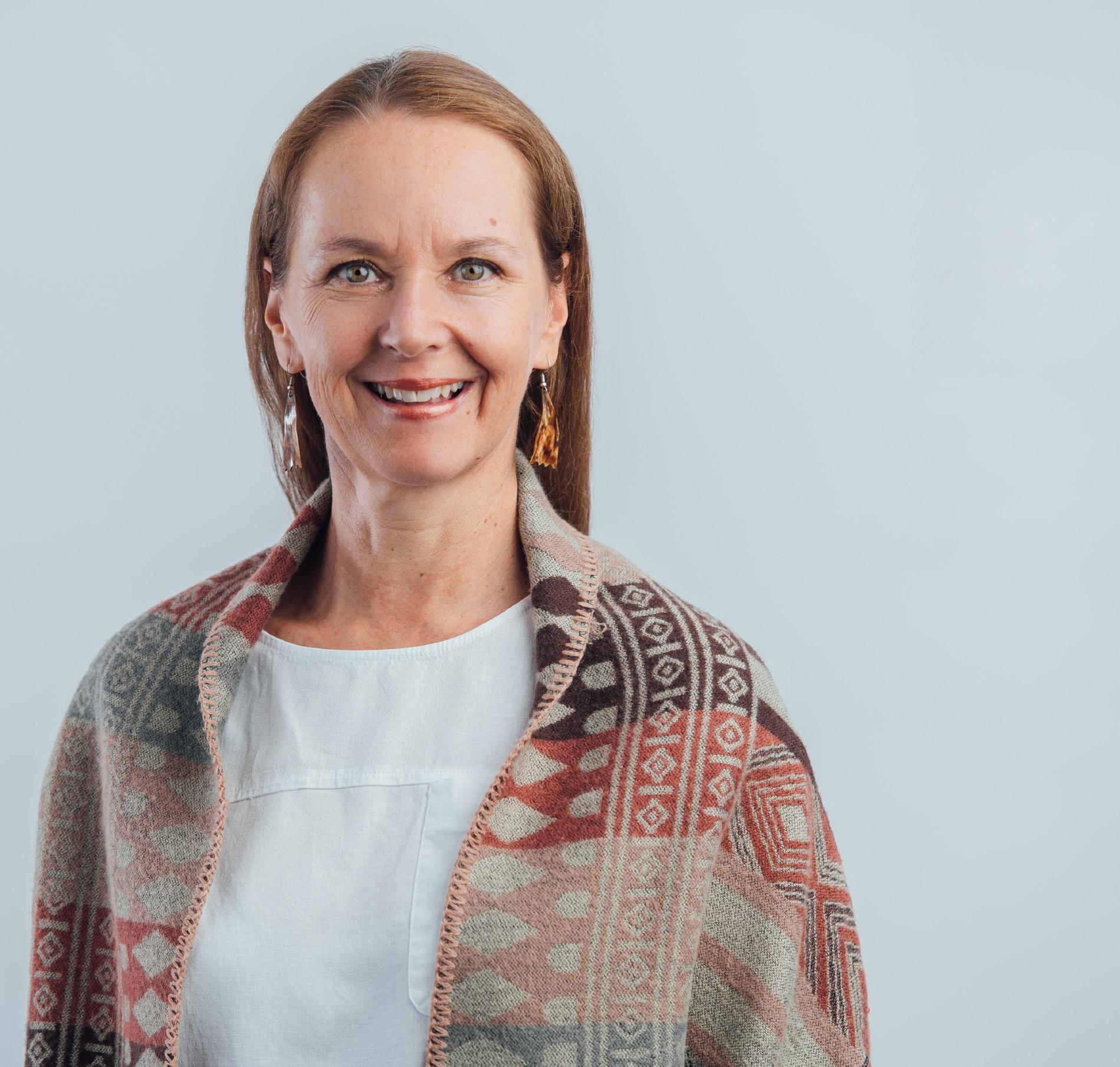
SAMED was formed in 1985 as a not-for-profit (NPO) voluntary association by a collective of local manufacturers, united by the objective of engaging with regulatory authorities and calling for the registration of medical technologies. Today, the association prides itself on providing the South African MedTech and in-vitro diagnostics (IVDs) industry with a collective, objective, and credible platform for engagement with stakeholders.


Healthcare Outlook (HO): Could you introduce us to the association and explain your vision and ongoing mission?






Tanya Vogt, Executive Officer (TV): MedTech plays a vital role across the continuum of patient care (prevention, screening, diagnosis, treatment and rehabilitation). As such, the MedTech sector is significant in providing effective and efficient healthcare for all South Africans. SAMED’s vision is to partner with our stakeholders to drive the MedTech industry to new frontiers and contribute towards enabling a sustainable healthcare system. Meanwhile, our mission is to enable an environmental, ethical and transformed MedTech industry that ensures patient access to medical technologies.

The world of health never stands still. And neither have we. At every moment that counts, we will be there.
From continuously devising and improving our existing tools and programmes that help assess and optimise efficiencies, reduce cost and increase patient outcomes across healthcare organisations, to contributing to a more resilient and sustainable work environment to ensure all healthcare practitioners focus on what matters most to them, we help to provide the best care for their patients.
At BD, our strategic partnerships across the patient journey, combined with our scale, and 125 years of experience have made us uniquely able to continually advance science and clinical outcomes, caring for patients and healthcare workers.
© 2022 BD. All rights reserved.
BD and the BD Logo are trademarks of Becton, Dickinson and Company. All other trademarks are the property of their respective owners
Guerbet South Africa (Pty) Ltd | Co.Reg.No.: 2012/184409/07
Hertford Office Park, Building I, 90 Bekker Road, Vorna Valley, Midrand,Gauteng, 1682
Tel : 010 045 0300
www.guerbet.com/en-za
HIGH QUALITY CONTRAST MEDIA
For enhanced clinical decision-making
SMART INJECTION SOLUTIONS
For safe and efficient injections
INNOVATIVE DIGITAL SOLUTIONS

For heightened patient safety and productivity

Driven by its commitment to advance radiology today and tomorrow, Guerbet Diagnostic Imaging has designed a portfolio of interconnected contrast imaging solutions to enhance your desicion-making at each point of the patient journey from diagnosis, to treatment, to follow-up, so you can focus on what matters most, efficiently improving patient outcomes.
Our membership has grown over time to more than 150 members, including multinationals and small, medium and micro enterprises (SMMEs), distributors, wholesalers and local manufacturers of medical devices, medical equipment and IVDs.
HO: Since its foundation, how has SAMED developed and progressed in terms of its key objectives and the messages it tries to get across?







TV: We have retained regulatory affairs as one of our primary objectives since inception, with a broadened scope. Our engagement with the regulator – SAHPRA, and its predecessor the Medicines Control Council – has strengthened over the years. SAMED strives to contribute to the development and implementation of appropriate, fit-for-purpose and robust regulations. These are essential for a competitive MedTech industry that supplies safe, quality and effective products.
To achieve this, SAMED follows both local and international developments in the sphere of MedTech regulations, keeps members informed, builds their capacity to comply, and submits evidence-based comments on draft legislation and regulations. SAMED eagerly awaits the finalisation of regulations for product registration, which are expected in the coming period.

In the last decade, regulatory harmonisation and convergence has become a growing area of SAMED’s work. These processes seek to align regulatory pathways to facilitate access to innovative, safe and quality MedTech products to South Africa and other markets. SAMED works with global, continental and local entities to identify and shape regulatory best practices and facilitate capacity building.
SAMED also works to drive adherence to ethical marketing principles and business practices, promote access to MedTech for better patient outcomes, and support growth and transformation for sustainability. This is in the interest of not only MedTech companies, but also others in the healthcare system including patients, and the wider country’s socio-economic progress.
SAMED continually provides leadership on the transformation and localisation of the MedTech industry, which are among the factors that facilitate the industry’s growth and sustainability. This is in the interest of MedTech companies and others in the healthcare system including patients, but also the country’s socio-economic progress.
Our partnership with Youth Employment Services (YES) programme has created jobs in our sector for almost 2,000 youth, with help from over 30 SAMED members. SAMED also initiated the Women in MedTech forum that highlights the role of women in our space, and the
 SAMED Board with SAHPRA leadership
SAMED Board with SAHPRA leadership
benefits and potential for the industry to open up more opportunities for women.

HO: What do you find most exciting about South Africa’s MedTech industry?


TV: SAMED is inspired by the attractiveness and sophistication of the South African MedTech landscape and the potential growth of the sector as a meaningful player in the national economy. The localisation of lifesaving and life-changing MedTech is a priority for us. The association helps investors, innovators and commercial partners understand the South African healthcare environment and acts as a link between them and members who can fulfil various roles, such as distribution, manufacturing, servicing and maintenance. We undertake a number of initiatives to advance localisation, including:
• Championing SMMEs which constitute the majority of our members.
• Hosting localisation sessions at our annual conferences and speaking up for investors in the local MedTech industry at third-party events. In this area we collaborate with the dtic, SA Medical Research Council, Medical Device and Diagnostic Innovation Cluster (MeDDIC),
provincial development agencies, Centre for Scientific and Industrial Research and foreign trade missions.
Engaging with sector education and training authorities (SETAs) – including the Health and Welfare Sector Education and Training Authority (HWSETA) and the Manufacturing, Engineering and Related Services SETA (MERSETA) – to educate them about the MedTech sector and role they could play to grow it. SAMED is collaborating with CHIETA, the SETA for chemical industries, with a view to gaining recognition for individuals conducting MedTech regulatory functions. This would entail creating a new occupational qualification, health regulatory affairs assistant, and certified courses that encourage young people to enter our industry.
HO: On the flip side, what are the association’s biggest challenges?
TV: Globally, inflation in the medical/healthcare sphere, including the MedTech segment and health service funding more broadly, is cause for alarm. SAMED is acting on this challenge so that we build MedTech supply chain resilience. Often, MedTech prices are regulated by governments or negotiated with public and private funders in advance. There is little flexibility in our sector to adjust to market conditions. We seek solutions so that manufacturers, suppliers and funders can ensure adequate supplies of essential MedTech.
Supporting the MedTech sector through joint planning with others involved in the delivery of care and greater consultations and collaborations is necessary. As the COVID-19 pandemic has shown, our sector’s work is strategic and essential for the health of the population and our national socioeconomic trajectory.
The slow pace of investment into localisation and the necessary policy development is another challenge. We
could learn much from the automobile industry and the specific incentives the government has provided to that industry. South Africa is import-dependent on MedTech – a precarious position to be in during a regional/global health emergency. We must urgently start to grow critical skills in local manufacturing and strengthen trade into Africa, which presents valuable opportunities.
Project 18 C is an initiative that strives to make the Medical Device Code applicable to all MedTech companies, but it isn’t progressing as quickly as we hoped, as an opportunity to improve ethics across the entire value chain.

Finally, we must navigate the cost of regulatory and certification processes. Over the years, SAMED has invested major resources into differentiating MedTech from pharmaceutical products, and this challenge continues. Innovation in the MedTech industry moves at a much faster pace than pharmaceuticals and the majority of MedTech suppliers in the SA market are SMMEs. Charging MedTech suppliers the same license fees as pharmaceuticals has a significant impact on a MedTech company’s bottom line. Our MedTech members depend on conformity assessment bodies for accreditation, but the lack of these specialist skills and entities turns this into an expensive and arduous process, further affecting supply and associated costs.
SAMED offers members true value and represents their best interests. Its membership encompasses:
• A space for networking with others in the MedTech industry.
• A platform for voicing their collective views to decision makers in government and the private sector.
• Access to business-enhancing information and expertise through an annual conference, webinars, workshops, newsletters and interactive website.
• Industry insights through well-considered position papers and an opportunity to co-create these papers.
• Reputational credit as a signatory to the Medical Device Code of Ethical Marketing and Business Practice.
• Representation to expedite overdue public sector payments for goods and services supplied.
• Participation in an exciting new venture to collect industry data and generate invaluable business intelligence.

































TV: We are seeing an increasing appreciation for the value of MedTech and its contribution to healthcare is allowing SAMED and its members to speak up on its behalf. We are elevating MedTech with confidence, helping to shape and strengthen relationships. In the process, we are also witnessing a growing understanding and need for stepping up ethical marketing and business practices, which is where the Medical Device Code plays a key part. Equity, diversity and inclusivity (EDI) is another major trend. Broad-based Black Economic Empowerment (B-BBEE), changes to procurement regulations and their link to employment equity targets for our sector is also bringing change. SAMED continually builds members’ skills so they can comply and meaningfully contribute to socio-economic transformation.

Finally, environmental, social and governance (ESG) and our industry’s impact on climate change are hot topics within MedTech, and SAMED is embarking on awareness and education initiatives.
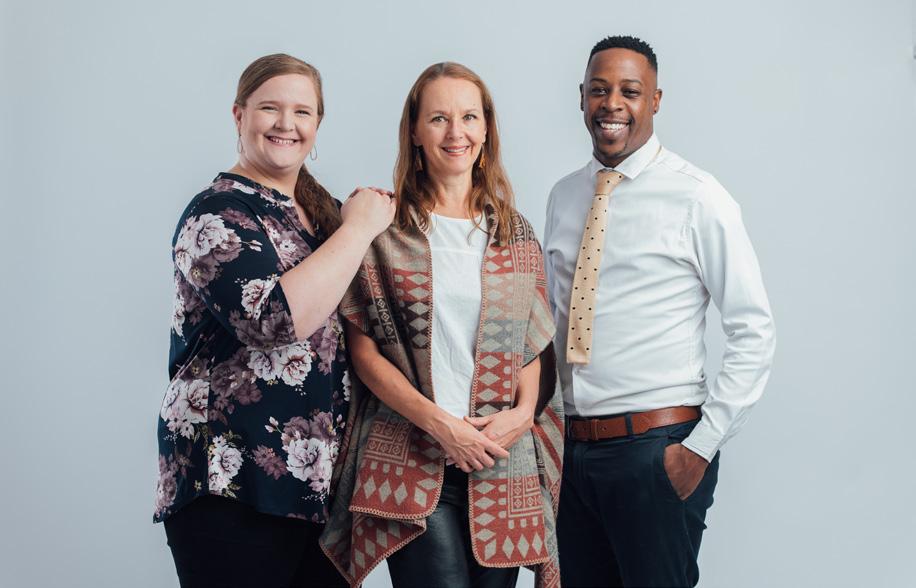
HO: Finally, how do you see the industry developing across South Africa over the next five years?
TV: I believe we are about to witness exciting progress in local manufacturing which will have positive knock-on effects on our trade exchanges within Africa, spurred on by the Africa Free Trade Area agreement.

We can expect greater regulatory requirements and changes in procurement practices, potentially with the National Department of Health (NDoH) playing a bigger role in terms of procurement. Health technology assessments (HTAs) - a process of assessing the cost effectiveness, appropriateness, potential value and therefore price of MedTech - will become a greater feature of the procurement process, with implementation by the NDOH.
HO: Have you got any events or projects in the pipeline you wish to highlight?
Data with Integrity is a novel SAMED initiative to generate our own primary data on the industry. The name of the programme emphasises our concern to provide reliable, trustworthy information. In addition, we are introducing a Women’s Empowerment Index which will allow our sector to set goals and track progress in creating corporate environments which value diversity and afford women inclusivity and equity. Lastly, SAMED is building capacity to offer certified training on various aspects of our industry, including the Medical Device Code and regulatory compliance.
In the meantime, SAMED will persevere in its efforts to address medical inflation and supply chain challenges. We will likely see greater collaboration between stakeholders and deepen our learnings from the COVID-19 experience that private and public sectors need to work together for the good of our patients.
“WE MUST PERSEVERE IN OUR EFFORTS TO ADDRESS INFLATION AND SUPPLY CHAIN CHALLENGES”
– TANYA VOGT, EXECUTIVE OFFICER, SAMEDWomen in Medtech Forum

Writer: Lucy Pilgrim | Project Manager: Deane Anderton
Since the first recorded form of modern biotechnology (BioTech) was conducted in 1973 with the genetic engineering of rare bacteria, the industry has catapulted to unprecedented levels. Indeed, BioTech has become paramount to modern healthcare and scientific R&D, as it permeates across many fields, including healthcare, scientific research, pharmaceuticals and tech companies.
In Europe, the BioTech industry continues to evolve through many breakthroughs, particularly in brain and neuronal therapies, which represent 50 percent of BioTech businesses in Europe.
Within Italy, there continues to be a resurgence in the aid provided by BioTech developments, as the industry works to positively serve the needs of Italian healthcare services and wider society. By the end of 2021, there was a total of 790 BioTech firms operating in the country, with R&D investment increasing by seven percent between 2019 and 2020.

The compiled impacts of the COVID-19 pandemic further highlighted a pressing need for medical research, which helped to provide the necessary tools to predict and prevent further occurrences. This is reflected by the fact that human healthcare is the largest sector active in the Italian BioTech industry, currently representing over 48 percent of the market segment.
Additionally, in line with greater climate change initiatives, Italy has witnessed an increase in industry and environmental BioTech, achieving a growth of 29 percent between 2014 and 2021, with similar growth projected in the R&D field.
With such an indispensable role, BioTech firms across the country are in need of a collaborative force and representation if the industry is to continue to flourish.
Italy’s biotechnology industry is one of the most innovative in the world, and has a major influence on the global bioeconomy. We shine a light on an evolving sector





Championing the voices of the Italian BioTech field, Assobiotec, the Italian Association for the Development of Biotechnology, part of Federchimica (Federchimica Assobiotec) facilitates a forum of discussion, leading the industry to a sustainable and safer society
 Image provided by Gilead Sciences and Kite Labs
Image provided by Gilead Sciences and Kite Labs
Founded in 1986, Federchimica Assobiotec represents over 100 companies and science and technology parks, across the healthcare and bioeconomy sector. As a member of its Executive Committee and CEO of Geneta Science, Pierluigi Paracchi tells us how the association has developed since its founding.
Healthcare Outlook (HO): Firstly, could you talk us through the origins of Federchimica Assobiotec and what led to its inception?
Pierluigi Paracchi, Executive Committee Member (PP): Federchimica Assobiotec is the Italian bioindustry association. Nowadays, it represents and supports not only BioTech firms, but also science and technology parks involved in the life science and bioeconomy fields.
The association brings together a variety of firms with a diverse range of applications; they all have BioTech in common as a hallmark component, which provides an engine for innovation.
Federchmica Assobiotec was first established in 1986 as part of Federchimica, the Italian Federation of the Chemical Industry. Since the beginning, its mission has been to encourage and support BioTech innovation with the ultimate goal of helping progress our country.


With the same aim, Federchimica Assobiotec is a founding member of the European Association for
Bioindustries (EuropaBio) and the International Council of Biotechnology Associations (ICBA) and, through Federchimica, the company is a founding member of the Italian National Cluster of Life Sciences (ALSISEI) and the Italian National Cluster of Circular Bioeconomy (SPRING).
As a proactive organisation, Federchimica Assobiotec is also an ongoing and active participant in the Blue Growth Cluster and Italian National AgriFood Cluster (CLAN) activities.
Image provided by UCB PharmaThe vast majority of cancer deaths are ultimately associated with metastases to the lungs and liver, which remain largely incurable — but, we believe, not for long.
BrYet has developed a therapeutic agent with unprecedented curative potential for metastases to the lung and liver. At BrYet, we believe that cancer can be treated with a new, physics-based approach, completely different from any other concept previously applied. We call it Transport Oncophysics.

The traditional view of tumours is that they are homogeneous masses of cells that proliferate uncontrollably and are resistant to pro-apoptotic stimuli. Now, we know that this view is overly simplistic. In fact, tumours are highly heterogeneous assemblies of cells that participate in constant interplay between themselves and a dynamic local microenvironment, continually changing and adapting in the process, with metastatic cancer cells being the most insidious and difficult to treat.

Current treatments often extend life expectancy by only a few months. Reduction in cancerinduced suffering is often adversely offset by the suffering caused directly by the treatments.

Throughout 30 years of research, we discovered that among the shared features of metastatic lesions are properties associated with mass transport modifications: cells, biomolecules, metabolites, nutrients, oxygen, and exogenous therapeutic agents “travel” differently through cancers and the whole body
than they do through normal tissues. These modifications take place in what are known as “biological barriers” of the body, from cancer initiation and throughout its evolution. Our research confirmed that the carcinogenesis-induced evolution of cancer-protecting biological barriers plays a dominant role in resistance. The drugs that initially work for a metastatic patient eventually start failing after some cycles of treatment, while also causing collateral damage that is disproportionate to the
therapeutic benefits, invariably leading to a tragic end. Our innovative therapeutic approach to cure metastases to the lungs and liver uniquely overcomes the issue of mass transport modifications.
We have developed “Transport Oncophysics”, the mathematical and biophysical framework for understanding cancer and how to attack it, even in the case of lung and liver lesions, enabling personalised treatment through transport biomarkers. Transport Oncophysics allows the development of unprecedented new families of cancer drugs, which surmount the cancerprotecting biological barriers of the body so that effective treatment can be delivered to cancer cells and open the way towards a potential cure for lung and liver malignancies.
Our first drug, ML-016, consists of a nanoporous silicon microparticle with a precisely defined size and shape, polymeric backbone, pH-sensitive cleavable linker, and the anthracycline chemotherapeutic agent doxorubicin. It has been proven to yield long-term, functional cures in treated animals that had devastating presentations of triple-negative breast cancer with metastases to the lung and liver. Even those that suffered relapse survived for much longer than those treated with conventional cancer therapies. ML-016 pharmacokinetic data confirmed


unprecedented selectivity for lung and liver metastases, with enhanced concentration in the target organs and drastic reduction of concentration in all other districts. No acute or followup toxicity was observed at any time after dosing up to a very high doxorubicin equivalent dose.
A Phase I clinical trial is planned for mid-2024, focused on patients with metastases to the lung and liver from different primary tumours. This includes triplenegative breast cancer, which has a low survival rate due to the lack of advanced therapies.
“Given the limited progress against metastatic cancer using traditional therapeutic strategies on primary tumours, a metastasis-focused specific and innovative therapeutic concept may represent the most effective way to cure patients,” says Lorenzo Pradella, CEO of BrYet Europe.
“If even a fraction of these results proves true for human patients, it will save many lives that otherwise would be lost. The main goal of my life is dedicated to finding a curative approach for metastatic cancer,” adds Mauro Ferrari, President and CEO of BrYet US.
A Global Presence
Metastases to the lung and liver are a major medical need with significant market potential. With a unique approach, BrYet aims to meet this challenge and provide unprecedented therapeutic benefits to patients — with a significant impact on healthcare
costs. BrYet’s proprietary technology platform can be further developed to obtain new treatments for many other diseases including vaccines.
BrYet US, Inc. operates in Houston, Texas, with a European hub in the Milan metropolitan area (BrYet Europe srl.). With a team of world-renowned experts in oncology, nanomedicine, biotechnology, semiconductor R&D and manufacturing, BrYet collaborates with top-notch institutions both in the US and Europe. We are currently scaling up ML-016 to GMP production in Italy.
Contact
BrYet Europe S.r.l. BrYetEurope.com
info@bryetpharma.com
Via Roma, n.108
Building CD1
20060 Cassina de’ Pecchi (Milan)
Italy
BrYet US, Inc. BrYetPharma.com
info.bryeteurope@bryetpharma.com
2710 Reed Road
Houston, Texas 77051 USA
#CureCancer
HO: Since inception, how has Federchimica Assobiotec developed and progressed in terms of its key objectives and the message it tries to get across?
PP: We strongly believe that Italy, through the BioTech sector, can have an instrumental impact on building a future in a sustainable way, whilst addressing the more urgent needs of civil society in the sectors of public health, environment, agriculture and food. We also believe that BioTech is a stimulus in the promotion of economic and social growth and employment opportunities.
Since our inception, we have understood the value of a vibrant and attractive ecosystem. From quality education to technology transfer, every step of the journey is fundamental to building a strong national ecosystem.
HO: What do you find most interesting about the BioTech industry in Italy currently?



PP: The Italian BioTech industry has lights and shadows. It is true that our country is recognised for its excellence in research, human capital and production. Italy is a world
leader in the number of research publications and citations per researcher. Our country shows a strong drive for innovation in areas such as biochemistry, genomics, and molecular biology.

In the meta-sector of BioTech, Italy boasts start-ups and companies that are at the height of modernisation in various fields of application, including health, through the production of new medicines, vaccines and diagnostic products, with excellent results in the export of these items. Regarding bioeconomy, BioTech is an important driver of innovation for both agricultural and industrial sectors, representing a new model to join economic growth and sustainability.
HO: On the other hand, what are the industry’s biggest challenges?
PP: Our country needs to have a clear vision for the future and must find a way to quickly untie all the knots along the journey, from the inception of an idea to its transformation into an innovative solution.
Elements that are closely connected, including training,
Lundbeck is a Danish multinational pharmaceutical company, specialising in treating diseases of the central nervous system.
The company’s main shareholder is Lundbeck Foundation, and for over 60 years it has invested in research to drive progress in neuroscience. Its funding includes the prestigious “Brain Prize” award which is worth approximately £1.3 million.
Over a century old, and headquartered in Copenhagen, Lundbeck has approximately 5,400 employees in over 50 countries.
Lundbeck has been present in Italy for almost 30 years with a commercial platform, with its presence strengthened by the production hub Lundbeck Pharmaceuticals Italy (LUPI).

R&D
Lundbeck’s R&D activity is entirely dedicated to the discovery and development of new drugs to identify and treat the mechanisms underlying brain pathologies, with sites in Denmark and the US.
Sustainability and Access to Care
Lundbeck is committed to countering the stigma towards people living with brain diseases, to contribute to the construction of a better environment where patients and caregivers are fully integrated in all aspects of life.
Currently, Lundbeck is dedicated to migraine prevention. In Italy, it is raising awareness with the ‘change your relationship with migraine’ campaign. #cambialatuarelazioneconlemicrania
“Today, more than ever before, it appears evident how the brain and its health play a fundamental role in our overall state of well-being. This is why we are committed from therapeutic and social perspectives to provide patients and their families real and concrete support in managing these diseases”
- Tiziana Mele, Managing Director - Lundbeck Italia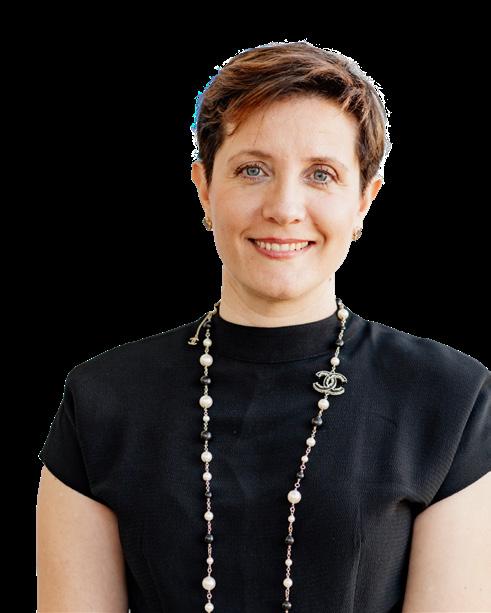
research, technology transfer, entrepreneurial skills, the creation and development of start-ups and small and medium-sized companies, production and clinical development, public-private partnerships, access, but also lean processes and reducing bureaucracy, must be able to interact in a dynamic way.
Our biggest challenge currently, however, is to create an industrial national plan for the development of our strategic sector. The news of a National Plan for Biotechnology in Italy is very recent. It was announced by Minister Adolfo Urso on 31st May this year, at our General Assembly. This is an important recognition of the strategic value of this meta-sector. We hope that it could be an opportunity to unleash the full potential of BioTech in Italy.
HO: How has the BioTech industry changed since the association’s inception?

PP: Over the last 30 years, we have seen the BioTech industry grow exponentially. The main economic data of the firms operating in this sector provide a clear picture of an industry which has withstood the crisis in all its fields of application, and not only in the traditionally countercyclical ones linked to the human health sector.
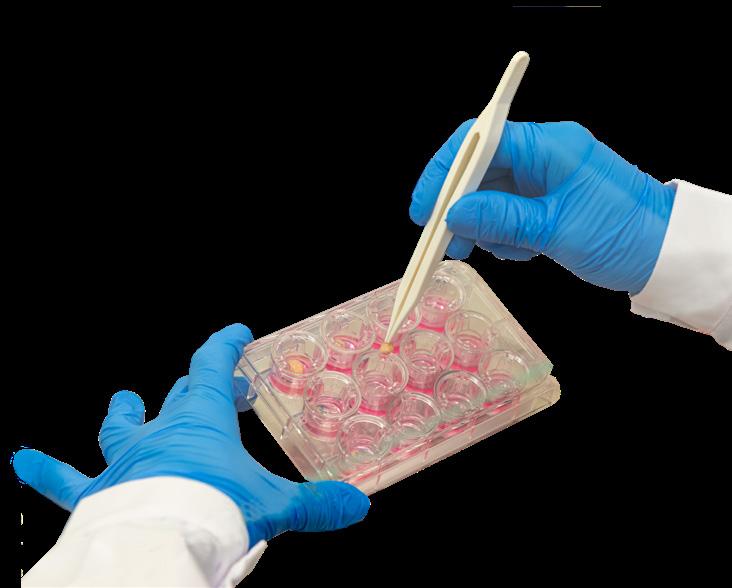
The vibrant ecosystem of small and micro BioTech firms, which complements the stable core of big companies and focuses on the development of new technologies and products, represents an 82 percent share of the total firms.
However, small and micro firms are pivotal in creating
“WE BELIEVE THAT BIOTECH REPRESENTS ONE OF THE GREATEST OPPORTUNITIES FOR THE DEVELOPMENT OF KNOWLEDGE, THE ECONOMY, AND WELL-BEING IN THE COMING DECADES”
- PIERLUIGI PARACCHI, EXECUTIVE COMMITTEE MEMBER OF FEDERCHIMICA ASSOBIOTEC AND CEO OF GENENTA SCIENCE
new jobs. Up to 65 percent of total gross job creation in 2020 can be attributed to the Innovative start-ups, as defined by the Italian policy framework, although their share in total BioTech employment in the same year was only six percent.
With reference to the distribution per field of predominant application, the human healthcare sector –“red BioTech” – still represents the majority share of Italian BioTech companies (48.5 percent). However, the industrial BioTech share of firms – “white Biotech”– increased by 29 percent between 2014 and 2021, whilst agriculture and veterinary BioTech – “green BioTech” – increased by 34.5 percent in the same period.
HO: Can you elaborate on how the COVID-19 pandemic affected the industry?
PP: The recent COVID-19 pandemic has shown how BioTech has been more than a solution to health needs. The sector has represented a key element in the geopolitical and economic strategies of the country. Vaccines, monoclonal antibodies, and diagnostics products are all BioTech solutions, and they were fundamental to overcoming COVID-19.
As reported by the BioInItaly Report 2022, the Italian BioTech industry has withstood the health crisis caused by the COVID-19 pandemic, recording only a five percent
drop in the overall 2020 turnover (less than half of the overall Italian industrial sector). In addition, the nationally controlled BioTech R&D dedicated firms increased by 30 percent in 2020, greatly increasing their turnover, particularly compared to the seven percent growth witnessed in 2019.
HO: What trends are currently transforming the BioTech industry in Italy?

PP: Italy is no different from the rest of the world in the sense that we can see some megatrends in human health, including the development of immunotherapies, advanced therapies and precision medicine, which are the key to the future of medical care.
A further fundamental point is the increasingly widespread awareness that the health of the population is strongly related to the health of our planet. Thus, the winning approach is ‘One Health’, which holistically considers the health of humans, animals and the environment.
The COVID-19 pandemic highlighted that if we want to deal effectively with the health of individuals and populations, we must also think about our planet and the better use and consumption of soil, water and air. Protecting the environment means saving ourselves.
In the pursuit of this objective, BioTech companies

• Promoting technological research and innovation, which it believes is the driving force for the nation’s economic and sustainable growth.
• Recognising, without fear of technological progress, the value of innovation, including the creation of a product.
• Providing sufficient financing for innovation.
• Attracting investment in the Italian BioTech industry, one of the few sectors where financing can yield a high possibility of returns in terms of qualified employment opportunities and the creation of added value.

represent a tool of great importance and a perspective of extreme interest. The field can make an important contribution to sustainable development, as well as an economy that respects the environment and is less dependent on fossil fuels and non-renewable resources.
HO: How do you see Federchimica Assobiotec and the BioTech industry developing over the next five years?
PP: According to the Organisation for Economic Cooperation and Development (OECD) estimates, by 2030, BioTech will have an enormous weight on the world economy: 80 percent of pharmaceutical products, 50 percent of agricultural products, and 35 percent of chemical and industrial products will be BioTech.
The acceleration in the development of BioTech today makes it possible to aim for goals that were once unimaginable, such as therapies for unmet medical needs, personalised therapies, preservation of biodiversity, plants that fight against climate change, and increasing production with less natural resources. We also hope to
work on the development of a production system based on alternative energy sources, bioproducts, and processes with no environmental impact, looking in particular at a circular bioeconomy model.
A recent study commissioned by Ernst & Young (EY) tells us that the European BioTech market will triple between now and 2028, creating value and new opportunities that Italy wants to be in the flow of.


Thus, we believe BioTech represents one of the greatest opportunities for the development of knowledge, the economy, and well-being in the coming decades.
Tel: + 39 02 34565383
assobiotec@federchimica.it
https://assobiotec.federchimica.it/en
As a national association, MTAA is the collective voice representing Australia’s dynamic MedTech industry, providing Australians with life-saving technologies. CEO Ian Burgess discusses MTAA’s mission, and paving the way forward for MedTech in Australia
Writer: Alex Tuck | Project Manager: Krisha Canlas
The world is awakening to the potential of technology streamlining operations across the healthcare sector – whether through making patient management systems more efficient or delivering innovative solutions for worldwide problems.

Australia is well-established as a global leader in this dynamic field, thanks to the country’s thriving research environment that has witnessed the
invention of the world’s first bionic ear, the electronic heart pacemaker, and the leading innovation of spray-on skin for burns victims.
Yet challenges prevail within the industry, and new ground is yet to be covered in order to fully exploit the benefits of MedTech for the advantage of Australia’s health care system.
Under the common goal of delivering better health outcomes to communities across the country,

the Medical Technology Association of Australia (MTAA) is the collective voice unifying the industry in leveraging the power of technology to drive modern, innovative, and reliable health care.


Serving as the peak body representing the industry, MTAA’s initiatives and interests within this wider goal are diverse; from representing MedTech innovators, to improving public and private sector cohesion, and redressing the gender balance across the sector.
Now, MTAA’s role has risen to the fore, proving critical throughout the course of the COVID-19 pandemic, as Australia‘s health care system comes under an unprecedented level of pressure. Aside from navigating this significant challenge, MTAA is championing Australia’s status as a global leader in MedTech, seeking to increase more local manufacturing and R&D as the country transitions towards a value-based health system.
APAC Outlook (AO): Briefly introduce us to Device Technologies, including your location and portfolio of services, number of employees, etc.
Mick Trevaskis, CEO, Device Technologies (MT): Since 1992 Device Technologies has been dedicated to improving patients’ lives through leading-edge technology and services. Successfully supplying healthcare facilities and healthcare professionals with the finest medical solutions for their patients, we continue to grow, with over 200 trusted brands and over 950 highly skilled staff throughout Australia, New Zealand and Asia.
AO: How has the company navigated the COVID-19 pandemic and what impact has this had on your operations?
MT: The COVID-19 pandemic had major impacts on all aspects of our business, such as being called upon to urgently supply ventilators. Elsewhere:
• Our warehouses quickly changed operations, moving to a shift-based model. The two shifts each day were separated by a cleaning period, To ensure continuity of supply to our customers, our warehouses all retain strict COVID-Safe rules, with regular cleaning, mask mandates, and minimal contact with non-essential staff and visitors.
• Within a week of health measures being announced, all employees who could work remotely did so. Device Technologies ensured that all staff were equipped with IT equipment, and security and network upgrades were quickly made to serve a remote workforce.
• Device Technologies was called upon by

government and healthcare organisations to provide support in the form of supplying ventilators at the beginning of the pandemic. Along with importing and deploying over 1,200 ventilators, Device Technologies provides configuration, thorough in-servicing and training, which, along with technical service and routine maintenance, had to be adjusted in line with various hospital visitation rules.
• Some tactics deployed for remote support included:
• Livestream ventilator training for two main ventilator models, as well as neonatal settings.

• 24-hour ventilator support line with direct access to specially trained staff.
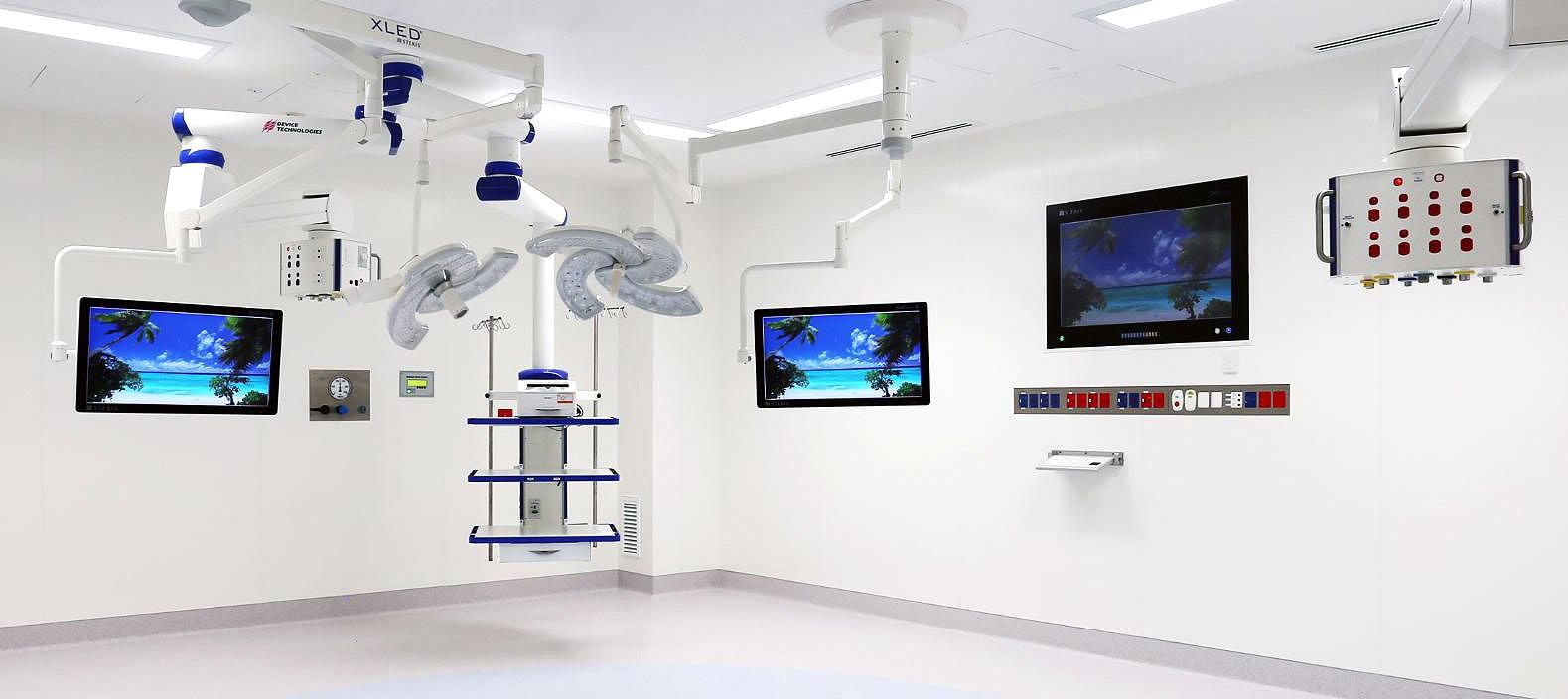
• On-demand virtual training for hospital groups and returning healthcare staff to ensure they could operate ventilators.
• Online Clinical Resource Hub, available to healthcare professionals via login, which housed operating manuals, COVID-19 manufacturer guidelines, operating checklists, educational material and videos.
• Working with state governments around border closures to ensure hospitals continued to receive vital clinical support and technical service.
AO: How did Device Technologies continue to support customers, people and the community during this time?
MT: The pivot to remote workforce. Virtual in-servicing and training for ventilators, followed by other critical care devices, meant that healthcare professionals could complete their training in their own time. The solutions will continue to be offered into the future, as part of our holistic product and service offering.
A large proportion of the workforce was, of course, home-schooling children and juggling all the issues that come with sudden remote working. There was a spirit of camaraderie and support at all levels of the company, with regular virtual team building events. The Executive group conducted quarterly business updates for the entire company, and there was a focus on both communication and inclusion, to ensure everyone felt their importance at Device.
While a significant area of our business, which relies on elective surgery, slowed down, the focus shifted again to education and remote training of surgeons on new products and technologies. Notably, the Robotic Surgery and Digital Education teams enabled a da Vinci surgery first; a surgical case in WA in which the proctoring surgeon was located overseas, and able to participate via livestream, in real time, with little-to-no delay.
AO: Are there any recent or ongoing projects that you would like to highlight?
MT: Device Online, our e-commerce and product catalogue solution, was launched in November 2020. Since then, over 9,000 products have been added to the catalogue, and over 1000 healthcare professionals and facilities have registered for an account, which
they utilise to view products, stock availability and some pricing. This platform continues to expand, with more product portfolios added, and more product information, to become a holistic destination for all Device Technologies product information and education.
Following cancellations of conferences throughout 2020 and again in 2021, our Ophthalmic Diagnostic business needed a solution to reach customers digitally. A campaign was created through LinkedIn and email marketing to ophthalmic customers, communicating a month-long promotion encompassing exclusive packages and discounts. This was the first time Device Technologies had promoted a sales event digitally, and the success and customer feedback ensured that it will be repeated and built upon in years to come, in conjunction with in-person conferences when they return.
AO: How integral is the concept of innovation to Device Technologies and how do you incorporate this within your service offering?
MT: Innovation is integral to the success of Device Technologies, on all levels, from employee satisfaction and engagement to clinical research and digital solutions. The entrepreneurial culture of the company stems from its grassroots beginnings, and all ideas are welcomed.
Device Technologies is renowned for its holistic offering, providing not only products, but ongoing clinical support and technical service solutions.

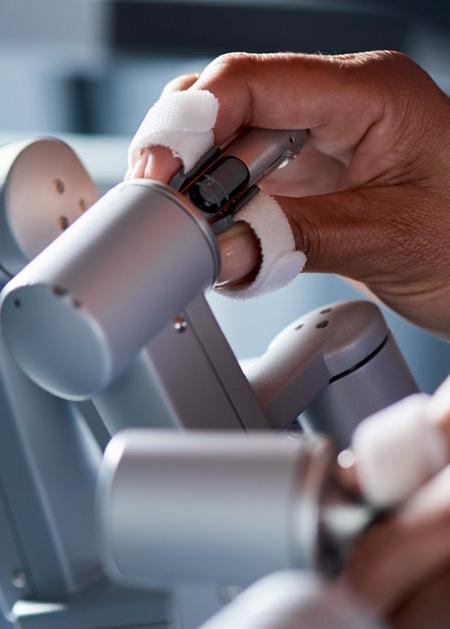
Another key offering is digital education. Our dedicated team specialises in filming surgical cases within operating theatres, and live-streaming these cases around the world, often in conjunction with industry conferences or training webinars.
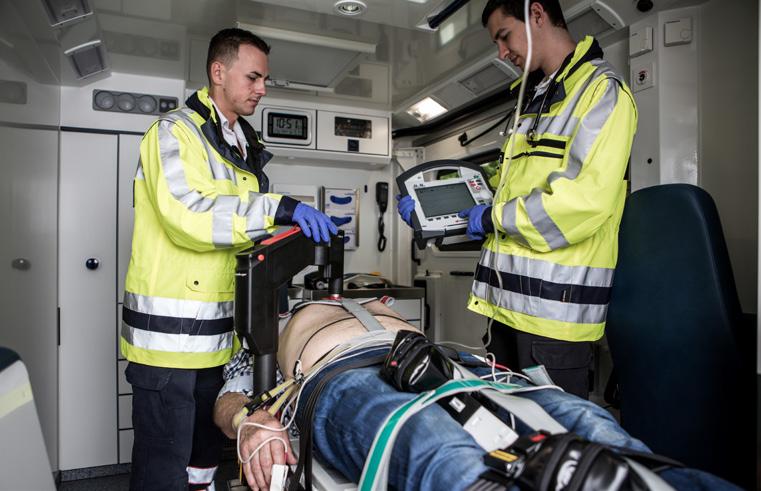
Device Online, our e-commerce solution, has been built from scratch to enable healthcare professionals the ability to browse the Device product catalogue. Key account holders have the ability to request quotes as well as place orders. The convenient portal also houses product information in the form of downloadable flyers, educational videos and even operating instructions.
Device Technologies is committed to partnering with local key opinion leaders including leading surgeons and hospital executives. A move towards local manufacturing is also allowing us to collaborate with surgeons to develop innovative solutions to meet their needs.
Currently, Device Technologies is sponsoring an Australian-led randomised, controlled, comparative, multicentre study evaluating JointRep and Microfracture in Repair of Focal Articular Cartilage Lesions on the Femoral Condyle or Trochlea.


AO: Could you outline Device Technologies’ growth strategy for the years ahead?
MT: Our growth strategy for FY21-24 is currently in progress, centred around our promise to enable superior outcomes for patients by providing them with access to the best medical technology available worldwide. Over the next three years our key strategic pillars are: Organic Business Growth in Australia and New Zealand, Asia Expansion, Organisational Excellence and Strategic Acquisitions. These pillars are led by our values: Innovation; Ownership; Collaboration and Practising Good Business, and enabled by our continued focus on leveraging data, digital solutions, our people, providing education and delivering exceptional customer experience.
AO: Finally, do you have any further goals for diversification, or key priorities for the near future?
MT: Our continued focus on data and digital innovation has enabled collaboration with leading suppliers around the globe in the digital health space. Currently we’re focusing on technology that enables remote diagnosis
and monitoring. These devices and complementary technology are designed to enhance efficiency and accuracy for healthcare provide comfort and convenience for patients.
Wherever possible, we’re helping to initiate, sponsor and support Australian-led clinical studies, whether in research institutes or by practicing academic surgeons. Currently we’re supporting the above mentioned JointRep and Microfracture clinical trial, for which the Principal Investigator is Australian Surgeon and past President of the Australian Knee Society, Dr Bruce Caldwell. Participants in this trial are being enrolled by surgeons across Australia, New Zealand and Canada.
We are launching a portfolio of Australian manufactured products in 2022, which will encompass a range of specialties including ophthalmic, orthopaedic and infection prevention devices and medical products. This partnership with onshore manufacturers will enable us to deliver consistency, reliability and quality on particular product lines that measure the same products currently imported from overseas.

that medical technology will be valued as a key driver of a healthier Australia.
HO: Since inception, how has the MTAA developed and progressed in terms of its key objectives and the messages it tries to get across?
IB: Since its inception, membership of the MTAA has grown steadily and our influence over health policy, funding and regulation in Australia has increased.
Healthcare Outlook (HO): Can you tell us about MTAA, and what role it plays in Australia’s MedTech industry?

Ian Burgess, CEO (IB): The Medical Technology Association of Australia (MTAA) was created as the national association representing manufacturers and suppliers of medical technology used in the diagnosis, prevention, treatment and management of disease and disability.
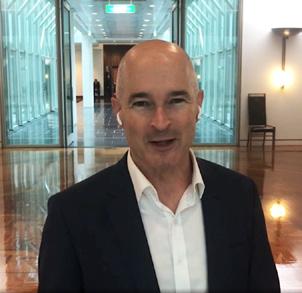
Our members manufacture and supply a diverse range of medical technology, ranging from syringes and wound dressings, through to high technology implanted devices such as pacemakers, defibrillators, hip and other orthopaedic implants. MTAA members also manufacture hospital and diagnostic imaging equipment including ultrasounds and magnetic resonance imaging machines.
As well as producing and distributing medical devices and technologies, MTAA member companies also play a vital role in providing healthcare professionals with essential education and training to ensure safe and effective use of medical technology.
Our members include large, established global companies as well as local start-ups and SMEs and currently total 123 companies across Australia.
MTAA’s mission is to champion medical technology for a healthier Australia. Our vision is
We have developed close relationships with governments and worked closely with Ministers and parliamentarians in relevant portfolios, including health and industry. We have represented the interests of the MedTech industry to government in consultations, reviews, and inquiries, including developing an agreement in 2017 on the reform of funding for medical devices in the private hospital sector.
Over this time, MTAA has developed productive relationships with other health peak bodies, such as the Australian Medical Association, the Australian Private Hospitals Association, and the Consumers Health Forum of Australia. On many issues of mutual concern, MTAA has worked collaboratively with these organisations to develop joint positions on key health issues and present a united health sector voice to government.

MTAA has also been working to address broader MedTech industry issues such as the underrepresentation of women.
In 2015, the MTAA Board launched the Women in MedTech initiative, to lead the debate and promote the benefits of gender diversity in the workplace and within the MedTech Industry. The Board established a Women in MedTech Committee to support the mission of the organisation, industry and wider community.
The Women in MedTech (WiMT) mission aims to proactively support gender diversity within the MedTech industry, effectively supporting women to unlock their full potential.
IB: MedTech is one of the most advanced and dynamic manufacturing sectors in Australia and has the potential to provide substantial health gains and highly skilled employment and export opportunities for Australia.
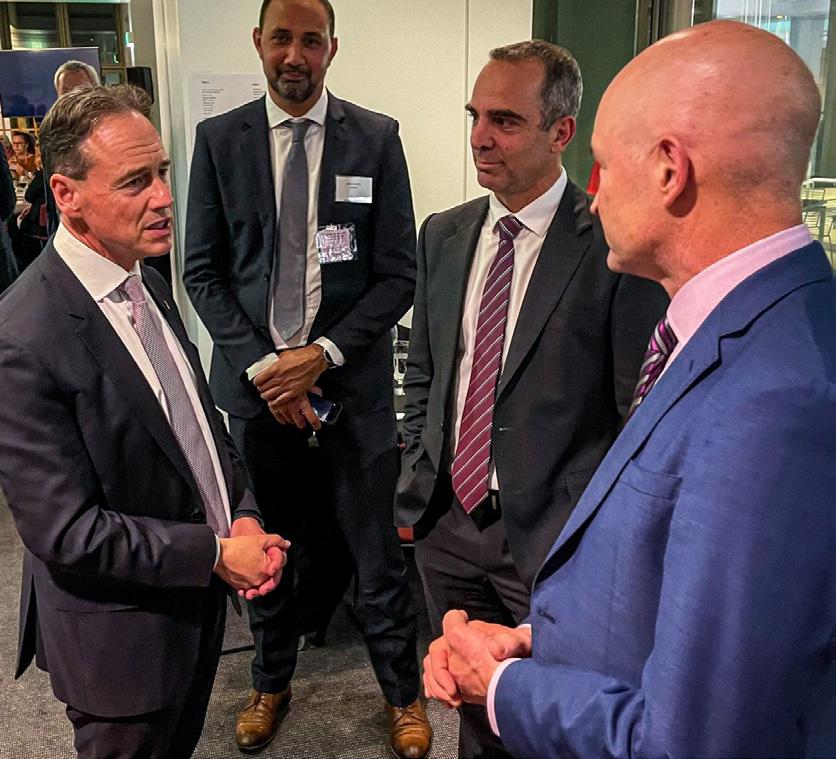
Despite our small population, Australia is a global force in MedTech. With a total market for medical devices in Australia over US$4.9 billion[1], Australia is ranked at 13th in terms of total market value worldwide, according to the Worldwide Medical Device Factbook.[2]
The MedTech industry in Australia is also a substantial employer. In 2014, it was estimated the industry employs approximately 19,000 people, excluding those working in digital health. Overall, 78 percent of all MedTech employees have graduated with a university degree, demonstrating the highly educated nature of the workforce. Of these employees, 52 percent earned an undergraduate degree, and a further 25 percent completed a postgraduate degree. [3]
Australia has a proud history of innovation and
commercial success in this industry, with companies such as Prism Surgical, Cochlear Australia and ResMed, exporting Australian innovation in medical devices to the world. It is exciting to be part of this fast-moving industry sector which harnesses the talents of Australia’s world class scientists, clinicians, and medical researchers to solve the health problems of today and tomorrow.
Over the past two years of the COVID-19 pandemic, the MedTech sector has played a leadership role in coordinating supply of medical devices and equipment and working with government to meet challenges caused by global supply chain disruption. The sector has played a key role in quantifying existing stock of crucial medical devices, ensuring additional supply in the context of global supply constraints, and ramping up domestic manufacturing to address gaps in the market.
Two standout examples of industry innovation during the COVID-19 pandemic, are the consortium formed by Grey Innovation (with the support of the Federal and Victorian state governments) to

produce ventilators domestically and the move by 3D Meditech to pivot their manufacturing facilities to 3D print the swabs needed for COVID-19 testing.
It has been extremely rewarding for the MTAA to be able to support companies on the front line of our health system to ensure the supply of equipment and devices needed to diagnose, treat, and support patients during the course of the pandemic.


Ultimately, the fundamental purpose of the MedTech industry is all about patients – savings lives, extending lives and providing people a better quality of life.

HO: On the flip side, what are its biggest challenges?
IB: The fragmentation of Australia’s health system creates ongoing challenges for the MedTech industry. Responsibility for the delivery of health care in Australia is split between the Commonwealth and State/Territory governments which means that there is often duplication of processes and systems. There are also inconsistencies between the public and private health sectors which adds an additional level of complexity for companies operating across both domains.
This year, a major challenge for the MedTech industry has been the ongoing negotiations with government over changes to the Prostheses List, the funding mechanism for devices in the private hospital system. This has involved MTAA and our members working hard to combat the efforts of private health insurers to exert more power over device funding and undermine clinical freedom and patient choice.
The negotiation process over the future of the Prostheses List has been an important focus of our industry over the past 12 months, with member companies engaging on multiple fronts with policymakers to ensure positive reforms using direct advocacy, collaboration, and strategic communications.
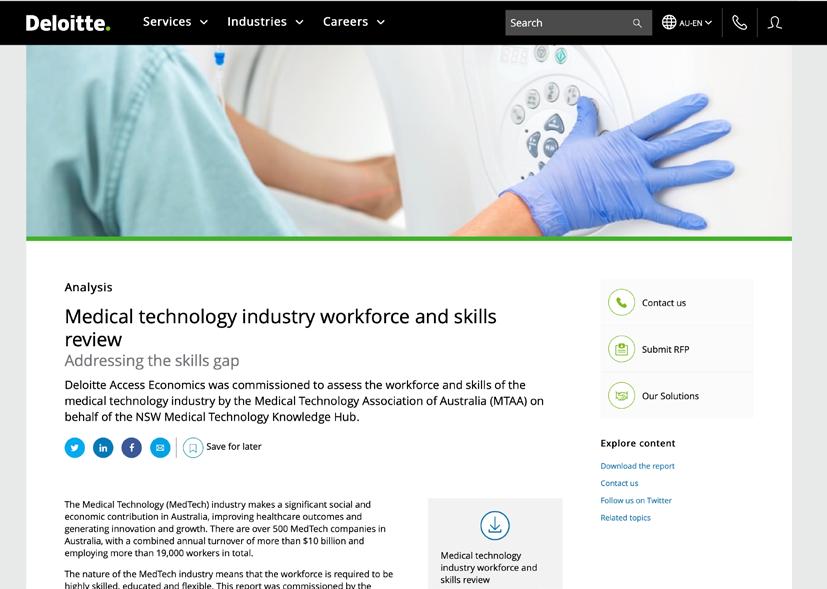
The COVID-19 pandemic has also presented a number of challenges, with far-reaching social, environmental and economic impacts. Our health system has been put under pressure with increased demands on hospitals and additional pressures on an already stressed health workforce. Cancellations of elective surgery in many states have had negative impacts on patients waiting for procedures to treat their pain and disability. They have also impacted MTAA member companies which have faced a substantial reduction in demand for products and services over this period, leading to cuts in revenue up to 90 percent for some companies.
Freight costs have dramatically increased over the course of the pandemic, in some cases by up to 800 percent, adding to the enormous pressure on our industry. Companies have had to adjust their operations to enable employees to work from home and implement split shifts for manufacturing or warehousing workforces. Limitations on company representatives entering hospitals has also restricted the capacity of companies to support clinicians and nurses before, during and after operations.
While all areas of the health system have been
Since 1992 Device Technologies has been dedicated to improving patients’ lives through leading-edge medical technology and services. Successfully supplying hospitals and healthcare professionals with the finest medical solutions for their patients, Device Technologies represents leading global suppliers and manufacturers across all areas of healthcare.


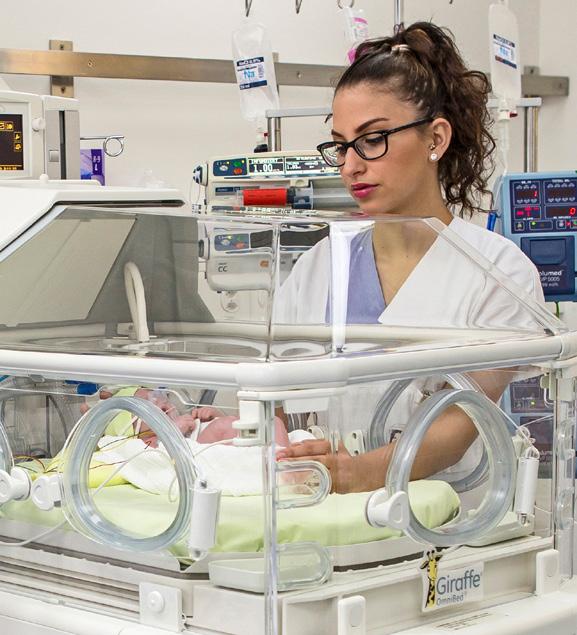




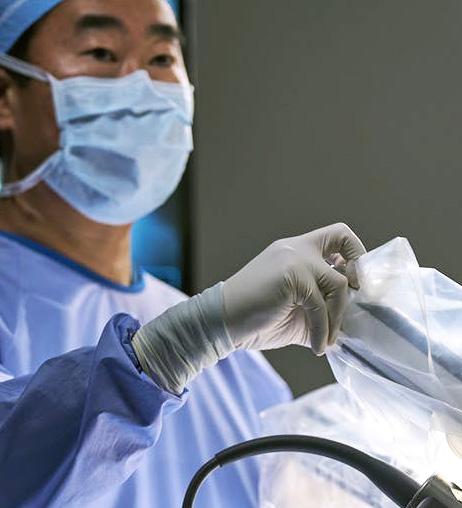
Device Technologies continues to grow and innovate, with over 200 trusted brands and over 950 highly skilled staff throughout Australia, New Zealand and Asia.
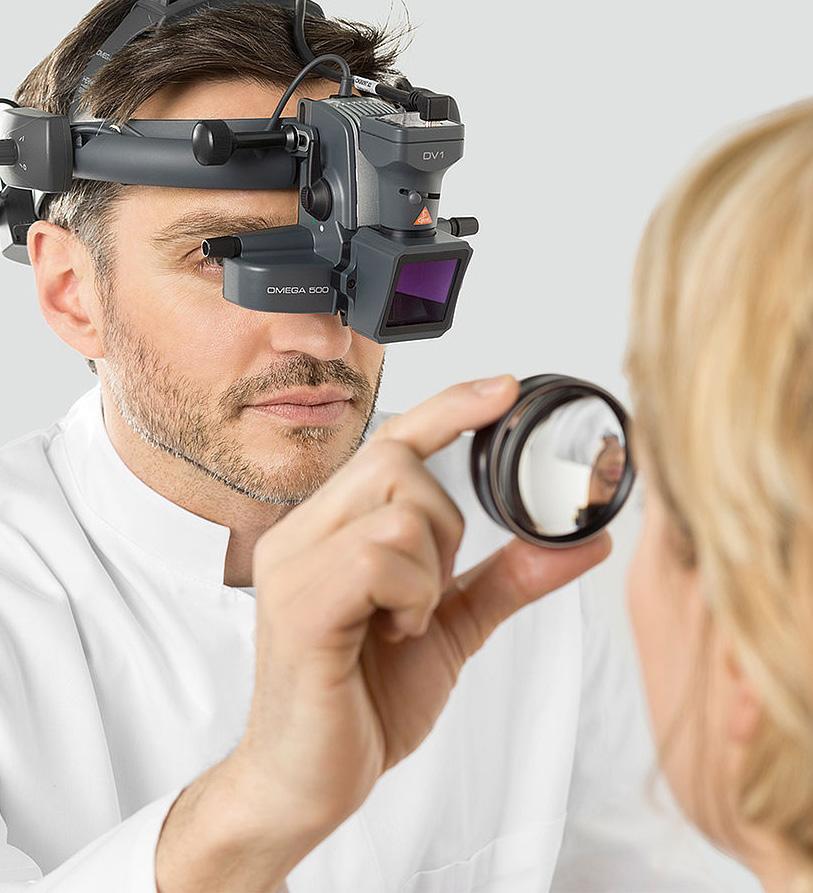

To find out more, head to device.com.au
These products are not available for purchase by the general public.
adversely impacted by COVID-19, the pandemic has had a particularly serious impact on companies involved in clinical trials, as many of these have been delayed or put on hold, and on start-up companies which do not have the capacity to absorb market downturns.

Despite these multiple challenges, MTAA member companies have continued to support Australia’s COVID-19 response and the ongoing functioning of other areas of the health system during the course of the pandemic.
HO: What trends are currently transforming the healthcare sector across Australia, and how is the MTAA responding to them?
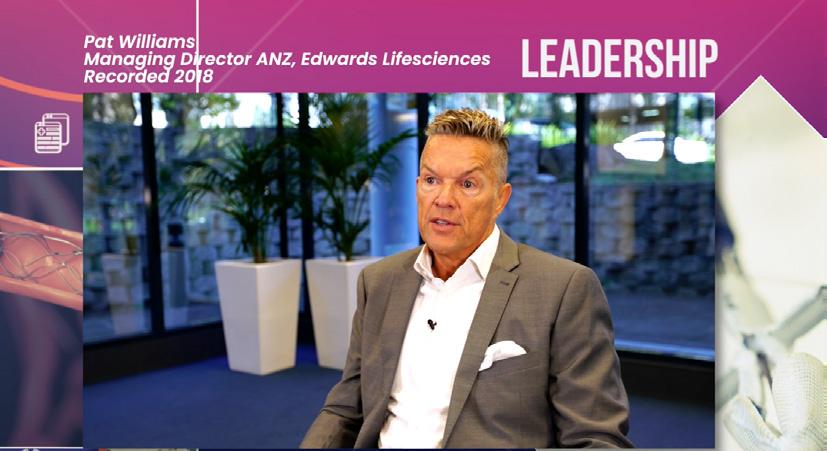
IB: In Australia, as in many developed countries, the health system is under pressure due to the ageing of our population and the resulting increase in chronic disease and disability. This is placing increased demand for health services and highlights the importance of focusing on prevention and management to increase quality of life.
working with members to develop strategies to promote the value of evidence-based technologies to reduce pain and disability and save costs elsewhere in the system.
Innovations in technology will provide exciting opportunities for improving treatments as well as challenges to Australia’s regulatory and funding systems. For example, the increased use of robotic technologies throughout the health system, including in surgery, aged care, and pharmacy, will require the development of appropriate regulations and practices to ensure quality, safety and accountability standards are maintained.
Along with the move towards a value-based health system, there is an increased focus on consumer input in health policies, programmes, and funding decisions. This is occurring both at the services delivery level, for example through increased consumer representation on hospital boards and committees, as well as at the government level via consultation processes and the inclusion of consumer organisations on relevant committees and reviews.
Australia is also exploring ways to move from paying for services to a more value-based approach to health care to divert resources into the services or strategies which deliver greatest value.
MTAA is closely monitoring this debate and
This highlights the importance for MTAA of increased engagement between the MedTech industry and consumer organisations to support dialogue about key MedTech issues and ensure mutual understanding of each industry’s role in promoting a high quality and good value health system for Australia’s future.


HO: Have you got any projects in the pipeline you wish to highlight?
IB: One important current focus for MTAA is to increase Australia’s ability to attract clinical trials. Australia has a number of benefits as a site for clinical trials: a high-quality health system; world class clinicians and medical researchers; and a record of ‘early adoption’ of medical technology by the Australian community. However, there are some regulatory and administrative barriers which prevent Australia from becoming a preferred destination for international companies looking to run clinical trials. As a result, Australia is missing out on the health and economic advantages that come from supporting this important sector of the health system.
MTAA is currently collaborating with Medicines Australia and AusBioTech on the Research and Development Task Force which aims to offer a unique industry perspective to stakeholders across Federal and State Governments as well as the broader health and research and development sector.

Key goals for this taskforce are to promote the federal government’s ‘One-Stop-Shop’ and ‘Front Door’ initiatives and to support a national, interconnected, rapid and streamlined approvals platform for clinical trials.
Improving Australia’s system of Health Technology Assessment (HTA) is another MTAA priority, in order to streamline current processes across sectors and jurisdictions to ensure Australians can access evidence-based innovative health technologies and treatments.


Currently, HTA in Australia is fragmented across jurisdictions and sectors. For example, drugs and vaccines are reviewed by one agency (Pharmaceutical Benefits Advisory Committee), whilst procedures, tests and devices are reviewed by a different agency (Medical Services Advisory Committee). This creates inconsistencies between these two areas and a lack of clarity for companies, particularly those involved in the development of co-dependent and hybrid technologies.
A key focus for the MTAA is to promote changes to HTA which streamline current processes and take into account the unique characteristics of medical technology. Another priority will be ensuring we implement the main learnings from the COVID-19 pandemic, including the need to protect Australia’s sovereign capability through more local manufacturing and R&D.
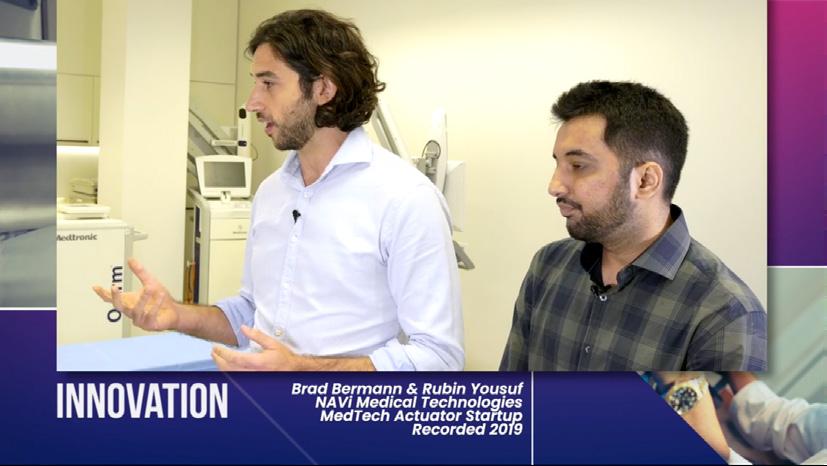
HO: How do you see the MTAA developing over the next five years?
IB: Over the next five years the MTAA will continue to advocate for regulatory and reimbursement reform to allow for better innovation and commercialisation and to make Australia a world leader in MedTech innovation. MTAA will also continue our work to promote greater harmonisation of regulatory and reimbursement with other jurisdictions to reduce the administrative burden on companies and support access to new technologies for Australian consumers.
MTAA believes that this requires a structure around government-industry engagement to ensure early collaboration on emerging health challenges and to avoid preventable problems. By working closely with government and other stakeholders, the MedTech sector will strengthen Australia’s capacity to respond to further health threats and to maximise our potential as a global MedTech leader.
HEALTHCARE OUTLOOK is a quarterly digital publication and media brand showcasing the latest innovations, industry insights and corporate stories from across the international healthcare sector. Its world-class team collaborates with the biggest and most exciting brands to craft engaging and authoritative content for a global audience of industry players.
As healthcare organisations worldwide confront unprecedented change, embracing technological innovations and incorporating critical environmental sustainability agendas, now more than ever is the time to showcase the strides being taken in this dynamic sector.



The expertise of our in-house design and production teams ensures delivery to the highest standards, as we look to promote the latest in engaging news, industry trends and success stories from the length and breadth of the global healthcare sector.
As a multi-channel brand, Healthcare Outlook reaches an international audience through various platforms, with exclusive content distributed through our website, online magazine, social media channels, and bi-weekly newsletter.
Through this compelling venture, we intend to foreground the movers and shakers of the industry. To participate as a featured company and join us in this exciting endeavour, contact one of our Project Managers or our Managing Director, James Mitchell, today.




Bhavna Patel, CEO of the famed Groote Schuur Hospital, advocates strengthening the healthcare system and developing a renewed strategy to meet the needs of patients


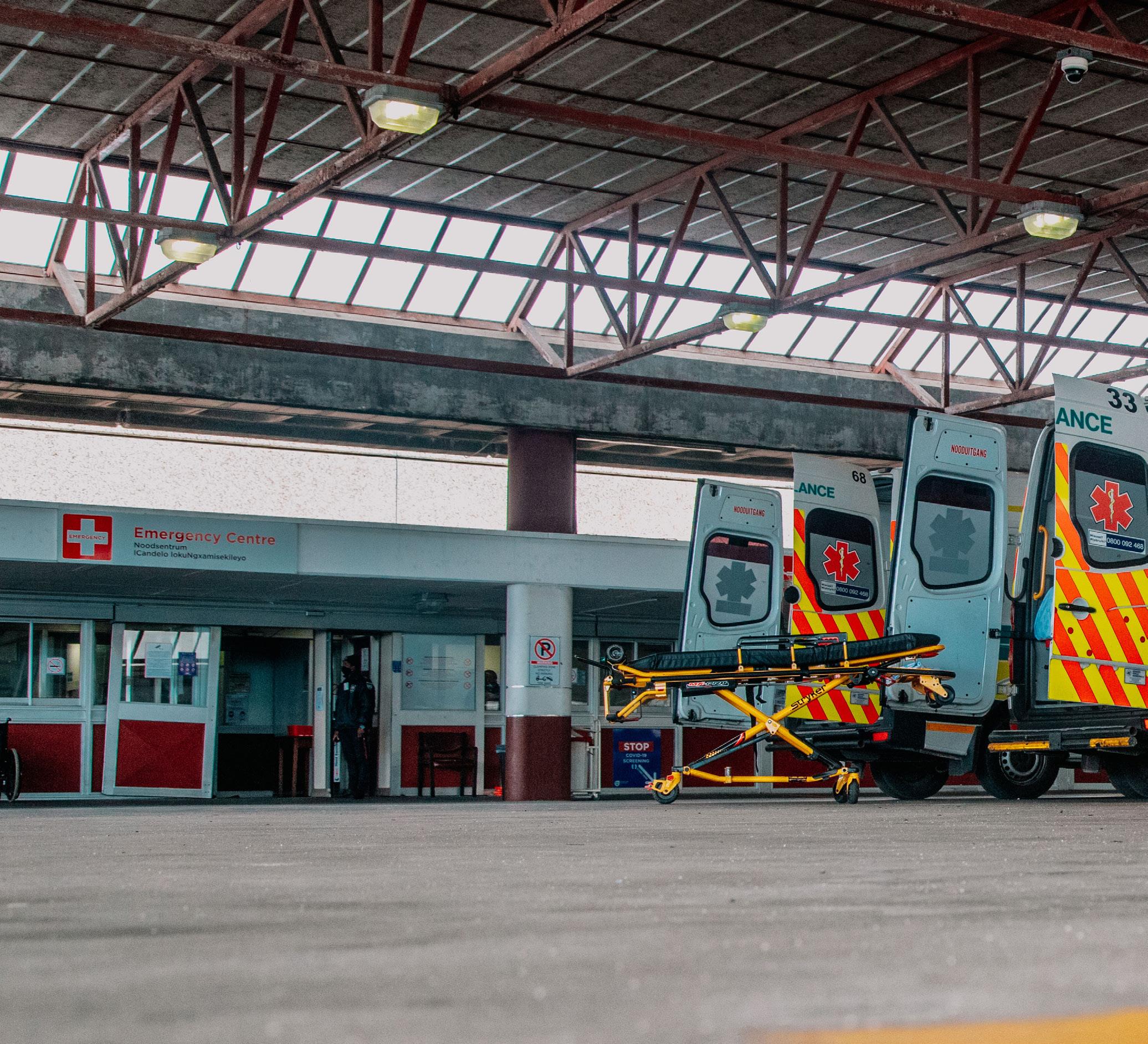 Writer: Jack Salter | Project Manager: Thomas Arnold
Writer: Jack Salter | Project Manager: Thomas Arnold
In December 1967, local South African cardiac surgeon Christiaan Barnard became an international superstar virtually overnight when he performed the world’s first successful human heart transplant.
It was a daring and ground-breaking operation in which Barnard transplanted the heart of a fatally injured 25-year-old, Denise Darvall, into Lewis Washkansky, 53, who was suffering from heart complications brought about primarily by his diabetes.
A landmark achievement that received immense public attention worldwide and remains the most publicised event in medical history, it was carried out by Barnard in the Charles Saint Theatre at Groote Schuur Hospital (GSH).
“GSH boasts a proud 85-year history of service
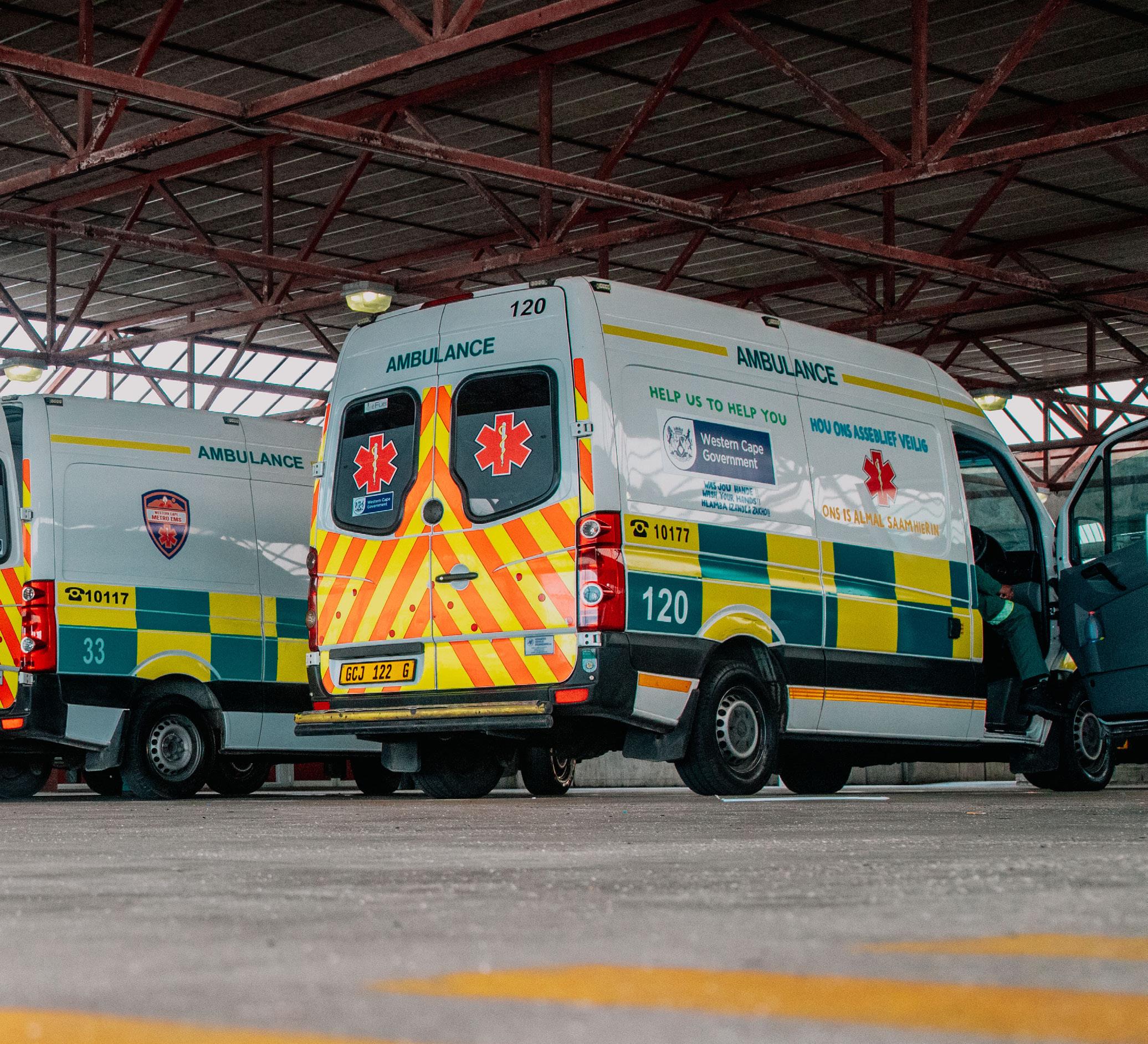
excellence, gaining global fame following the first successful human heart transplant by Christiaan Barnard,” begins Bhavna Patel, CEO of GSH since 2013.
Today, tens of thousands of grateful individuals have received this life-saving surgery; moreover, the majority of heart transplant patients have gone on to enjoy life for many years after the operation, including its subsequent medical treatment.
“The hospital continues to maintain such innovation, with many firsts both within South Africa (SA) and internationally.”
GSH is a tertiary and quaternary health service facility opened on 31st January 1938, whose mission is to provide outstanding public healthcare to the population of SA’s Western Cape province and beyond.
Makana Healthcare, commonly known as Makana, was founded in 1996 by CEO, Arthur Davids. First established as a technology company, Makana focuses on government inventory systems, payment systems and management data analysis, with the healthcare division later being added to the group. The infusion of technology and healthcare was a natural and appropriate synergy as it presented a platform to introduce the company’s experience, innovation, ideas, as well as leadership expertise and knowledge of client requirements.
Makana is a proudly Level-1 Broad-Based Black Economic Empowerment (B-BBEE) company. It is also committed to the supply and sale of high-quality medical equipment, consumables and strategic medical consulting services. Associated with Makana Technologies and Solutions, the

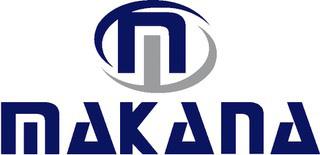
company subscribes to strong principles of quality, excellence and internationally recognised practices. To this end, it is, and has always been, Makana’s widely-held and succinct axiom that ‘going the extra mile’ and understanding client needs is the blueprint for success.

Makana is excited and optimistic about the future as new and groundbreaking technology is rapidly making great strides in the healthcare sector, contributing to more effective and efficient models in healthcare.

The importance of a hospital’s information analysis cannot be overlooked. It lies at the very core of any hospital’s efficient operation, and it speaks to spend analysis, procurement, patient information, and more. Therefore, in the future, information will become an asset on the company balance sheet, as it provides you with answers to questions you didn’t know you
had and contributes significantly to management decisions!
Current world events have amplified the disparity and critical importance of healthcare, professional medical advice, quality products and services. Almost everybody has formed their own definition of quality. Because quality means different things to different people, the topic has become confusing – even in business - and these multiple definitions often make quality difficult to achieve. However, quality, simply stated, is conforming to requirements.
Davids details that, “I am always thrilled to see the passion for innovation being embraced. It’s the hallmark of great leadership and allows people to contribute to new ideas.
“Whilst innovation deserves lauding, its true meaning lies not only in
the implementation thereof, but in assigning a cost-saving strategy to the implementation. An example includes a recent application which saw a client not only investing in a new product, but also saving an excess of ZAR720,000 per annum (taking into account repairs, price of non-conformance, quality, etc). Consequently, innovations in measurement and cost-saving strategy is the vehicle used to evaluate and plan management action.”
Whilst taking the initiative can sometimes lead to unwanted and misaligned outcomes, demonstrating initiative with sufficient knowledge of client needs is of critical importance, because it demonstrates a certain proactiveness. Understanding that there’s much to learn about the process, can at times be more important than the outcome itself. Thus, at Makana, there have been many situations where the team has
demonstrated initiative, and saved their clients valuable time and money.
Makana attaches great value to focus, as focus is believed to be at the core of excellence. The company has an ethos that when your product offering embraces excellence, then you’ve learnt how to focus. Makana subsequently focuses on the needs of its clients, as it shares their vision. With quality, innovation and excellence being central qualities and intrinsic to the DNA of Makana, it strives to always ensure the best. The company is committed to making a positive contribution to the healthcare discipline, economics and ecosystem – understanding the challenges faced. Such dedications provide the company with an environment to uphold high standards and to pursue an attitude of a continuous journey to discovery. Perfection, although
impossible, at best serves as an incubator of excellence and illustrates Makana’s determination to always deliver its sincerest intentions. “Where excellence abounds, then effective leadership gives it the fortitude to do so,” says Davids.
Humanity is the company’s currency, as it is perceived as the universal canvas of life to paint and co-author a chapter and lasting image to serve and lead. Makana’s mission is to convey its sincerest wishes to its suppliers, manufacturers, partners and clients.
It is comments and feedback like this that underscore Makana’s values.
From: Hanover Park Community Hospital:
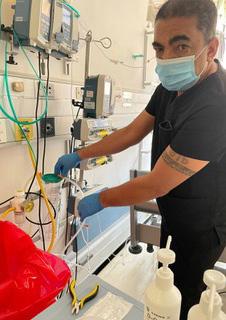
Subject: note of appreciation
“Good day Arthur, I would like to commend you and your company, Makana Healthcare on assisting us at Hanover Park Community Health Centre (CHC) in our time of need. I appreciate the fact that you had gone the extra mile to access what we had needed on a weekend when everyone is closed. Even though your company was closed, you sourced what we needed and brought it to us personally, on a Sunday morning. It is good to know that there are people like yourself who would go the extra mile for our community and primary healthcare settings. Thanking you once again”

The healthcare division is led by CEO, Arthur Davids, with Dr Junaid Akoojee as the Medical Director. Makana enjoys award-winning and international accreditation in
Makana enjoys award-winning and international accreditation in leadership, quality and business excellence. The company was awarded the Gold and Platinum award in New York and Paris respectively. The International Quality

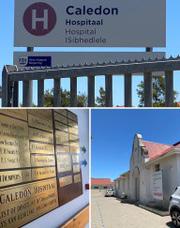

Summit Award is recognised as one of the most prestigious honours in business excellence. The company’s leadership also featured in South Africa’s top 47 leaders in previous years, showcasing the country’s leadership expertise – supported by the University of Cape Town’s (UCT) Graduate School of Business, The Afrikaanse Handelsinstituut, Businesswoman’s Association of S.A. (BWSA) and The Institute of Directors (IoD).
Davids further states: “We need to ensure, protect and grow the leadership DNA in our country. It’s important for us to continuously evolve the critical reservoir of leaders in order for us to pass on the baton. If we can sustain that growth of new leaders, then I believe we have fulfilled an important discipline of leadership. Every leader must have a vision, be able to articulate that vision
and then lead others to meet it. “Reach out to us. We will be glad to discuss your needs and who knows, you might even get inspired!”
Davids describes himself more of a hybrid between a visionary and situational leader. He adds, “It’s vital
to keep your vision in focus, bearing in mind that every situation, institution and client is different. I’m not a ‘celebrity’ leader concerned with ‘front page’ headlines or glitz and glamour. I prefer to lead from the front, getting my hands ‘dirty’ – old-fashioned hard work! My favourite position is in the trenches with my team. I’ve unashamedly loaded trailers, boxes and trucks. You cannot lead anybody further than you’ve gone yourself. More importantly, clients appreciate the fact that you are personally involved and lead from the front. One day I’m negotiating, the next day I’m in the trenches and next I take up my position in the boardroom. At
the end I know I can autograph work with excellence. Sadly, you have leaders that only wait for fame. I don’t promise, waffle or talk, I do!”
Dr. Akoojee, the Chief Medical Officer, is a leading Medical and Healthcare Professional with experience in primary healthcare, emergency procedures and protocols, managing healthcare centres, community health programmes, as well as promoting and improving health outcomes with the use of technology. Previously, Dr Akoojee has also worked with many community-based diabetic awareness programmes with leading pharmaceutical companies.
Makana’s views and role in the healthcare ecosystem:
Makana carefully evaluates its service experience and how to sell to its clients effectively – keeping the patient central. Preferring to see its offering as quality and affordable, rather than based on transactional value and the credit limit of its clients, Makana understands it is about achieving the best outcomes at the lowest costs. A starting point for this would be a shift from over-aggressive volume and profitability of services provided. ‘Profit greed’ ultimately has an adverse effect on your professional reputation – often to the detriment of the patient and healthcare budgetary constraints.
Hence why Makana believes that if it can contribute to improved patient outcomes and add valuedriven products, then it can sustain and grow market share. Similarly, if it can also improve the efficiency of providing excellent service and products, it can enter any contracting discussion from a position of strength. The providers adding the most value will be the most competitive.

makanahealthcare.co.za

Kahlil Gibran in his poem titled “The river cannot go back”, describes the arduous flow of a river. Against the backdrop of this striking poem, the ‘Groote Schuur river’ started its path 85 years ago. Like the river, the hospital cannot flow back but only forge ahead, despite various fears and anxieties - even during the recent COVID-19 pandemic.
The hospital maintained its course – thanks to the resilient leadership of Dr Patel, her executive team, medical managers and staff. Walking the aisles of the hospital and meeting the various leaders makes you realise that the institution is an incubator of excellence and as a leading public hospital on the continent, it is a leading epicentre of innovation with many worldwide-and-continent first procedures. “I want to pass on warm and sincere congratulations to Dr Patel and her team for their remarkable achievements.”
Arthur Davids (CEO)
It also promotes excellence in teaching and research, as the primary teaching platform for both undergraduate and postgraduate students at the University of Cape Town (UCT), ranked according to several internationally compiled and authoritative indexes as the best university on the African continent and amongst the best 200 universities across the world.
Located in the Observatory, just a few minutes away from the main UCT campus, GSH has a symbiotic relationship with the university, where Barnard himself qualified in medicine in 1946 before establishing a successful open-heart surgery programme at the hospital, and lays claim to international renown beyond the historic feat he achieved in 1967.
This is to say that GSH is an internationally celebrated research institution, highly regarded for its trauma unit, anaesthesiology and internal medicine departments. It also draws many visiting medical students, residents and specialists every year, who come to the hospital to gain further experience in the various fields of endeavour in which it engages.
GSH and UCT are two highly prominent buildings in Cape Town, which is not only home to the friendly, fun-loving and laid-back people that inhabit it, but also some of the

Barnard was born to a Dutch Reformed Church minister, and grew up in the Cape province of the Union of South Africa, as SA was then known.
At a young age Barnard lost one of his four brothers to heart disease, which could well have contributed to his choice to study medicine at UCT.
The famous surgeon obtained an MBChB in 1945 and completed his internship and residency at GSH. After his studies, he worked as a GP in the small, rural town of Ceres before returning to Cape Town in 1951. Barnard completed both a master’s degree and a doctorate in medicine, and by 1956 had proved himself enough to earn a two-year scholarship to study cardiothoracic surgery at the University of Minnesota.
Upon his return to SA, the burgeoning superstar was appointed the cardiothoracic surgeon at GSH, as well as becoming a full-time lecturer and the Director of Surgical Research at UCT. Barnard proved that South African skill and talent is among the best in the world, and that the country has the resources to be a world leader in the field of medicine.
world’s most beautiful scenery.
The hospital itself proudly sits on the picturesque slopes of Devil’s Peak at the foot of Table Mountain, an eminent landmark overlooking SA’s most famous city.

Groote Schuur, Dutch for “great barn”, is named after the settler farm on which the hospital and its neo-classically styled buildings now stand, against the backdrop of Cape Town’s iconic mountain range.
Clinical, teaching and research activities are provided on the estate of the hospital by GSH, who attends to around half a million outpatients every year.
There are also just over 1,000 inpatient beds to cope with around 75,000 admissions annually, with 25 theatres performing 23,000 operations on a yearly basis.
“We also have a Level 1 trauma centre attending to 1,200 major trauma cases per month, as well as a medical emergency centre treating 4,300 patients monthly,” adds Patel.
GSH’s patients are mainly from the Western Cape province of SA, but due to its specialised services, patients from other provinces are also referred to the hospital.
Many of these patients live in poor socio-economic conditions that fail to support the promotion of health, and are unable to afford healthcare, instead relying on the availability of public services.

Could you tell us a bit about Lithendo Projects (Lithendo), your team, services, history and evolution?
Lithendo is an electrical construction company established in 2011. Originally formed as Lithendo Consulting Pty Ltd, it evolved into Lithendo Projects in response to market demand. While the company started with only one employee in 2015 when fulltime operations began, it is now a substantial contributor towards the reduction of unemployment within the Western Cape and South Africa. Today, Lithendo employs 22 highly skilled and experienced employees with a passion for delivering unmatched service.


We support our customers by providing them with experienced technical skills to manage risks associated with various electrical equipment within

their infrastructure portfolio. Lithendo specialises mainly in medium-voltage systems, installation, and maintenance. We have experience and expertise in transformer maintenance and switchgear alongside medium-voltage cable installations and maintenance. Lithendo possesses skills in lowvoltage systems, such as installation, maintenance, and certification. We are experts in standby power systems which include expertise in Uninterruptible Power Systems (UPS), and Standby Generators. We also have expertise in hazardous installations maintenance and certification.
When did Lithendo’s journey with Groote Schuur Hospital begin and how has it developed?
Our journey with Groote Schuur Hospital began in June 2019 when we responded
to a medium-voltage cable failure. The team at Lithendo executed the work with diligence, and when we were ready to put the power through the cable, we went beyond our scope of service and inspected the switchgear that was to be used for switching and tested the transformer that was downstream of the damaged cable. We found faults with both pieces of equipment. The switchgear had last been serviced in 2006, hence, we advised the client that it was unsafe to operate the switch at that present time.
Similarly, because the transformer had been off for a long time due to the same cable fault when tested, it showed high levels of moisture content, which meant it was in an unsafe condition and needed immediate attention. After advising the customer of these findings and the implications of not addressing them, the
piece of advice, and going the extra mile appealed to the customer. Relations have therefore grown since, and Lithendo has continued to provide reliable service to Groote Schuur Hospital.

Could you explain how the company works with and benefits Groote Schuur Hospital and vice versa?

Lithendo offers the customer a dependable and reliable service backed by sound technical knowledge and experience in healthcare facilities and electrical infrastructure. In return, this is translated to consistent service to the public, exactly what is needed by the communities the hospital supports. One of our main value-adds is the ability to be dependable in every respect, coupled with an unmatched operational discipline which appeals to every individual we support at the hospital.

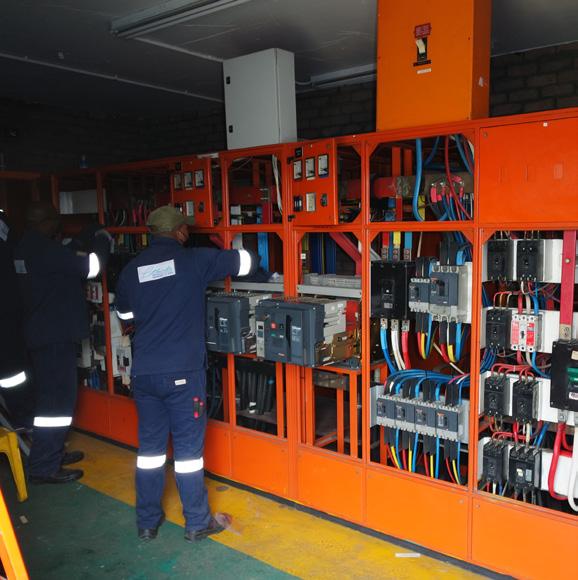


What are the company’s key priorities for the coming year - do you have any projects or plans in the pipeline?

One important priority close to our hearts is the need to strengthen our operational
systems and align those to international standards in healthcare, engineering and safety management. Groote Schuur Hospital is a complex facility, and Lithendo meets new challenges daily in the form of equipment, technology or operational requirements. Responding effectively to these requires standardisation of internal processes and matching with peer-reviewed international standards in healthcare. Going forward, this objective remains at the forefront of our operations.
This is one of a number of external challenges in the South African health industry, starting with the inequity between private and public health services and facilities, which respectively serve 20 and 80 percent of the population but use 80 and 20 percent of the resources.

The COVID-19 pandemic and other environmental challenges have also left many South Africans without jobs and financial support, exacerbated by the ongoing cost of living crisis.
Internally, GSH is challenged by the increasing patient demands that the hospital is experiencing for its services, which have to be provided within reduced budgets by a small number of overworked staff.

“The space at present is challenging internally, externally and societally, and requires a rethink for its future sustainability,” asserts Patel.
The effects of the COVID-19 pandemic significantly affected GSH with patient care curtailed to admit patients that tested positive for the virus, resulting in around 10,000 missed elective surgeries as well as many lost outpatient appointments and radiological investigations, among others.
This gave rise to an unparalleled healthcare system crisis not only in SA but throughout the world.
“Unfortunately, it is impossible to just pick up where we left off in March 2020,” Patel tells us.
“This period is challenging in that we are facing many patient pressures, and trying to plan in such a context becomes difficult.”
The many backlogs caused by the pandemic required a critical rethink and restructure of GSH’s health services, with an internal reorganisation of resources and a firmer relationship with its referral centres.
To be sustainable in the long term, a renewed strategy was therefore adopted by GSH to plan for resurging, recovering, and resetting its services.

“We’ve got to be adaptable to things like COVID-19. The pandemic brought about an immediate need for change, and we have to be prepared and adaptive to such changes in the future, while at the same time trying to recover and stabilise our current services,” says Patel.
Planning for resurgence involved developing an implementation plan that was flexible to the change in the number of COVID-positive patients.
Recovery addressed some of the lost needs and reviewed how these could be prioritised, whilst resetting will require a rethink of the services and how to move forwards, as this is not just a hospital response but a health system response.
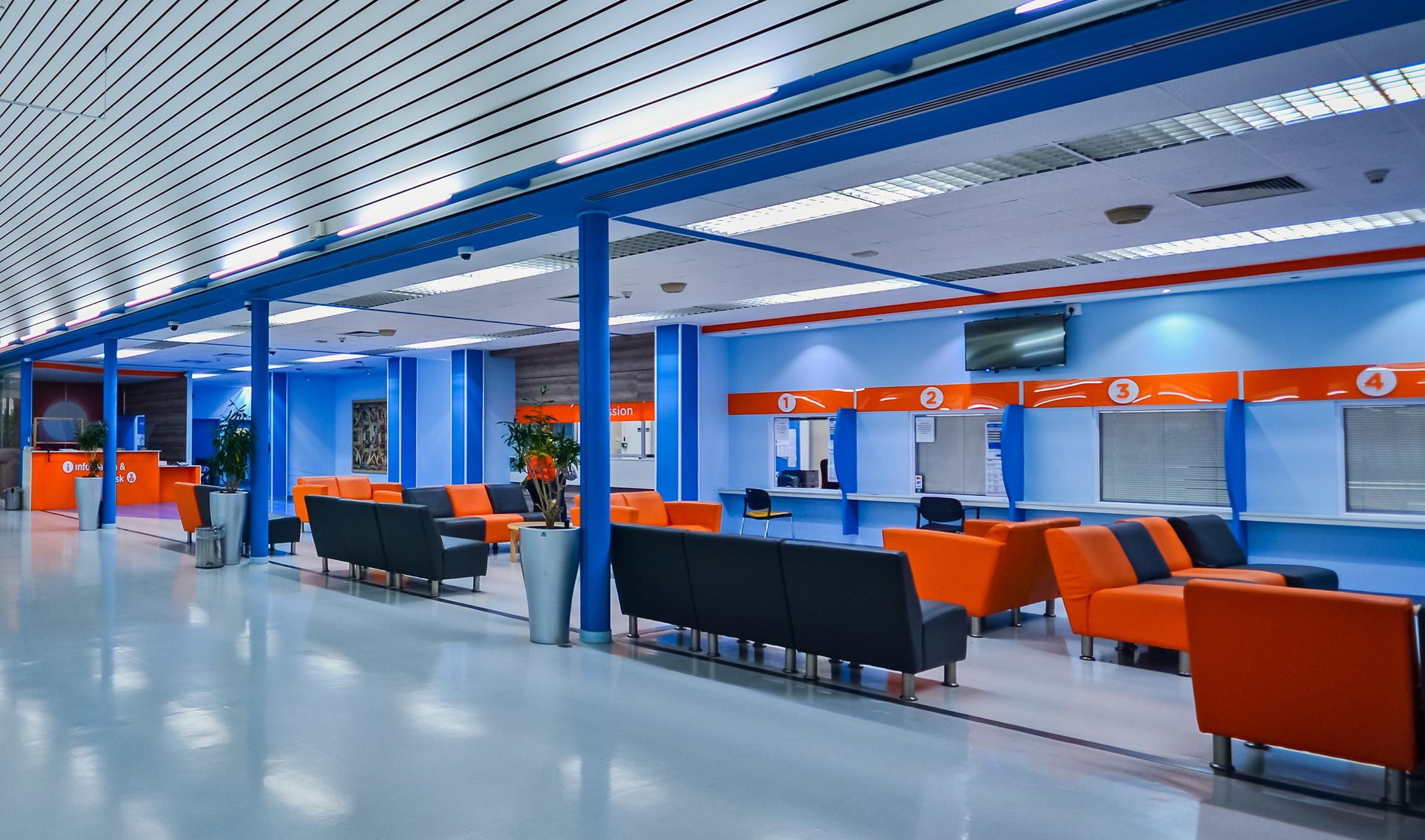
To this end, GSH has commissioned an additional two theatres along with 20 beds to create a Day Surgery facility and ease the backlog of cases.
“We raised funds to address some of the surgical cases, in addition to our normal theatre cases. Thus far, we have achieved our target of 1,500 cases over the past 10 months and will continue with the project over the next two years,” informs Patel.
“Over the next two to three years, we hope to operate on 3,000 more patients. After the project period, the facility will continue to function as a Day Surgery unit.”
One of the first fully compliant BEE Level 4 healthcare companies in South Africa, Akacia Medical and Healthcare group is part of a handful of true frontrunners when it comes to meaningful transformation.


Recognised as innovators, as a group we collectively work to diagnose, treat and monitor patients through our groundbreaking products, represented by our subsidiaries Akacia Medical, Clinisut, and MSQ Diagnostics.


We know that life without health is not easy. That’s why we’re invested in constantly improving the quality of our integrated solutions, to ensure we are meeting real healthcare needs with relevant products. Working together to transform people’s lives inspires us because at Akacia, we believe life matters.
As a group that’s recognised for innovation and excellence, it’s not surprising that the healthcare industry puts its trust in our products every day. With over 100 products in our stable, we are influencing and improving patient care and outcomes with our medical devices, surgical products, and diagnostic solutions. We are best known for our integrated solutions in general surgery, gynaecology, urology, respiratory, medical and surgical.



We develop and supply our customers with the latest in innovative medical technologies that protect patient safety and promote recovery. Our broad range of general medical products is segmented into our niche focus areas, including general medical, custom packs and trays, speciality products and equipment. From surgical gloves, suction devices, tubing, wound drains, to ICU breathing circuits, respiratory equipment, catheters, syringes, disposable textile, needles, and more – we have over 60 quality products available.
Our high quality absorbable and non-absorbable sutures are used in hospitals around the world and are manufactured using laserdrilled needles. This provides the best needle/suture combinations for easier passage through tissue, reducing tissue damage and ensuring a less traumatic patient experience. We manufacture 13 different material types, offering a wide selection of needle choices.


Our surgical division is well known for its globally renowned surgical sutures. We also specialise in procedure packs and trays, and surgical devices. Our device range covers a number of medical specialities, including respiratory, urology, gastroenterology, wound drainage, critical care, anaesthetics, gynaecology, general surgery and PPE.

Our diagnostic products help provide accurate medical information so that doctors can make faster, more informed treatment decisions, that are in the best interests of the patients we serve. Our niche diagnostic portfolio includes pioneering technology divided into the areas of POCT, quality, lab line and general. From diabetes, to cardiac, hematology, blood grouping, immunoassay, ESR, proficiency materials, software and more – with our quality products we have the power to shift the healthcare paradigm from reactive to proactive.


akaciamedical.co.za

 – BHAVNA PATEL, CEO,
– BHAVNA PATEL, CEO,
To relieve the amount of pressure being applied to the entire healthcare system, Patel acknowledges that GSH also needs to learn from the lessons of the pandemic and function as multidisciplinary teams across the various levels of care.
“Some hard decisions will have to be made. Primary care needs to be strengthened, current silos need to be broken down, and our teams need to work together to strengthen the health system,” she emphasises.
“The focus ahead has to be on strengthening the health system, and looking at it more holistically from a patient journey perspective, from the time the patient enters the system at a primary care level through to tertiary or
quaternary care.” Indeed, patients are only admitted to the facility if they have been directed to do so by a primary or secondary healthcare worker or facility.
This holistic view of the patient journey reflects GSH’s reputation since inception as “the hospital of the people”, with suppliers that are committed to ensuring its stock levels are never low and are responsive to patient needs, and staff that have embraced a sense of pride about being employed at the hospital.
Together with very active research opportunities and management support, GSH provides an environment where employees feel safe to explore and engage in seeking innovation and change, leading to excellence and a willingness to do better.
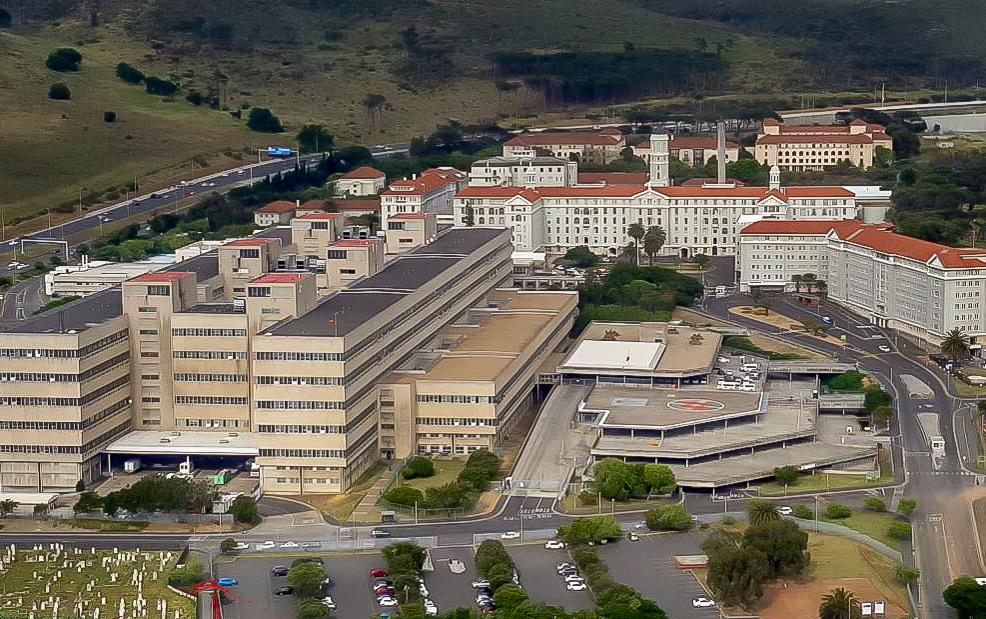
“GSH BOASTS A PROUD 85-YEAR HISTORY OF SERVICE EXCELLENCE, GAINING GLOBAL FAME FOLLOWING THE FIRST SUCCESSFUL HUMAN HEART TRANSPLANT BY CHRISTIAAN BARNARD”
GROOTE SCHUUR HOSPITAL
Enhancing healthcare by continuously improving quality with on time deliveries and exceeding customer expectations


Medtex SA (Pty) Ltd is a South African-based BBBEE Level 1 disposable glove manufacturing company established in 1994. Over the years, the company has put a major emphasis on product quality control, continuous research and development, and a competitive pricing strategy. A wide product range is offered from non-sterile latex and latex free examination gloves to sterile latex and latex-free surgical gloves. Flexible services are offered from ready to use in-house brands to OEM manufacturing according to customer satisfaction. Products are manufactured according to stringent ISO13485, SANS, and CE standards.





88/89 Lanham Street, Bronkhorstspruit, Gauteng, South Africa (RSA), 1020 info@medtexsa.com
+27 (13) 9324618 www.medtexsa.com
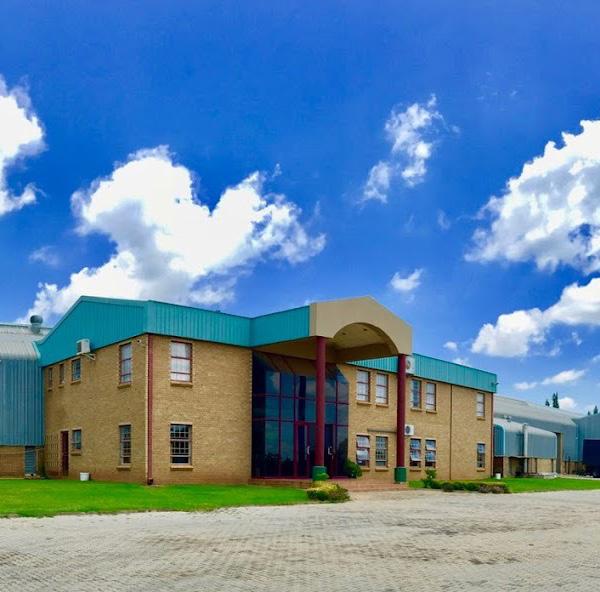
“We have a permanent staff complement of 3,750, but also appoint contract staff for certain services such as security, cleaning and laundry. In addition, due to significant nursing shortages, locum staff are also appointed. Without our people, the hospital would not survive,” Patel affirms.
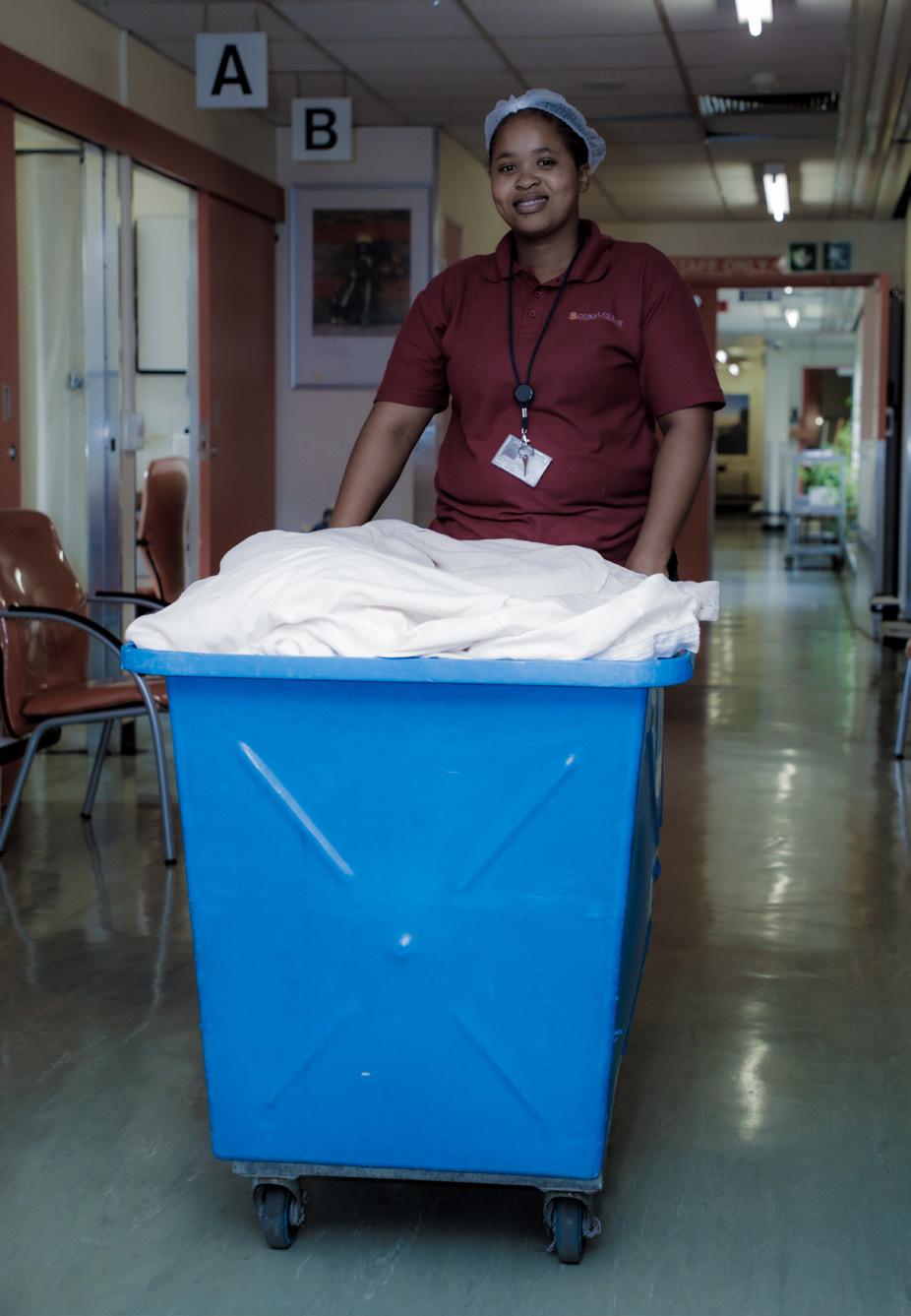
Staffed by highly experienced individuals, who can also be seen mentoring UCT medical school students that are completing the final period of their training, the standard of care is therefore extremely high at the hospital.
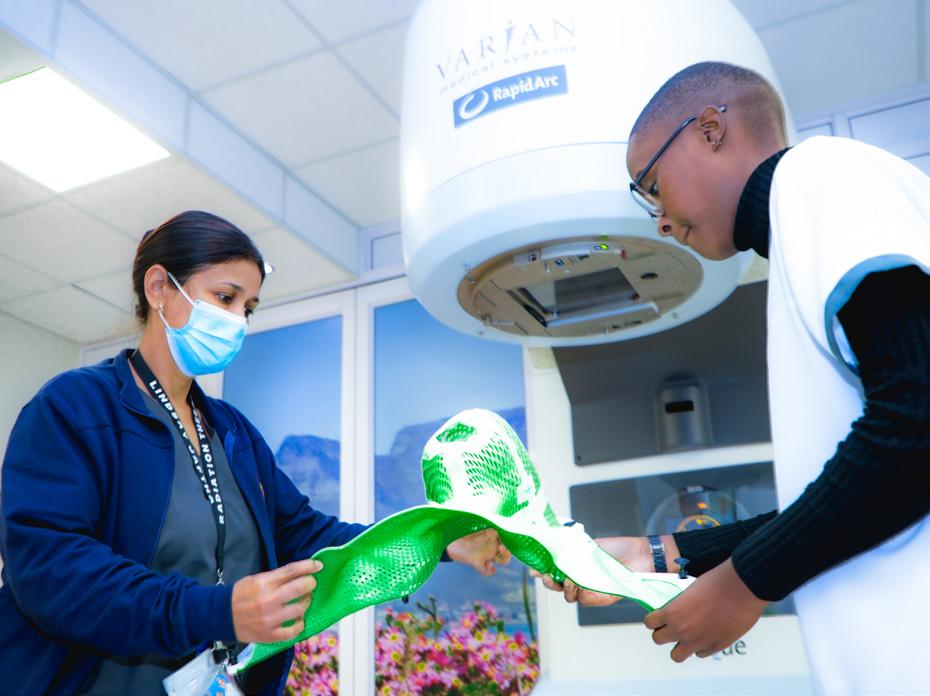
The pandemic placed significant pressures on GSH’s
employees, however, who had to attend to ill patients while at the same time dealing with their own illnesses, concerns about loved ones, and loss of life due to COVID-19.
Despite this, they remained a true credit to their profession and continued to treat patients, with GSH understanding these pressures.
As such, in recognition of the need for self-care and support, the hospital appointed a psychologist and an occupational therapist, who together with other counsellors and the psychiatric team spoke to staff members daily, both on an individual and a collective basis.
“This proved to be so beneficial that we opened a wellness centre for our staff that includes the psychological

“THE SPACE AT PRESENT IS CHALLENGING INTERNALLY, EXTERNALLY AND SOCIETALLY, AND REQUIRES A RETHINK FOR ITS FUTURE SUSTAINABILITY”
– BHAVNA PATEL, CEO, GROOTE SCHUUR HOSPITAL
Stefanutti Stocks is a listed, multidisciplinary construction group (a B-BBEE Level 1 contributor) with the capability to deliver a range of projects of any scale to a multitude of clients in diverse markets. As an ambitious and well-respected construction group we boast technical proficiency across all our disciplines.




Our strength as a contractor lies in our diversity, as we offer conventional and niche skills within the disciplines of Building, Civils, Renewable (focusing on balance of plant construction), Geotechnical, Roads & Earthworks (including bulk pipelines), Oil & Gas, Electrical & Instrumentation, Mechanical, and Mining Services (including Tailings Management and Materials Handling).





support aspects (both individual and teams), a small gym, yoga, self-defence and many other activities for their health,” reveals Patel.
“The centre has been well supported and has improved morale at the hospital.”

Given the huge shortage of nurses and the need to maintain competencies to function effectively, GSH also celebrated International Nurses Day in 2022 with the opening of a Nursing, Teaching and Learning Centre.
Various learning modules have been set up at the centre for nursing staff, who are educated and assessed on both the theoretical and practical components of these modules.

“This creates a culture of ongoing learning and teaching for the staff, and need not be restricted to nurses,” Patel
says, citing the hospital’s vision to be the leading academic hospital in Africa with international standing.
As a government-funded teaching hospital, GSH is renowned as the training ground for some of the best doctors, surgeons and nurses in SA.
GSH currently houses several clinical academic departments and plays host to the Heart of Cape Town Museum. After the hospital built new wings in the years following the ground-breaking operation, the theatres in which it took place were preserved for posterity in the form of the museum, which is dedicated to the achievements of Barnard and the world’s first successful human heart transplant.
The museum not only stands as a testament to the quality of South African medical practitioners, but also
The world of health never stands still. And neither have we. At every moment that counts, we will be there. From continuously devising and improving our existing tools and programs that help assess and optimise efficiencies, reduce cost and increase patient outcomes across healthcare organisations, to contributing to a more resilient and sustainable work environment to ensure all healthcare practitioners focus on what matters most to them: providing the best care for their patients.
At BD, our strategic partnerships across the patient journey, combined with our scale, and 125 years of experience have made us uniquely able to continually advance science and clinical outcomes, caring for patients and healthcare workers.
D
Up to 56% of all adverse events among hospitalized Patients are the result of preventable medication errors.1,2 38% of errors occur in the administration phase.3 90% of hospitalized patients receive IV medications.4
P C A
Implementing BD Guardrails™ Dose Error Reduction Systems has been shown to reduce harm and serious events at the point of care.5,6
BD CQI™ comprehensively audits IV-medication ‘good saves’ and compliance with your medication safety program.7
Rapid updating of DERS libraries to meet identified IVmedication safety gaps can be made via BD connected solutions.7

1. European Medicines Agency. Good Practice Guide on Recording, Coding, Reporting and Assessment of Medication Errors. 2014. Report No.: EMA/762563/2014. 2. National Coordinating Council for Medication Error Reporting and Prevention. Medical Errors. © 2016 National Coordinating Council for Medication Error Reporting and Prevention 2014 Available from: URL: http://www.nccmerp.org/about-medication-errors. 3. Von Laue NC, Schwappach DL, Koeck CM. The epidemiology of preventable adverse drug events: a review of the literature. Wien Klin Wochenschr 2003 Jul 15;115(12):407-15. 4. Husch M, Sullivan C, Rooney D, Barnard C, Fotis M, Clarke J, et al. Insights from the sharp end of intravenous medication errors: implications for infusion pump technology. Qual Saf Health Care 2005 Apr;14(2):80-6.
5. Sutherland A, Gerrard WS, Patel A, Randall M, Weston E. The impact of drug error reduction software on preventing harmful adverse drug events in England: a retrospective database study. BMJ Open Qual. 2022 Jul;11(3):e001708. doi: 10.1136/bmjoq-2021-001708. PMID: 35820711; PMCID: PMC9277403. 6. ManriqueRodríguez S, Sánchez-Galindo A, López-Herce J, Calleja-Hernández MÁ, Martínez-Martínez F, Iglesias-Peinado I, Carrillo-Álvarez A, Sanjurjo-Sáez M, FernándezLlamazares C. Implementing Smart Pump technology in a pediatric intensive care unit: a cost-effective approach. Int J Med Inform. 2014 Feb;83(2):99-105. doi: 10.1016/j.ijmedinf.2013.10.011. Epub 2013 Nov 13. PMID: 24296271. 7. Waterson J, Al-Jaber R, Kassab T, Al-Jazairi AS. Twelve-Month Review of Infusion Pump
Near-Miss Medication and Dose Selection Errors and User-Initiated “Good Save” Corrections: Retrospective Study. JMIR Hum Factors. 2020 Aug 11;7(3):e20364. doi: 10.2196/20364. PMID: 32667895; PMCID: PMC7448173.
serves as a reminder that organ donors are heroic in their selfless commitment to aiding others in their hour of need.
Another facility that GSH recently opened is the Adolescent Centre of Excellence (ACE), where adolescent outpatient services and psychological support are offered jointly by paediatric and adult clinicians.

This, together with the hospital’s existing adolescent inpatient ward, is the only such service of its kind in SA, recognising that many paediatric patients were being affected by chronic medical conditions and reaching adolescence without being transitioned into adult medical services.
The Diabetes Centre, meanwhile, was set up within the hospital to focus on multidisciplinary care for the increasing number of diabetic
JOINTLY BY PAEDIATRIC AND ADULT CLINICIANS’
patients, offering a one-stop care facility.
As well as opening several facilities, GSH implemented a number of innovations in 2022 including a positron emission tomography-computed tomography (PET-CT) machine for the treatment of cancer patients, and the da Vinci Xi surgical robot, becoming the first public facility in Africa to provide assisted robotic surgery.
“Surgeons, nurses and technical staff have been trained to perform
not only urological procedures, but also gynaecological, colorectal, and cardiothoracic procedures,” Patel shares.
GSH also continues to be the only public hospital in SA that offers heart, liver, lung, and kidney transplant services, with a transplant unit headed by a transplant specialist set up to bring together all the physicians and surgeons to work collaboratively to increase the number of operations done.
‘ANOTHER FACILITY THAT GSH RECENTLY OPENED IS THE ADOLESCENT CENTRE OF EXCELLENCE (ACE), WHERE ADOLESCENT OUTPATIENT SERVICES AND PSYCHOLOGICAL SUPPORT ARE OFFERED
At Phoenix Neomed we are committed to providing state of the art medical devices that are essential for saving lives. We are dedicated to delivering cutting edge technology and unparalleled quality to healthcare facilities, hospitals, and clinics.
Our products include a wide range of critical medical equipment, such as ventilators, incubators, aEEGs, infusion management, patient monitors and much more. We understand the importance of reliable and efficient equipment in critical care situations, and our products are designed to meet the highest standards of performance and safety.



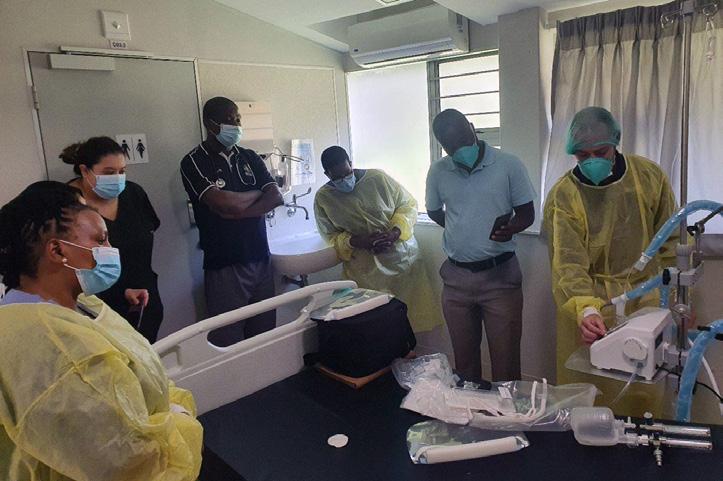

At Phoenix Neomed, we pride ourselves on providing exceptional customer service and support. Our team of experts is always available to answer your questions and provide guidance on the best products to meet your specific needs. We are committed to building lasting relationships with our customers, and our focus on quality and reliability ensures that you can count on us for years to come.
If you are looking for a reliable and innovative medical equipment company, look no further than us. Contact us today to learn more about our products and services and how we can help you to provide the best possible care for your patients.

www.phoenixneomed.co.za

info@phoenixneomed.co.za
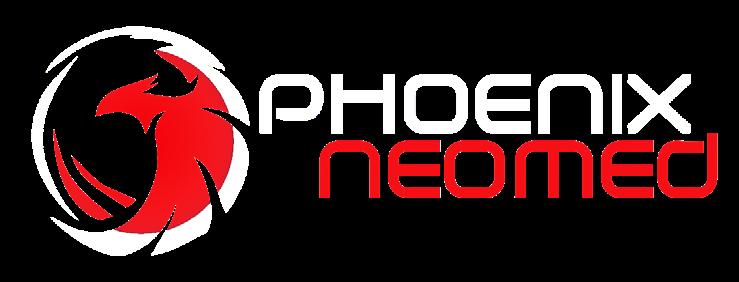
The focus on infection prevention and control (IPC) likewise energised the need to appoint a specialist to manage the IPC unit and focus on monitoring this part of the service.

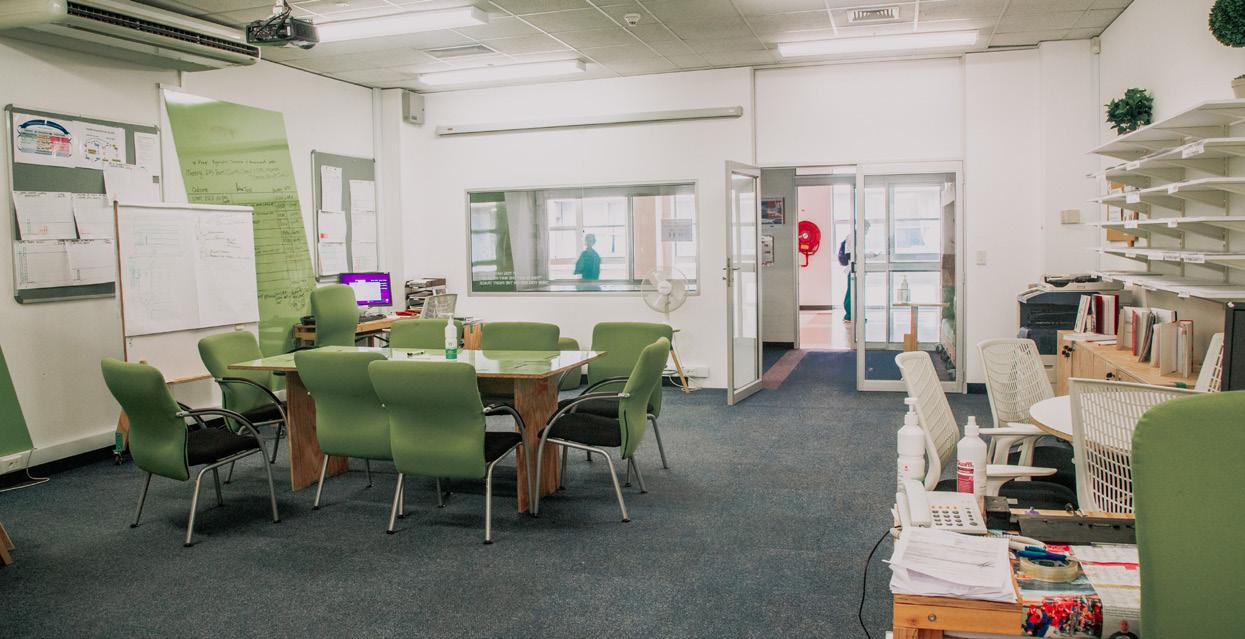
With all these additional innovations, facilities and units in place, GSH’s focus for the next three years is firmly on strengthening the health system and developing a renewed strategy to meet patient needs.

“For the coming year, plans will be put in place and teams will be set up to start exploring how this could function on a practical level,” concludes Patel, whose personal vision is to see GSH continue to be a leading innovative healthcare institution, and a centre of excellence where both staff and patients feel valued and cared for.
“This is something that I would really like us to sustain going forwards.”
Tel: +27 21 4043178
www.westerncape.gov.za

Schindler is a proud mobility partner for the Groote Schuur hospital, ensuring safe, no fuss and reliable transport for our Healthcare workers, Patients and Visitors.
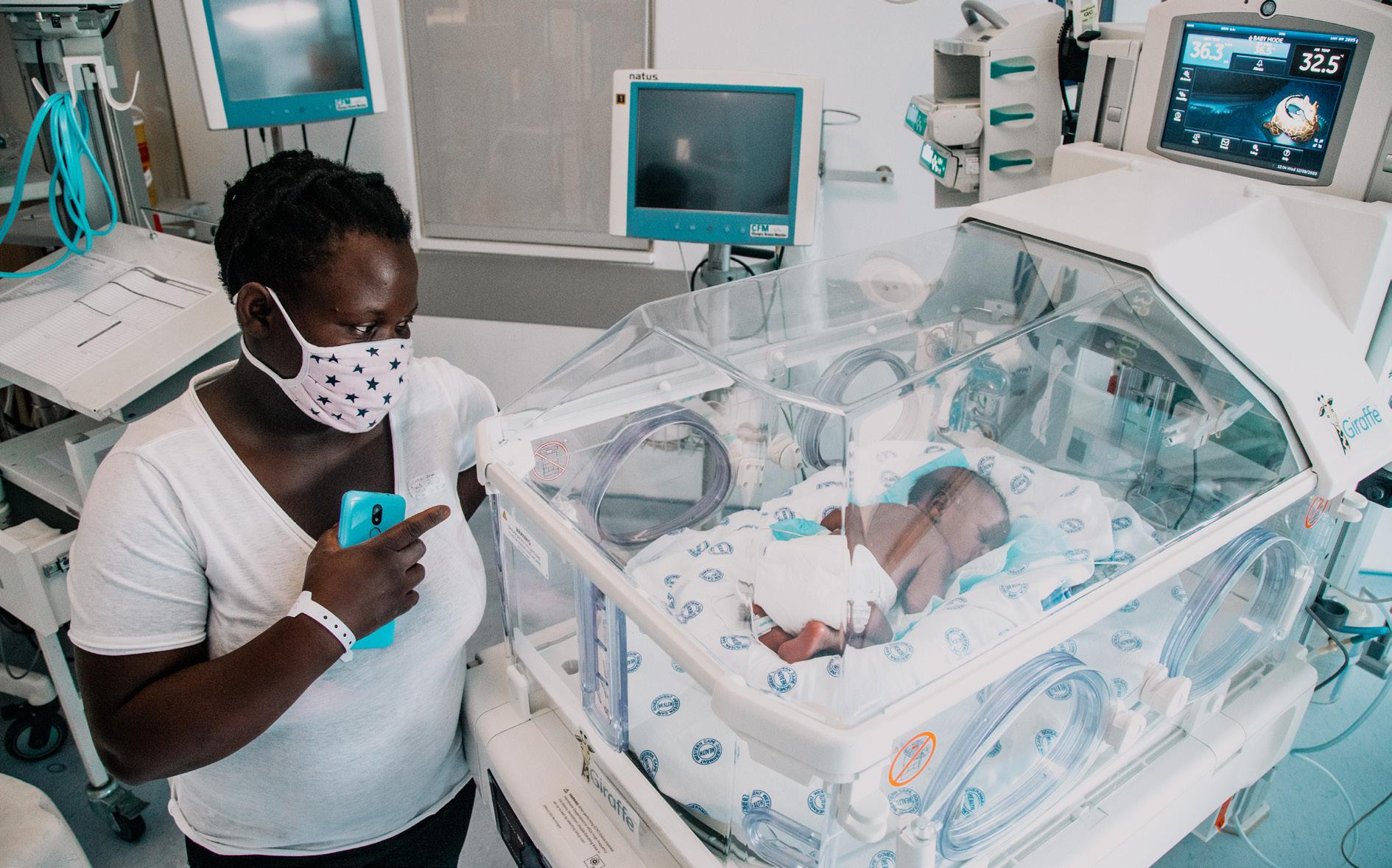

+ 27 87 087 6555 sales@za.schindler.com | www.schindler.co.za schindlergroup schindler | schindlergroup


We Elevate...Hospitals.

 Martha Holley Newsome (right) and Joanna (left)
Martha Holley Newsome (right) and Joanna (left)
International, Martha Holley Newsome, about the organisation that goes
Writer: Lucy Pilgrim | Project Manager: Felix RevellAcross the world, the work of humanitarian relief is paramount to the care and well-being of millions of people affected by conflict, natural disaster, or socio-economic unrest.
Led by faith and an unwavering commitment to equal opportunities in healthcare, Medical Teams
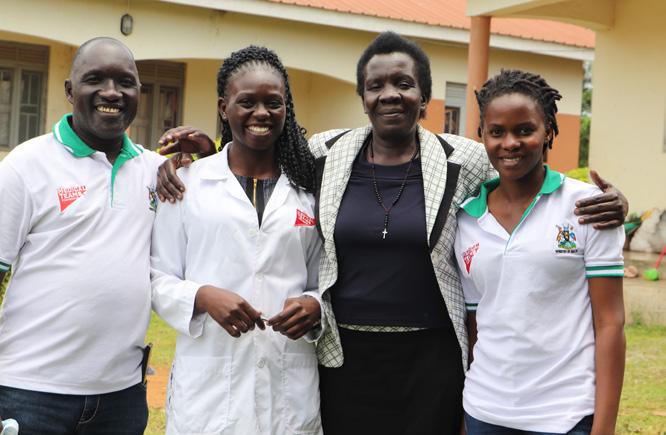

International (Medical Teams) is a Christian health and humanitarian organisation that has provided medical care to those in crisis since 1979.

The organisation’s founding principle is to provide life-saving medical care and support to those in need in Africa and across the globe,
as it helps millions of refugees and displaced individuals receive urgently needed medical attention.
Medical Teams follows a threebranched approach to its services - providing basic medical treatment, offering an outstanding level of individual care, and working to strengthen the existing system through building trust between the healthcare services and the community. Such honourable commitments are underpinned by a vocation of: “daring to love like Jesus”.
“Like Jesus, we boldly break barriers to health and restore wholeness in a hurting world,” begins Martha Holley Newsome, President
and CEO of the organisation. “Not only do we desire to be the hands and feet of Jesus, but to also break barriers in access to places that have been the hardest hit by all kinds of difficult circumstances, whether that’s a natural disaster or a manmade conflict. We want to go where we are needed most, to bring medical care that is so urgently required.”
Medical Teams works attentively with refugees across numerous countries in Africa, including Tanzania, Sudan, Ethiopia and Uganda. Regarding the latter, Medical Teams operates 65 clinics that provide health services
With an unmatched tenacity, resourcefulness, and level of support, we talk to the CEO of Medical Teams
above and beyond in providing humanitarian support
to nearly one million people, of which 750,000 are refugees and the remaining 250,000 are local population. Consequently, the Uganda programme has a total cost of USD$17 million.
Further north, Medical Teams has been vital to those fleeing from conflict in Ethiopia. In total, 65,000 people from Tigray fled across the border to Sudan, and as such, the community health workers (CHW) have been incredibly active in and around this area, despite difficulties caused by the civil war.
“There was no internet, so the health workers were cut off from everything including power. The only thing Medical Teams could do was fly cash to its team so they were able to continue to have mobile medical services until the peace accord,” Newsome explains.
Once the peace accord was finally signed in Ethiopia, an imposed
curfew meant that CHWs weren’t able to access vehicles. Therefore, they continued to conduct mobile medical operations on donkeys, demonstrating courage and tenacity in extreme conditions.
This is further reflected in Medical Teams’ work in Eastern Africa, in which team action has increased in response to recent droughts that are causing high levels of malnutrition.
Over in Colombia, South America, Medical Teams has also been working

with Venezuelan migrants since 2019, who have been fleeing economic hardship caused by the collapse of the government in their home country. The CHWs provide support in strategic urban areas, providing vouchers for medical care and sanitation and hygiene supplies, with a large percentage of vouchers being given to young women and children.
“We had the chance to go to a community known as Cienaga, which translates as ‘swamp’ because
Upon the eruption of the crisis in Sudan in April this year, 25 million people are now in need, as the entire population is affected by the conflict. Thus, Medical Teams has been working hard to help the one million people that have been internally displaced.
Initially, the team were helping the displaced in Tigray, until 300,000 people crossed the border to Ethiopia to escape the Sudan conflict. Thus, Medical Teams has been continuing to respond to conflict and displacement in both countries.
the area routinely floods. Another community, called Soledad, is built on a literal trash dump. Both these areas have dire sanitation and horrendous healthcare conditions,” Newsome informs.
It is in the latter region that Joanna and her baby live in a small cement room. With no access to healthcare, Joanna and her family fled across the Venezuelan border in search of aid. She had only seen her doctor once with her first pregnancy, and lived in constant fear that her baby wasn’t healthy.
Her second pregnancy, however, was much different. Since getting connected with Medical Teams, Joanna has been able to get papers to qualify for insurance, and the CHWs helped her get registered in Colombia. She benefitted greatly from the vouchers, and described how it would have been very difficult to get help with her pregnancy otherwise. Medical Teams provided both
prenatal and antenatal care to Joanna, as well as regularly checking in to help breastfeed alongside any other needs that arised.
“Our staff in places like Colombia are truly saving lives. The personal care and connection we provide to the clinics and services in their communities makes a significant difference in their health outcomes,” Newsome describes.


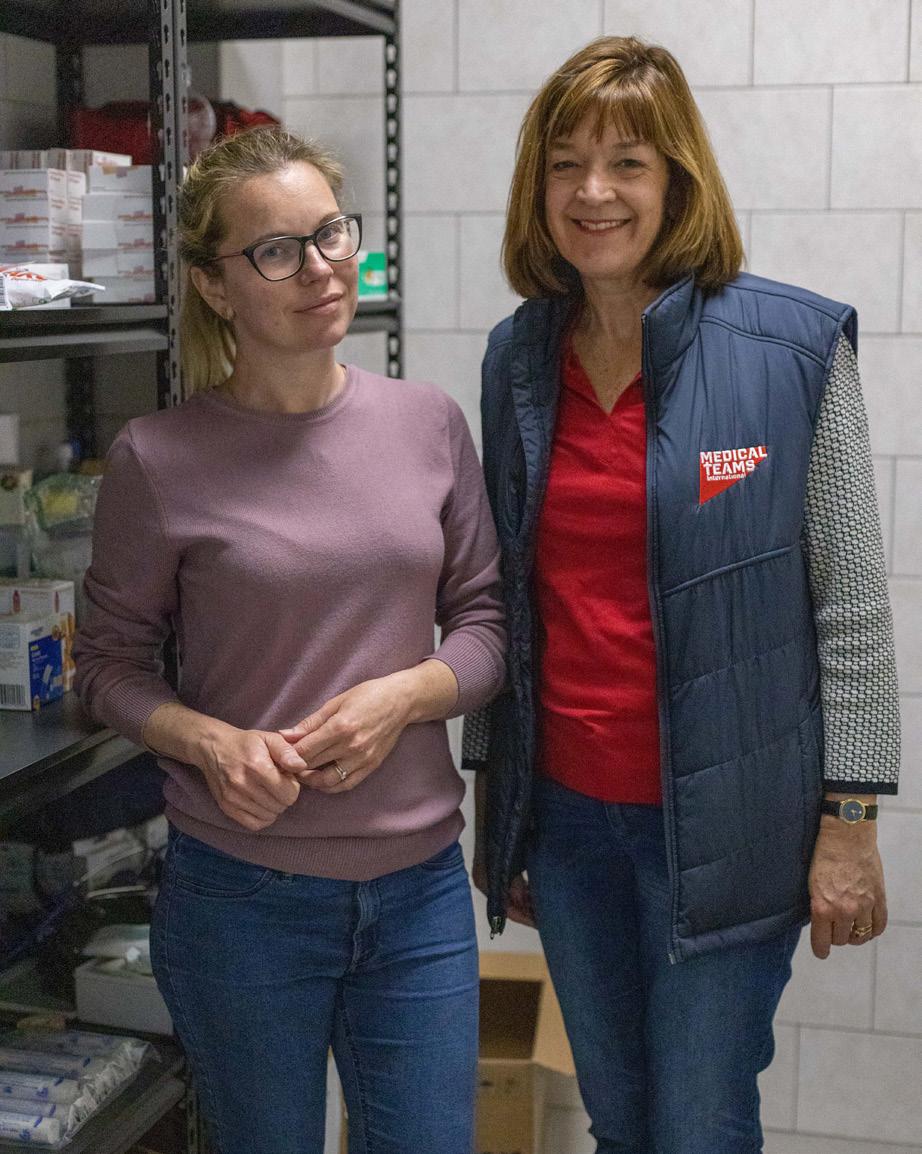
As a businessman from Salem, Ron Post, the founder of Medical Teams, had no prior involvement in medicine or humanitarian aid. And yet, he felt a calling one evening when he saw on television what was happening to Cambodian refugees that were impacted by Khmer Rouge.
Post was particularly affected by the footage of a young girl he saw stagger across the border and collapse. At this point, he felt God wanted him to do something. Two weeks later, Post was on a plane to Thailand to provide critical services for the Cambodian refugees in partnership with World Vision, which was running a hospital initiative on the Thai border at the time.
From such an impactful start, Medical Teams operates as a faithinspired organisation that focuses on what daring to love Jesus means in the world. Thus, with the prayer that their staff can be the hands and feet
“WE WANT TO GO WHERE WE ARE NEEDED MOST, TO BRING MEDICAL CARE THAT IS SO URGENTLY REQUIRED”
– MARTHA HOLLEY NEWSOME, PRESIDENT AND CEO, MEDICAL TEAMS INTERNATIONAL
of Jesus, Medical Teams demonstrates love to its neighbours and, most importantly, helps them survive.
“Our values are to be courageous and tenacious, accountable, selfless, and not alone. We think about the latter in two ways. We want to come alongside people so that they know they’re not alone and work in partnership with others. However, we also believe that the contexts in which we work are so big that we need God as well,” Newsome highlights.
The notion of an international network of aid is paramount to the success of the organisation, whether this is provided through private individual contributions or comprehensive
supply chains. Regarding the former, each contribution is perceived as “gold dust,” Newsome describes, as it allows the organisation to leverage resources.
“People feel moved by our work and feel the need to support us, even if it’s a small individual donation or corporate foundational funding, each contribution is greatly valued.”
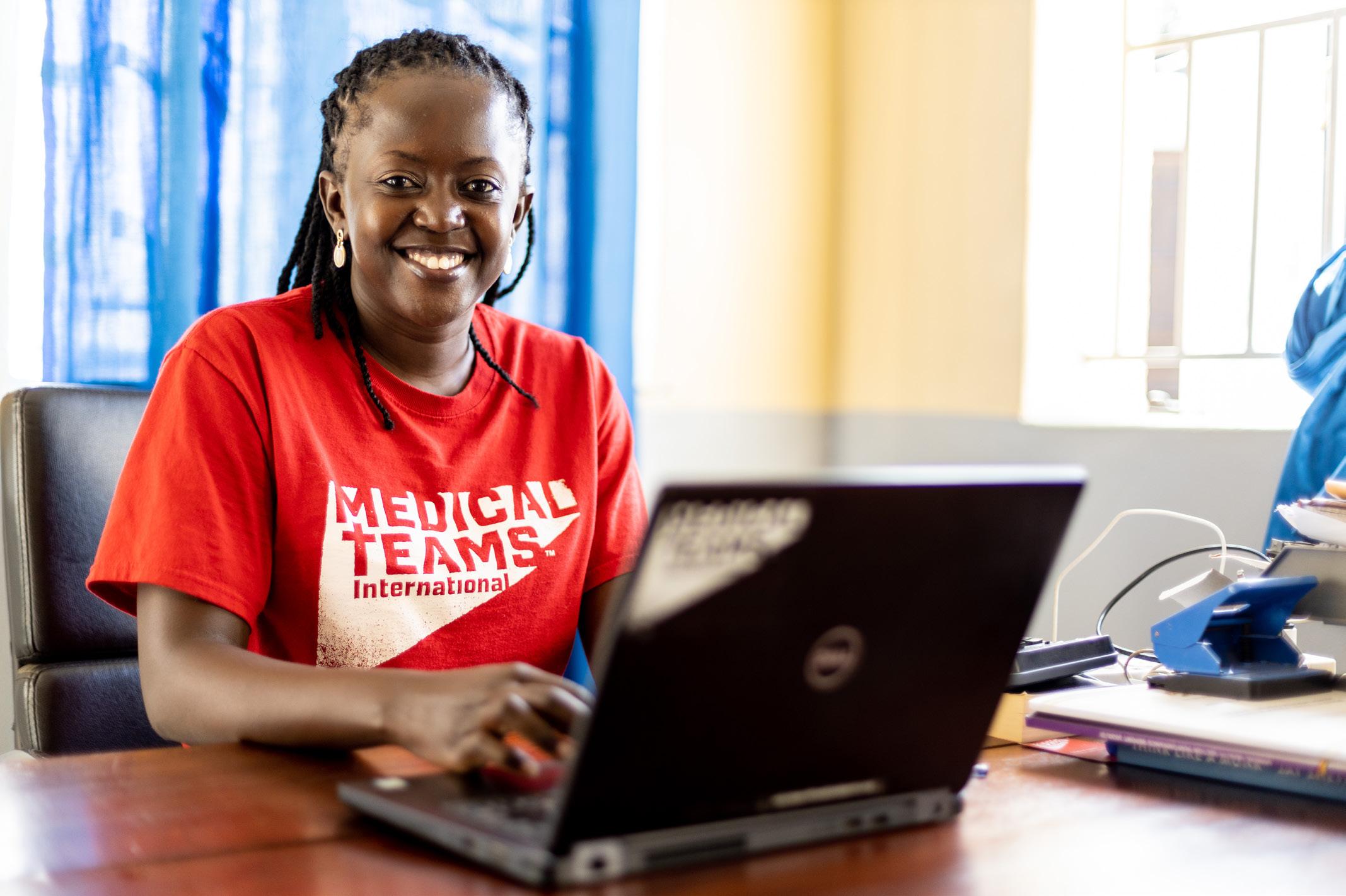
Due to Medical Teams’ reputation and calibre of programmes, it receives many grants from the United Nations High Commissioner for Refugees (UNHCR), as well as other vital international institutions. Each organisation diligently works with Medical Teams as it recognises the value of having proactive staff on the frontline, to achieve critical last-mile care.
From a wider supply chain perspective, it has become increasingly important for Medical Teams to work closely with both partners and donors to ensure that each country’s needs are being met, whilst following best practices to enhance low-resource health system strengthening.
For partners in-country, the need to have staff or volunteers who understand local custom requirements and can obtain tax-exempt status is pivotal to the success of an in-country supply chain. Medical Teams works with experienced expediters who can provide in-country agents if needed. Once in-country, medical supply management is key to the proper distribution of supplies.
• Implementing electronic health records: ensures that patient data is easily accessible to partners and medical teams. By providing electronic records, the organisation can offer a better standard of care and refer individuals to long-term healthcare.
• WhatsApp groups used by CHWs: link patients to private and public health clinics.
• Red Rose Initiative: operating in Colombia, this mobile system facilitates vouchers for urgent care. The initiative additionally provides medical supplies through local vendors, which is a dignified way to provide support as patients can choose the items they need.
Following the supply chain from donor to end user is one of the most challenging but rewarding aspects of the organisation. This year, Medical Teams has diverted 160 tonnes of medical supplies from landfills and served 490,000 people. The everchanging landscape of customs regulations, donor requirements, and meeting in-country needs leads to many of the much-needed changes to the medical supply chain. Being agile and responsive is key in the procurement and distribution process of these supplies, and this is one of Medical Teams’ specific areas of expertise.
Alongside the succinct organisation of the international distribution of
supplies, the staff, from coordinators to CHWs, are at the core of the company’s success. In total, it has 2,503 employees, as it has become more dependent on the national staff of each country to run the aid programmes. This means that CHWs on the frontline are aware of the context of the crisis, as well as the people they are working with.
Currently, approximately 25 of the staff in Uganda are refugees themselves, as the organisation prefers national staff over expatriates. This deliberate recruitment enhances the care provided by Medical Teams as they utilise the skills of refugees and nationals.

Medical Teams is also determined

to ensure that each staff member has the opportunity to develop their skills. Thus, it provides a multitude of learning programmes in which team members can enroll and participate anywhere in the world.
As the organisation continues to provide healthcare and humanitarian aid across the world, it works to sustain its Love in Action Campaign: a five-year plan to triple its impact around three aspirational goals.
Firstly, Medical Teams is determined to triple the number of global refugees and displaced people that it serves, as well as triple its capacity to respond to natural disasters, and its ability to serve those around the world. This can only be achieved through an efficient mobilisation of its resources, private contributions, and its global supply chain.
When the organisation’s board approved the Love in Action Campaign in May 2017, the global number of refugees and displaced individuals was 65 million. Five years later, that total now stands at 110 million, reflecting the urgency and necessity for the crucial work of Medical Teams.
“We endeavour to bring that number down, but unfortunately the level of conflict in the world and the impact of climate change in terms of storms and natural disasters, means that the number is going in the wrong direction. That’s why we believe that these three aspirational goals are so important,” Newsome concludes.
“NOT ONLY DO WE DESIRE TO BE THE HANDS AND FEET OF JESUS, BUT TO ALSO BREAK BARRIERS IN ACCESS TO PLACES THAT HAVE BEEN THE HARDEST HIT BY ALL KINDS OF DIFFICULT CIRCUMSTANCES”
– MARTHA HOLLY NEWSOME, PRESIDENT AND CEO, MEDICAL TEAMS INTERNATIONAL

For decades, Direct Relief has provided medicine and medical assistance in both humanitarian and disaster situations. We speak to President and CEO, Thomas Tighe, about the organization’s important work
Writer: Rachel Carr | Project Manager: Felix RevellRelying entirely upon private contributions, Direct Relief has strived to equip healthcare professionals in resource-scarce communities since 1948.
Continually meeting the challenges of diagnosing and caring for people in need, both throughout the US and globally, the not-forprofit organization is also adept at responding to worldwide disasters.

Charities such as Direct Relief use private funds while receiving no government support. In fact, they operate in a similar way to businesses when providing goods or services
that benefit the public.
“It is a public service, but it just happens to be done privately. Nonprofit organizations exist to address important issues; it is not a compelling business case, but it is a compelling human case,” opens Thomas Tighe, Direct Relief’s President and CEO.


“I spent over two years in the Peace Corps as a volunteer teacher in rural Thailand, which was an eyeopening experience. I learned how unaddressed health problems and financial statuses affected the course of people’s lives.
“These were people with inherent talent, hopes and dreams for their
future and that of their families,” he observes.
Many of those issues remain today, both internationally and in the US, which is one of the most economically advanced countries in the world.
“Advances in healthcare have been remarkable, but the benefits are still limited to those fortunate enough to live in wealthier countries or have the personal means to secure them,” Tighe reflects.
This is where the important work that Direct Relief is carrying out makes a difference. Establishing strong ties with US healthcare companies, the organization provides aid in response to emergencies and refugee populations, alongside addressing the opioid epidemic, reproductive health, and health equity to fund and improve healthcare for marginalized communities.
Indeed, just as in 1948 Direct Relief’s humanitarian assistance is provided
without regard to ethnicity, politics, religion, gender, or ability to pay.
During the last few years, the world has experienced a series of major natural disasters, including the most destructive hurricanes and wildfires in history, and Direct Relief has been deeply involved in responding to many of them.




Not only are climate-related events becoming more frequent and intense, but they are also lasting longer than ever before. Moreover, the COVID-19 pandemic caused a large reallocation of resources to address, which left all the existing challenges and gaps in basic healthcare unattended.
“For the last year and a half, the war in Ukraine has been a significant focus for Direct Relief, as we have been the largest channel for humanitarian aid into the country thanks to the extraordinary level of support from
the healthcare industry and people all over the world,” acknowledges Tighe.
Furthermore, the devastating earthquake in Turkey and Syria has been a primary issue for Direct Relief in recent months.
“Responding to so many catastrophic events provides the perspective to see patterns. One of the recurring common issues that Direct Relief is focusing on is the availability of power, without which, health services grind to a halt.
“Power dictates everything, such as having electronic email records available, keeping drugs and vaccines properly stored, having oxygen available in hospitals, and just keeping the lights on to work and engage in communications,” he informs us.
Direct Relief has become more involved in helping health facilities install solar and battery systems to be resilient and be able to deliver services when they are most needed.
Sensitech helps Direct Relief improve its ability to provide essential medical aid to people in need with their real-time temperature monitoring devices

• Improved distribution success rates
• Active, in-transit event mitigation to prevent product loss
• Real-time supply chain visibility
• Shipping lane performance analyses
Learn more at sensitech.com
The Power for Health initiative provides grant funding to support resilient power projects across the US as the country continues to face challenges due to the impact that climate change has on global warming and the increased stress it places on the nation’s power grids.
As the economy of those types of investments is beneficial and given the nature of what the organization does, and how much of the world’s charitable supplies of insulin and other
critical therapies it handles, Direct Relief is keenly sensitive to this issue.
The distribution center in California has extensive cold-chain storage for medications and vaccines. Additionally, it was the first permitted microgrid in the continental US.
Direct Relief receives no government support, and the nonprofit is able to work in a streamlined way as a result.
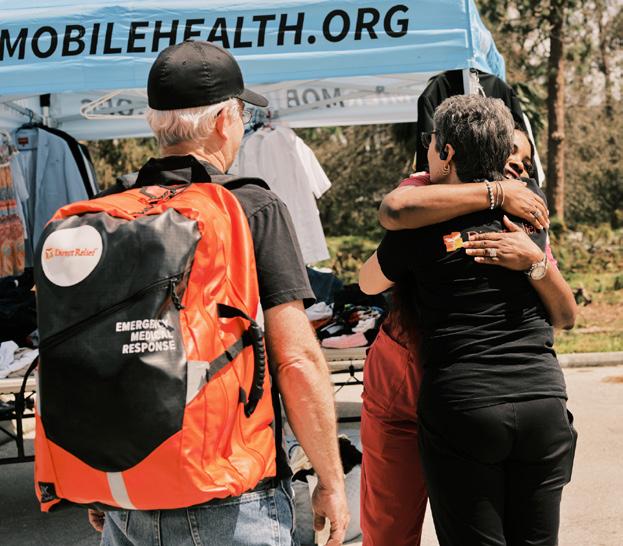


This no-frills approach is reflective of the organization’s origins. Direct Relief was founded by war-immigrant businesspeople who were forced to flee Europe in World War II. Much of the initial effort was to support people caught in those historic events and in need of basic goods, including health commodities.
“They were using their own money and providing the services for free, which Direct Relief still does, so they wanted to make sure their funds were
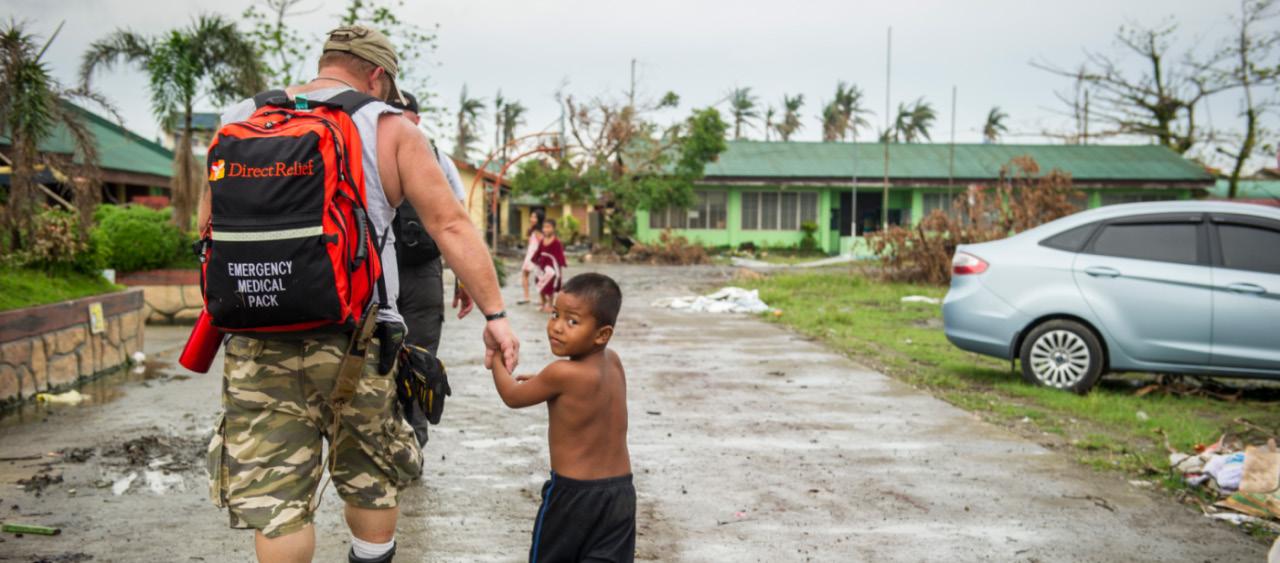
serving their intended purposes in the most efficient way possible,” reveals Tighe.
This way of thinking – doing public good privately but doing it as efficiently as possible – has been present since the organization was founded 75 years ago.
“Most charitable causes are deeply compelling on a human level, but just because it is righteous, it doesn’t mean that every activity and expense done under that banner is carried out well or efficiently – we aim to do both,” says Tighe.
Direct Relief continues to focus on growing its global emergency and disaster response capabilities as well as expanding upon the vast network of healthcare facilities around the world, to provide ongoing support for the treatment of chronic illnesses.

“We are focused on improving and expanding logistics capabilities by continuing to partner with product donors, equipment and logistics suppliers, and community healthcare networks to gather the necessary information and training required to ensure a successful shipment, handling, and storage of temperaturecontrolled medicines.”
Direct Relief uses a simulated shipping lane assessment called Smart CAE. The software enables its team to analyze temperature variations along a transportation route. This assists in determining the correct qualified packaging configuration to use in order to maintain the required temperature of the product throughout its travels.
“We also work with our community healthcare networks to ensure they have the proper equipment and training to handle and maintain the temperature of the product upon receipt,” adds Tighe.
A sharp humanitarian imperative exists to assist those whose lives remain threatened by disease,
poverty, or disaster. It is what guides Direct Relief’s work in areas where governments and global markets are either unable or unwilling to engage in improving the health of people who are sick or hurt.
“Unwell people who do not receive care cannot work; they become poor or stay poor, and people who are in poverty are at higher risk of becoming sick.
“Breaking this vicious cycle is an enormously complex endeavor, which
requires change in many areas other than health services. Although, under any circumstance, access to better health services is essential.
“That is why we focus on improving community health and access to affordable prescription medications,” highlights Tighe.
Access is a main obstacle that patients at health centers and community clinics face every day, and Direct Relief helps tackle this challenge by providing much-needed
“ADVANCES IN HEALTHCARE HAVE BEEN REMARKABLE, BUT THE BENEFITS ARE STILL LIMITED TO THOSE FORTUNATE ENOUGH TO LIVE IN WEALTHIER COUNTRIES OR HAVE THE PERSONAL MEANS TO SECURE THEM”
– THOMAS TIGHE, PRESIDENT AND CEO, DIRECT RELIEF
medicines and supplies to those who require them the most. Its medical assistance programs equip health professionals working in resourcescarce communities to meet the challenges of diagnosing, treating, and caring for patients.
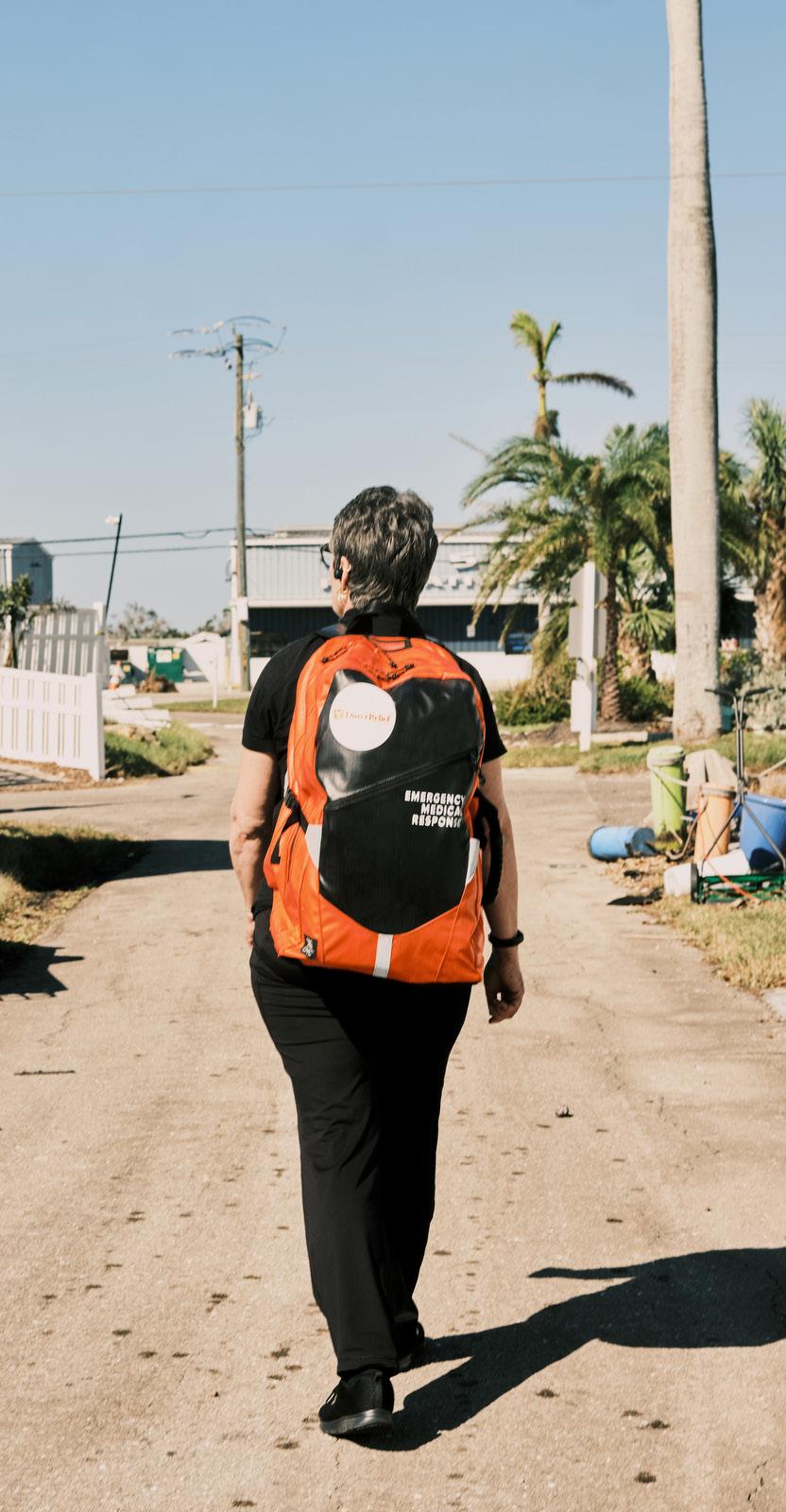
Direct Relief is a recognized international partner of Ukraine’s Ministry of Health and supports several groups in the country with requested medical aid, including trauma kits, cancer drugs, insulin, antidotes used in chemical attacks, and more. It has also supplied hundreds of emergency backpacks for first responders working in the field and dealing with injuries, trauma, infections, and other acute medical needs.
• Over $33.9 million in financial assistance
• $986 million in material aid assistance
• Over 1,450 tons of medical aid
• 283.1 million daily doses of medicine
Direct Relief has worked to assess and triage needs based on feedback from healthcare networks on the ground across both countries.
It has prioritized support in a number of areas, namely the ongoing need for medical assistance, restoring access to primary health services, providing secure accommodation for doctors and other health workers, expanding access to mental health and psychosocial services, and finally, bolstering post-operative care and rehabilitative service capacity.
• $4.5 million in financial assistance
• $88 million in material aid assistance
• 443 tons of medical aid
• 61 million defined daily doses of medicine
Direct Relief sources the majority of its medical products via in-kind donations from over 80 global pharmaceutical and healthcare companies. Furthermore, procurement of medicines and supplies is mainly limited to products included in emergency preparedness and response kits.
Occasionally, Direct Relief will procure small amounts of medical products for various ongoing programs, or to meet a crucial humanitarian need when a product is unavailable for donation from the private sector.
“To source donated medicines and supplies, Direct Relief has a dedicated Corporate Engagement team that manages relationships with current and prospective donor companies who donate through several different models,” explains Tighe.

In addition, Direct Relief has a robust team of licenced pharmacists, who in collaboration with its Emergency Response and Global Programs teams identify which medicines are most needed for various health crises around the world and for uninsured patients in the US. Mission-driven and providing critical help to millions of people throughout the world, Direct Relief is the result of motivational and inspiring leadership and teamwork.
DIRECT RELIEF
Tel: (805) 964-4767
info@directrelief.org
https://www.directrelief.org/

The healthcare services and technology sector has acquired added importance over the past two years, as global businesses and organizations have worked with exceptional intensity to weather the COVID-19 pandemic and improve the lives of the people in the communities they serve.
Based in Montreal, the Jewish General Hospital (JGH) is one such entity. With a proud history of helping those in need of medical attention, the JGH was one of the first of two adult hospital centers designated by the Government of Quebec to receive COVID-19 patients.
“The JGH, which opened its doors in 1934, was founded as a general hospital to welcome all patients, regardless of race, religion, language or ethnic background,” states Dr. Lawrence Rosenberg, President and CEO of the organization.
In a highly prominent position in Canadian healthcare stands the Jewish General Hospital (JGH).
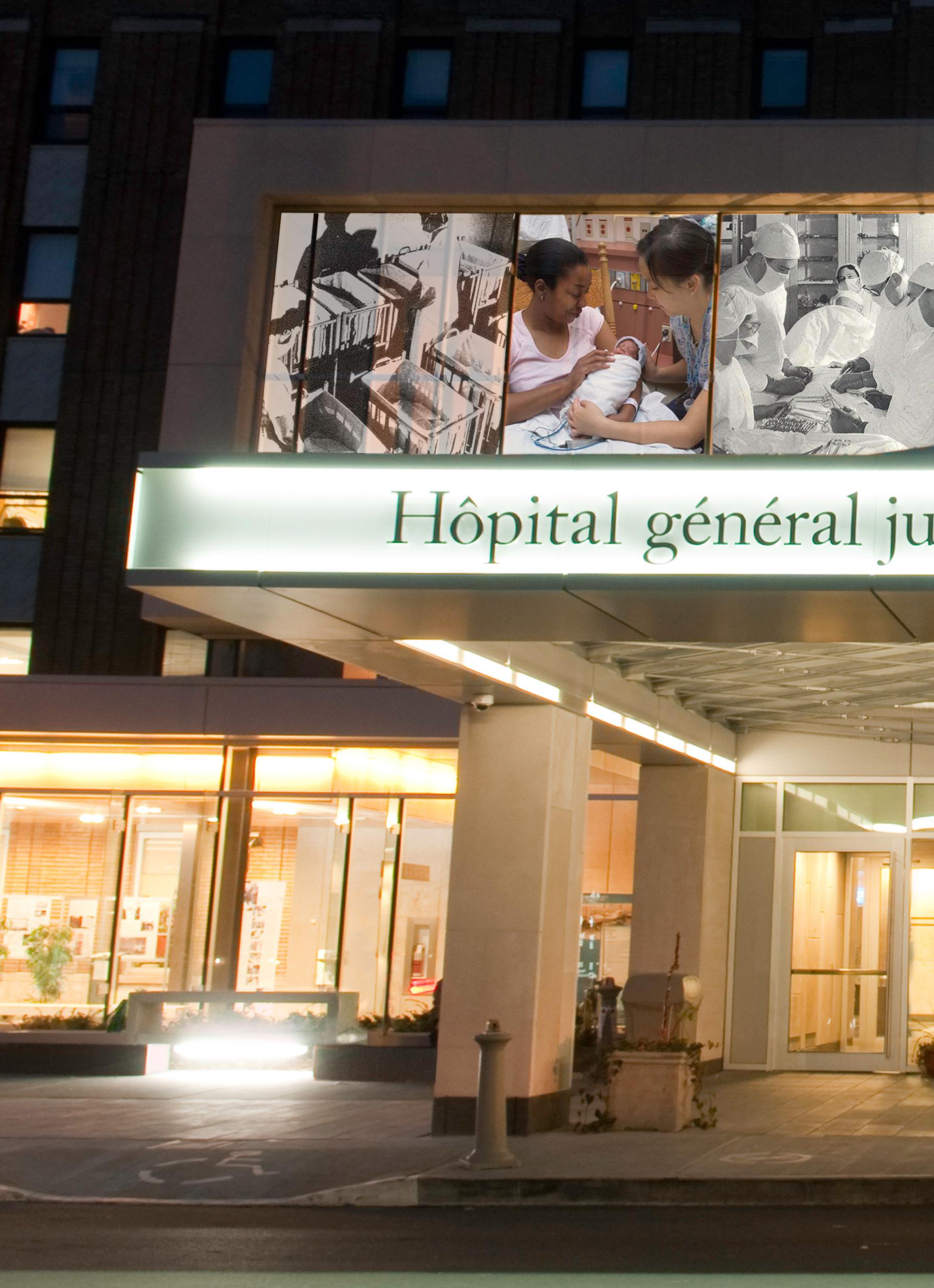
Dr. Lawrence Rosenberg, President and CEO of the organization, walks us through the JGH’s experiences over the past two years, with an update on the hospital’s latest developments
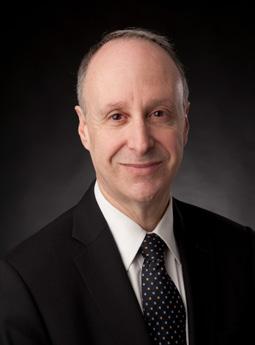 Writer: Jack Salter | Project Manager: Felix Revell
Writer: Jack Salter | Project Manager: Felix Revell
“The hospital was established in a less enlightened era, when Jewish doctors in Montreal could not find jobs due to prevailing prejudice. Similarly, Jewish patients could not be cared for in an environment that was sensitive to their unique cultural and religious needs.
“To emphasize the hospital’s opposition to discrimination of any type, it became the first healthcare institution in Quebec to officially designate itself as being ‘nonsectarian’ – that is, open to everyone (patients and employees alike), regardless of their background.”
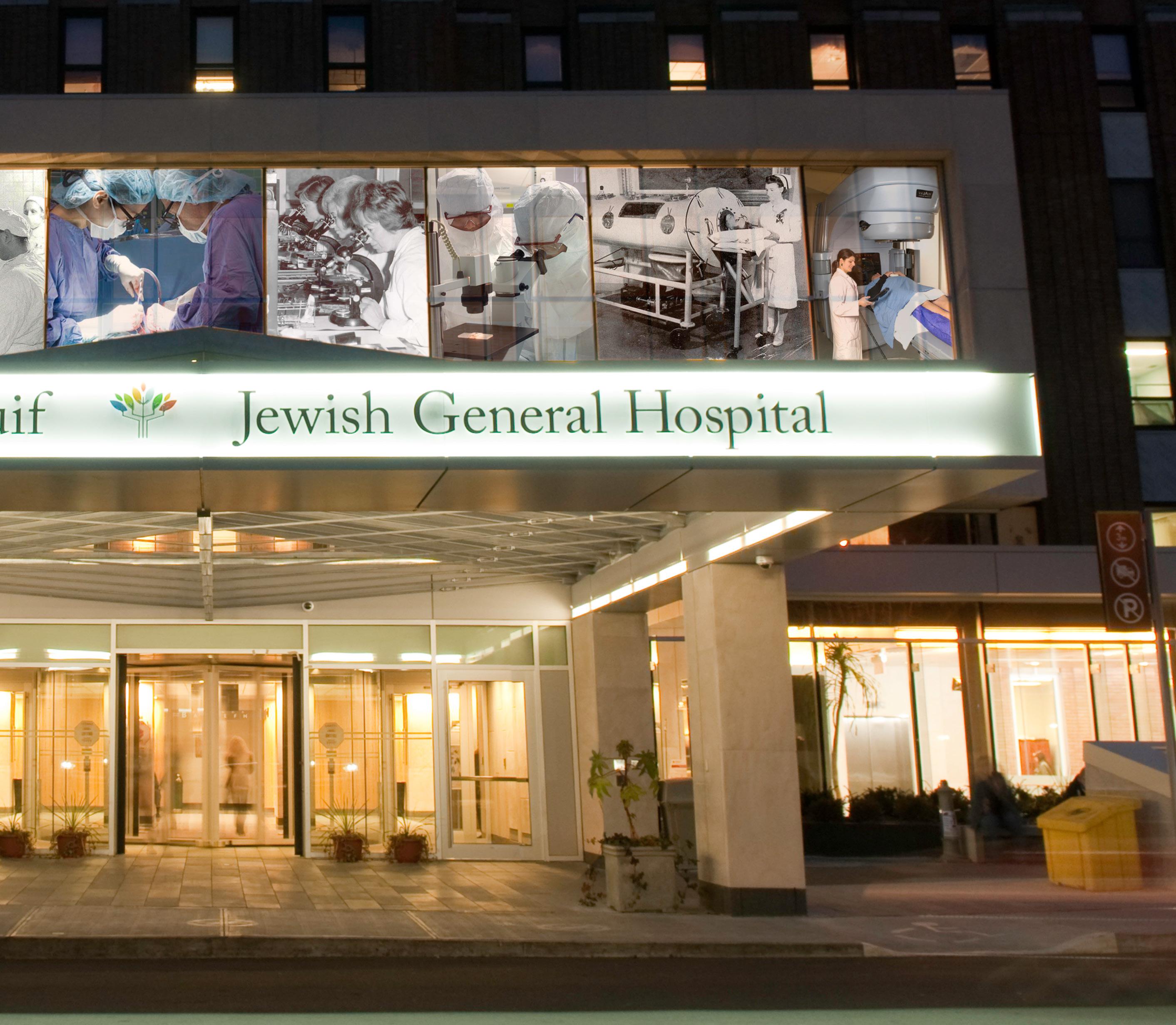
The JGH is a tertiary-care academic medical center, one of McGill University’s flagship teaching hospitals. During its first 81 years, it functioned as an independent institution. However, in 2015, as a result of a reorganization of Quebec’s public healthcare system, the hospital became the hub of a newly constituted Integrated Health and Social Services University Network for West-Central Montreal, commonly known as CIUSSS West-Central Montreal (“CIUSSS” is an abbreviation of the French term for the network).
CIUSSS facilities are located on 34 different sites in an area covering about 21 square miles. In addition to the JGH, this network includes six long-term care facilities, five community clinic/services organizations, 25 group medical practices, two rehabilitation hospitals and three rehab centers.
“Officially, the CIUSSS is responsible for providing services to a population of 380,091, with growth of 9.1 percent anticipated by 2036,” Dr. Rosenberg informs us. “In reality, we already serve well over 750,000 people, half of whom come from outside our
territory. These users of the system span the entire age range, with 18 percent being 17 years old or below; 64 percent between the ages of 18 and 64; and 18 percent over 65.
“Interestingly, more than 42 percent of the people in our territory are immigrants, who represent 34 percent of the population of Montreal. This is truly the immigrant basin of Canada.”
DR. LAWRENCE ROSENBERG, PRESIDENT AND CEO: “Our stateof-the-art warehouse has permitted us to pick, pack, deliver and replenish throughout the institution with an automated bar code system. This has enabled us to standardize and minimize the amount of stock distributed to the nursing units and external clinics.
“During the COVID-19 pandemic, we were able to cross-dock all PPE distribution, while onboarding 110 additional sites across our territory (beyond the hospital walls) – an approach we have maintained into the fifth wave.
“As part of adopting best practices, the JGH introduced case cart picking when the new OR opened in Pavilion K. This is accomplished with sophisticated software called PPG, an application that is used in the diamond business for inventory management. It permits us to batch-pick, with a carousel system, up to eight cases at a time, to be more performant and to virtually eliminate the need for nurses to pick medical supplies in the sterile core of the OR.”
The JGH is also home to the Segal Cancer Centre, a provincial referral center that has become one of Canada’s (and the world’s) most renowned facilities in the diagnosis and treatment of cancer. Of key importance is the Centre’s research and its many collaborative endeavors with cancer centers around the world. Especially noteworthy are efforts to develop novel approaches to personalized medicine that offer each patient the most effective targeted treatments for their particular form of the disease.
Also worth noting is the JGH’s in-depth and pace-setting expertise in geriatric medicine, developed through decades of treating a patient population which has consistently had a disproportionately high number of elderly individuals. This led to the launch in 2021 of the expanded
Lieberman Family Wellness in Aging
Geriatric Centre, whose aim is not only to treat illness, but to help each elderly person to maintain an optimum level of health and autonomy that is appropriate for their particular condition and circumstances.
In the course of leading his organization, Dr. Rosenberg has seen it – and the broader sector – evolve during a unique period of enormous change and development, prompted largely by the COVID-19 pandemic. Since the JGH played a leading role in Quebec in treating infected patients, extensive preparation was required. Included was the development of protocols for the Emergency Department, Intensive Care, the medical units and the specialized areas, such as operating rooms, the

Across the healthcare industry and especially on the back of the COVID-19 pandemic, the value of diagnostics is now undisputed. With tests that detect and monitor diseases, conditions, and infections, diagnostics are a critical part of a patient’s journey while informing and supporting about 70 percent of healthcare decisions.
As a key partner to the Jewish General Hospital (JGH), Roche is a pioneer in the field and a trusted partner and leader in the delivery of diagnostic and pharmaceutical solutions for over 125 years globally, and for over 90 years in Canada.

By leveraging the combined strengths of diagnostics and pharmaceuticals, Roche is dedicated to advancing science to improve people’s lives.
“With the purpose of Doing Now What Patients Need Next, Roche has a culture of going beyond the product and a tradition of looking to the past to develop innovative solutions that improve the present, but never at the expense of the future,” opens François Drolet, Executive Director, Access, Policy and Government Relations.
The company is on the cusp of reaching a new level of possibilities as diagnostics leverage the technological advances of artificial intelligence (AI), digital health and advanced data analytics, to realize its vision of personalised healthcare, ensuring that we can fit the right test and the right treatment, to the right patient at the right time.
“Diagnostics is the backbone of the healthcare system, and we are entering the golden era of diagnostics right now in terms of both technology and public knowledge,” continues Drolet.
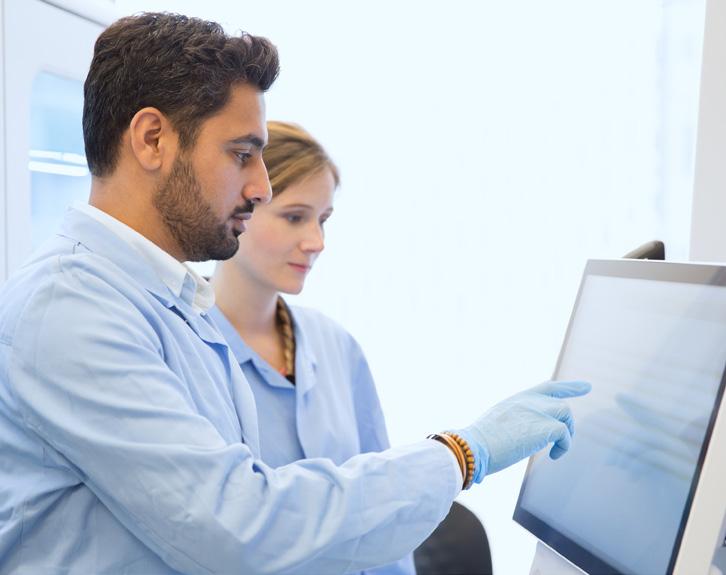
Roche’s partnerships are a testament to the company’s commitment to science, innovation and excellence in service, in and outside the laboratory.
This is evidenced by Roche’s ongoing partnership with the Jewish General Hospital, one of Quebec’s leading healthcare facilities and an early adopter of Roche’s core lab and molecular technologies making it a key player in a network of hospital-based clinical laboratories affiliated with McGill University (Optilab Montréal - MUHC).
“Our customers tell us that partnerships with Roche help them demonstrate the value of the lab to the hospital and the lab’s role in patient outcomes, which helps the lab improve access to novel high medical value tests for patients,” says Executive Director, Medical and Scientific Affairs at Roche, Michele D’Elia.
Roche Diagnostics’ innovation comes as a result of its relentless investments in R&D that accounts for more than its three major competitors combined. Lab automation is a key area of focus, providing critical resources in times of understaffing and exhaustion as witnessed during the COVID-19 pandemic.
At the Jewish General Hospital (JGH), Roche installed a fully automated molecular testing system that was instrumental in increasing the capacity of the province of Quebec’s COVID-19 testing network.
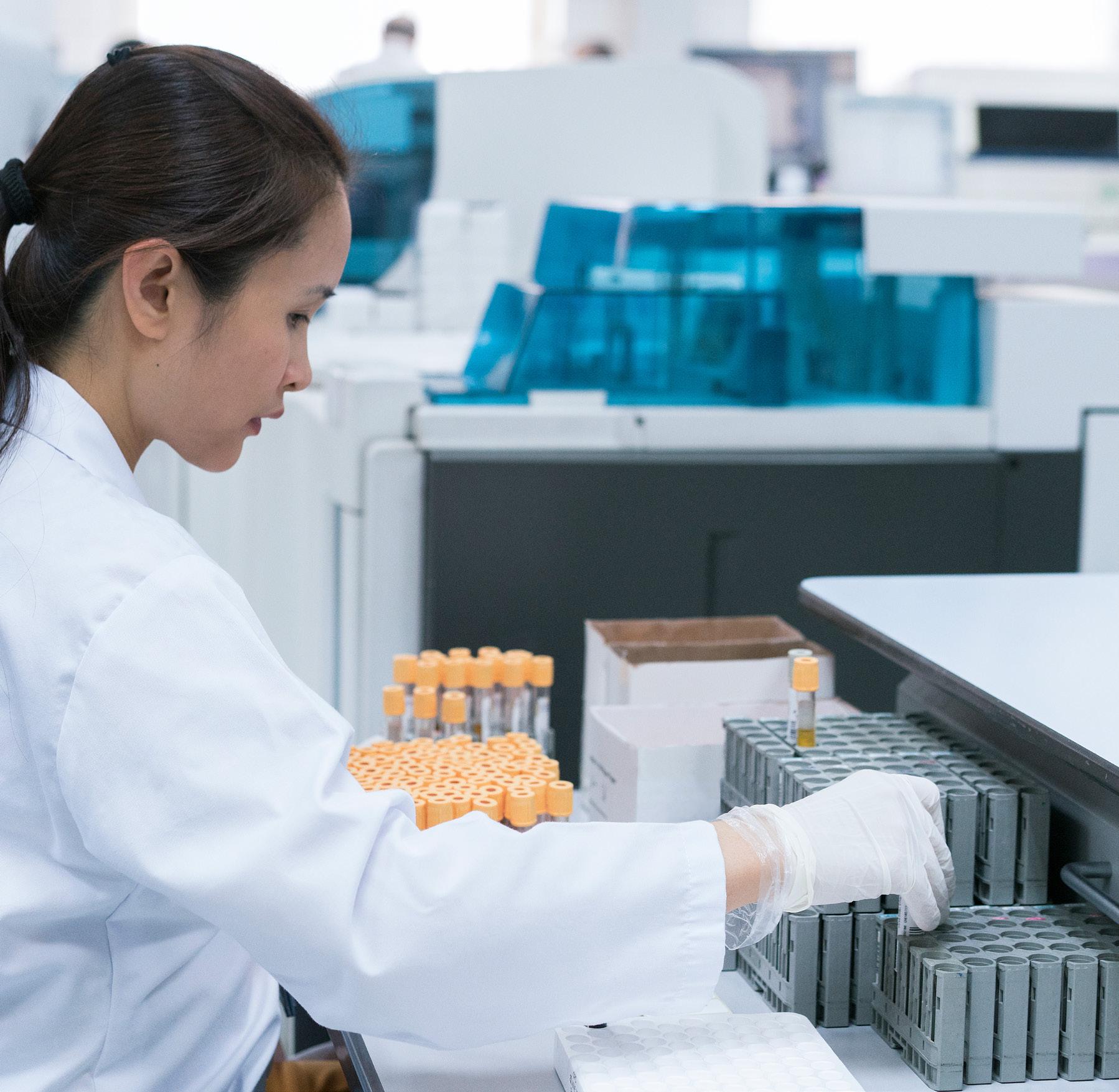

Medical leadership at the JGH attest to this solid partnership that continues to adapt and develop over time. For Dr. Jerry Zaharatos, Medical Microbiologist at the JGH, Roche’s installation of the cobas® 8800 instrument has expanded the hospital’s strengths in molecular microbiology and innovative testing measures.
“Before the arrival of the cobas® 8800, assuming ideal conditions, we were able to do under 800 tests a day. After its addition, we were able to provide between 2,000 to 3,000 test results per day,” he says. “Our workflow was streamlined, biosafety was optimized and we
gained significant efficiencies throughout the pre-analytical, analytical and post-analytical phases of testing.” Critically, the automated platform minimized potential for error by preserving limited human resources and reducing hands-on time and fatigue.
“We were also able to automate screening for SARS-CoV-2 variants of concern. With Roche’s assistance we were able to quickly adapt our screening strategy for new mutations using a laboratory developed test on the cobas® 8800’s open Omni-channel.”
“We went live with SARS-CoV-2 RT-PCR testing in April of 2021. In order to further automate our workflow, this was eventually complemented by a p512 pre-analytical instrument,” Zaharatos adds. Both partners anticipate the continuation of a fruitful working relationship, furthering the possibilities of molecular microbiology at the JGH. As the COVID-19 pandemic de-escalates, the cobas® 8800 may be utilized to expand the variety of pathogen specific tests with the expansion of the molecular lab.
“As we shift more of our tests to the automated molecular in vitro diagnostics milieu, we hope to continue to improve the quality of care for the patients we serve both in our hospital and in the community,” concludes Zaharatos.
Throughout the course of the pandemic, Roche has been at the forefront of investment in COVID-19 diagnostics, leading the way with PCR, antibody and rapid testing as well as the automated instruments that made it possible to undertake at the required scale. Diagnostics proved invaluable as outbreaks of the virus were identified thanks to the high-quality tests for SARS-CoV-2.
As is the case in every clinical situation that requires an intervention, diagnostic testing plays an important role in the management of the COVID-19 disease. Key biomarkers such as Interleukin-6 (IL-6) and procalcitonin (PCT) are used in intensive care units to respectively monitor the inflammatory response and diagnose bacterial infections in hospitalised patients. The information delivered by these biomarkers gives additional insights on the disease progression and allows clinicians to make informed and timely decisions. “The previously inconspicuous laboratory in the public sphere has come out of the shadows during the pandemic through its contribution, its value and the importance of test results - we call it: the power of knowing,” D’Elia affirms.
“Throughout the COVID-19 pandemic, it has been clear that access to a strong and diverse diagnostics infrastructure was crucial in tackling this enormous risk to healthcare and the global economy,” comments Drolet.
As the catalyst to introduce this revolution in diagnostics at the Roche laboratories, this has exposed a potential that the company intends to exploit well into the future of healthcare.
The true value of diagnostics laboratories is rising to the fore, with Roche at the vanguard in exploring their potential in cancer identification thanks to diagnostic test results, and a host of other infectious or chronic diseases and pathologies. The same instruments applied for COVID-19 testing are now performing other key molecular tests, such as human papillomavirus (HPV) and Chlamydia trachomatis/ Neisseria gonorrhoeae (CT/NG) testing.
“Just imagine if we were to look at these other life-threatening diseases and conditions in the same way - the good that could be done for people and for the system as a whole,” D’Elia adds.
Testing is an integral part of a patient’s journey, streamlining and improving communication between doctors and patients with requisition of tests based on that patient’s symptoms, paving the way for adequate medical advice and the appropriate targeted therapy.
In the face of an ageing population with increasingly complex healthcare needs, the need to keep up to date with the everexpanding advances in technology and medicine, increasing patient expectations, and all against a backdrop of limited resources and the widespread impact and disruption of a global pandemic - diagnostics holds the answer.
“We at Roche, believe we have key solutions acting as fundamental pieces of the puzzle in tackling this ongoing healthcare crisis. We believe the starting point has to be prevention and early detection,” says D’Elia. “Tomorrow, I think it is going to be obvious to healthcare providers and patients that we can use these same tools to manage
other diseases in a different and more effective way. We have before us a new way of looking at the patient journey and assessing value in the healthcare system,” he surmises.
As diagnostics enters the realm of public consciousness like never before, Roche is creating a connected care pathway for patients that encourages the integration of innovative solutions that simplify patient care, lift the burden from the shoulders of the healthcare system, and ultimately – save lives.

As Drolet affirms, “Through better diagnostics, we can seize this moment to build a future where every Canadian has access to the right care, at the right time, and in the right place.”
rochecanada.com
cardiac catheterization laboratory and the various clinics.
“In addition, we have had to redefine patient pathways, including admission, transfers and discharges,” Dr.
The vision of the institution is “Care Everywhere” – that is, providing care in whichever setting is safest, most convenient, and most comfortable for the patient.
JGH VALUES:
A. Highest Quality of Care: The JGH values excellence and is committed to providing the highest evidence-based quality of care for all.
B. Compassion, Dignity and Respect: An exceptional user experience is the JGH’s goal.
C. Safety: The JGH is committed to providing care and services within a safe and secure environment. This is a shared responsibility.
D. Teamwork: The JGH recognizes and acknowledges the important contributions of each member of its staff and partners.
E. Knowledge Creation and Innovation: The JGH values excellence in teaching and research, which leads to the very best quality of care. The organization encourages creativity and initiative in its staff, so that they can identify and implement innovative ways to enhance the care and services that the JGH provides.
The JGH’s mission is to provide value-based, patient-driven care that puts a premium on the user experience, while at the same time empowering the JGH’s care providers to take collective responsibility by using a “team of teams” approach.
Rosenberg explains. “We have greatly increased extensive training in the use of personal protective equipment (PPE), with support from our Infection Prevention and Control team, so that we can function effectively in a pandemic environment.
“As the first wave of the pandemic rolled on, the hospital engaged in a very significant transfer of staff among our CIUSSS’s facilities, so that support could be provided to the COVID-19 units that had been set up.
“Telehealth, which had been in its preparatory stages before the pandemic struck – as part of the hospital’s very aggressive strategic plan for digital transformation –was rapidly rolled out to support patients and their families. Most of our ambulatory clinics established telehealth capabilities, and the cancer center, in particular, was able to maintain up to 85 percent of its usual activity through telehealth technologies.”
At the same time, the JGH established a digital command center to proactively manage beds and patient flow across the hospital and the rest of the CIUSSS. The command center was underpinned by artificial intelligence (AI) modelling, which permitted the JGH to predict COVID-19 hospitalizations one week in advance, with an outstanding accuracy rate of nearly 97 percent. As a result, the JGH was able to plan bed capacity and staffing, while ensuring an adequate supply of PPEs in the right places at the right time.
This type of support is intrinsic to the nature of the JGH as a medical institution, extending into the area of medical education and training, as well as research and development. The hospital’s principal R&D facility is the Lady Davis Institute for Medical Research (LDI), whose researchers have cross-appointments and strong connections to McGill University.
GE Healthcare has been honored to work with the leaders and frontline heroes at the Jewish General Hospital (JGH), as a long-term partner committed to a shared goal of leveraging innovation to deliver world-class patient care. JGH has long been recognized as a leading Healthcare provider both in Canada, and globally, due to their focus on delivering patient care of the highest quality. Further, JGH consistently leverage advanced technologies as they strive to deliver clinical excellence.
In collaboration with JGH, we continue to focus successfully on reducing patient backlogs, optimizing patient care, and enhancing operational efficiency. Like JGH, our commitment to customers can be felt both globally and locally though our technologies and solutions with a devoted local Applications and Service team.
Our GEHC ecosystem delivers precision health: digitizing healthcare and driving productivity to improve outcomes for patients, providers, health systems, and researchers around the world. As a leading global medical technology, pharmaceutical diagnostics, and digital solutions innovator, we enable clinicians to make faster, more informed decisions through intelligent devices, data analytics, applications, and services, supported by our Edison intelligence platform. We are committed to fostering an inclusive culture of respect, transparency, and unyielding integrity.
Today, we are actively working on cutting edge solutions in cardiology, medical imaging, and critical care. We are also proud to share that JGH is using the GEHC Centricity High Acuity Care Solution to address surgical backlogs and increase OR performance. Moving forward, emerging challenges will bring further opportunities to work together to drive innovative patient centered solutions. We are grateful to be part of the patients’ journey with the JGH in moments that matter.
www.gehealthcare.ca

Since opening in 1967, the LDI has been at the forefront of health research, becoming one of the premier research institutes in Canada. “In the early 1980s, Dr. Mark Wainberg conducted pioneering work on the global HIV/AIDS pandemic, leading to the discovery of the anti-viral drug 3TC (Lamivudine) in 1989,” Dr. Rosenberg elaborates. “This drug is still used in combination with other medications to treat infections caused by HIV.
“During the COVID-19 pandemic, Dr. Brent Richards of the LDI has been prominent in gaining an understanding of the genetic risk for COVID-19 and establishing genetic predictors for the severity of the disease.
“As we emerge from this pandemic, the LDI will continue to expand its research focus on emerging infectious diseases, informed by our clinical experience at the JGH, one of the

busiest infectious disease hospitals in Quebec and Canada.”
As well, the LDI has been at the forefront of mental health research, with Dr. Laurence Kirmayer’s pioneering achievements in cultural psychiatry, and Dr. Brett Thombs’ work in screening for depression in his international, collaborative DEPRESSED PROJECT. The continued focus on mental health is essential as society rebounds from the COVID-19 pandemic.
According to Dr. Rosenberg, the LDI’s Center for Clinical Epidemiology, led by Dr. Samy Suissa, plays a central role in assessing, monitoring and improving healthcare interventions. To do so, it relies on its leaders in pharmaco-epidemiology, which involves studying the risks and benefits of medications in the realworld conditions of clinical practice.
As a Security Systems Integrator, ADSS continues to be involved in several projects and renovations for the Jewish General Hospital.
At the beginning of the pandemic, we assisted in the construction of one of the first COVID-19 test centers in Montreal. Due to the unprecedented urgency, most of the technical teams worked tirelessly, allowing the center to open several days ahead of schedule.
We remained onsite until the last minute and witnessed the many healthcare workers waiting to receive and test patients for this new potentially deadly virus. Our healthcare workers are the epitome of courage, and we are humbled to have been able to support them with this undertaking.
www.adss.ca
Since its beginnings in 1945, the KARL STORZ family company has grown into a global manufacturer and distributor of endoscopes, medical instruments, and devices.
We are no giant on an international scale but a leader in the things that matter: creativity, flexibility, and expertise.
Our KARL STORZ NEO IP modular integration system is built around a fiber optic IP based solution. This backbone allows us to provide you with a state-of-the-art integration platform to meet your needs today while giving you the flexibility to add new technologies in the future.
T 905-816-4500
E Info-Canada@karlstorz.com
www.karlstorz.com
“THE CONTINUED FOCUS ON MENTAL HEALTH IS ESSENTIAL AS WE REBOUND FROM THE COVID-19 PANDEMIC”
– DR. LAWRENCE ROSENBERG, PRESIDENT AND CEO, JEWISH GENERAL HOSPITAL




This has led to the development of new research and the extensive publication of articles about methods of accomplishing more rapid and accurate assessments of drug safety and effectiveness. Over the past 10 years, analysis of the data has been conducted by the Canadian Network for Observational Drug Effects Studies (CNODES), which is based at the LDI. CNODES includes a panCanadian team of scientists who draw on provincial healthcare databases to evaluate the effects of medications used by Canadians.
“This vision will now be expanded to include the development of our Centre for Digital Health and Applied Precision Medicine,” Dr. Rosenberg continues. “Its program will include the entire spectrum of research: basic research, including target identification and molecular pharmacology; prevention through the identification of diseasesusceptibility genes and pathogenetic mechanisms; translational clinical research that specializes in clinical trials that incorporate correlation studies based on patient-derived bio specimens; and lastly, the identification of epidemiological and psychosocial contributors to health and illness.
“The focus will be on a bench-tobedside-to-community approach. We aim to capture an Evolving Digital
Patient Passport that will incorporate diverse datasets, including genomics data, epigenetic data, microbiome data combined with socio-economic data, clinical data and environment exposure data to personalize our approaches to human health and disease.”
This patient passport will evolve over time in the form of a “learning health journey”. With the changing demographics of Canada’s aging population, the JGH recognizes that most people will be living with multiple chronic diseases. Therefore, a focus on the early diagnosis of chronic diseases will be essential in improving the health of its patient populations.
“This will include an emphasis on innovative technologies, such as wearables and liquid biopsies,” Dr. Rosenberg says. “Can you imagine the day where an annual blood sample will be able to screen for early onset cancer, cardiovascular disease, and autoimmune diseases such as rheumatoid arthritis and diabetes? The change in focus to early diagnosis represents an inflection point that could change the course of the chronic disease trajectory and have major health benefits for society.”

The JGH has also invested significantly in better patient care
by building a new critical-care wing, known as Pavilion K, a project that has been implemented in three phases to date. The fourth and final phase, renovation of the legacy building, is soon to get under way. The Pavilion K project was named the 2017 PMI (Project Management Institute) Project of the Year (Elixir Competition).
Phase one was the launch of the new JGH Emergency Department (ED) in 2014. Between 2010 and 2014, the ED team pursued an innovative design that followed the adage, “form follows function”. Members of the team visited new EDs across Canada and the US, while contacting top ED architects and conceptual ED innovators in North America. A peripheral entry, linear pod design, was retained and married to the splitflow concept of ED patient flow.
“For many years, the JGH’s ED had been the busiest in Quebec,” Dr. Rosenberg tells us. “This occurred in the years that followed SARS and H1N1, and thus, preventive isolation issues remained at the forefront of the hospital’s concerns. This preoccupation resulted in a design consisting mostly of individualized patient examination rooms, with true ceilings, individualized ventilation and many negative pressure rooms in the pods. There was also a pressing need to manage the volume within the constraints of the designated space for the ED.
“Historically, the ED was an exceedingly noisy, stressful area where staff retention and the safe care of patients were preoccupying issues. This prompted us to implement an innovative design and use special materials to decrease the impact of noise. The ED became the first in Quebec to have a designated Rapid Assessment Zone (RAZ), the split-flow concept, peripheral entry for families, a linear pod design, and – somewhat presciently – an ED designed to handle a sudden influx
Made for today, tomorrow and for what’s needed next
Anticipating your needs is how we help you and the world of health stay ahead. For 125 years, BD has known one thing to be true – for health care professionals to be at their best, they need the best. That’s why we’re continually advancing the quality of care delivery by pioneering new technologies that address healthcare’s most pressing needs, often before they arise.

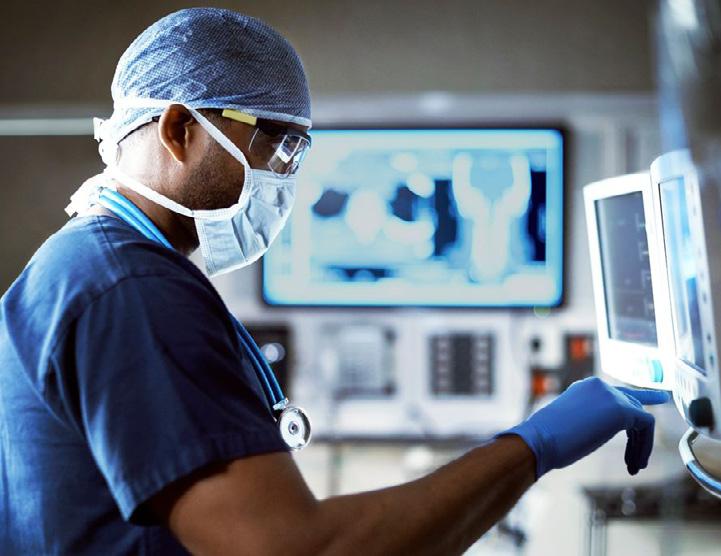
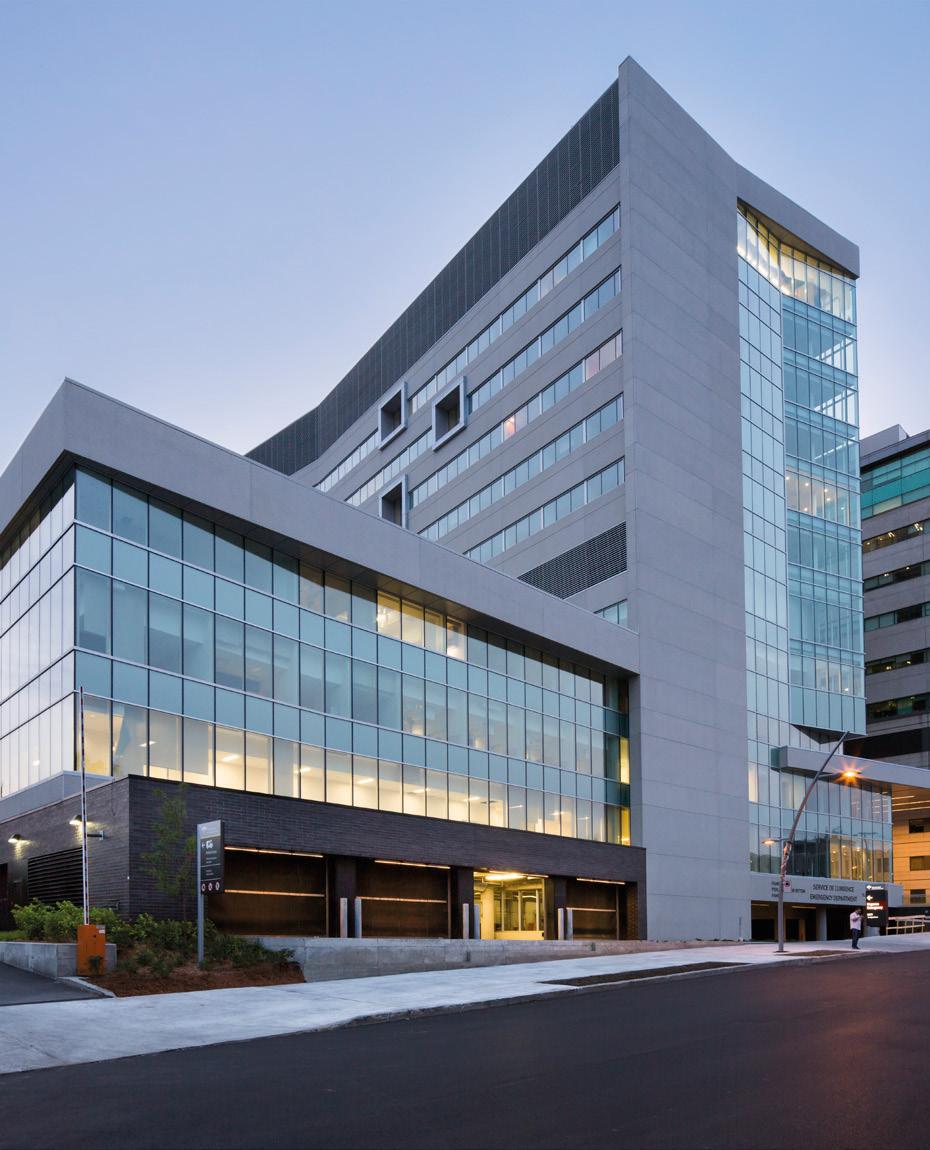
bd.com/en-ca
bd.com/fr-ca

of infectious patients in case of a pandemic crisis. Since then, these concepts have spread to the planning of other new EDs in Quebec. The JGH’s ED remains the busiest in the province, with close to 95,000 visits annually, prior to COVID-19.”

Phases two and three were designed to deliver on the promise of a “healing environment” on the nursing units and in all of the critical care areas, centered around the needs of patients and their families, and the requirements of medical professionals. Moreover, four clinical programs were completely reimagined to produce two units with integrated care trajectories based on the integrated practice unit (IPU) model. These were the Cardiovascular IPU (Cardiology, Cardiac Surgery, CVICU) and the Neurosciences IPU (co-localizing Neurology and Neurosurgery to provide an intermediate level of
“RECRUITMENT AND EMPLOYEE WELLBEING WILL ALSO REMAIN A KEY PART OF OUR FOCUS MOVING FORWARD, TO ENSURE THAT MEMBERS OF OUR STAFF FEEL THEY ARE BEING WELL SUPPORTED IN THE INCREASINGLY BUSY DECADE THAT LIES
care, including a state-of-the-art rehabilitation room).
“A particularly noteworthy feature of the new pavilion resulted from intentional planning back in 2010: This was the design of a dedicated pandemic ward, the first of its kind for any new expansion project in a hospital in Quebec,” Dr. Rosenberg explains. “Our experience with H1N1 in 2009 raised questions about our preparedness for future pandemics. As a consequence, during the early design phase of Pavilion K, we incorporated a 24-bed unit, in
which all rooms are single-bedded, equipped with negative pressure ventilation and including negative pressure antechambers.
“In addition, each nursing unit in Pavilion K is equipped with a certain number of negative pressure rooms –with and without antechambers – to accommodate additional patients requiring isolation. Accordingly, the JGH was designated as Montreal’s first adult COVID-19 site during the first wave of the pandemic, when as many as 176 COVID-19 patients were admitted at the peak.”
AHEAD”
– DR. LAWRENCE ROSENBERG, PRESIDENT AND CEO, JEWISH GENERAL HOSPITAL
Pavilion K’s operating rooms (OR) were designed to prioritize strict infection control and to optimize the flows of patients and materials. The stand-out features include a direct link with sterilization (elevators for clean and soiled items); a sterile core, with automated dispensing cabinets; case cart trajectories; pre- and postoperative patient flows, previously mapped out using RFID; a dedicated robotic surgery theater, and a hybrid robotic room, enabling cardiac surgeons and cardiologists to work together concurrently.
“Special mention must also be made of the use of DMI machines in the sterile core,” Dr. Rosenberg adds. “These are automated dispensing machines, tracked by dedicated software in real time, that require no human interaction. Their installation has permitted us to have 100 percent control of ophthalmology lenses, including use by specific surgeons. This has enabled us to track the type of lens implanted into which patient, thereby reducing costs and theft.”
Furthermore, the Sterilization Department was renovated in 2016 and remains to this day a showcase of best practice for hospitals in Quebec. With Pavilion K, the JGH has been able to centralize all sterilization activities across its 34 sites. All of the norms of

the Canadian Standards Association (CSA) are respected, and the JGH has had 100 percent compliance, as documented in four accreditations in a row.
“Lastly, we would like to draw attention to the important green issue of energy saving and sustainable development (ESSD),” Dr. Rosenberg says. “An $18.8 million ESSD project is now under way, with more than 85 percent of the measures completed. Ultimately, savings are estimated at $1.3 million per year. The project focuses on traditional energy management measures, but will also ensure the development of more ambitious and innovative measures, such as the installation of an aerothermal system to supplement the heating network of the JGH.”
analysis,” Dr. Rosenberg notes. “Virtual care will also be a focal point of our future activities, and we will scale up our COVID@HOME program to a full HOSPITAL@HOME program.”
Of key importance is OROT (“illumination” in Hebrew), the CIUSSS’s connected health innovation hub which is based at the JGH. OROT is bringing together healthcare professionals and privateHealthcare entrepreneurs to better understand the needs of healthcare users, co-develop prototypes, and integrate and commercialize the next generation of digital innovation. In a broader sense, Dr. Rosenberg explains, OROT is challenging its participants to do nothing less than “re-imagine the future of healthcare networks,” but always with an eye toward human-centered design.
JGH, a member facility of the West-Central Montreal Health Authority (CIUSSS), have pioneered the first application of the Microsoft HoloLens for use in real-time, extended reality (XR) clinical support of a minimally invasive heart procedure.

Looking forward, the JGH will continue to implement its digital health strategic plan, including its Connected Health Record, a nextgeneration electronic health record (EHR) under co-development; expanding data analytics and the data science portfolio with an international partner; introducing digital assistants – for example chatbots –to facilitate user interaction and experience.
“We will expand the operations of our command center to include AI-based modelling and data
“Recruitment and employee wellbeing will remain a key part of our focus moving forward,” Dr. Rosenberg adds. “This will ensure that members of our staff feel they are being well supported in the increasingly busy decade that lies ahead.”
JEWISH GENERAL HOSPITAL
Tel: 514-340-8222
communications@jgh.mcgill.ca
www.jgh.ca
Discover Our New Energy Efficient Project
Canada is a world leader in science, technology and innovation, and is recognized as one of the most innovative and competitive economies in the world.
The country’s largest and most populous province, Ontario, houses the second-largest IT cluster in North America, where industry giants such as Amazon, Google, and IBM invest in major R&D operations.
Ontario is also home to a concentration of world-renowned research institutes, that work collaboratively with businesses to create innovative, game-changing solutions.
It was the opportunities around innovation within healthcare that drew Ron Gagnon, President and CEO of Grand River Hospital (GRH), to Ontario’s rich R&D ecosystem.


NOW Solutions provides the capabilities you need to manage your ever changing workplace in the face of today’s complex requirements.



“This area of Canada is well known for its innovative mindset, the large presence of the tech community, and the need to innovate around healthcare,” he opens.
“What the industry needs right now, not just in Ontario or Canada but around the world, is significant innovation and change. Innovation is becoming an everyday focus here in Canada; we need to be willing to think and do things differently, and to take risks at all levels.”
With more than two decades of experience in the healthcare sector, many of the challenges that face the industry today are not new to Gagnon, who joined GRH in 2018.
“Healthcare is at a critical point, but this isn’t something that has happened overnight. However, for people like myself who are hardwired to find solutions to big problems, it is an exciting albeit challenging environment.
“When I look locally in Canada, the healthcare system needs to run in a way that meets the needs of the people, and we need to find a way to leverage technology,” Gagnon shares.
GRH is dedicated to improving care through innovation and research, as it enables high-performance programs, services and systems, nurtures effective and collaborative relationships, and promotes best practices.
CARE! – Engaged, invested, and there for one another, GRH brings its best every day to deliver high-quality, safe care.
TRUST AND BE TRUSTWORTHY – Keeping its word and believing others will too.
COURAGE TO START, HEART TO FINISH – Having the courage to innovate and continuously raise the bar.
WELCOME ONE TO WELCOME ALL – Valuing all individuals and all perspectives within the organization.
“The value-based culture that we’re building helps to differentiate us, and last year we were recognized by Forbes as one of Canada’s best employers,” Gagnon reveals.
To this end, GRH takes part in and leads a number of innovation and research projects to ensure that it remains at the forefront of best practices in care and service provision. Various departments within GRH also collaborate with academia, as well as government and private agencies, to participate in clinical trials that contribute to improved patient care.
Situated in Kitchener, GRH is one of Ontario’s largest and busiest community hospitals, serving a population of around 840,000 people in the immediate region of Waterloo and the adjacent Wellington area.
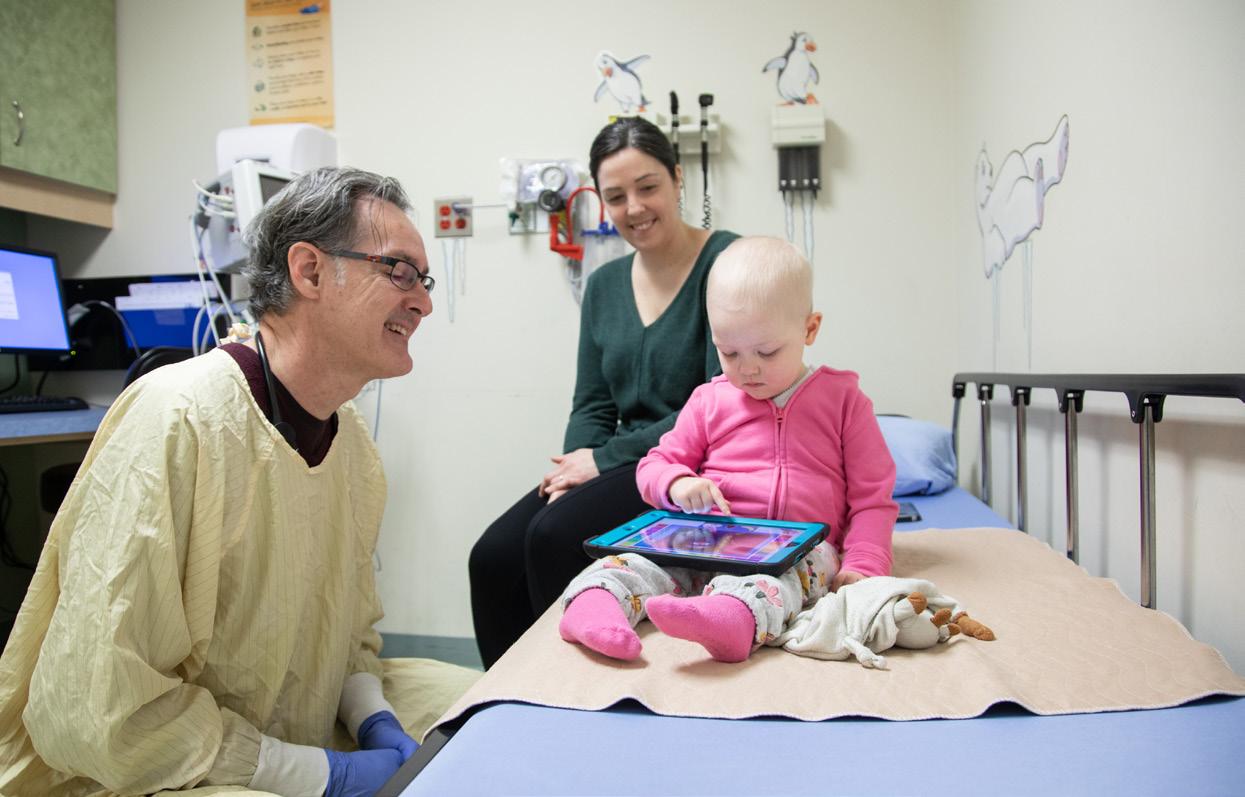
GRH’s broad range of regional care services is delivered by an outstanding team of over 5,000 highly experienced, knowledgeable and compassionate professionals at two large campuses and several satellite locations.

“What struck me early on when I joined the organization is the people of GRH, and the spirit of having each other’s back and stepping up to what’s needed for the communities that we serve,” Gagnon emphasizes.
For patients in need of emergency care or treatment for disease, severe illness or injury, GRH’s
Cloud-based, paperless, automation, Integration - these have become buzzwords in a digital world that relies on advanced technology to support the needs of today’s teams. As a key partner, NOW Solutions is proud to celebrate Grand River Hospital’s continued growth. NOW Solutions is able to easily support the hospital’s ongoing needs as they grow in size and complexity, with added sites and specialties, through its flagship software, emPath®.
emPath® is a web-based solution offering integrated payroll, human resources, recruitment, scheduling, benefits and talent management, as well as advanced report ability with workforce analytics.

With this solution, organizations are able to seamlessly integrate HR and payroll functions with comprehensive administrative and workflow capabilities, and easily interface with third-party solutions. With emPath® providing a self-service portal for employees and managers, companies increase employee empowerment and selfsufficiency. emPath® can be deployed in-house or through its cloud offering, each with benefits that align with the organization’s operations and goals.
Cloud-based/SaaS platforms are becoming the go-to solutions across most industries around the world. NOW Solutions excels on this delivery model with the ability to offer either single or multi-tenancy, allow for easy integration with other solutions through restful APIs, while being fully compliant with security and privacy industry standards.
With emPath®’s integration capabilities and versatility, an ERP solution is no longer needed as
our solution can communicate fluidly with other supporting applications. Unlike companies that sell ERP systems, we focus on doing one thing and doing it well - and that’s providing a best-of-breed system that meets the requirements of organizations with complex HR and payroll structures.
“Our clients typically have complex HR, benefit and payroll demands with the need to automate such onerous tasks as step-rates and multi-position employees with multiple bargaining units. Our rulesbased solutions support these needs and eliminate the need for reminders, missed increases, manual changes or errors.

“Many of our clients want to focus on their core business and need to reduce their IT footprint. Using our SaaS (cloud) solution offers tremendous relief.” – Marianne Malcolm, President, NOW Solutions.
For over 20 years, NOW Solutions has helped Grand River Hospital save hundreds and thousands of dollars from inefficient processes and additional labour. With emPath®, HR staff and managers can focus on employees and the significant day-to-day demands of a hospital.
NOW Solutions provides 24/7 access, periodic software updates, rapid deployment, full-service backups, and disaster recovery to support our clients. We grow with you by continuing to fine-tune and enhance our products based on customer feedback and constraints. Our advancements in technology make a significant difference for forward-thinking organizations like Grand River Hospital.
At NOW Solutions, we don’t just wait for the future. We embrace it.
The present and future of web-based HRMS emPath® is a robust solution from NOW Solutions that revolutionizes the way large organizations manage HR and payroll functions.


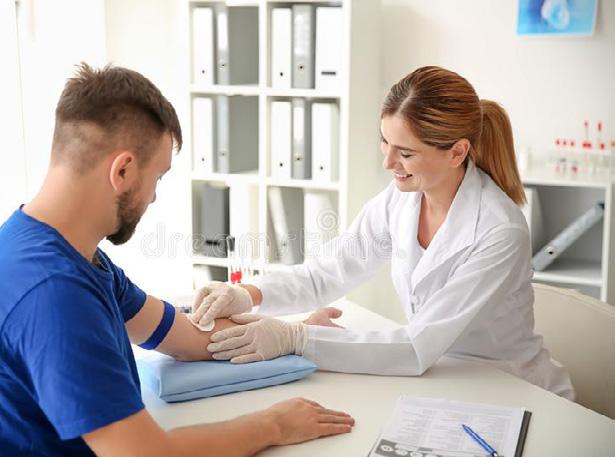




At EpiTOme our mission is to empower Canadians to have greater control of their health through direct access to high-quality health & wellness Screening tools.



In 2023, our suite of screening kits will be available through pharmacies and our ecommerce site, allowing you to purchase, swab at home, ship to our lab and have physician reviewed results delivered to your inbox. IT”S THAT SIMPLE.



Throughout the pandemic, often overlooked and unsung heroes within our community were brought to the forefront as their roles became more prominent in the fight against COVID-19. Yes, we will be forever grateful for the doctors and nurses who put their personal health and safety, as well as those of their families, on the line day in and day out. But if you look a little deeper there’s a layer of support workers who, while not viewed traditionally as “frontline”, were equally essential in our battle. They include the orderlies, personal support workers, healthcare administrators, phlebotomists and lab staff who played a supportive yet critical role and were often in the shadows cast by the spotlight being directed at others. COVID-19 required an immense level of sustained physical and mental energy from all allied healthcare workers who our region, province and country will be forever grateful for.
Locally, there were two companies who quietly played a major role nationally throughout the pandemic; Seegene Canada and EpiTOme Genetics.
Seegene Inc., is a global leader in molecular diagnostics and its Canadian subsidiary, Seegene Canada was instrumental in ensuring public health labs and hospitals, including Grand River,


had the swabs, reagents and equipment needed to meet demand. Seegene Canada’s Founder and CEO, Jamie Yantzi is a Kitchener native (born at Grand River Hospital) and a System’s Design graduate from the University of Waterloo. “Using AI, we were able to develop a PCR COVID test faster than our global competitors and ramp up production and supply efforts to ensure our customers were equipped with the best solutions and tools to tackle the pandemic.” Yantzi estimates Seegene supplied 40-50 percent of all PCR COVID tests across Canada over the last 24 months. With their equipment now functioning in labs across Canada, Seegene is deploying other tests from its extensive menu including Sexually Transmitted Infections (STI), Human Papillomavirus (HPV), Gastrointestinal (GI) and others.
One of the systemic gaps that was amplified during the pandemic was the lack of a public health or community-based lab within the region. By comparison, Windsor, London, Hamilton, Burlington, Toronto, Barrie and Ottawa all have community-based labs which were operating at capacity to process COVID tests, translating to quicker processing times within those regions. Enter Kitchener’s EpiTOme Genetics. Although not officially recognized as a community lab by the province, EpiTOme is one of only seven medical laboratories in Ontario to be licensed by the
 The Seegene STARlet is a robotic liquid handling platform that automates processing up to 700 tests/day
The Seegene STARlet is a robotic liquid handling platform that automates processing up to 700 tests/day
Ministry of Health and have its ISO accreditation. “Although we weren’t able to contribute our capacity and expertise to process COVID tests in Ontario, we helped other provinces with capacity issues when they needed it most,” says David Erb, who’s a partner at EpiTOme. “Some provinces were regularly flying tests into Breslau airport to be processed at our lab overnight with results sent electronically the next morning. It was an honor to be involved in that way.”
In addition to extensive workplace testing programs, while international travel restrictions were in place, EpiTOme formed partnerships with most national pharmacy brands to offer PCR testing for travel.

In a post-COVID world, EpiTOme is refocusing around its core mission of providing clientinitiated health and wellness screening tools directly to Canadians. “Like never before, COVID put Canadians in greater control of their health. We are all comfortable with the concept of athome diagnostics and we’re launching a suite of at-home health and wellness test kits that will empower people to live healthier lives,” says Erb. These kits will be available for purchase through pharmacies and online with self-collection in the privacy of your home. The collected sample is then shipped in a postage paid mailer to the lab
for immediate processing with physician reviewed results delivered directly to your inbox. Watch for these tests on the shelves of local pharmacies in early 2023.
What’s next for these two companies with strong local ties? Seegene and EpiTOme are collaborating to develop and deploy next generation liquid biopsy tests for important cancer biomarkers that, if detected early enough, will greatly improve health outcomes for cancer patients.
On the partnership, Erb says “Canada has an amazing healthcare system that delivers exceptional treatment following a diagnosis. We’re focused on prevention and are dedicated to bringing health and wellness screening tools to market to ensure we’re catching those serious diseases as early as possible.”
In closing Seegene’s Yantzi says “Waterloo Region is known globally as a innovation and technology hotspot responsible for the launch and success of high-tech companies that have revolutionized most aspects of our lives. The next wave of innovation will be in the digital health sector where big data will be used to convert the A's, T's, C's and G's of the genetic code into 0's and 1's to make valuable healthcare decisions and insights.”
www.epitomegenetics.com


Kitchener-Waterloo (KW) Campus provides acute, diagnostic and surgical care services with the goal of recovery and for patients to return home or to a setting that best meets their needs.

Freeport Campus, meanwhile, is a key partner in recovery and rehabilitation for patients who live with complex health conditions or require follow-up care for recent illnesses or injuries.
Complemented by six partner locations for cancer and kidney care, as well as three community treatment centers, GRH strives to provide exceptional, world-class care.

“We deliver our inpatient and ambulatory care service from our two main sites, which have 683 beds between them,” Gagnon tells us.
Given there is no shortage of opportunities in the region to trial different technologies, with leading experts in artificial intelligence (AI) and machine learning (ML) right on the hospital’s doorstep, GRH is exploring the use of AI and ML together with the University of Waterloo to support its world-class patient care and services.
GRH, whose total revenue last year totalled $516 million, is also partnering with Google to explore the development of an AI algorithm to triage cases, as well as investing in digital pathology.
“We believe that digital pathology is crucial to support our proposed neurosurgery program, which is one of the new services we’re working on bringing to the community in partnership with the Hamilton Health Sciences Center,” states Gagnon.
“We’re also currently piloting two innovative solutions, namely dual layer X-ray imaging and an AI-driven insights tool to predict patients’ clinical risk of mortality or admission to intensive care. Our investment in translation services has also been really helpful for newcomers to Canada and those who don’t identify English as their preferred language
DELIVER A WORLD-CLASS EXPERIENCE FOR PATIENTS, FAMILIES AND TEAM MEMBERS – GRH values people above all else and aims to make a positive difference in their lives every day. The experience of patients, families, team members, and partners will be put at the very top of GRH’s agenda.
PARTNER TO CREATE A WORLD-CLASS HEALTH SYSTEM – GRH will be an engaged partner, working with partners, patients and their families to co-develop a truly worldclass system to advance the health and health outcomes of people in the community.
INNOVATE AND TRANSFORM HEALTHCARE DELIVERY – GRH will leverage the collective talents and strengths of the hospital, community, and partners to innovate and accelerate the transformation of healthcare delivery.
for communication, so there’s a lot of exciting changes happening on the innovation front.”
Equally, GRH is a proud community teaching hospital and a preferred destination for learners from a number of disciplines.
Although it is not an official Academic Health Sciences Center (AHSC), the hospital provides a substantial amount of high-caliber education to over 1,100 on-site learners every year.

“We’re able to accomplish that through a number of affiliation agreements with different colleges and universities throughout Ontario and Canada,” Gagnon highlights.
To meet the needs of communities in the Waterloo region, one of the fastest-growing areas in Canada, GRH is working together with St. Mary’s General Hospital (St. Mary’s), also in Kitchener, to plan for the future of hospital-based services.

The Ontario government recently committed to investing $5 million to support the planning for the joint project, to build a new acute care facility and expand and renew existing infrastructure in the region.
As the community continues to grow, the pressure on regional hospitals such as GRH will only increase without new and expanded facilities that leverage the innovation and technology available in the area. GRH and St. Mary’s have also outgrown their aging buildings, with parts of the hospitals dating back over a century.
Gagnon describes the joint project with St. Mary’s as a “generational project”, one that will change the lives of people for years to come.
“The new state-of-the-art acute care site would be shared by both hospitals to house our regional programs,
including St. Mary’s regional cardiac program,” he outlines.
“The vision is also to renew and repurpose our existing GRH campuses as a highly specialized center for ambulatory and urgent care services, and give others the opportunity to co-locate on that property as well.”
Subject to change, the proposals will increase patient capacity across both hospitals by over 500 beds, and provide more clinical spaces such as intensive care units, emergency rooms, and modern operating theaters.
Plans for the new joint hospital, including its location, will be determined at a later stage after important consultations with relevant stakeholders such as the local community, hospital teams, health system partners, and government authorities.
Supporting quality patient care, operational insights and efficiencies through innovative supply chain and back-office services.
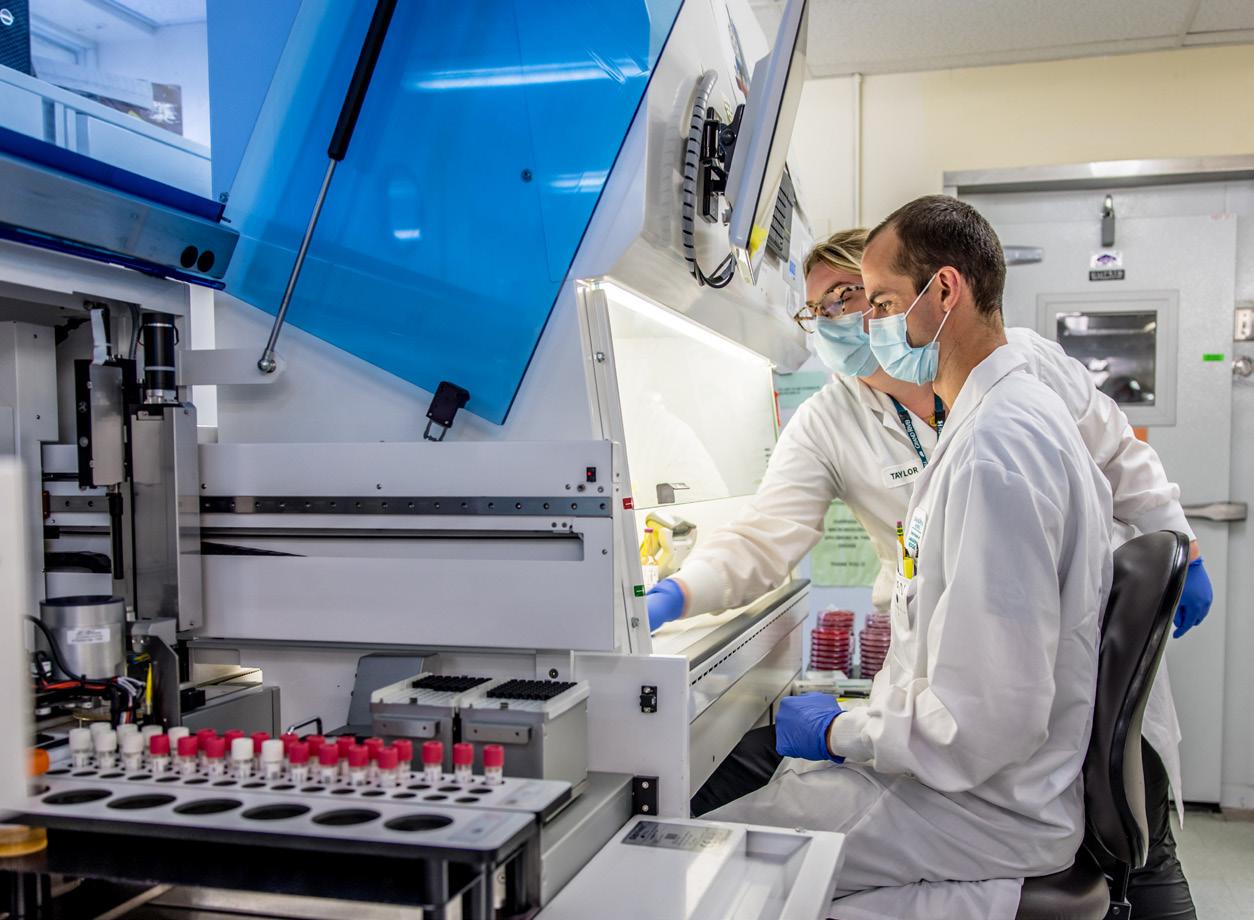
The global pandemic revealed the criticality of supply chain to the delivery of patient care. When demand for PPE surged at its onset, Mohawk Medbuy (MMC), a leading healthcare shared services organization, stepped up and stood out as a key resource – sourcing essential medical supplies and lifesaving drugs for care providers and the Province of Ontario.
MMC supports hundreds of Canadian hospitals – including Grand River Hospital – by negotiating largescale contracts for capital (FF&E) and medical products and services on their behalf. Last year, hospitals utilized MMC contracts for more than $1.4 billion of their purchases. “By consolidating spend, we generate savings that hospitals are able to reallocate to frontline care,” said Tony DiEmanuele, MMC’s President and CEO.
Along with procurement and contract management, MMC also provides warehousing and logistics, accounts payable and linen services. But what sets the organization apart is its resiliency and focus on innovation. “Our collaborative approach – with member hospitals and the vendor community – has allowed us to develop unique programs to address the pain points facing health care,” said DiEmanuele.
MitigAID™ is just one example. The program notifies health care providers of manufacturer supply disruptions for 160,000+ items, identifies substitute products and tracks resolutions via a comprehensive digital platform supported by MMC’s robust data management and analytics capabilities. On more than 5,000 occasions, MitigAID has helped reduce patient risk and lighten hospital workloads.
www.mohawkmedbuy.ca
“WHAT THE INDUSTRY NEEDS RIGHT NOW, NOT JUST IN ONTARIO OR CANADA BUT AROUND THE WORLD, IS SIGNIFICANT INNOVATION AND CHANGE”
– RON GAGNON, PRESIDENT AND CEO, GRAND RIVER HOSPITAL

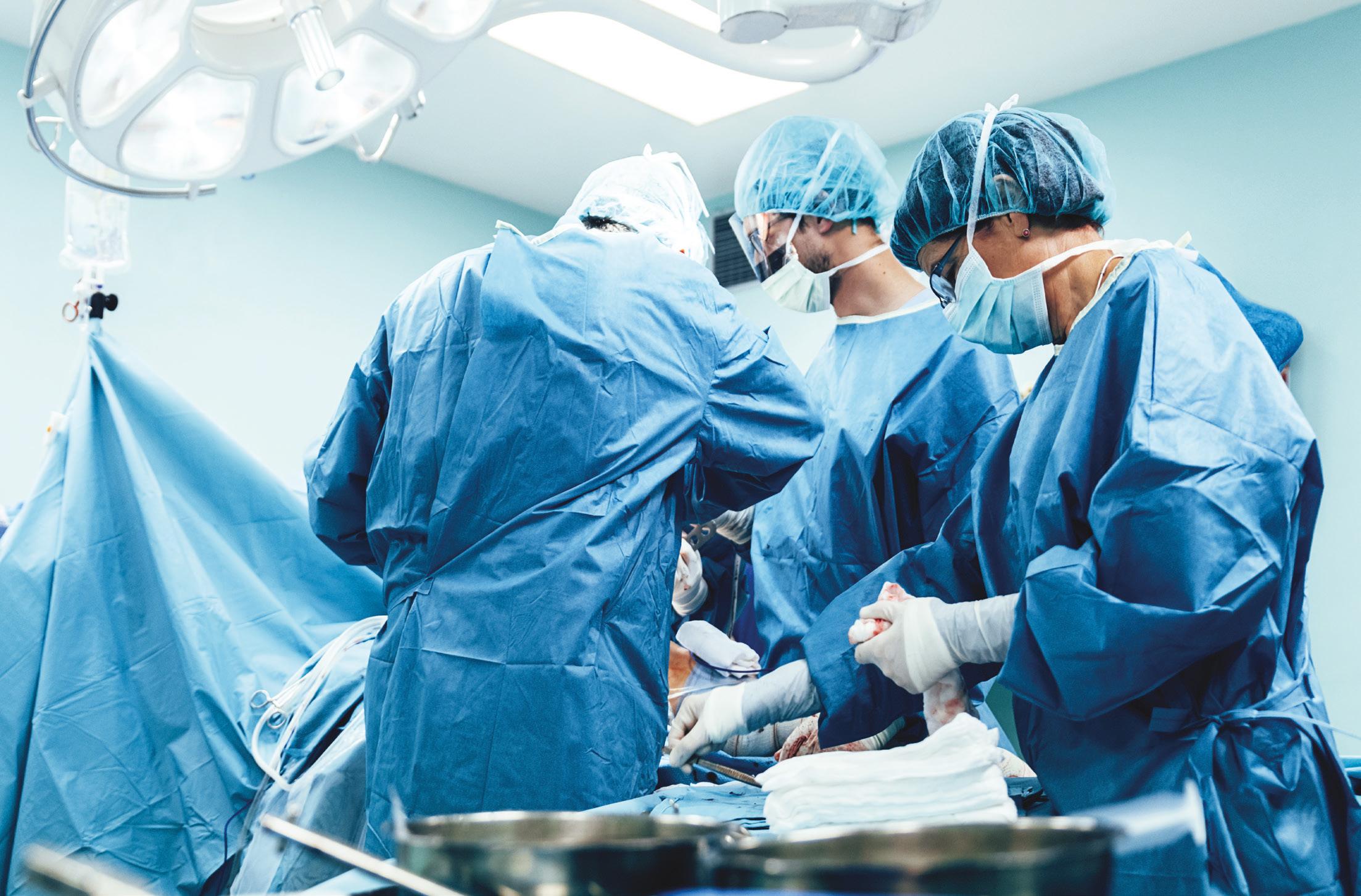
Mohawk Medbuy has demonstrated a unique capacity to innovate through the development of customer-centric programs like MitigAID™, Qwantify™, PPEplus™, OHTconnect™ and others. Individually, they each address a specific pain point of hospitals and other care providers – from managing supply disruptions to automating replenishment to bringing new savings opportunities to primary care providers.
Collectively, they demonstrate the collaborative, solutionsminded approach of Canada’s leading, not-for-profit, health care shared services organization – and explain our continued growth. It’s just the beginning, as we embark on new ESG initiatives and collaborate with Indigenous partners to help create better, more sustainable health care in Canada.
The next steps also include engagements to further identify the services that the community needs, and how to deliver the project in the fastest possible timeline.
“The challenge in Ontario is that these types of developments take somewhere between 10 and 15 years, on average,” Gagnon says.
Though it will take time to implement these changes for a stronger healthcare system for the Waterloo region and beyond, GRH and St. Mary’s are ensuring that the community is kept engaged and informed throughout the project.
“We take great pride in the way that we collaborate within the healthcare system. It’s very much about how we all succeed together.”
In the meantime, GRH has developed a mid-term plan, which includes a magnetic resonance imaging (MRI) project that is close to conclusion.
“In addition to adding a new MRI, what we’ve been able to do with the existing MRI machine is essentially rebuild it on-site. At the end of that rebuild process, we will have a second new MRI without having to go through all of the construction processes and disruption related to it,” adds Gagnon.
“There’s a new MRI machine coming to St. Mary’s as well. When I joined GRH in 2018, we had only one hospital-based MRI between the two hospitals, so it was significantly underserviced.”
Do you wish you could extend the service life of your Chillers, while optimizing performance and maximizing efficiency?
Grand River Hospital did just that. They partnered with Carmichael to refurbish their 22 year old chiller including a complete compressor overhaul and new purge unit, bringing its performance back to original factory specifications.
Carmichaels Chiller Team can:
• Rebuild chillers extending their service life.
• Predictive maintenance services such as Open and Inspect and Eddy Current Testing to identify worn parts and replace before failure.
• Vibration analysis and thermographic scanning.
• Chiller Plant Optimization.
• Energy retrofit projects.
• VFD and soft start upgrades.
• Chiller Panel replacements.
• Chiller regasketing to prevent costly leaks.
• Operation and preventative maintenance programs.
Technology is changing the way we live and how care is delivered. Our healthcare-specific solutions are preconfigured for faster time to value, with improved decision making enabled by an evidence-based approach that provides access to real-time data across the enterprise. Our approach is rooted in decades of knowledge and direct healthcare experience.
We leverage your passion and ability to deliver quality care, establishing long-term partnerships that bring continuity to your mission.
www.infor.com/healthcare

“I’VE BEEN HUMBLED BY THE SPIRIT, STRENGTH, AND CAPABILITY OF OUR LEADERS AND THE ENTIRE TEAM”
– RON GAGNON, PRESIDENT AND CEO, GRAND RIVER HOSPITAL




For over 100 years Carmichael Engineering continues to provide industry leading innovative solutions to customers across Canada.

Established in 1922 Carmichael became one of the first national mechanical services companies of its kind Now a fourth generation family company, Carmichael is focused on helping customers attain more sustainable operations by leveraging systems intelligence and technology

The COVID-19 pandemic exacerbated challenges already entrenched in the healthcare system and has highlighted the need for new and improved hospital infrastructure in the region.

The pandemic was nevertheless a great example of how the team at GRH leveraged their talent to help develop new relationships across Ontario and the provincial healthcare system, to add new capacity and services in the community.

“We added 150 beds to our operation in a very short period of time. It goes back to that culture of finding a way and mentality of getting things done,” Gagnon tells us.
“For sure, it was quite unprecedented. I would say I’ve been humbled by the spirit, strength, and capability of our leaders and the entire team. None of what we have accomplished would have been possible without them.
“Likewise, we couldn’t have achieved anywhere near as much without the strong working partnerships that we have with other hospitals and community partners in the area. Nobody has been in it for themselves, and it required all of us to think differently about the ways we can work together to support and protect communities,” he continues.
Since the start of the pandemic, GRH has cared for close to 2,000 COVID-positive patients, performed more than 240,000 COVID-19 tests, and managed a regional vaccination center that provided over 330,000 COVID-19 vaccinations. Taking into account pharmacies and other smaller vaccination sites, this single regional center provided the greatest number of vaccines for the community.

“These have been some of the most challenging times that we’ve ever experienced in healthcare, and the team has tirelessly put the lives of others ahead of their own interests.
They showed up and brought their best every day, and I think they’ve had a real positive impact on the people that we serve,” Gagnon acknowledges.
In addition, almost 50 million pieces of personal protective equipment (PPE) have been distributed by GRH’s purpose-built supply chain, which also supplied hospitals across southwestern Ontario and other community providers.

The safety of patients and staff was one of the non-negotiables set out by GRH at the beginning of the COVID-19 pandemic, as well as the willingness to think and do things differently.
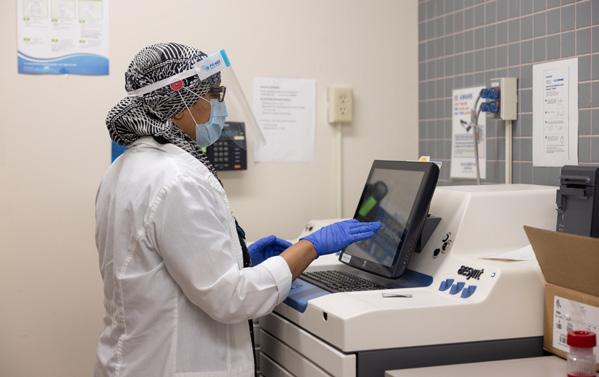
“So far, our COVID-19 response has cost north of $200 million, so it has been a pretty significant effort.”

GRH developed its Strategic Plan for 2021-25, branded as Aiming High, as it was responding to the COVID-19 pandemic.

Inspired by the communities that it serves, the vision of the plan is to build a world-class health system supporting healthier lives. GRH is dedicated to seeing that vision realized, and this plan marks the beginning of the hospital’s journey along that path.
Three strategic directions, each with its own four key goals, have been identified by GRH to achieve the results that it is aspiring to: deliver a world-class experience for patients, families and team members; partner to create a world-class health system; and innovate and transform healthcare delivery.
The plan is informed by thousands of voices, from patients and families to hospital team members, partners and community leaders.
“We deliberately took a future-back approach, so instead of starting where we are today, we created that vision of a world-class health system for 10 years from now,” notes Gagnon.
“We worked our way back to where we are today to develop our plan, and we chose our vision to align with the world-class aspirations of the region that we serve. It’s not just about us as a hospital, it’s about supporting a larger system.”
GRH has also identified a number of specific measures of success, to benchmark and evaluate whether or not the Strategic Plan has realized its vision and achieved its goals.

“For both five- and 10-years’ time, we’ve set out objective measures as part of the success of our strategic plan,” he informs us.
“I’m extremely excited about the
plan that we’ve developed, and our path for the future.”
One of GRH’s key priorities for the years ahead is to continue to build out its efforts surrounding diversity, equity, and inclusion. As one of the key strategic goals that will enable the hospital to deliver a world-class experience, GRH is creating structures and launching programs for longterm, sustainable change.
Equally, GRH will continue to respond to the COVID-19 pandemic, whilst driving much-needed healthcare innovation and research in Ontario and beyond.
Following the COVID-19 pandemic, healthcare has become a focal industry that has had to rapidly evolve to the global challenges that have arisen. Technology and logistics have been two of the most crucial spheres of development to companies during this period, after the impact of national lockdowns and restricted social interaction. In Canada, these have proved to be critical to the success of healthcare entities, especially considering the vast travel distances and rough terrain across the country, ensuring that the national population has continued to receive professional medical services.
Within the space, Switch Health continues to leverage technology to deliver secure, compliant, frustrationfree healthcare experiences. Established in 2017, Switch Health is on a mission to create equitable and affordable healthcare access to patients no matter who they are, where they are, what they need, or when they need it.
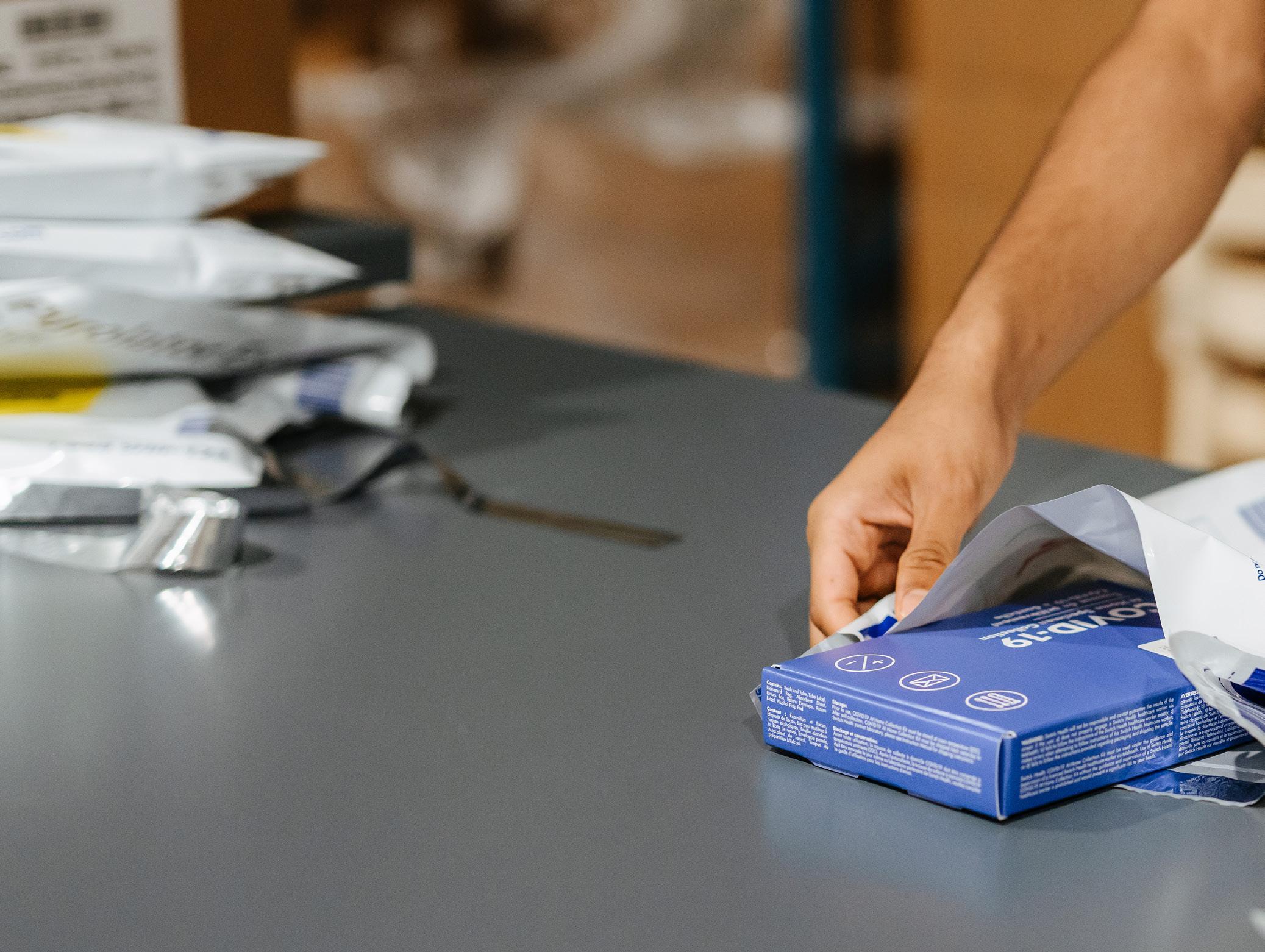
Switch Health is a technology company and platform at heart, making healthcare testing and diagnostics
accessible to all Canadians no matter their location.
It is the view of Switch Health that a patient should not be at a certain point of care in order to receive care, leading to the company’s decentralized testing model, discreet home kits, and telehealth experience looking to cover a multitude of areas from general health and wellness to COVID-19 and sexual-related health – the foundational platform for the company.
Switch Health originally focused on operating healthcare initiatives in disease management with a specific focus on diabetes, pooling and sharing data to help monitor patient records and progress.
“One of our first-ever activities was with cohorts of people afflicted with diabetes, and building and connecting data stores via data bridges,” begins Marc Thomson, Co-CEO of the company. “For example, somebody afflicted with diabetes may have two or three tools they use to manage their ailment, involving data collection and data storage, with data being collected in two or more locations depending on what they were monitoring.
“Our ethos is to create an experience where patients
Healthcare is evolving. We take a look at Switch Health, the Canadian health technology player enabling accessibility across the country, and speak to executive members of the company helping to guide forward a 21st century view of healthcare
Writer: Jack Salter | Project Manager: Felix Revell
can access a wealth of their own data and share this with physicians and their healthcare teams – a healthcare ecosystem.”
Switch Health’s ethos was the foundation from which the company grew, trusting patients to self-monitor and self-report to medical professionals, and enabling insights and information to pass back and forth between the two parties. In this way, patients and professionals work together to reach a diagnosis and result whereby the former is involved and up to date with their diagnosis, while medical staff gain a greater understanding of individual patient needs.
Today, Switch Health is a key operator in the Canadian healthcare space, having utilized its technological and digital advantage to help patients across the country before, during, and in the wake of the COVID-19 pandemic.

“Through the COVID-19 pandemic, Canadians began adopting new technologies during a period where it became important to be more proactive about one’s health,” Thomson says. “There was an incredible amount of growth within Canada, specifically with the adoption of health technologies and deeper industry partnerships to further access to innovative care.”
“While the past three years have been incredibly challenging for our healthcare system, it has also been a disruptive force that has pushed all of us to adopt new

“WE SIMPLY WANT TO PROVIDE THE BEST SERVICE FOR ANYONE IN CANADA, AND EVEN BEYOND”
– MARC THOMSON, CO-CEO, SWITCH HEALTH– DILIAN STOYANOV, CO-CEO, SWITCH HEALTH
ways of delivering care – especially via partnerships between government and broader industry. Within this, Switch Health is helping to guide the industry towards a more 21st-century view of healthcare,” continues Dilian Stoyanov, Co-CEO of the company.

“COVID-19 came out of nowhere, and we realized that we had a lot of infrastructure and technology partnerships, as well as know-how with public systems and industry partners to scale a nationwide testing program for the pandemic. This started with the province of Ontario, which then scaled to a border testing program at 114 land borders, and onto all of Canada’s major airports.
“We are now taking our developed platform and using it in the area where we started, decentralized diagnostics and testing for a variety of ailments. We believe that we can apply our experience in health logistics and diagnostics to achieve better access and outcomes for people who traditionally have not been as well served in
the past.”
Prior to Switch Health’s operations in the healthcare industry, patients had access to telehealth and other forms of remote healthcare services, yet the company remains a pioneer in facilitating self-diagnostics at home under medical supervision on a large scale, including active translation services in over 235 languages.
Combining open communication, collaboration and monitoring between patients and medical professionals, and diagnostic assurance through sample collection and delivery, Switch Health draws a line between wellness and healthcare, delivering the scale of the former and the precision of the latter.
Following substantial success in helping patients and facilities throughout the COVID-19 pandemic, Switch Health took the step to further its services through

“SWITCH HEALTH IS HELPING TO GUIDE THE INDUSTRY TOWARDS A MORE 21 ST CENTURY VIEW OF HEALTHCARE”
At the heart of every community, you’ll find organizations fueled by committed people who are passionate about building a better future for us all. We are inspired by our friends at Switch Health and their continuous efforts to bring care to you –wherever you are.
acquisition and integration, bolstering what it offered the Canadian healthcare industry.
“As we looked to the future of our company and our vision to bring diagnostic laboratory testing to all Canadians regardless of their location, it made sense to vertically integrate certain parts of our business,” explains Thomson.


The company acquired Bio-Test Laboratories in April 2022. Bio-Test is an accredited and licensed laboratory located in Ottawa, Ontario and is one of six community labs within the province, and has over 50 years of experience in the lab space.


“So, what we have is the merging of two entities; on the Switch Health side, we have the ability to collect a specimen from home through logistics, kits, and communications, but on the Bio-Test side we have an experienced laboratory that specializes in diagnostics,” he continues. “By combining these elements, we are able to bring a modern logistics experience to healthcare, as well as enabling greater access.”
This is an especially important mission in Canada, where rural and remote locations often couple with rough terrain and infrastructure difficulties, making direct travel and visitation to healthcare facilities more difficult for the average patient.
Switch Health leverages Bio-Test’s ISO-certified
The best way to support a community is to be a part of it.
A large part of establishing the logistical side of the company was based on its ability to implement a reliable turnaround time of pick up from anywhere in Canada
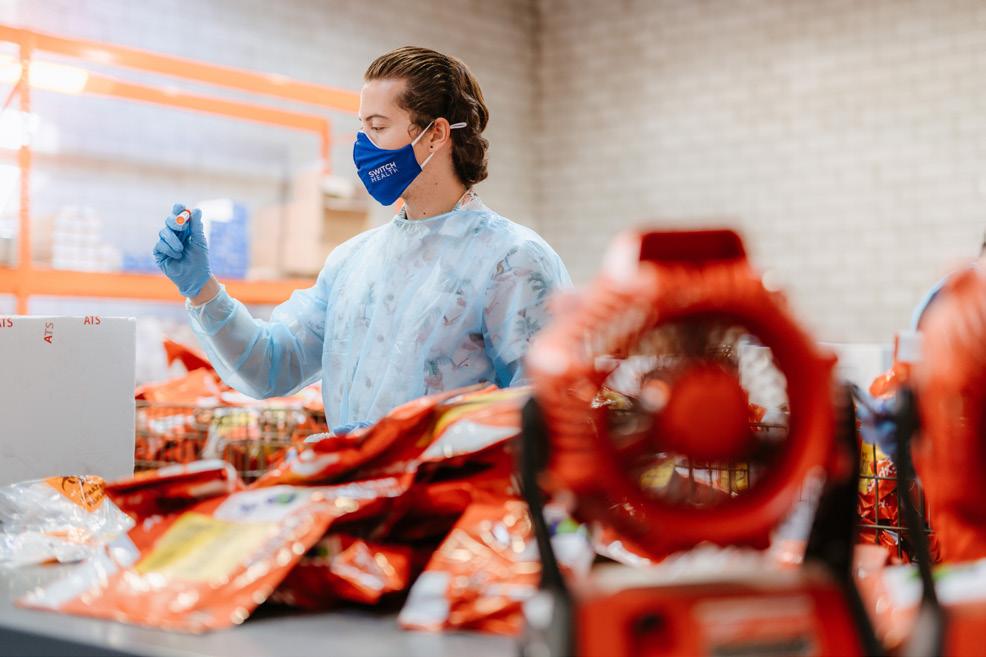


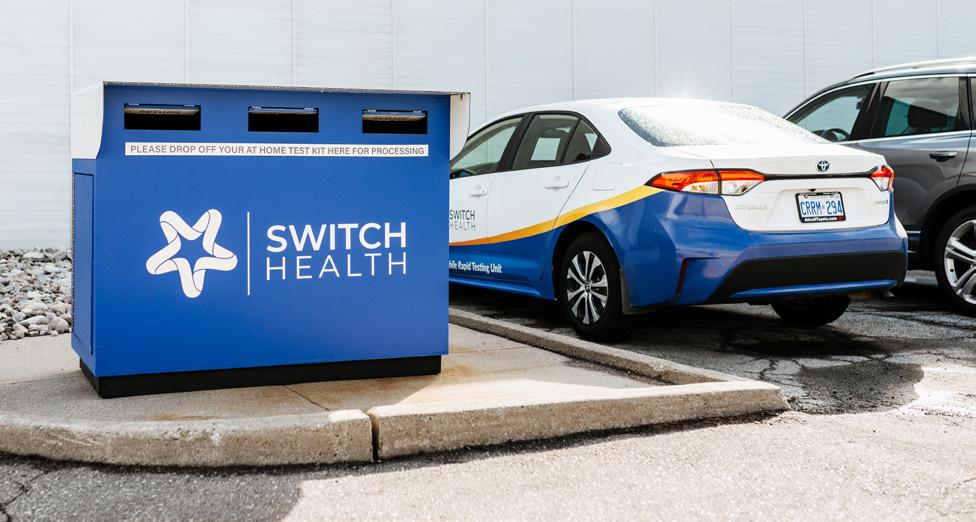

services to validate tests such as HPV, STI, and many others, helping as many people as possible with accessible diagnostic testing.
Incorporating seamless and efficient logistics services into operation was a key aspect of Switch Health’s vision, and one that has been critical to the organization’s success throughout the COVID-19 period and into the present.
According to Thomson, a large part of establishing the logistical side of the company was based on its ability to implement a reliable turnaround time of pick up from anywhere in Canada to delivery to centralized partner laboratories for testing and diagnosis.
“We pulled together networks into one platform and scaled them to service provinces across the country,” he elaborates. “Partnering with Uber was a no-brainer, as well as creating our own network of drop boxes that people can access and use themselves.

“For more isolated places in Canada you are not going to find Uber services, however, we wanted to still be able to provide a fantastic service with partners such as Purolator which allowed us a faster turnaround of shipments, and consequently with these additional partners we ended up serving around 95 percent of Canada within 24 to 48 hours.”
This mixture of speed and quality service is a core focus of the company moving forward and an aspect of Switch Health that will be continually built upon into the future.
It is imperative for the company that samples and
specimens collected from patient homes are taken to laboratories with a swift and efficient turnaround.

“We simply want to provide the best service for home diagnostics which means continuing to have a clinical oversight throughout the process – which is novel in our space,” Thomson says. “We do have international aspirations, and while there are many competitors out there, we are bringing a unique feature to home diagnostic solutions.”

Furthermore, Switch Health will be introducing some new tests to the market and expanding its locations, including a five-acre 8,000 square-foot facility which will become an innovation hub.
“This facility will house another laboratory focused on research and development,” Stoyanov says. “Some of that research and development includes collaboration with leading companies in cancer detection and pandemic preparedness through innovative rapid testing technologies.”
For Switch Health, every Canadian is important. This is shown in the company’s ability to provide services and support across digital and telehealth platforms, whether people have or lack connection to the internet, Switch Health can reach and help them.
Switch Health also supports American Sign Language, as well as 235 other languages, making the company’s technologically accessible services not only scalable globally, but also accessible to anyone, anywhere.

“WE ARE ABLE TO BRING A MODERN LOGISTICS EXPERIENCE TO HEALTHCARE, AS WELL AS ENABLING GREATER ACCESS TO HEALTHCARE THROUGH PARTNERSHIPS WITH BOTH GOVERNMENTS AND BROADER INDUSTRY”
Emerald Textiles is the largest in linen and laundry commercial processing within acute care, servicing Hospitals, Medical Centers, and specialty clinics across four states in the Western US. CEO Andy Kratky discusses the company’s latest developments and its continual growth in the market
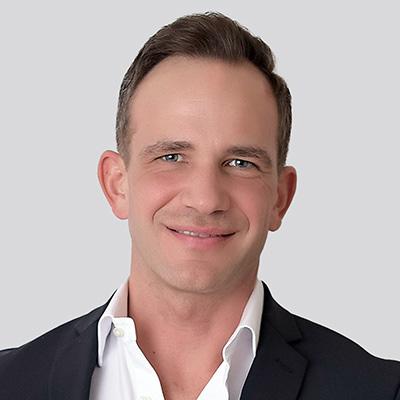
Writer: Jack Salter | Project Manager: Felix Revell
Since the beginning of the COVID19 pandemic, we have been reminded that healthcare is one of the most critical sectors to the health and wellbeing of people around the globe, and the continued function of everyday life, from individuals to businesses and even governments.
Within the sector, there are key players who keep the wheels of the industry turning in one way or
another, such as the suppliers of healthcare resources.
One such company is Emerald Textiles (Emerald), the largest healthcare linen service provider that specializes in servicing the healthcare industry, with 12 state-ofthe-art commercial linen processing facilities, three service centers, and industry leading operations across the Western US.

“We are the largest provider of
healthcare linens in the region, and we have 12 different sites across four states,” introduces Andy Kratky, CEO of Emerald. “These are our processing facilities, and on top of this we have three service centers strategically located to serve a wide base of healthcare customers.
“We measure ourselves on the pounds of linen produced each year. This number sits at around 330 million clean pounds provided to our
Andy Kratky, CEOcustomers annually, which is sizable compared to others in the field.”
Emerald’s 2,200 employees serve around 2,500 customer sites in the country, delivering the highest quality products to the sector across the western region.
“Emerald is 99 percent in the healthcare space, with one facility in Reno (Nevada) that additionally
produces linen for the hospitality sector,” Kratky says. “Our standard items focus on any linen that you would find in a hospital room, such as bed sheets, bath blankets, pillowcases, and many other items. Another key part of our business is non-standard items such as reusable isolation (ISO) gowns, scrubs, and microfibers, for example.
“Since the COVID-19 pandemic, reusable ISO gowns have been a
very important part of supporting the healthcare workers in hospitals. At the beginning of the pandemic, many experienced supply chain disruptions and we did a great job ramping up our inventories such as reusable ISO gowns. Being proactive in our inventory ramp up ensured our healthcare partners had enough supply and got what they needed. This was especially important when disposables became difficult to find,

to ensure that the workers were as safe as they could be during work hours, all while providing sustainable, reusable, hygienically clean products.”
What truly sets Emerald apart from the competition in the industry is not just its scale of service across the Western US, but also the quality of specifications the company follows when it comes to its products.
“We provide a higher quality, higher spec product to service our customers and make sure that they have the best quality products within their hospitals,” Kratky continues. “The lack of issues when it comes to our quality, mixed with our dedication to making sure that our customers have the best products and enough supply on time, is critical to Emerald, and is what really differentiates us.”
While quality remains key to serving customers, growth and a focus on consolidation are also instrumental in establishing a lasting foothold in the industry. Across the US healthcare space, players are competing to incorporate additional institutions and grow to best service regions and states in their specialized areas.
“Traditionally speaking, there are larger healthcare systems that branch out across the US, and then there are systems that have been more regionally focused, or super-regionally focused with market density based in large cities,” Kratky elaborates. “Then there are a lot of smaller independent healthcare facilities that support different local areas but do not really branch out throughout their state,
Norchem began its partnership with Emerald Textiles in 2010 at their first plant located in San Diego, California. The ongoing goal of the partnership has been to increase textile cleaning efficiency through our green detergent programs, reduce utility consumption through our water recycling and heat reclamation systems, and consult on production process improvements by leveraging our plant automation expertise.

After implementing Norchem’s green chemistry for healthcare with consistent positive results in San Diego, the plant was under pressure from the city to manage TDS to sewer. As water costs and sewer costs increased, Norchem stepped in to design a complete turnkey UltraPure® Water Filtration system for wastewater reclamation and an RO system for incoming water TDS reduction. After installation, the plant was able to successfully reduce the TDS of the incoming water to stay below the discharge limit of 1,000 ppm TDS and recycle up to 70 percent of total plant wastewater.
Norchem now services eight Emerald Textile plant locations in the SouthWest with our Alkapon™ Detergent program. Their first location in San Diego after 11 years continues to benefit from the UltraPure® WasteWater Recycling System and the RO Pure® Reverse Osmosis System.

Since partnering with Norchem, Emerald Textiles has recycled 430+ MILLION gallons of water! Norchem’s application engineers and customer care technicians balance the injected chemistry with recycled water to maximize heat, water reclamation, and surfactant recovery. The result is BIG SAVINGS at the wash aisle and optimum utility conservation. NorchemCorp.com


“What we have seen over the past several years is a consolidation of the market. You have larger healthcare systems that are going out and acquiring smaller independent systems that are a good fit with their footprint, and they are also building new hospitals and medical office buildings to continue their outreach.”
Emerald has been able to achieve this trend in acquisition and growth, being able to implement additional facilities, whether they are greenfield developments or otherwise in order to successfully grow and expand with their customers.
In recent years, Emerald has been driven by this growth focus across the Western US. According to Kratky, the initial vision of the company was to create a linen and laundry healthcare provider that could service larger healthcare systems, with the business starting up in Northern California catering to a small number of different facilities.
Emerald has grown significantly through organic growth, but also continues to grow through acquisition and expansion.
“The most recent acquisition was with Angelica Corporation
Emerald continually invests in the latest equipment, technology, and infrastructure systems that result in fewer manual processes, greater automation for uninterrupted laundry processing, and produce the highest quality linen for patient satisfaction and greater peace of mind. It’s the Emerald Difference. Investments include:
• Computerized loading and transferring systems, automated conveyors, stainless steel surfaces, microbe resistance flooring.
• Award-winning and resource saving continuous batch washers, energy saving dryers, automated steam finishing processes, and folding robots.
• Gravity-enabled overhead E-Tech rail systems that automate laundry bag transferring are all around better to preserve Emerald’s hygienically clean linen, maximize linen processing and efficiency, save more on natural resources, and better for employee satisfaction.
• High tech automation and rail systems that move Emerald’s garments from steam to racks ready for customers.
Emerald’s clean linen processing is Hygienically Clean Healthcare certified through its partnership with TRSA Association for Linen, Uniform, and Facility Services Industry. Emerald is dedicated to quality assurance and best management practices to ensure the highest quality and safety for customers, their patients, and employees.
• Hygienically Clean Healthcare Certifications adhere to all healthcare standards and policies
• Ongoing inspections and microbiological testing for the highest quality assurance
• Full compliance with all State, Federal and OSHA regulations
• Monitors complete textile processing cycle from handling and transporting to in-facility processing
• Best Management practices and personnel training
With almost 30 years of history within the textile industry, American Textile Systems (ATS) is a key player specializing in supplying leading quality textile products to the linen supply, hospitality and governmental industries.
Based in Southern California, ATS has grown to become a medium-sized business with company success owed to an exceptional and dedicated team of employees, many of whom have been with the business for decades.
ATS’ supply chain has been carefully curated and nurtured to provide the company with industry leading quality products, sourcing from the very best mills in the industry, carrying complete lines of the following products:
• Bath linen, including wash cloths, hand towels, and bath towels.
• Bed linen, including pillowcases, bed sheets, contour sheets, and knitted contour sheets.
• Over the bed products, such as blankets, spread blankets, and comforters.
• Patient wear, including patient gowns and iv gowns in poly/cotton blends and 100 percent polyester.
• Ability to customize products including property marking, kaumographing, and continuous imprinting (cim). ATS can build products with any construction, dobby pattern, color, and shade of bleaching.
Today, ATS has distribution centers in Southern California, Texas, Georgia, and New Jersey, allowing the company to serve customers promptly, efficiently and just-in-time with same-day and next day deliveries via company operated delivery trucks and excellent logistics control.
When timings are extra tight, ATS can easily accommodate “emergency” shipments and deliver goods within hours of the purchase order being placed. www.amtexsys.com




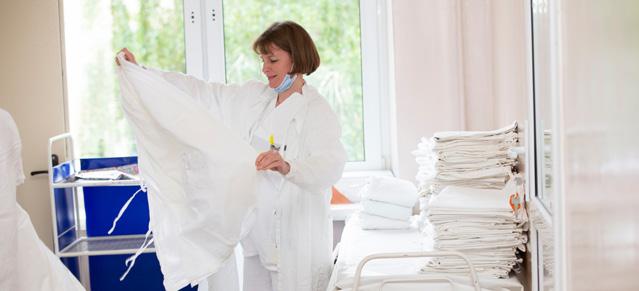



(Angelica), another provider of hospital linen and laundry, in which we acquired nine different facilities from them in the west of the US,” Kratky says. “The idea was to continue to scale up, and there were certain facilities that were very good, and we didn’t have to alter. Some other facilities we have had to deploy capital and invest in upgrading them.
“We have a strong market position because of our success in growing organically and through the investment in acquisitions such as Angelica. Because of our footprint and the deployment of our strategy, we are able to support larger healthcare system customers without compromising quality or customer experience. Recently, this has accelerated and put us in a good
position from a customer standpoint as well as in terms of capacity.
Angelica was a large integration due to the number of sites that we incorporated, but this was completed in around five months. I would call this a success from start to finish, because usually it takes far longer to fully integrate a company of that size. Our team was also able to support our customers and partners during this time and did a really great job.”
On top of the Angelica acquisition, Emerald has undergone several plant expansions, including at its Phoenix (Arizona) plant, to improve capacity, efficiency, and customer service.
“The Phoenix expansion has been a really nice success story for us since we acquired the business,” Kratky tells us. “We knew that it was one of
Our dedicated account management and service team partners with our customers to create a program that best fits the specific needs and goals of each of our healthcare facilities and departments.
• Providing dedicated, local customer experience teams for personalized care, assurance of stock, and monitoring usage
• Building solution-oriented, customizable programs that meet the specific needs of each department
• Generating goals and savings with improved linen utilization and linen management best practices
• On-site product and usage training education with a local team of experts
As a global supplier and manufacturer of healthcare textile solutions, MIP provides comfort and efficiency for the healthcare community and its people.

As a proud partner of Emerald Textiles, we hold people at the heart of all that we do. We provide innovative, as well as cost-effective, products, services, and solutions for the commercial laundry industry.

We know the value of our products because we see the impact that they have on the lives of laundry operators and staff. Find out how we can help you at mipinc.com
www.mipinc.com
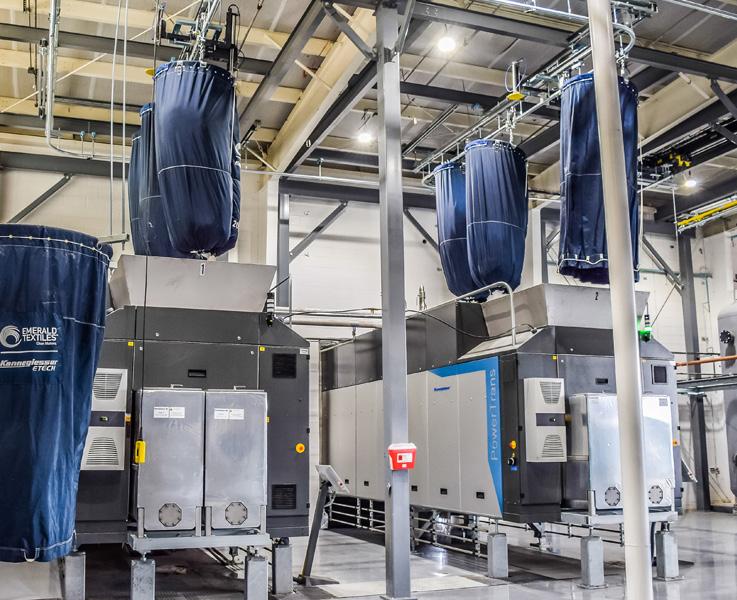








the better running facilities that we acquired, and it has a great team of people working there. Earlier this year, we were able to secure a large new health system partner in Phoenix, and we had to expand our capacity to take on such a customer.
“We are currently deploying another of what we call a continuous batch washer (CBW) tunnel system, to make a total of three CBWs, along with five new industrial sized dryers to expand such capacity. This will also allow us to continue our growth efforts in that market. In addition to Phoenix, we have deployed $50M of capital over the past four years to upgrade several facilities and expand capacity to take on new customers, which results in better customer support and improved efficiencies in the facilities.”

Since Emerald’s acquisition of Angelica
and its additional facility investments, the company has undergone substantial growth in the market.
“Last year we grew 18 percent organically, and this year to date we have grown 12 percent; because of this, we have expanded capacity in certain facilities and continue to do so,” Kratky tells us. “We have also increased investment in our linen products, continue to invest in hightech automation through quality equipment, and internal investment of our people.”
For Kratky, Emerald’s workforce is the center of the company’s success, and reinvesting in employees has been, and continues to be, a primary focus on in-house development across Emerald’s many sites.
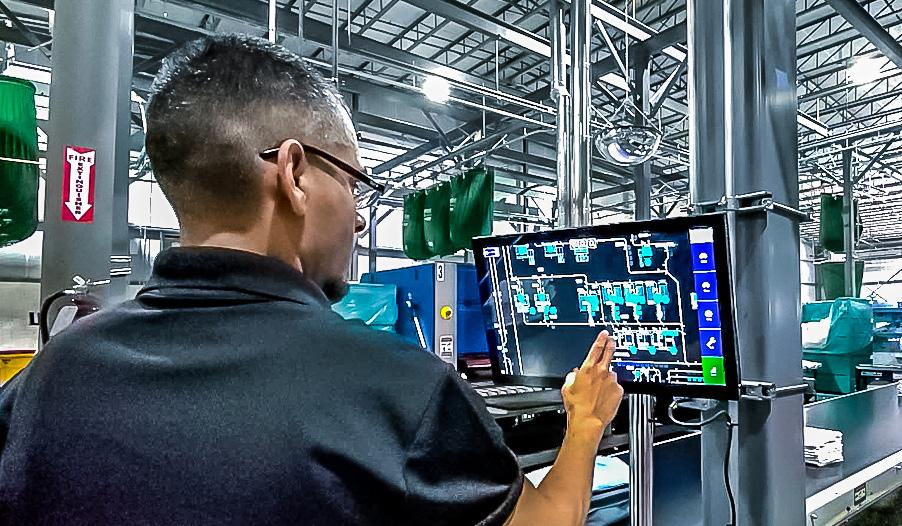
“We are firm believers in making sure that we have the best equipment used for production, and we continue to deploy capital across our sites for

our manufacturing capabilities as well as our staff,” he elaborates. “This is one of the reasons for our year-onyear organic revenue growth, but the second is the focus on our people.
“We have a lot of employees within our facilities, and we make sure that our employees have a good work environment and the support they need to thrive in the workplace. We need to make sure that we take care of our employees.”
Within this sphere, Emerald ensures to recognize and reward its employees’ efforts and performance, and celebrate such achievements.
“We have had employee recognition in the company for a number of years now, and we host events and other things to keep our teams motivated,” Kratky tells us. “We also have quarterly business meetings with all employees across our 15 locations with the intent on providing
all of our teams with a perspective of what is going on with the company and how we are moving forward.
“I am a believer in open communication to our team to ensure they have an understanding of what is going on in the entire business, not just their portion of it. This gives them the perspective of how they impact the company as well as how their co-workers impact the company. Maximized communication to our team is critical, and providing the team with the status of the company and performance goals, both internal and external, is extremely important, as is recognizing and celebrating individual performance.”
Environmental, social and governance (ESG) is at the core of the company’s mindset and defines the way in which Emerald operates across the western US.

“From an environmental standpoint, our ESG strategy helps Emerald reduce our use of natural gas, electricity, water and other resources used at our facilities to be good stewards of the environment,” Kratky explains. “Doing our part will help the planet that much more, and our ESG plan is very important to our overall strategy as a company as well as our healthcare partners.”
Emerald’s primary focus for the rest of 2022 and beyond is building on the organic growth experienced from the company’s multiple investments and facility developments. Despite holding a predominant share of the market, Emerald seeks to drive value for its customers and their businesses, while keeping its eyes peeled for opportunities for acquisition.
“We see an opportunity in independent outpatient facilities that we think are a very good fit for Emerald, and that we can align with from a product and service perspective,” Kratky says. “So, we are working on, and in the process of,
deploying a strategy to really hone in and focus on generating more outpatient and independent care facility business.
“Outside of this, despite our super-regional reach, we have had customers reach out to us and ask directly if we have the ability to serve them in other states across the country. Because of this, I believe that greenfield expansion is definitely going to be a part of our future, where we build a processing facility based off an anchored customer in a certain area. We did this with our Livingston CA facility, so we are well versed in creating a world class greenfield facility.”
Emerald Textiles

Stemming from this customer demand, Emerald is prospecting expansion into adjacent markets as well.
“This is a pillar of our growth strategy,” Kratky reveals. “There are plenty of opportunities out there in the market, and we will always look towards expanding our product and service base to reach customers further afield.”
Pomona facility with their high-tech, computerized automated garment system – also referenced in the article in what Emerald Livingston, CA (a greenfield expansion) will be installing at the end of the year. Left: Automated sheet folder Bottom: Industrial sized, energy efficient dryers, gentle on healthcare’s most critical textiles. info@emeraldus.com www.emeraldus.com



Parabellum International has grown impressively to become a leading emergency response and medical services provider across Australia and now the world. We speak to CEO, Navin Vij about the company’s people-centric safety mission, its services and the impressive scale of its fleet
 Writer: Ed Budds | Project Manager: Eddie Clinton
Writer: Ed Budds | Project Manager: Eddie Clinton

We don’t just train emergency response; we create emergency responders. We’re in a very privileged position to genuinely save people’s lives, which means they go home to their families.”
This powerful opening statement reflects how Parabellum International (Parabellum) has worked relentlessly to claw its way into the highest echelons of the provision of emergency response, medical services, comprehensive risk management and elite training services. A true global leader in its field, Parabellum has become deeply embedded within both the onshore and offshore oil, gas, mining, defence, resources, energy, waste, construction, and government sectors. The company’s proven operational experience within high-risk and remote locations remains a global differentiator.
Dedicated to providing unrivalled emergency, medical response and risk management services across these select industries, Parabellum holds multiple long-term master services agreements supporting clients worldwide on some of the largest capital and operational projects, ensuring safe and dependable support throughout.

The company’s international exposure and long-term partnerships across a multitude of companies and projects concerning the management of risk, allow Parabellum to effectively anticipate and minimise these dangers, provide significant cost savings and simplify the on-site emergency and safety operations for its clients.
The risk management services provided by Parabellum deal flexibly with personnel, vehicles, equipment, plans, procedures and ongoing evaluation of on-site services. The company possesses unique experience in providing exclusively tailored solutions to ensure the safety of people and projects and aims to deliver “measurable value”
across the entire project life cycle so that deadlines are met safely, on time and within budget.
As a burgeoning entrepreneur from an early age, Navin Vij, CEO of Parabellum, knew his talents lay in building businesses and creating compelling careers for his people from the ground up.

“I always knew I had a business side to myself,” recalls Vij.
“Having already created businesses while I was undertaking my management and finance degree at a local university here in Perth, I built an electronics, wholesale and distribution company. It was then in 2010 I started Parabellum.
“The mining and oil and gas industries were getting a lot busier in Perth,” he continues. “There was a bit of a boom happening, so I identified an opportunity to provide some basic
Working collaboratively with Parabellum International since 2016, we have been its go-to company for all its vehicle and building signage, as well as expertly handling a vast range of general promotional displays and graphics.
We regularly prepare all of the company’s emergency response vehicles with the necessary graphics and reflective striping to ensure they not only look great, but offer a professional presence for the company and adhere to mine site requirements.
We have worked tirelessly to forge an established reputation for being reliable, able to work and thriving under pressure, while always retaining high attention to detail.
designandapply.com.au
NAVIN VIJ, CEO, PARABELLUM INTERNATIONAL: “A big part of our emergency response and safety operations is that we can transfer lifesaving learnings into day-to-day life. When we help enhance medical or emergency awareness it means we’ve contributed something that may one day help to save a life.
“For example, recently a client had attended one of our training courses for work. Sometime later, they tragically had a family member suffer a heart attack. But, because of the training they had received from us, they played a crucial role in helping to save that family member’s life.
“So, for us as a company, that’s just one of the many rewarding things that we get to do on a daily basis and really make a tangible difference in this world.”
Established in 2010,
health and safety support to companies in this sector. I was only 22 at the time, but I was willing to learn and work from the front line and I am proud to say we’re still here 12 years later.”
One of the key reasons for this longevity, and survival in what is now such a competitive industry, is that Parabellum offers a comprehensive, well-rounded and diverse array
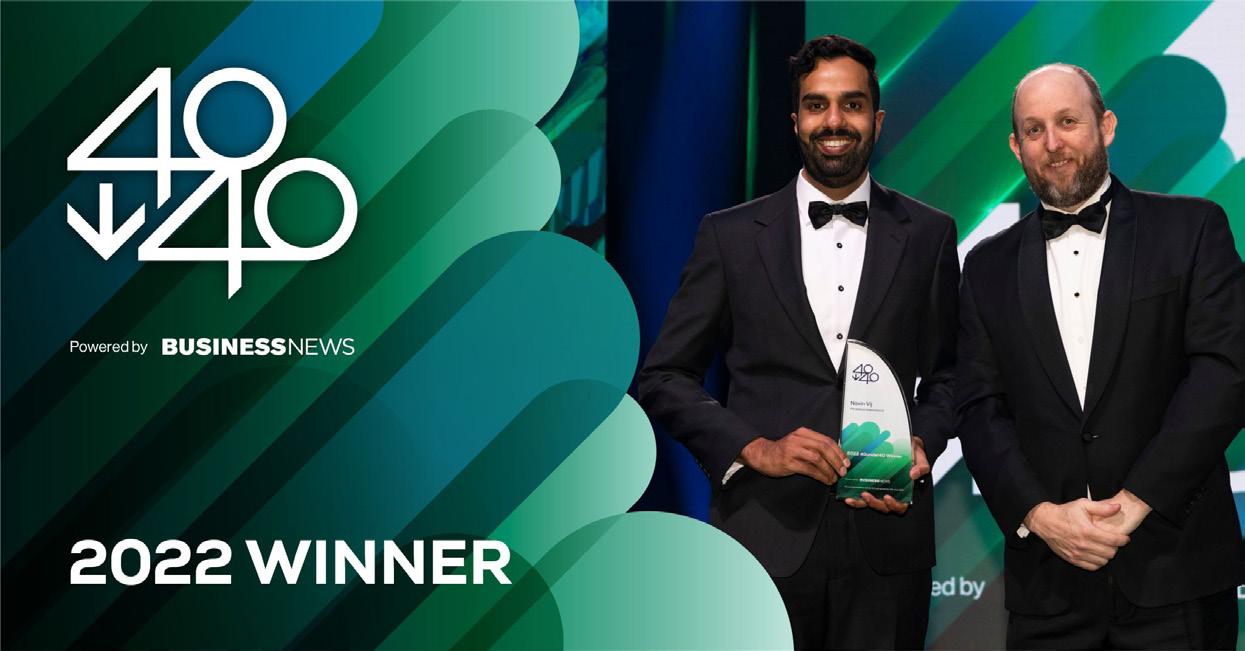
of services, adaptable to any environment.



“If it’s firefighting, we’ve got trucks, fire stations, firefighters, firefighting equipment, and we’ll provide a full private fire service for projects or operating assets,” Vij explains.



“In the medical space, we’ve got paramedics, doctors, nurses, medical clinics, and ambulances. So, we can
We are
supply a private, full-service delivery, that supports and protects people,” he adds.
“In training, we are a leading Registered Training Organisation dedicated to delivering best in class training exclusively to our industries. We don’t do high volume cookie cutter training courses; we specialise in providing world class training and improving our industries only!”
Elsewhere, Parabellum also delivers safety and medical care training to local communities, with the aim of leaving a lasting legacy of skill development locally after a project’s completion. This has been carried out in the Pacific Islands and Asia, as Parabellum transfers its knowledge to local populations.
“This is a very important aspect for us, not just to come in and deliver services, but to develop local skills and safety capability and improve the community that gave us a license to operate.”
our highly skilled and experienced team have been creating signage and vehicle graphics for a wide range of WA businesses across a variety of industries. From fleet graphics to building signage, we ensure your brand gets noticed and meets all necessary mine-spec requirements when going to remote work sites. a preferred signage supplier for several companies throughout Perth, with a reputation for high quality work, meticulous attention to detail, and adhering to strict deadlines. Simply put, you can rely on us for a professional service and quality result, every time.Vij believes that the collective skillset possessed by Parabellum is applicable and transferable across industries.
“Whether it’s government or private, there’s always risk. Everything we do in this world on a day-today basis has varying levels of risk, whether it’s driving a car to and from home, climbing a ladder, or completing major capital projects, there are always levels of risk which must be mitigated,” he explains.
Parabellum has a proven and highly successful track record of aiding the largest and most technically capable Tier 1 companies in their supply chain, not just with traditional services but by actually helping them to run entire projects, on the way to becoming an overall service delivery company.
“At present, we are building medical clinics, fire stations, administration buildings and other major infrastructure, constantly looking to
diversify sensibly,” Vij reveals.
Further to this, Parabellum has helped many companies operating in Australia for the first time, who may not be aware of the local way of working, standards, processes, or how to transition a project smoothly through a design, construction and operation phase.
When discussing the next 12 months that lie ahead for Parabellum, Vij describes an exciting and detailed vision of continued expansion for the company.
“We’ve got significant growth coming up in Australia, as well as further plans for the entire AsiaPacific region. So as the next 12, 24 and 36 months unfold, we hope to see significant expansion into Southeast Asia and the Pacific islands, and the continued development in our local markets,” he explains.
Parabellum already possesses an operating base in Singapore, upon which the company hopes to
springboard into further success across the continent. This hub will prove essential in the ability to support new emerging technologies in hydrogen, waste, and power, as well as constructing new operating bases.

Parabellum’s clients enjoy unrivalled access to the company’s esteemed fleet of emergency response and medical vehicles. This includes the option to use a range of light tankers, ambulances, fire appliances and trailers for hire, for medium- or longterm engagements, or alternatively, a custom design and build for an outright purchase.

GOING ABOVE AND BEYOND
Going above and beyond by striving to be the best the company can be, and by challenging the status quo.
MAKING A DIFFERENCE
Making a difference in the lives of others, each other and all those that Parabellum impacts.
Parabellum tells it like it is, even if the message is difficult to deliver; it is important to communicate what you need to hear, not what you want to hear.
Parabellum looks after all its staff and clients. The company is inclusive and respects others, with an opendoor approach.
Parabellum makes things happen; acting quickly without compromising company standards is essential, as well as thinking outside the box to solve a problem.
These highly effective vehicles can be supplied as dry hire or fully stowed, featuring all the required emergency response or medical equipment to suit capital or operational expenditure requirements and budgets.

Other models available within Parabellum’s fleet include specialist Aviation Rescue Fire Fighting (ARFF) appliances, confined space rescue and breathing apparatus trailers, and fully equipped containers and relocatable buildings.



Additionally, Parabellum continues to pursue the electrification of its fleet of vehicles. In this way, the company is aiming to transition away from the traditional diesel range and embrace hybrid technology, which brings innovation, reduced emissions, as well as renewed reliability.
A
Parabellum’s reputation for uncompromising quality has been hard-earned through the efforts of its
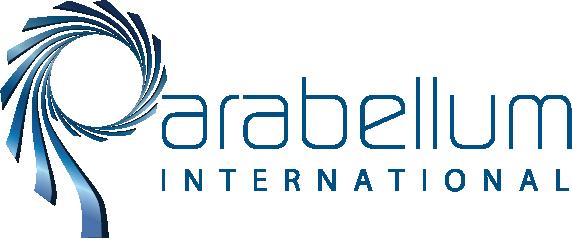
highly professional team’s devotion to craft and care. The company’s foundations are built upon a collective of high-calibre, best-in-class service professionals that act with trust and integrity at all times.
Keenly aware of the need to find people perfectly aligned with Parabellum’s core values, before joining such a specialist team, Vij tells us how it is critical to recognise key qualities and traits from the inception of a new working relationship.
“The final evaluation before we hire anyone is, do they match our culture, do they believe, and do they share our company mindset. This process has been critical in bringing the right personnel into our teams,” he expands.
He continues to tell us, “for Parabellum, having visibility, trust and sharing a collective vision has been vital to the company’s success because everyone in the team believes in what we’re doing.”
This shared responsibility and
mentality of the company culture that Parabellum works so hard to foster, aligns every level of the company to one total vision, from paramedics and firefighters on the ground to every level of management, as well as external players such as subcontractors and suppliers.
“These values are non-negotiable. No matter what level, everyone is expected to help their team – no job is too small or unimportant,” Vij concludes firmly.
“At Parabellum, we do not compromise on standards; we are steadfast in our resolve to deliver on our promise to our clients.”
Speaking to Senior Ophthalmologist, Justin Mora, we take an in-depth look at Auckland Eye, whose sights are set on offering world-class eye care and superior treatment
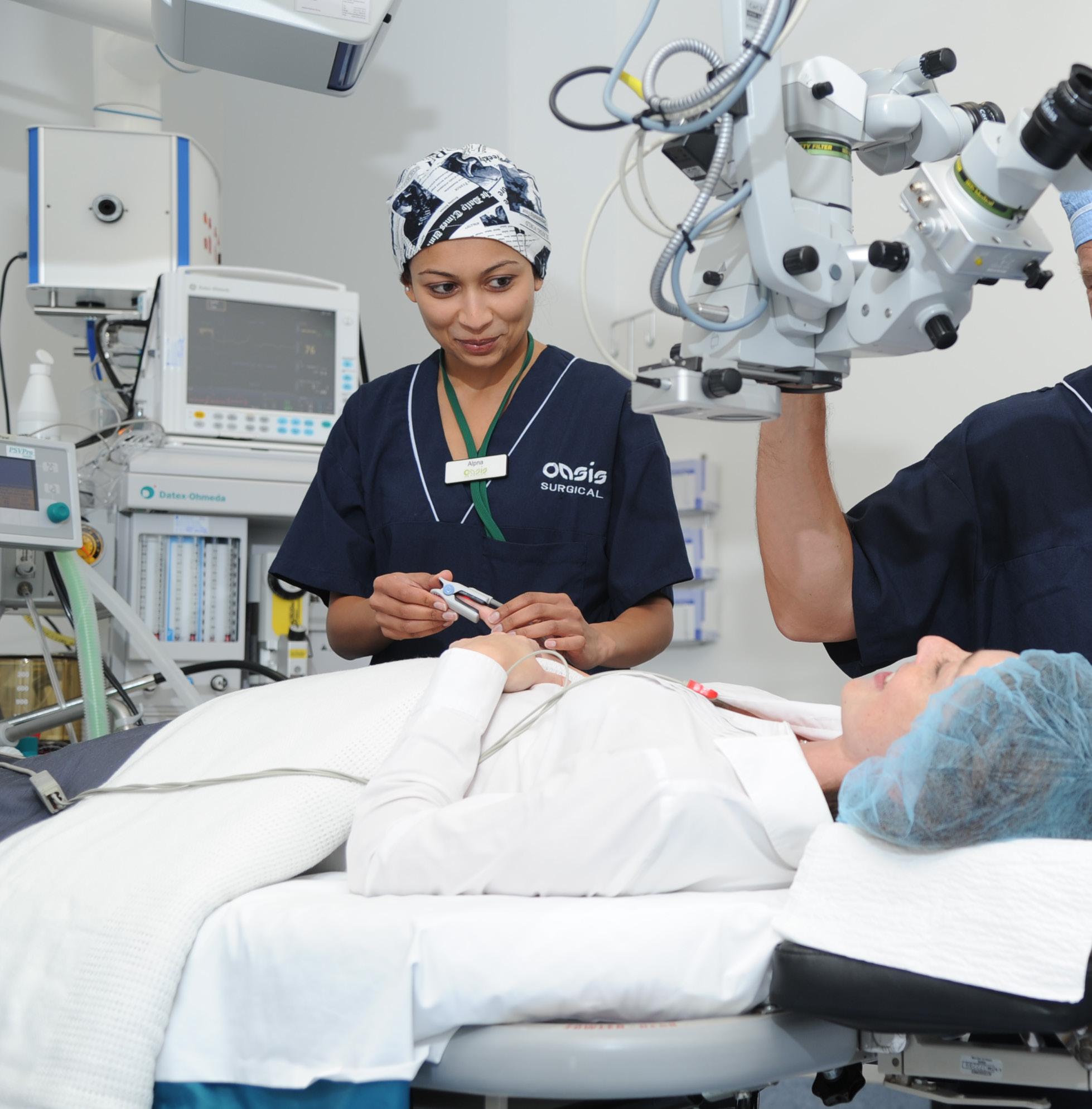 Writer: Jack Salter | Project Manager: Callam Waller
Writer: Jack Salter | Project Manager: Callam Waller
The human eye is truly amazing. We discover far more about our surroundings with our eyesight than any of the other four senses combined. In fact, approximately 80 percent of all the information we learn about the world comes through our eyes.
Protection of our eyes is therefore paramount, and Auckland Eye has all angles covered when it comes to the treatment of this crucial organ.
Established in the mid-1990s, Auckland Eye was the first subspecialist practice to be set up in New Zealand’s most populous urban area.
The company’s team of highly trained ophthalmologists, who comprise some of the most qualified surgeons in New Zealand, assess and manage a comprehensive range of eye care treatments such as laser vision correction, cataract surgery, glaucoma, eyelid surgery, paediatrics, and retinal surgery.

“We are able to care for all ophthalmic conditions and cover all ophthalmic specialties in our stateof-the-art practice and surgical facilities, which are purpose-built for eye surgery procedures,” opens Justin Mora, a Senior Ophthalmologist at Auckland Eye.
Auckland’s premier eye surgery facility is Oasis Surgical, owned and operated by Auckland Eye and designed to be utilised by leading eye surgeons as well as surgical specialists in other fields of medicine.
Both Auckland Eye and the multi-million-dollar, multi-theatre Oasis Surgical facility offer superior treatment and world-class care in a relaxed, friendly environment. Together, they comprise a procedure and consulting group in Auckland that is accredited for the quality of its patient care.
“With the way that the Auckland Eye team cares for its patients, builds strong relationships and provides the very best of care, we really do pride ourselves on excellence,” Mora stresses.
“Our unique peer environment provides a continuous and transparent process of performance review, advice and support between consultants, who are experts in their field.”
By providing life-changing eye care through comprehensive clinical excellence and innovation, Auckland Eye’s vision is to be the most trusted eye experts in New Zealand.
With the completion of an additional new site in Ormiston, South Auckland, which has both clinical and surgical capabilities, Auckland Eye is trying to support community growth by providing services that are closer to the homes of patients.
It comes as part of a wider expansion strategy, as the New Zealand Ministry of Health pursues the desire for care to be provided closer to home for everyone.
“Auckland Eye has been positioning its services to reflect this, with outreach clinic hubs in northern, southern and central Auckland as well
as strategic partners in Whangarei and soon in Queenstown,” Mora outlines.
As Auckland and the whole of New Zealand learns to live with COVID-19, Auckland Eye is also reshaping its services to provide care safely as the disease becomes endemic in the country.
“Ophthalmologic care requires clinicians to be very close to people when examining their eyes and providing surgical treatment, so ensuring safety is extremely important.”
The company’s expansion strategy has been complemented by the
adoption of telehealth services, albeit they are inherently more complicated for eye care which traditionally requires ophthalmic equipment to test and measure people’s vision.
Telehealth has, however, been successfully utilised in other ways by Auckland Eye, for instance to assess the urgency of face-to-face care and for post-operative follow-ups.
“Frequent peer sessions have also been conducted on Zoom and other video conferencing platforms to ensure ongoing collaboration, growth, and the sharing of ideas to promote a better service for both patients and staff,” adds Mora.
CAPABLE HANDS – The international ophthalmic world recognises Auckland Eye, often inviting members to speak at conferences.
RESULTS MEAN THE WORLD – Auckland Eye always strives to improve its techniques, knowledge, and patient care.
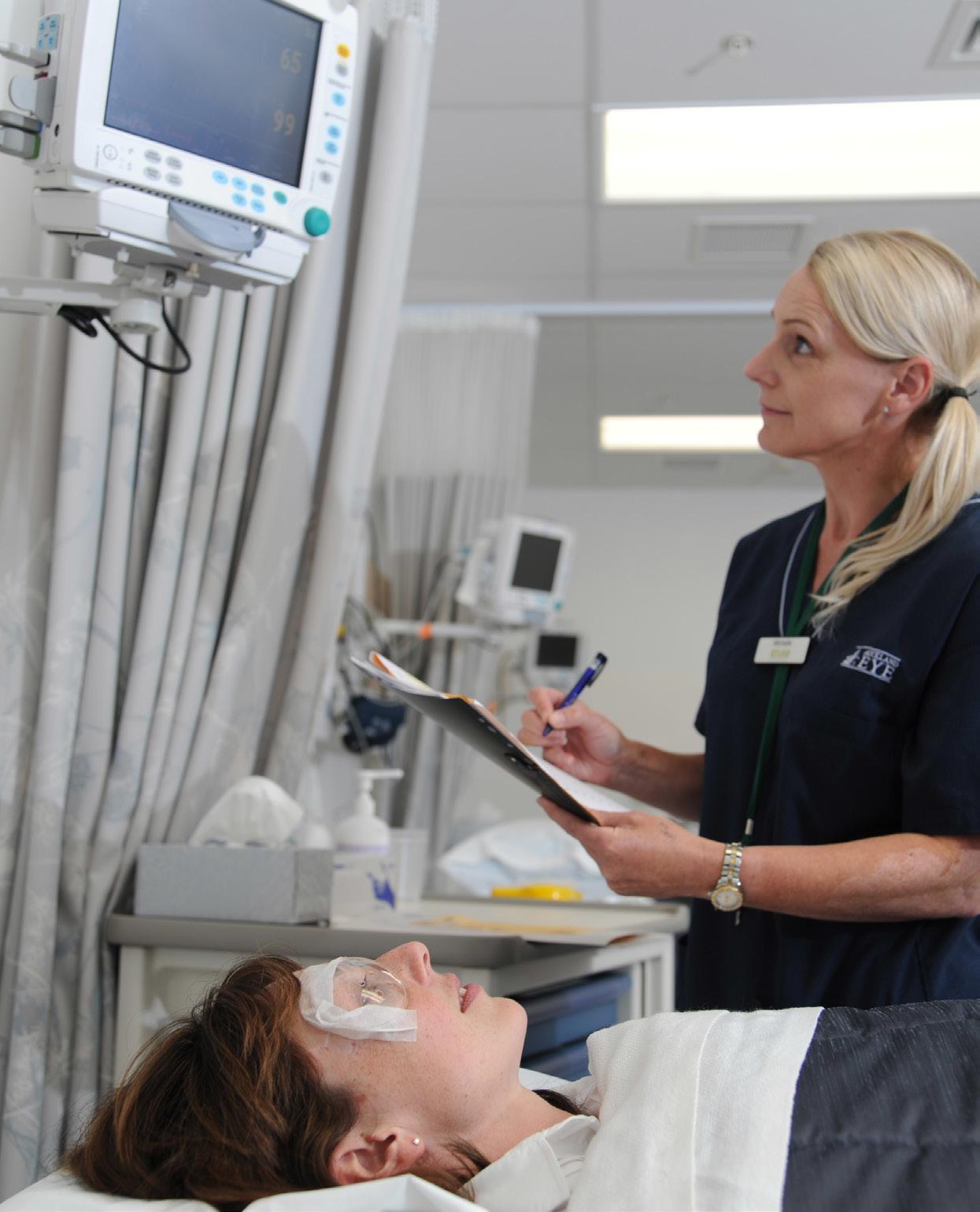
PROCEDURES AND TREATMENTS
UNDER ONE ROOF – As New Zealand’s largest ophthalmic group, every aspect of eye care is covered, so patients won’t be referred to another clinic.
COMFORT AND CARE COME
FIRST – It’s natural to be a little nervous about eye treatments, so the people at Auckland Eye take extra time to listen, explain and take care of any concerns.
THEY LOVE WHAT THEY DO –Auckland Eye understands how precious eyes are and loves to help improve the way people see the world.
Eye health is connected to your overall health and wellness.1

20 different diseases can be detected through your eyes.2
50%
Cataracts are the leading cause of preventable blindness.3
of the world's population needs vision correction.4
Make your eye health a priority and see your optometrist every year.
References: 1. VSP Vision market research 2018 Eye Health Stats, 4th February 2020. 2. American Academy of Ophthalmology, https://www.aao. org/eye-health/tips-prevention/surprising-health-conditions-eye-examdetects 3. “Priority Eye Diseases.” World Health Organization. http://www. who.int/blindness/causes/priority/en/index1.html. 4. VISTAK JJVC AMO Fact Sheet. ©Johnson & Johnson Surgical Vision, Inc. 2021. PP2021CT6181
As New Zealand’s centre of excellence for eye care, Auckland Eye is the leading the way towards brighter, clearer vision for all.

EMPATHY – To foster an environment in which all voices are heard and all people feel valued, Auckland Eye walks in the shoes of others to understand what they are experiencing.
EXPERTISE – Deep expertise allows the company to identify how best to respond to the needs of its patients and genuinely enhance their day.
INTEGRITY – Consistently making the better choice, regardless of complexity, to build trust and a constructive culture.
PARTNERSHIP – Committing time and energy to nurturing and maintaining deep relationships to continue to grow its reputation for exceptional patient care and experiences.
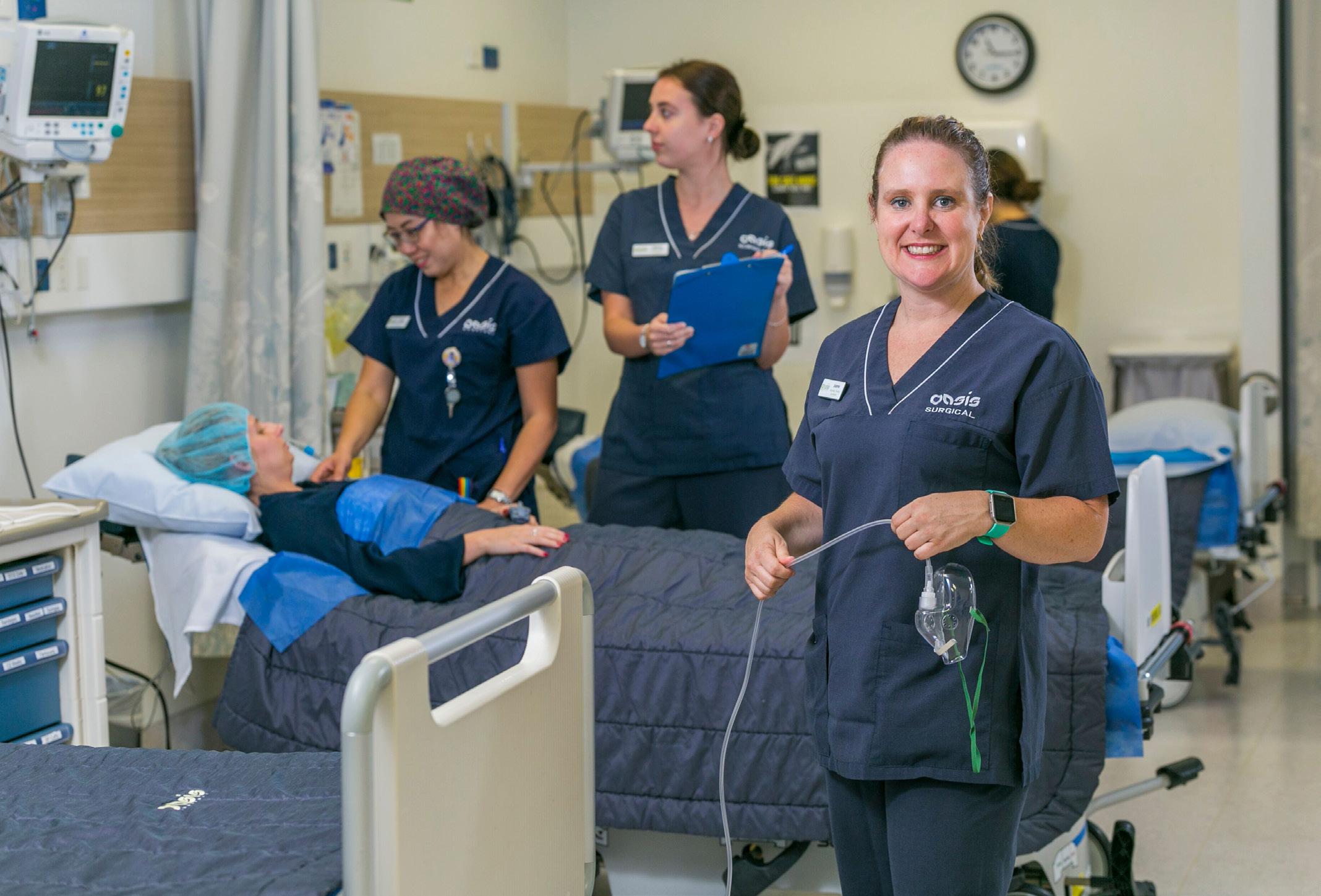
For the treatment of dry eye, a widespread condition that has very few real treatment solutions, Auckland Eye has invested in a new LipiFlow machine that restores dysfunctional meibomian glands.
LipiFlow is a procedure designed to treat the root cause of evaporative dry eye, which can be caused by blocked meibomian glands. The LipiFlow treatment opens and clears these glands, allowing them to resume the natural production of lipids needed for healthy tears.
“An activator eyepiece is used to apply precisely controlled heat to the inner eyelid to encourage the body to restart the natural production of lipids,” Mora explains. “Its single-use design and built-in sensors ensure a safe, sterile treatment.”
Auckland Eye is also proud to be the most experienced provider of ReLEx SMILE laser vision correction in
Auckland, having treated thousands of eyes since its introduction in March 2015.
SMILE represents the most significant advancement in laser eye surgery for over a decade, as it provides a minimally invasive treatment for the correction of myopia and astigmatism using femtosecond laser technology.
Combining the proven safety of traditional vision correction techniques with even greater comfort and precision, surgeons around the world have embraced SMILE as an effective laser eye surgery procedure.
Research plays a critical role at Auckland Eye, who frequently partners with companies to run clinical research trials together with its comprehensive research department.
The department was established by Dr Dean Corbett, one of Auckland Eye’s world-leading ophthalmologists,
Auckland Eye is committed to continuing participation in national and international clinical trials, with a view to:
1. Helping to develop promising medicines and surgeries, so that successful products can be more easily accessed by patients in New Zealand and around the world.
2. Allowing patients who cannot otherwise afford potentially beneficial medicines or surgeries to access these products through a robust, ethics-approved process.
3. Ensuring surgeons at Auckland Eye remain at the crest of the wave to deliver the best and most effective treatments available.
having spotted the opportunity to assess new lenses and devices that could enhance vision and improve patient outcomes across all areas of ophthalmology.
“Clinical research trials are a wonderful opportunity to partner with pioneering companies and contribute to innovations that deliver better eye care,” shares Mora.
Auckland Eye has been performing clinical trials for more than 15 years and is proud to have contributed to a number of successful outcomes.
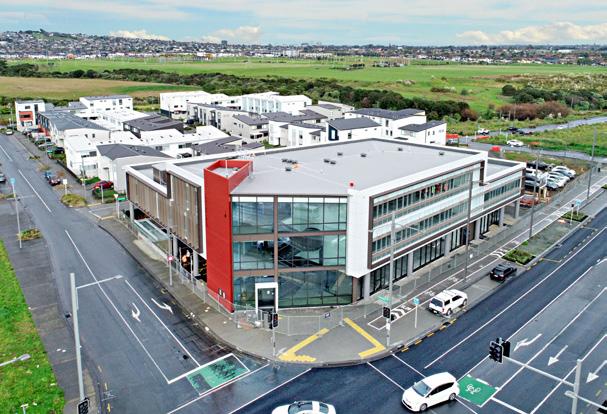
The trial of an AcuFocus Corneal Inlay to treat presbyopia was one such undertaking, in which Auckland Eye was part of the international team that helped to make this product commercially available worldwide, achieving FDA approval in April 2015.
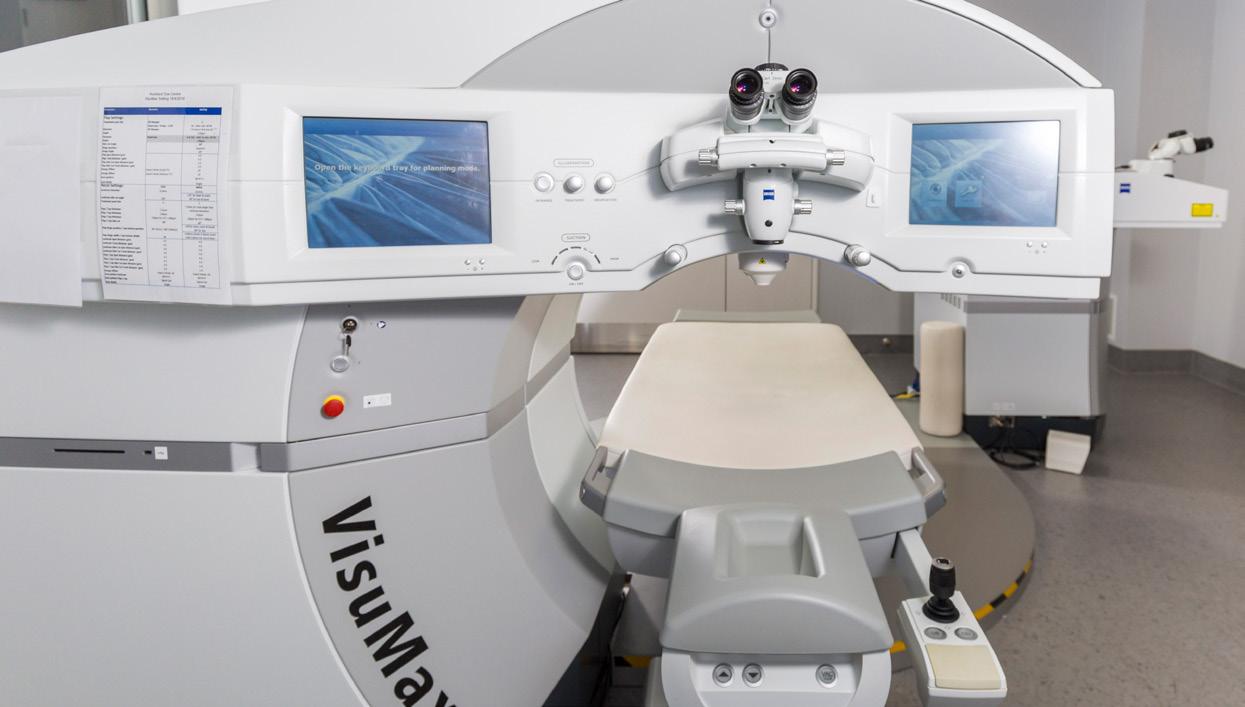
The company was even the first clinic in the world to use the market leading TECNIS Symfony EDOF IOL (Extended Range of Vision Intraocular
Lens), which paved the way for an entirely new branch of products to enhance the lifestyle results for patients undergoing cataract surgery.
Auckland Eye was also the first to recruit a patient for the clinical trial of Oculeve, a new device for the relief of dry eye.

“We recruited the highest number of participants in Australasia for the trail. Oculeve is now FDA-approved and went on to sell for $55 million,” Mora reveals.
As New Zealand’s centre of excellence for eye care, Auckland Eye is the leading the way towards brighter, clearer vision for all.


AUCKLAND EYE
Tel: +64 9 529 2480
admin@aucklandeye.co.nz
www.aucklandeye.co.nz

Preventative, accessible and professional healthcare.
That was the common aim of an experienced group of doctors who formed OneCare Medical in 2013, opening the very first clinic in Boon Lay that year.
One of those doctors was co-founder and CEO, Jimmy Chew. An accredited family physician, he completed his medical undergraduate studies at the National University of Singapore, obtaining a graduate diploma in family medicine before gaining a wealth of experience in both the surgical and medical departments of various public healthcare institutions in the country.
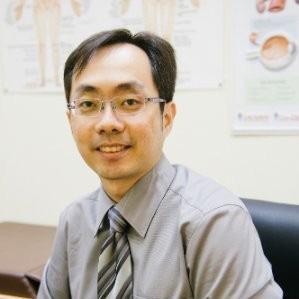
Chew, and the rest of the 180-strong OneCare Medical team, firmly believe that prevention is better than the cure. As such, the company aims to provide preventative healthcare by dealing with the prevention of illness to lower the associated effects and risk factors of disease.
“OneCare Medical is a primary care general practitioner (GP) chain providing affordable, accessible and quality healthcare services to the community,” begins Chew.
“We have been opening up to five clinics per year and currently we are operating 25 clinics, which are fairly well distributed throughout the whole of Singapore.”
Prior to the COVID-19 pandemic, close to half a million patients visited
OneCare Medical clinics every year. The majority of these clinics are located in the residential heartlands, making them the convenient choice for healthcare services.
Such is the multitude of complex healthcare choices and treatment
options now available on the market, OneCare Medical’s team of family doctors try their utmost to enable patients to make the best decisions for their health.
Seeing to patients from across all age groups and demographics, the company strives to listen carefully to any health concerns, addressing them with informed discussions and clear explanations.
OneCare Medical clinics also have access to Singapore’s National Electronic Healthcare Record (NEHR), which enables continuity of care between various healthcare institutions in the city-state.
“We offer a full range of the usual primary care services including acute and chronic disease consultation, health screenings, vaccinations, statutory medical examinations for patients, and much more,” Chew outlines.
“First and foremost, our main focus is to make sure that we provide excellent and affordable primary care services. That’s what makes us different.”
OneCare Medical’s focus on primary care has been necessitated by the highly competitive nature of the healthcare industry, in which the company has sought to find its niche and be the best at it in order to stand out from the crowd.
“Competition is unavoidable in almost all industries and healthcare is
In an appointment with Dr Jimmy Chew, CEO of OneCare Medical, he tells us more about the company’s full range of healthcare services provided to patients in Singapore
Writer: Jack Salter
Project Manager: Callam Waller
no exception, so we try to be the best at what we do by providing highquality primary care to the masses.”


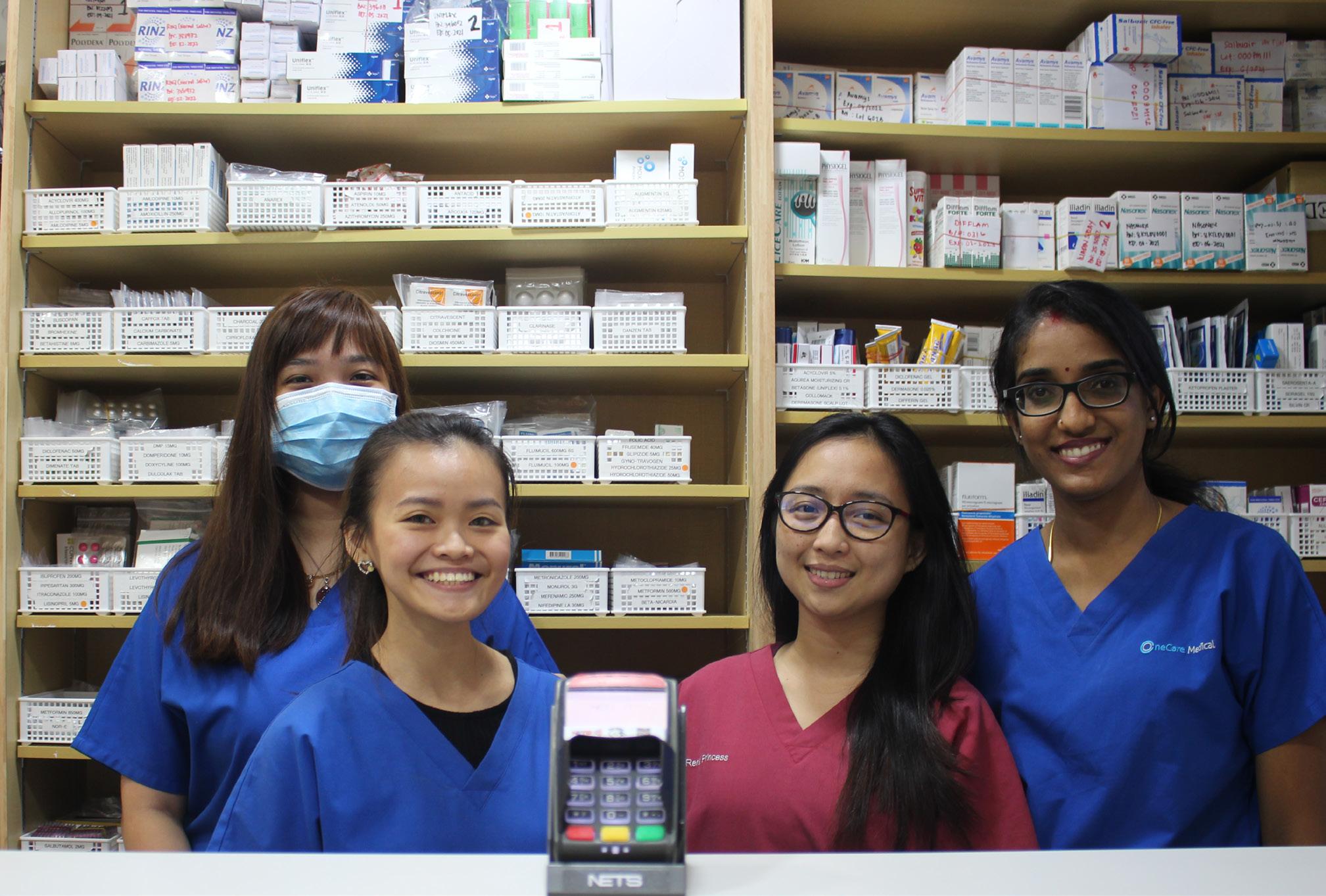
The concept of workplace health is also becoming increasingly relevant, as more and more companies recognise that future success in a globalising marketplace can only be achieved by a healthy, qualified and motivated workforce.

A healthy workplace environment ensures a flexible and dynamic
balance between meeting customer expectations and organisational targets, as well as the skills and health needs of employees.
As such, OneCare Medical also helps to relieve organisations of the strain of managing medical administration, providing monthly invoices and reports on employee health matters to ease the burden of healthcare administration tasks for companies.
JIMMY CHEW, CEO: “Singapore’s healthcare system in general is pretty efficient with fairly good standards.
“We have competent, well-trained healthcare professionals in Singapore, so I would say that the system is trusted by citizens to take care of their health needs.
“Of course, with an ageing population comes the increasing burden of chronic diseases, so we at OneCare Medical have to plan ahead to be able to deal with that, together with making sure that healthcare costs don’t spiral out of control.
“As for the COVID-19 pandemic, I believe the whole nation plays a very important role in the response. So far, we have avoided some of the worstcase scenarios whereby the healthcare system becomes overwhelmed and healthcare professionals are put in a difficult position.
“We have mostly been able to prepare for what we expected to happen during the pandemic. There have been some unexpected challenges, but more or less we have managed to overcome them.
“In the private sector we have definitely seen a reduction in patient numbers, so that has affected revenue for a lot of private practices, but that is probably due to people working from home or avoiding clinics for less serious illnesses.”
Most OneCare Medical clinics are open seven days a week, an attractive proposition for patients in search of doctors that are always there to attend to their primary care needs, whenever and wherever they require it.
Indeed, accessible healthcare for OneCare Medical is not just about having a number of clinics well distributed across Singapore, but also the availability of doctors.
Complemented by supporting services such as telehealth, radiology and appointment booking systems, OneCare Medical relies on partners to further diversify and provide a more complete, specialised primary care service.
“We work with laboratory, homecare, ancillary and specialist service providers; these are things
that help to add value to our patients’ healthcare experiences,” Chew says.

For example, OneCare Medical has been working very closely with StarMed Specialist Centre, an advanced one-stop specialist centre with a comprehensive range of clinics and services.
“Because we are focused on primary care, we do not really have our own specialists. That’s where the likes of StarMed Specialist Centre come in, to help us create a healthcare ecosystem,” Chew reveals.
“We both have a common investor called Health Management International (HMI) Group, which has invested in ourselves and StarMed Specialist Centre to form this synergistic collaboration.”
In 2019, HMI Group invested in 40 percent of OneCare Medical with the
PromiseLand is an Independent Financial Advisory Firm and General Insurance Broker founded in 1986 and headquartered in Singapore.
We have had the privilege of serving OneCare Medical since its establishment in 2013, by brokering Insurance for the group spanning from Business Insurance and Medical Malpractice Insurance to Group Hospital and Surgical Insurance.
With Business Insurance, healthcare facilities are protected and business can continue even in the face of natural disasters or hazards.
Medical Malpractice Insurance covers any claims from patients resulting from any negligent act, error or omission. It also covers the insured against any claim made by any person for written or spoken libel or slander. Where standard professional indemnity covers the risk of financial loss, Medical Malpractice covers situations where an error of judgement could result in either life or death. Various extensions also broaden the coverage of the Insured to cover any medically qualified Employee in respect of any legal liability arising from giving emergency first aid to any person, and more.
We can also arrange cover for valued staff and medical practitioners under the group hospital and surgical insurance so that they are financially protected from costs arising from such medical treatment.
Please contact PromiseLand Independent for financial and risk management needs through our email at enquiries@promiseland.com.sg or call +65 8029 2192.
www.promiseland.com.sg
workforce, premises and your ability to stay open if you’re sued or a disaster occurs. Without it, you could risk losing everything you’ve worked so hard to build But with so many options available, how can you be sure you’re making the right choice

That’s where we can help. We can take the time to understand exactly what risks your business faces - and then help ensure that you’re properly covered. We can even help you negotiate a better price for your policy - and support you if you need to make a claim. can get on with your day-to-day business without the worry, knowing that your insurance is in capable hands
Cost-effective business insurance, without the stress.
Our brokers have a deep understanding of businesses across a range of industries We can also take the time to understand your company’s specific risk profile This means we can provide expert advice on tailoring insurance policies for your business - so you don’t waste valuable time researching and comparing cover options
power
As part of of a regional broker network, we have the power to negotiate better prices and policy terms We have access to exclusive policy terms that offer broader and more comprehensive cover for our clients. We can also arrange for customised policy options, so no matter how unique your needs, we can help ensure your risks are covered This means better procession for you business - at a more competitive price.

We have arranged group employee benefits insurance programmes for our Surgical insurance, Group Outpatient insurance , Group Term Life insurance,


UNO Technologies is a med-tech firm based in Singapore. Founded in 2015, it has since offered its med-tech solutions to over 2,000 practitioners in the APAC region, particularly Singapore, Malaysia, and China.
UNO Tech’s core product, the UNO Clinic Management System (CMS), designed to improve healthcare efficiency, quality and patient outcome. The CMS has since served over one-million patients - averaging 350,000 patients yearly.
FOR EVERYONE – As well as providing a full range of services, OneCare Medical is also able to offer patients statutory check ups, vaccinations and the convenience of repeat prescription requests.
FOR SCHOOLS – OneCare
Medical is an experienced provider of onsite medical check-ups for students attending the Outward Bound Singapore (OBS) programme, dedicated to giving students, parents and teachers peace of mind.
FOR BUSINESSES – Working with various companies and organisations on the provision of primary care, including subsidised rates for medication, consultation and check-ups.
intention of growing it into a clinic chain of 40 GPs in Singapore, and has since taken a majority stake in the company.
A growing regional private healthcare provider with a presence in Singapore, Malaysia and Indonesia, it shows that HMI Group is focused on growing its existing healthcare businesses.
OneCare Medical has also recently collaborated with healthcare technology solutions provider Ninkatec to offer homecare services and personalised home-based healthcare solutions for elderly patients.
These services are wide-ranging, and include medical and nursing home visits, procedures and other treatments. It is a revolutionary step forward for primary care services, with the rapid acceleration of novel healthcare innovations helping to improve patient wellbeing.
The partnership coincides with efforts to make medical services available to patients in the comfort of their own homes, the benefits of which comprise convenience, peace of mind and safety.
By moving beyond the physical walls of its clinics, OneCare Medical
UNO Tech has been in partnership with OneCare Medical Group for more than five years - providing OneCare with latest solutions in clinic management and Electronic Medical Records (EMR). Giving OneCare centralised control and management over its multiple locations and provide high quality patient care efficiently with ease.
The tech-driven OneCare team had the foresight to be one of the pioneering clinic groups in Singapore to go cloud-based with UNO CMS. This was pivotal in their growth and success as they scaled from 10 clinics in 2016 to 26 clinics in 2021.
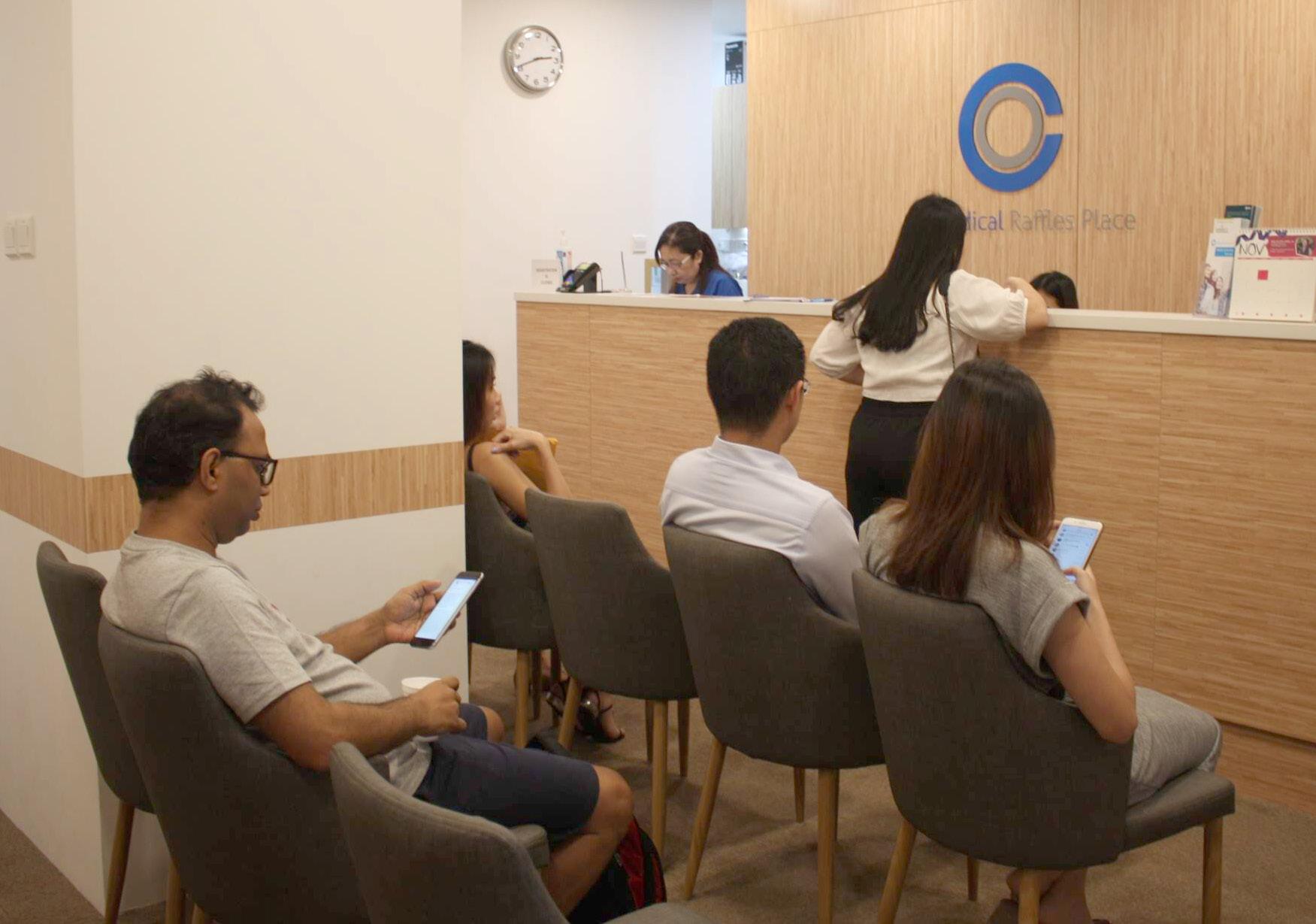
UNO Tech remains committed to improving healthcare quality and efficiency for private practitioners. Besides EMR and CMS, telemedicine services were also launched in 2021, amid the COVID-19 endemic in Singapore, enabling patients affected by COVID-19 to seek medical advice remotely and safely.
Artificial Intelligence (AI) is another area UNO Tech is focusing on as it foresees the healthcare industry to be the next industry ripe for AI disruption.
www.essexbio.com




can extend its reach into the homes of more patients and families with an increasing number of treatments.
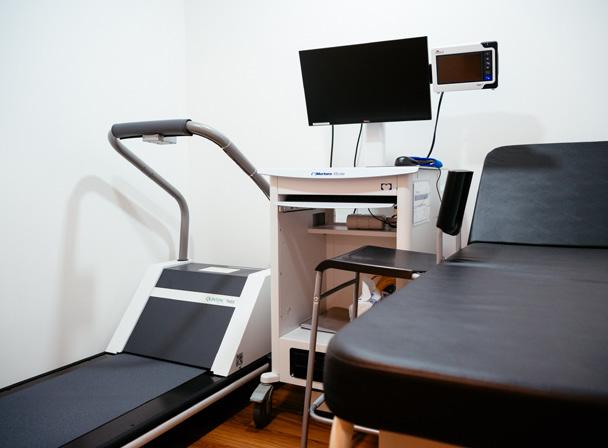
The 25th and latest addition to the OneCare Medical family is Beo Crescent Clinic & Surgery, having been acquired by the company in October 2021.
Conveniently located in central Singapore, this independent GP clinic has been providing basic primary healthcare services to the local community for the past 10 years.


With this experience in mind, it means that Beo Crescent Clinic & Surgery has been able to seamlessly embrace the common, shared values of the OneCare Medical network.
“They can leverage our resources to expand their services, as well as potentially extend their operating hours,” states Chew. “As part of the OneCare Medical family, they are now able to enjoy our economy of skills which can
also reduce their running costs.”
In addition to pursuing more acquisitions, the establishment of a new central support office has further helped to scale up the business. Complete with accounting, logistics, central purchasing and operational departments, the capabilities of this central support office continue to grow.
It has also enabled OneCare Medical to set up more clinics, such as the likes of Beo Crescent Clinic & Surgery, and support them in a scalable manner.
“Every time we start up a clinic, the processes are really fine-tuned and that makes things easier,” Chew notes. “Of course, when it comes to the operational needs of the clinic, the central support office brings a huge number of benefits because we have everything in place.”
All OneCare Medical clinics are able to administer recommended vaccines
Innoquest Diagnostics is proud to be a laboratory provider for OneCare Medical Group’s doctors and clinics since their inception in 2016.
We are privileged to have been a part of OneCare’s growth from a single clinic to over 25 clinics to date. As a valued partner, we look forward to working closely with OneCare in serving the nation and achieving greater heights of success and prosperity together.
www.innoquest.com.sg
for adults and children, including COVID-19 vaccines in some of the clinics.
OneCare Medical has participated in the national vaccination programme against COVID-19, and as part of the Singapore Ministry of Health’s network of Public Health Preparedness Clinics, the company has helped to diagnose and treat COVID-19 patients.
The proximity of clinics and consultations to affected patients and communities across Singapore has helped to reduce the transmission of this infectious disease as OneCare Medical’s services, which include providing COVID-19 swabs, are widely available across the country, negating the need to travel to multiple locations.
Singapore currently has a case fatality rate of just 0.29 percent, one of the lowest in the world, and OneCare Medical has helped to play its part in this success.
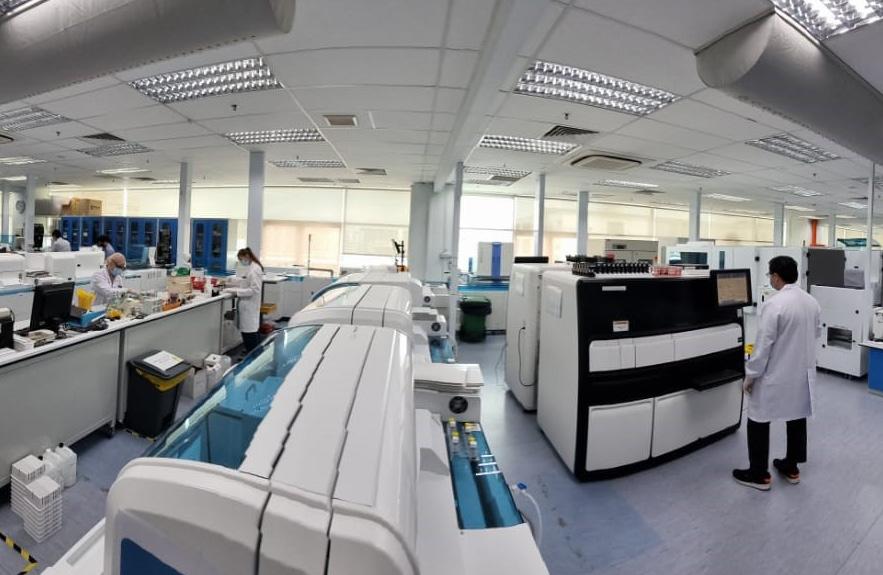
and Quest Laboratories (QUEST) merged to become Innoquest Diagnostics Pte Ltd (Innoquest). IDPL and Quest have been serving our medical community for over 25 years.

The merger allows for more efficient economies of scale, faster turnaround times and an expanded menu of tests to improve diagnostics access to all of Singapore’s doctors and patients. Innoquest also stands as one of a few labs in Southeast Asia to hold dual accreditation to CAP and SAC-SINGLAS ISO 15189.
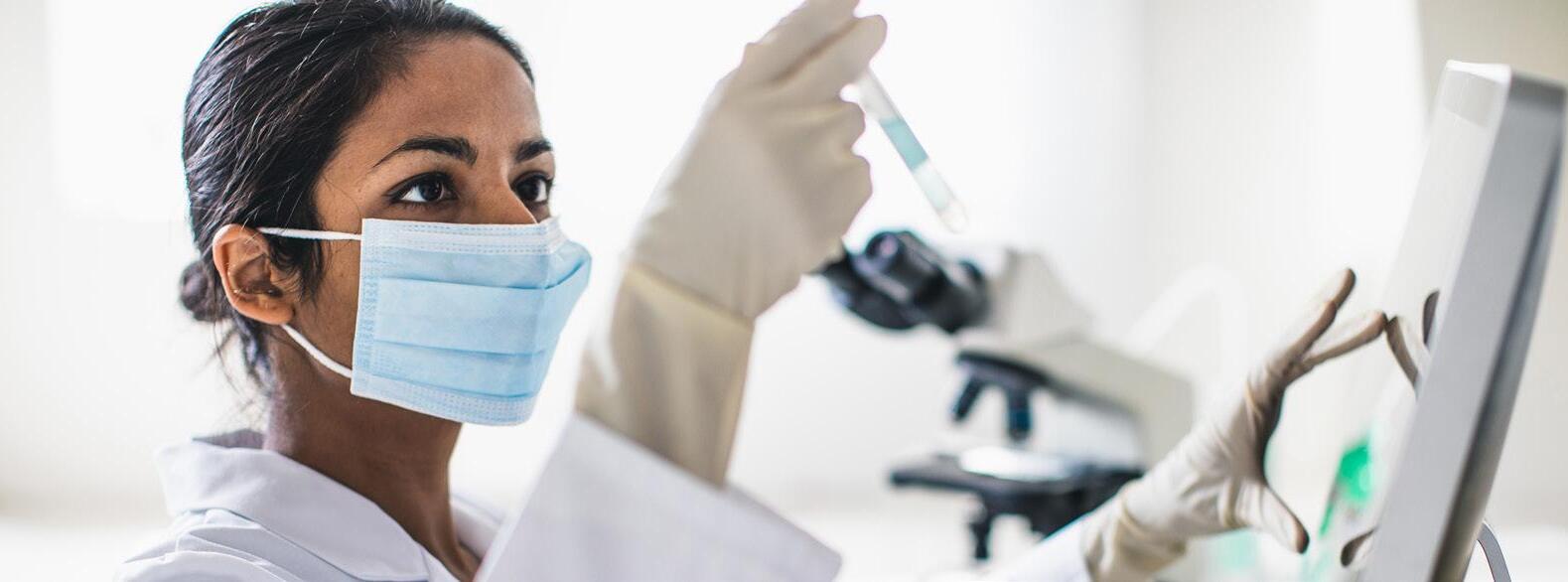
We continuously strive to advance frontiers in medical science and build Singapore’s laboratory of the future in our mission to transform healthcare delivery and improve patient outcomes in pursuit of science, innovating for life.
HEADQUARTERS OFFICE
STARHUB GREEN
67 Ubi Avenue 1, South Wing
#02-08/09, Singapore 408942
Tel: +65 6430 3461
Fax: +65 6254 8115 / 8266
www.innoquest.com.sg
to fulfil all of our daily tasks as well as handle challenges and fight against unexpected events such as the pandemic. It requires them to be courageous as well as professional.
“We encourage our staff to support each other, and we have career planning in place for most of them, so they are able to grow with us as the company grows,” adds Chew.
“We have mobilised our manpower to help manage key community facilities, used to manage COVID-19 patients who do not require tertiary care, so these are things that we have been doing to help with the pandemic response,” shares Chew.
The support of suppliers has also never been more paramount, to ensure the company is adequately and reliably equipped with pharmaceuticals, medical equipment and consumables.
“We have to trust our suppliers to make sure that quality control procedures are in place and that they
are able to restock our supplies in a timely manner.
“That way, we can ensure that there’s a good balance been the shelf life of products, having stock ready, and making sure our warehouse capacity is optimised. All these things come together to make sure that our operational requirements are met,” Chew continues.
In what has been a truly testing time for healthcare staff during the COVID19 pandemic, the hard work and professionalism of OneCare Medical’s staff cannot be overemphasised.
“Teamwork is especially important,
In doing so, OneCare Medical will continue to provide preventative, accessible and professional healthcare to residents across the heartlands of Singapore, with the hope of becoming a recognisable, trusted brand.
Tel: 63522639
contactus@onecaremedical.com.sg www.onecaremedical.com.sg

“TEAMWORK IS ESPECIALLY IMPORTANT, TO FULFIL ALL OF OUR DAILY TASKS AS WELL AS HANDLE CHALLENGES AND FIGHT AGAINST UNEXPECTED EVENTS SUCH AS THE PANDEMIC”
– JIMMY CHEW, CEO, ONECARE MEDICALOn 31st March 2021, Innovative Diagnostics (IDPL)
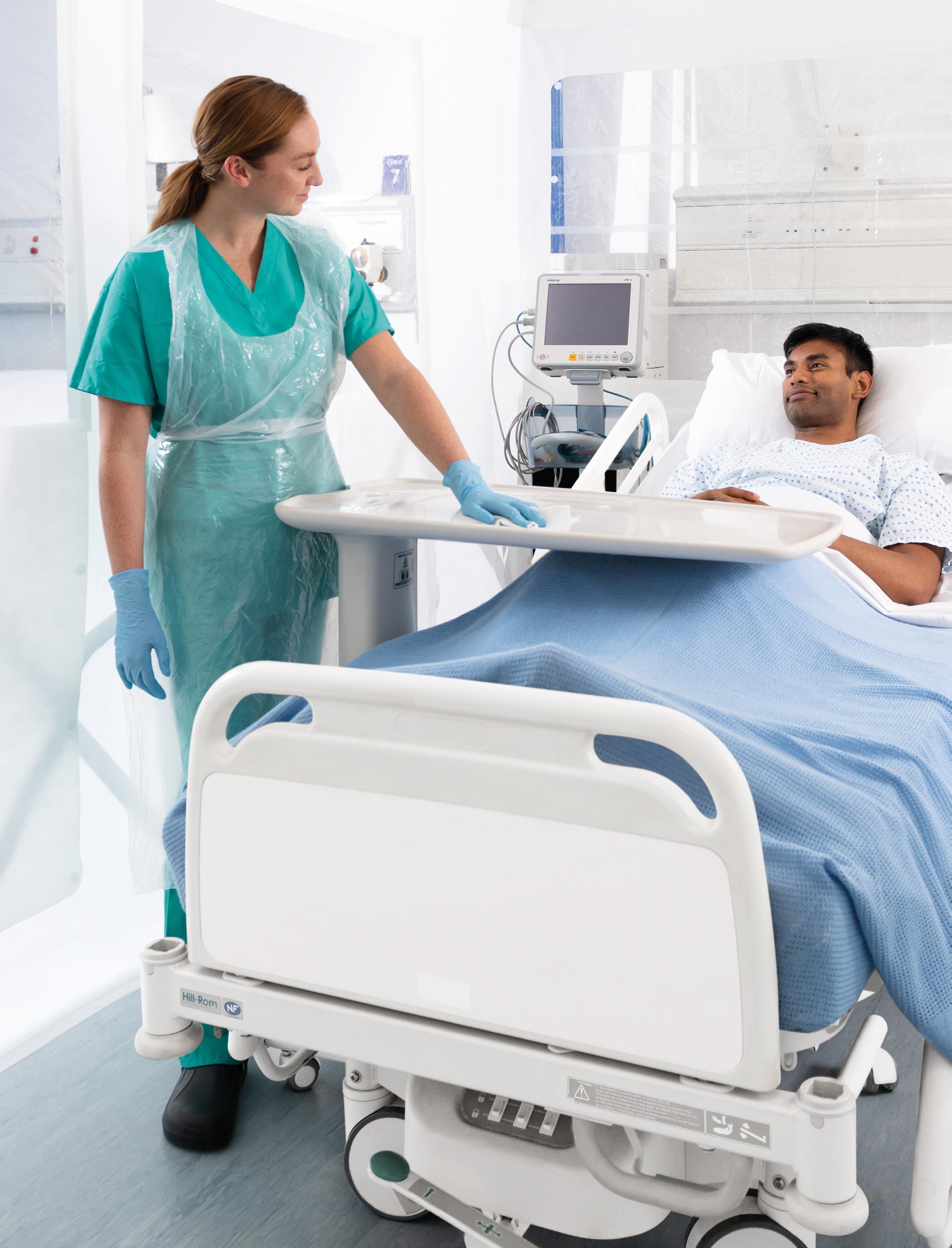
 Writer: Jack Salter | Project Manager: Callam Waller
Writer: Jack Salter | Project Manager: Callam Waller
Following mass vaccine rollouts and booster jabs, 2022 has represented a turning point in the globe’s efforts to combat the COVID-19 pandemic and return our lives to an ever-vigilant relative normality.
Having witnessed and experienced the severe impacts of the virus, there is no question how important personal and public hygiene is for people across the world.
“COVID-19 management has been very different in Australia, and the overall period has had a significant impact on our business. We have seen many changes that we didn’t expect to see in general consumers, and these have accelerated very quickly,” begins Suzanne Hammouche, CEO of GAMA Healthcare Australia (GAMA). “Prior to COVID-19, infection prevention
wasn’t really on people’s radars. People were not so concerned about the aerial transmission of viruses or hand hygiene, but now it is something we talk about on a daily basis and have done so for over two years.
“We are seeing changes to policy coming out of government and the rush of new technology towards combatting the virus and others has been incredible.”
The COVID-19 pandemic forced companies around the world to face and adapt to necessary changes in business practices.
“Like any organisation, our supply chain had to become incredibly robust, and that challenge is still ongoing with what we see today,” Hammouche informs us.
“At the height of the pandemic we saw shortages in raw materials, including those same materials that go on to make and be used in the production of face masks and gowns, and so we watched the price of these materials and products skyrocket. So, ensuring that we had availability of supply and making sure that we were able to obtain containers and vessels when we needed them was incredibly important.”
In Australia, the volume GAMA required tripled, and it was this priority of supply that became the company’s primary focus. GAMA had to adopt a stock allocation process to ensure that supplies were being distributed fairly and to where they were most needed across the company’s base of customers, guaranteeing they were making it to the front line not simply catering to large orders from any single customer.
“On top of this, like everyone else, we moved to virtual working,”
Hammouche continues. “As a company we provide a lot of education, that’s a key part of what we do, and we have a big team of clinical nurse educators that would be based in hospitals providing education whether by lecturing, workshops or basic cleaning and disinfecting type guidance for healthcare workers, cleaners and many others. But that all had to become digital, and so we had to adapt via Microsoft Teams and Zoom to continue educating.”
This education and training continue to be a core part of the company’s dedication towards helping healthcare institutions, and for Hammouche, GAMA’s purpose of improving infection prevention and saving lives has never been so prominent, receiving more attention than ever before.
GAMA specialises in infection prevention and control, supplying
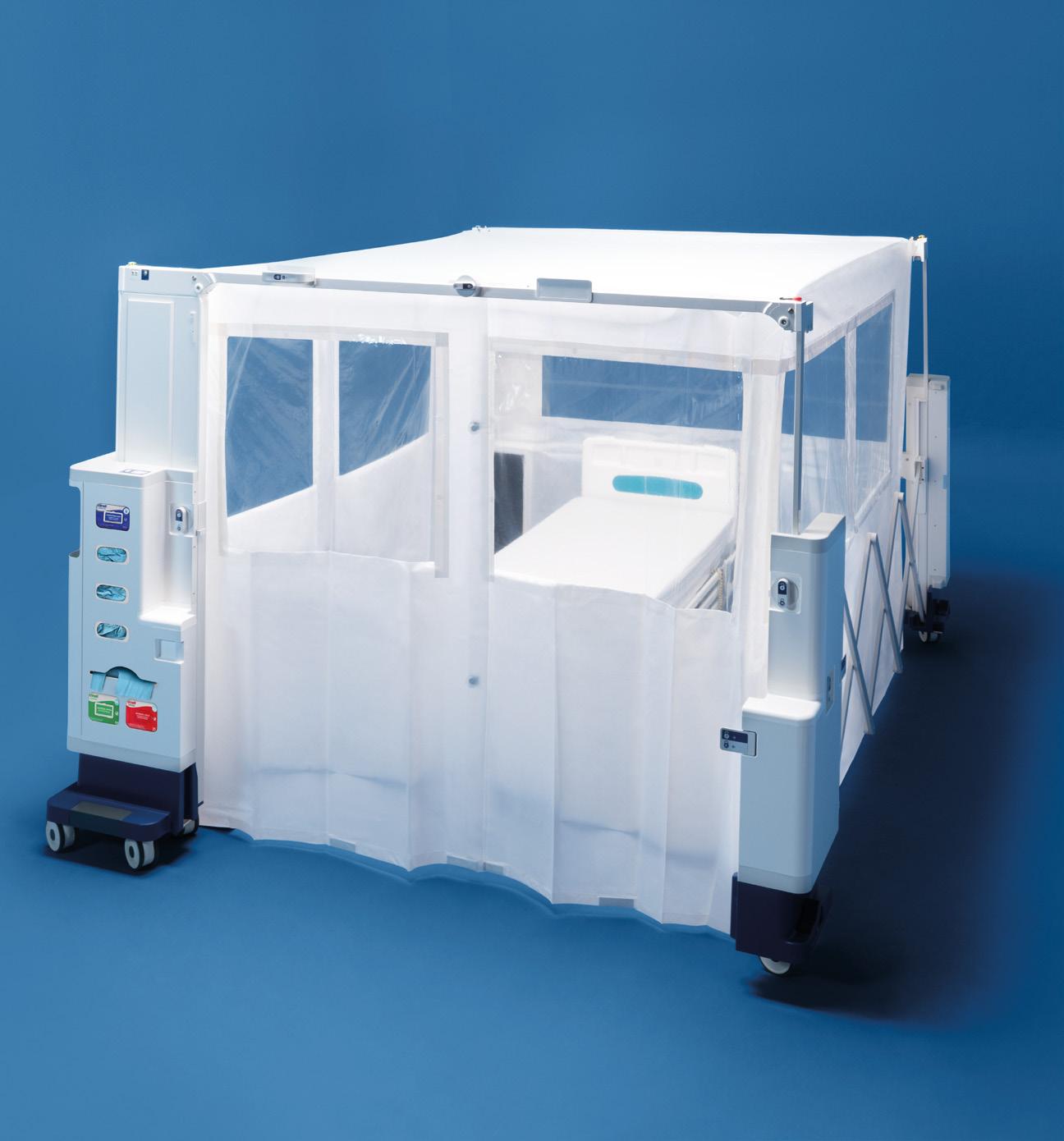
BrightSky Australia have been servicing the healthcare needs of Australians living with spinal cord injury and the wider community since 2013.
BrightSky’s convenient one-stop online shop (brightsky.com.au), allows people to shop for everyday specialist healthcare products from the privacy and comfort of their home.
BrightSky partners with hundreds of suppliers, such as GAMA Healthcare Australia, that have supplied BrightSky with quality products since 2018 and have taken advantage of BrightSky’s access to the Australian spinal cord injury and NDIS community. BrightSky’s extensive range includes continence, respiratory products, wound care, skin care, nutritional supplements and specialised foods and Personal Protection Equipment (PPE).
www.brightsky.com.au
the Australian market with products, research and the training required to combat the spread of disease and viruses in healthcare facilities.
The company was founded in 2004 in London, UK, by two doctors who took a keen interest in infection prevention and microbiology.
“This was right at a time when hand hygiene was becoming a greater deal than it already was, and the founders recognised what role it played in the transmission of infection,” Hammouche tells us. “On top of this, sufficient sanitisation of common medical equipment such as the stethoscope was limited, and the founders decided to create a product that could wipe, clean and disinfect equipment in one step.
“GAMA was born from this one idea, and they partnered with a scientist in England to develop a universal clinical wipe that is now used by over 90 percent of NHS hospitals in the UK and Australia, and over 70
percent of public hospitals in both countries as well.”
GAMA was established to help save lives in a wide reaching and effective way. The company has since grown, creating a range of products and support services, but ultimately retaining its core as an infection prevention specialist company.

This company growth is exemplified by the development and launch of Rediroom, an instant patient isolation
Our convenient, one-stop online shop delivers an extensive range of continence, wound and skin care, nutrition, respiratory, mobility aids & equipment, pressure management and Personal Protection Equipment (PPE) direct to your door. Shop our reliable, discreet, home delivery service now at …
room designed for quick assembly and maximum infection prevention.
Rediroom is a mobile cart that expands into a HEPA air-filtered isolation room with hands-free entry and provides greater isolation capacity and flexibility.
“The concept of Rediroom was actually an Australian invention by an organisation called Care Strategic, with the original idea coming from an emergency department (ED) nurse who brought up the issue of inadequate isolation space for patients who need it,” Hammouche
explains. “Typically, in an emergency department when a patient requires isolation, they are often placed into a facility that is too large or may only have some signs indicating that they are in isolation. So, the Rediroom concept was born from the need for something better.”
Ironically, the Rediroom was developed prior to the COVID-19 pandemic, and this was the perfect opportunity to show the difference it could make.
“It’s been an instrumental piece of equipment and has streamlined the bed flow management in healthcare facilities across Australia,” Hammouche says. “With the Rediroom you now have a place where a patient can go and isolate even if there are no single rooms available, and it is cost effective as well.
“It’s essentially the size of a PPE trolley but erects around the patient without the need for them to move
“OUR TEAM WAS DRIVEN BY THE KNOWLEDGE THAT OUR WORK WAS MAKING A DIFFERENCE AND HELPING LIVES. WHAT WE HAVE BEEN ABLE TO ACHIEVE AS AN ORGANISATION REALLY COMES DOWN TO OUR PEOPLE”
– SUZANNE HAMMOUCHE, CEO, GAMA HEALTHCARE AUSTRALIA
“We have a set of values that means a lot to the organisation, but the key part of this is helping prevent infection”
- Suzanne Hammouche, CEO, GAMA Healthcare Australia
Each year, 165,000 Australians acquire a healthcare-associated infection. Improving hand and environment hygiene are essential steps to break the chain of transmission. GAMA commits to producing high-quality products that truly reduce pathogens and harmful microorganisms.
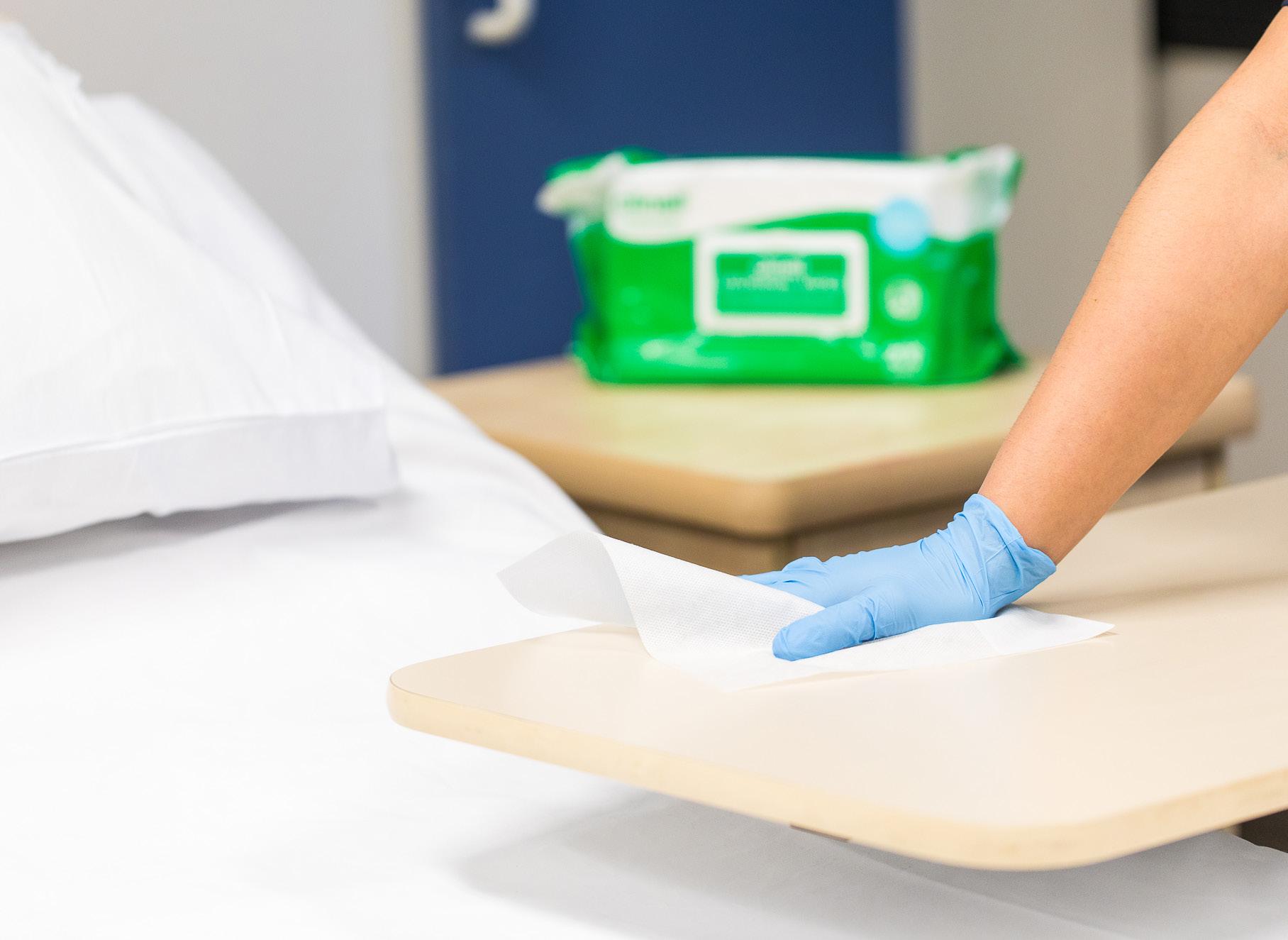
location in the facility. The patient can remain in bed while the Rediroom is installed in less than five minutes, and it operates with its own air filter, significantly reducing the potential for airborne virus transmission. Its curtains are sealed at the ground to prevent them opening, and the doors are opened automatically by using a ground pedal. Once the patient leaves, users are able to dispose of the entire canopy and replace it for the next.”
Statistically, the use of Rediroom has lowered the chance of infection rate by 75 percent in some healthcare facilities, while also remaining a
With the threat of microbial resistance rising, constant innovations are needed to deliver safe healthcare. The team at GAMA’s state-of-the-art Fellows Research Centre explore areas ranging from microbiology to formulation and material science, supporting every GAMA product with a robust package of scientific evidence.
GAMA’s suite of dedicated training resources has been developed in collaboration with Australia and the UK’s leading infection prevention specialists. All GAMA’s educational resources, from its web-based training to face-to-face sessions, and environmental cleaning modules, are fully customisable and have been designed to teach best practice in an engaging, interactive way.
Hammouche has worked for GAMA for over 11 years. Originally moving from New Zealand to the UK when she was 25, she fell into the healthcare industry and developed a keen interest in the space.
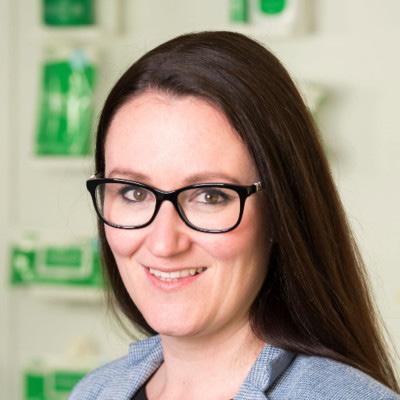
Hammouche started with GAMA as a Personal Assistant to the founders of the company, moving through a variety of different roles as well as being supported by the business to undertake an MBA.
Her roles included that of Operations, Regulatory and Business Administration Director before ultimately taking the position of CEO for the company’s Australia division.
Today, Hammouche’s role includes supporting GAMA’s operations across the Pacific region, consisting of activities in Japan, South Korea and New Zealand, with the healthcare industry and infection prevention remaining a great personal passion.
cost-effective solution when it comes to saving time and space; two much needed commodities within the busy day-to-day operation of hospitals.
People are at the heart of everything GAMA does. This is easy to see through products such as Rediroom, which keeps people safe and saves valuable time for patients and healthcare workers alike, as well as the company’s dedication towards the education and facilitation of infection prevention. This kind of peoplecentric care echoes throughout the business at an employee level as well.
“We have a set of values that mean a lot to the organisation, but the key part of this is helping to prevent infection,” Hammouche affirms. “This means so much to everyone in the company, and I think that the commitment of our staff has really shown during the pandemic, a time that was so difficult for so many.
“Our team was driven by the knowledge that our work was making a difference and helping lives. What we have been able to achieve as an organisation really comes down to our people. They absolutely love what they do and what they bring their customers.”

Moving ahead through 2022 and beyond, GAMA is going to carry these values forward while keeping an eye on the demands for healthcare equipment, and focusing on its product development.
“We are always watching trends in the industry and market, and developing products to answer this,” Hammouche says. “On top of this, globalisation is very much at the forefront of our aims. We have a presence in the UK, Australia and China, and we have over 330 staff globally, but making sure that we have our products available through distributors and that we are providing them with the support they need is critical.
“In line with this, making sure our end users and customers have the support, tools and education necessary to use our products will always be a core driver of GAMA, so that we can continue to make a difference to peoples’ health around the world.”
The name says it all, we are the only FREE to the patient ambulance service in Australasia.”
This instantly distinguishable statement is the main factor differentiating Wellington Free Ambulance (WFA) from other service providers.
After a varied career working across a number of industries such as retail, Sarah Lewis, Executive Director of Corporate Services at the company, took stock on how she could really make a difference in the world.
“I had always been lucky enough to work for a household name and WFA, the iconic ambulance service, fitted the bill on making a difference in communities and being well loved in its region,” she explains.
Lewis details how the past five years in particular have been incredibly rewarding, and an exciting space to be working in – both at WFA, and from a wider perspective within the industry in New Zealand as a whole.
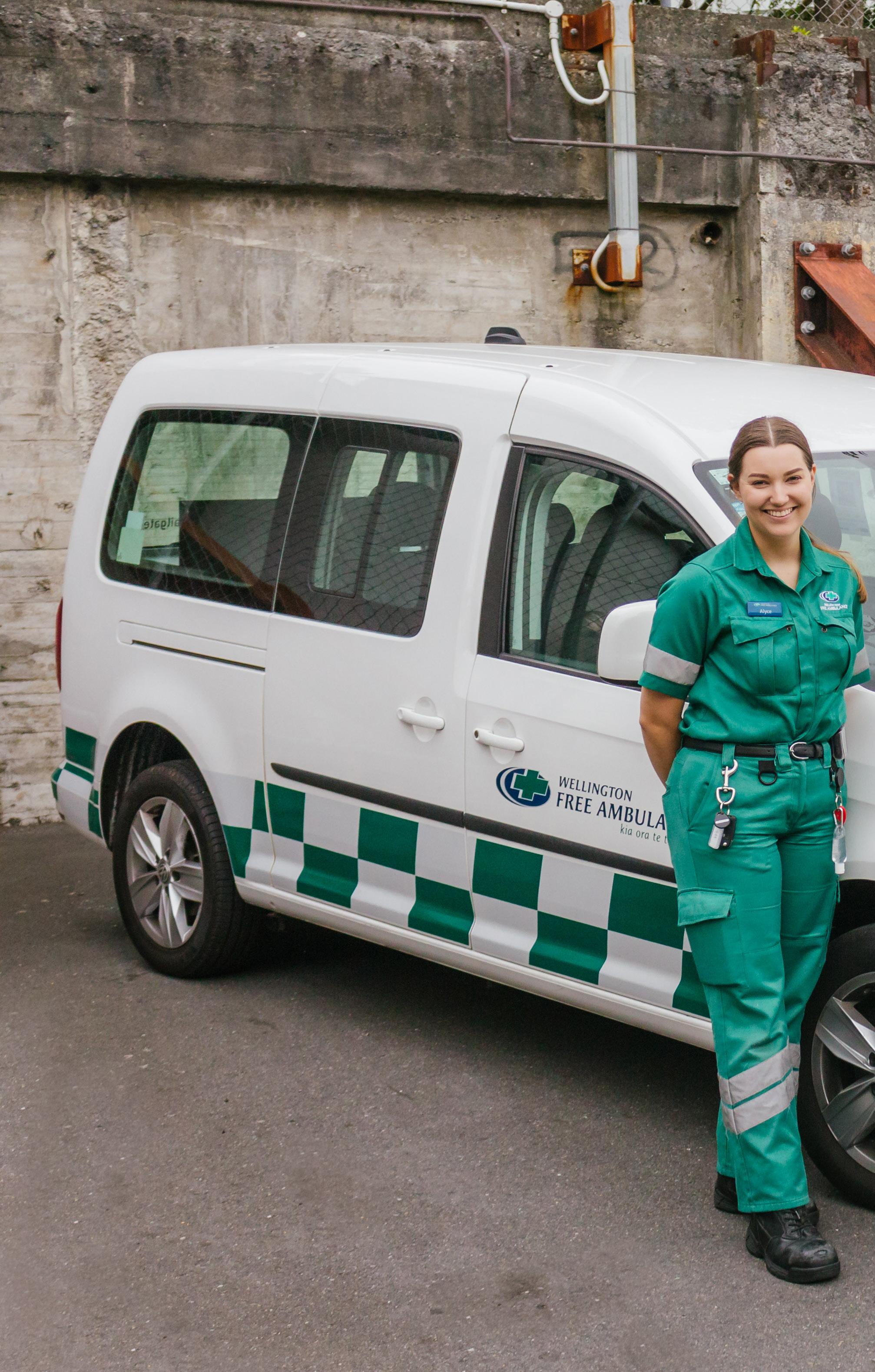
“As an organisation we have been exploring ways that we can better serve our communities with the limited funds available. Where possible, we have looked to improve processes and automate and create partnership approaches with the backdrop of improving the health, safety and wellbeing of our paramedics as well as
serving our core purpose to provide free paramedic care to the greater Wellington region.”
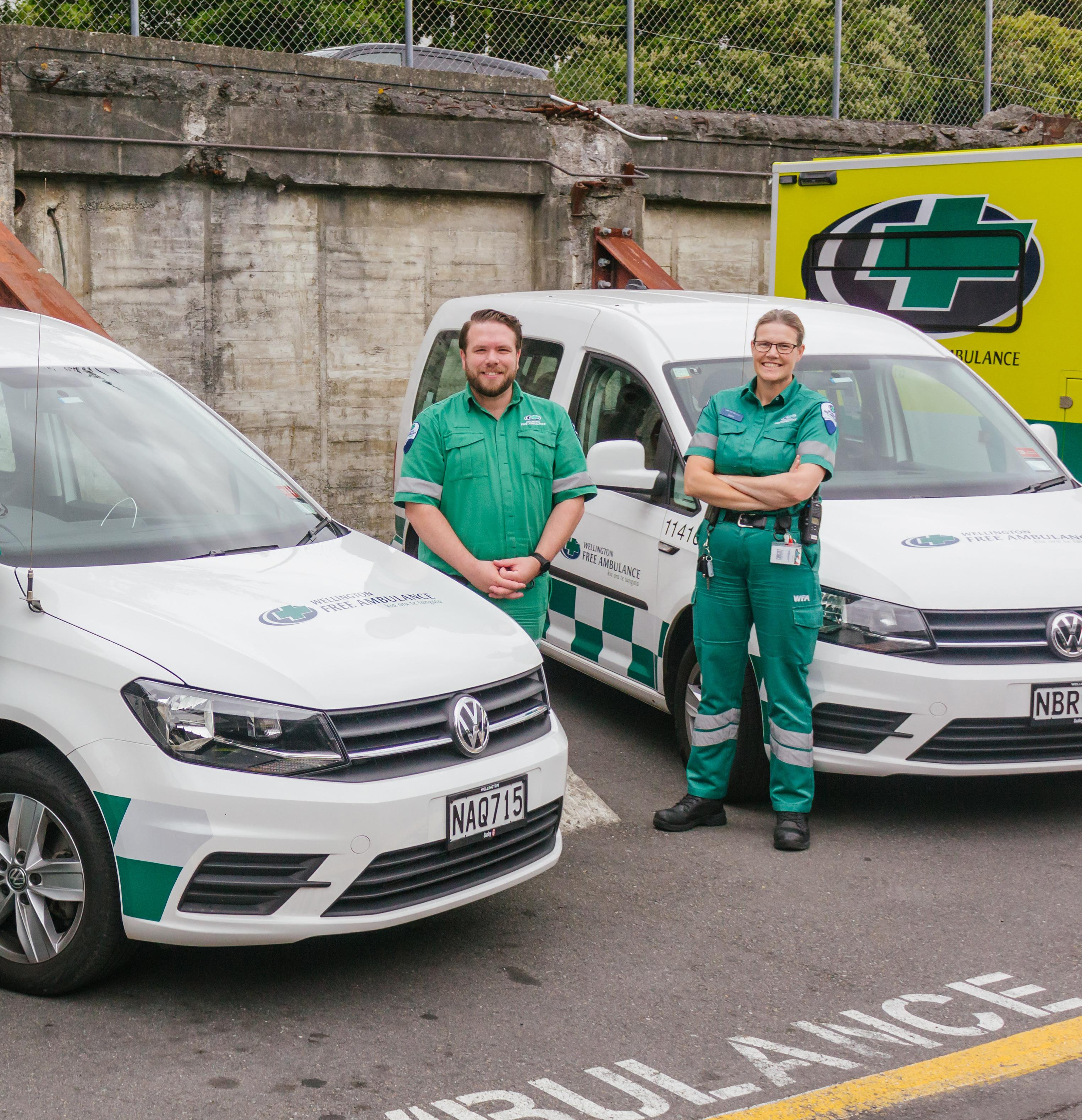
The process of doing what this service does for less, began to accelerate exponentially as WFA moved into 2020 and plummeted into the onset of the COVID-19 pandemic, confronting a whole host of new challenges.
In terms of its origin story, WFA was founded in 1927 by the mayor of the day, Sir Charles Norwood, who believed in a place where emergencies needn’t cost lives or money and dreamed of a future where his city had access to free ambulance services for everyone.




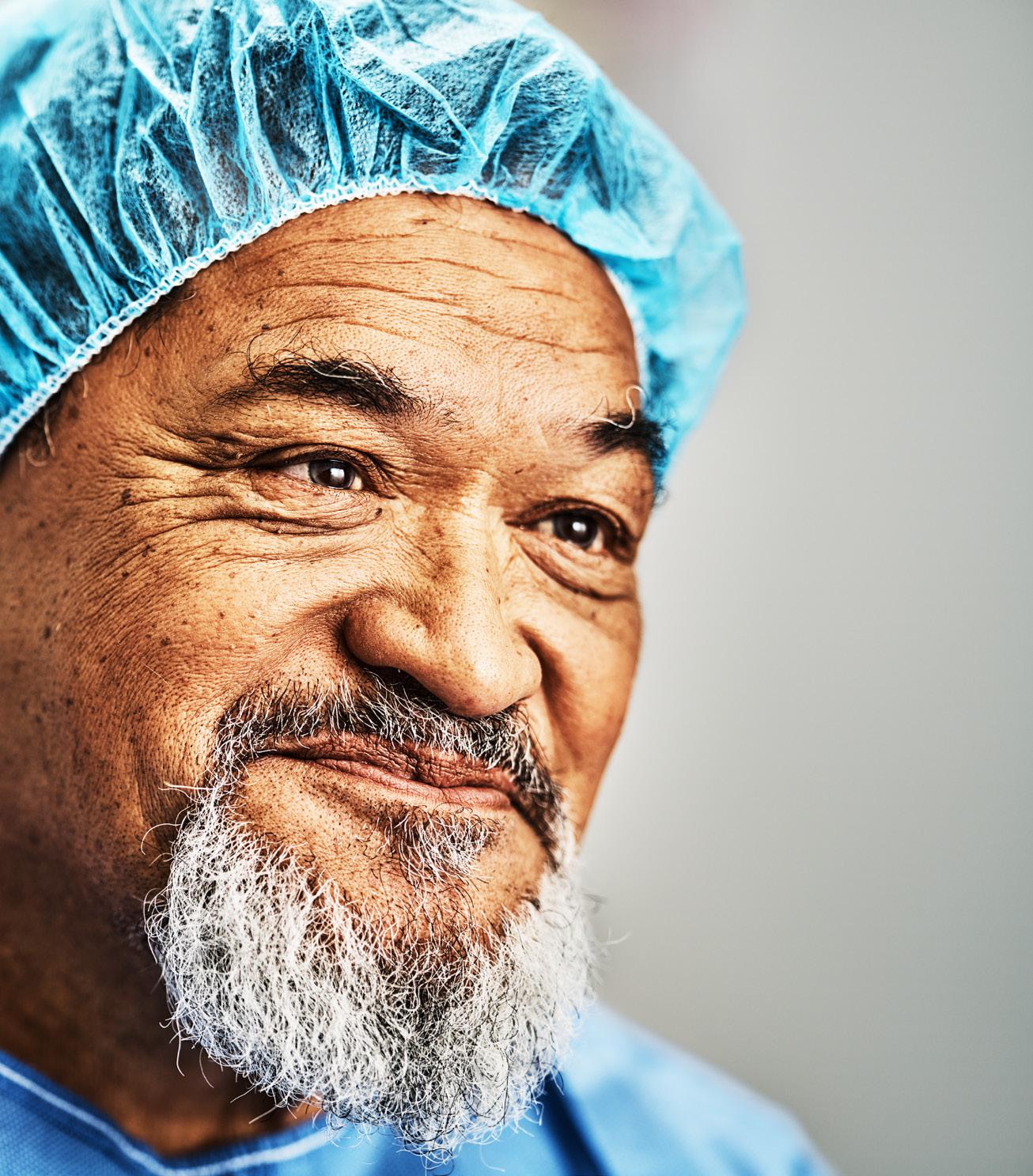






Now, nearly 95 years on and this utopian vision has become a reality. WFA’s vastly impressive 24/7 emergency services now cover the Greater Wellington region including the Kapiti Coast and the Wairarapa.

Working out priorities is a key element of WFA’s efficient dispatch process. The 111-call taker identifies a patient’s condition using a medical priority dispatch system. This system is used internationally and is the clinically proven way of getting the right help, to the correct people, in the best possible time.
“The organisation has grown considerably since 1927, and we now have around 400 staff who are supported by 80 volunteer event medics…
“We have nine ambulance stations, and answer over 150,000 emergency 111 calls a year. We have 31 emergency ambulances, two emergency community care vehicles, three Rescue Squad vehicles and 24 Patient Transfer vehicles!” Lewis adds proudly.
Meanwhile, the clinical operations team is dedicated to ensuring that all operatives work to the highest level of medical practice.
WFA faces financial challenges just like any other business, as Lewis tells us. “Although we receive funding from both the government and the Accident Compensation Corporation (ACC), we must raise $7 million every year to meet demand and fund the shortfall between what we receive and what our operational model costs.

“We are extremely lucky to have such an amazingly supportive community with generous people and businesses who believe in our work,” she adds.
In terms of its COVID-19 response, WFA continues to adapt to overcome every new challenge presented by the pandemic.
“Our paramedics and our wider support staff are key to providing
“WE ARE EXTREMELY LUCKY TO HAVE SUCH AN AMAZINGLY SUPPORTIVE COMMUNITY WITH GENEROUS PEOPLE AND BUSINESSES WHO BELIEVE IN OUR WORK”
– SARAH LEWIS, EXECUTIVE DIRECTOR CORPORATE SERVICES, WFA
Many would agree that the sharing of health information across the heatlh sector can be disconnected at times. Our people have worked in the sector a long time and understand the frustration of not having a full picture to make a diagnosis or decision.
Spark Health has lots more to offer than mobile services and wireless broadband. With an endto-end digital services capability, existing across cloud, security, service management and systems integration, delivered by a national team of Client Directors they offer a unique abiltiy to pull together a wide range of digital solutions to help transform all parts of the health sector. Given the wide pool of expertise behind them, Spark Health supports the sector through the decision making process and can source the right solutions and infrastructure to position any organsiation for future advancements in digital health.
As a leading digital services provider, Spark Health has a vision to help all New Zealanders live healthier lives through the power of technology.
Improving our nation’s digital equity levels are one of the group’s three sustainability focus areas which is also core to delivering better, more equitable health care to all New Zealanders. The Spark Foundation, established to allocate funding for programmes focused on digital equity, has worked with Crown Infrastructure Partners, Te Puni Kokiri and other
providers to to bring broadband and technology capabilities to marae to provide reliable digital connetivity, provide pathways to digital health, economic, social and educational services.

In May last year Ōmāio marae in the Bay of Plenty, became the 400th marae to gain access to broadband connectivity and technology as part of this initiative. Through the foundation, devices are also provided with ‘how to use’ information being translated into Te Reo by Te Wananga o Aotearoa. In parallel, Spark and Spark Health have worked with Te Puna Kokiri to prioritise connectivity to the marae in the Eastern Bay of Plenty, supported by offering Skinny Jump modems into individual households.
The launch of digital health platform, Kete Waiora, is the next big step in empowering patients and ‘bringing the future faster’ to all New Zealanders. Through Kete Waiora, (translated as the basket of health and wellbeing) patients will be able to contribute data into their own personal health record, set their own health goals and share information with whanau and those they choose to share information with to support them on their health journey.
Want to find out more about what Spark Health offers?
Visit www.sparkhealth.nz or contact us to book a consultation.
For more information on Kete Waiora go to www.ketewaiora.nz
the best care to the patient,” Lewis continues. “During this period, we reimagined how our support services function could make life easier for our frontline paramedics in the thick of escalating demand.”
This clearly highlights the company’s commendable focus on staff welfare and support. WFA additionally rolled out several initiatives and continues to evolve these as the virus mutates.
In terms of future investments and exciting upcoming projects, WFA has invested in state-of-the-art lifesaving equipment such as the Corpuls defibrillator. Alongside this, it has progressed in the last five years to using electric stretchers. WFA is the first service in New Zealand to transition to this front-line technology that has seen the equipment that paramedics carry reduce from circa 16.6 kilogrammes (kg) per patient to 6.5kg.
“We have moved to personal issue devices for our paramedics in the form of cellular devices that allow us to connect across our corporate network with access to the internal documentation that is required to keep up to the minute in the rapidly evolving environment,” Lewis says. When asked specifically about the company’s supply chain operations, Lewis told us, “working in partnership with our suppliers is key to us. For example, through our relationships in March 2020, we were able to access critical PPE when others were unable. The supplier went above and beyond to their networks in China to secure supply chain when everything else was shutting down, and fast tracked everything through the shipping network.”
Other suppliers often prioritise WFA ahead of alternative commercial and government contracts because of the good work that it does in the community and the relationships that it has built.
Wade Group
Driving Quality every K of the way.
Emergency and Enforcement professionals throughout Australasia trust Wade to build bespoke vehicles perfectly suited to their unique needs and situations.
Often working around the clock in seriously challenging conditions, Wade ensures they can perform at their best in the utmost comfort and safety.
Wade vehicles are the result of close collaboration with our customers. They combine superior materials and fittings with the most innovative technologies available - often developed in-house by our highly experienced, passionate team of designers, engineers and coach builders.
www.wadegroupltd.com
• Centralised general stores to allow for quicker turnaround and to manage supply chain issues.
• Moved to seven days a week restock and replenishment at the stations.
• Providing ‘station mums’ at its largest stations to allow the paramedics to focus on what they could do best, clinical care, taking away the on-station duties so any much-needed time back at base could be spent recharging themselves.

• Providing a hot meal to all staff for at least every shift, when the lockdown was at its most disruptive to the hospitality sector and no takeaway or even coffee services were available.
• Providing a coffee cart to those based out of HQ who experienced long hours.
• Created a welfare officer role specifically to check in with its staff.
• Conducted regular surveys to allow WFA to understand how its staff were feeling and enable the company to adjust its response, resulting in getting the greatest response rate to a survey that it had ever seen.
• Shifted to a temporary station in one of its communities to allow staff to rest and rejuvenate between jobs.


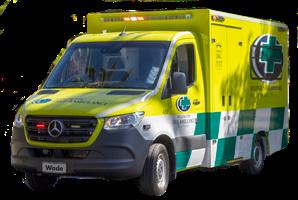





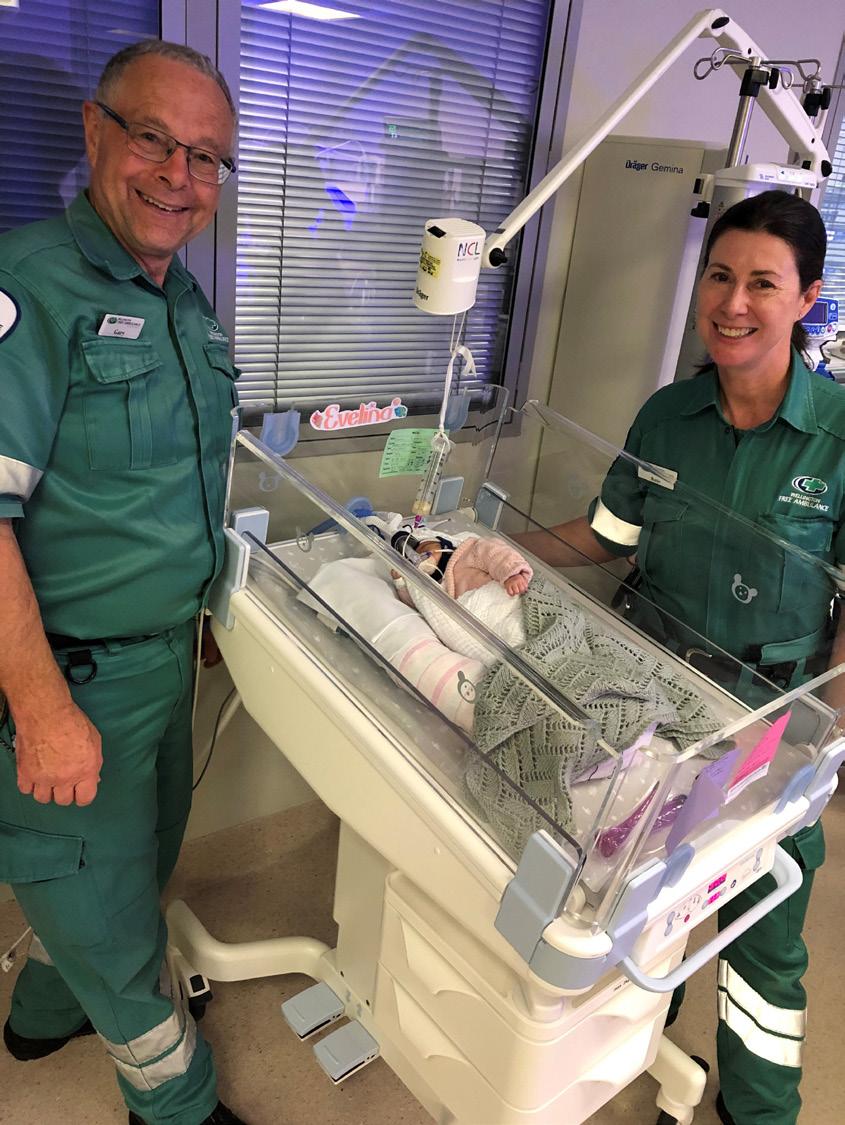

“Switching to the hybrid model is something WFA is tirelessly working towards. Communications is obviously key to making this happen smoothly and making sure that we celebrate success. Whether that be through award programmes (women in leadership or staff awards), offering extra hours off for those that go above and beyond, or just a simple thank you either at a team meeting or through the weekly CE’s bulletin,” Lewis affirms.
“This is a prime example of how WFA tries to empower its tireless workforce and recognises the invaluable contributions that its staff
make as a key component of running this thriving enterprise.”
As far as looking ahead to the future goes, the clock is ticking to move into a new, fit for purpose facility for all regional paramedics.

“WFA is once again looking to partner up with a provider whose business is property and therefore play to their strengths when our focus is around health care delivery,” she explains.
WFA’s other major priorities for 2022 are constructed around its people, improving wellbeing, health and safety, and a push towards further developing and nurturing leadership skills. This is alongside an
ongoing attempt to secure additional government funding to support the company’s free to the patient status. Another ongoing challenge to be managed carefully is the strategising needed to continue to adapt to the COVID-19 response, that for New Zealand has now shifted to a COVID19 in the community strategy where previously the nation was working to a ‘stamp it out’ approach.
The future looks extremely bright and prosperous for WFA, as it continues to provide such a valuable service to Wellington’s citizens.

“WFA TRIES TO EMPOWER ITS TIRELESS WORKFORCE AND RECOGNISES THE INVALUABLE CONTRIBUTIONS THAT ITS STAFF MAKE AS A KEY COMPONENT OF RUNNING THIS THRIVING ENTERPRISE”
– SARAH LEWIS, EXECUTIVE DIRECTOR CORPORATE SERVICES, WFA
September
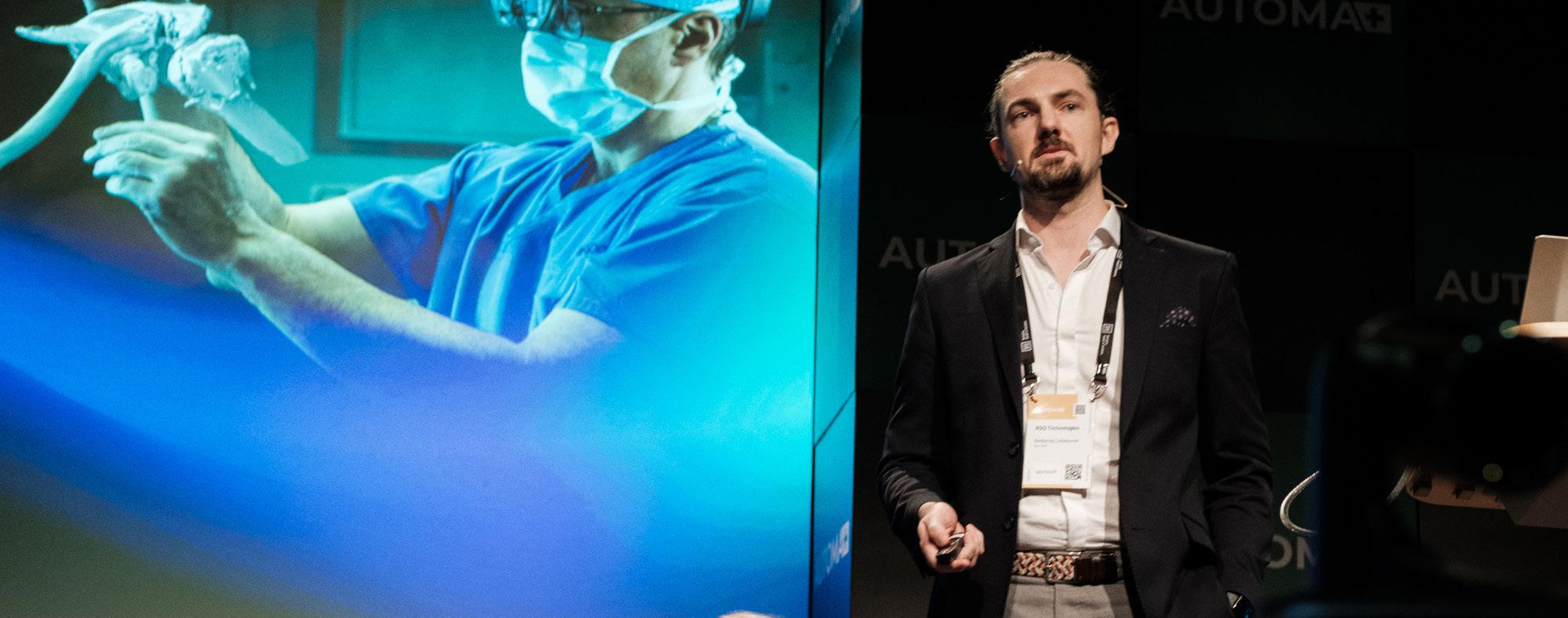
MACHINES ARE getting smarter every day, and companies across the world are discovering new ways in which they can use artificial intelligence (AI) to significantly enhance engagement and customer experience. That is why decisionmakers from pharmaceutical companies, hospitals, and healthcare providers will gather to network and discuss the latest innovations, as well as the potential for both AI and robotics, at the Healthcare Automation and Digitalization Congress 2023 (AUTOMA+ 2023) in Zurich, Switzerland, on 25th to 26th September.
Companies continue to keep searching for new ways of unleashing the full potential of AI and robotics in the healthcare industry. This way, during the AUTOMA+ 2023 business programme, the participants will discuss and share the insights on AI generative algorithms, value creation with AI, as well as smart use cases. Among the participants are the delegates from Spital Thurgau,
Sana Kliniken AG, Oxford University Hospital, Humanitas Research Hospital, Mater Hospital, Kantonsspital Aarau AG, Odense University Hospital, Idorsia Pharmaceuticals Ltd, Pfizer, Merck, Takeda, GSK, and many others.
From finding new links between genetic codes to making roboticassisted surgery, AI simplifies the lives of patients, doctors, and hospital administrators. AI also helps address some of the tasks, for example:
• Diagnostics and treatment plan creation
• Preoperative planning and robotassisted surgery
• Physical therapy, movement assistance, and rehabilitation
• Virtual nursing and medical assistance
• Privacy, security, and quality assurance of medical databases and software
Some of the speakers at AUTOMA+ 2023 are ready to present their thoughts on AI implementation in
healthcare. Ronak Mathur, Automation Architect at Mater Hospital, is going to talk about value creation with automation and AI in healthcare with the right framework. Another speaker, Michelle Bridenbaker, Global Lead of Medical Information and Communications at Idorsia Pharmaceuticals Ltd., will present the smart use cases for AI in medical affairs.
To conclude, AI is getting increasingly advanced at doing what humans do, but more efficiently, more quickly, and at a lower cost. The potential for both AI and robotics in healthcare is vast. During AUTOMA+ 2022, the delegates were asked about what innovations in digital health they consider as the most promising for the industry. Anna Erat, Medical Director at Hirslanden Klinik, emphasised:
“I think it is AI. I don’t think you can ever substitute medical professionals, but instead complement them. So, within the field of radiology and neurobiology, you can really implement various fascinating solutions like AI.”
Request the full business programme: https://sh.bgs.group/v7

